Home to one of the greatest and most famous mammal migrations on earth, Serengeti National Park in Tanzania is a destination on most safari enthusiasts’ bucket lists. It was certainly on mine!
Now, having been numerous times, I can confidently say that Serengeti actually surpasses its reputation in my opinion, and is one of my absolute favourite safari locations in Africa.
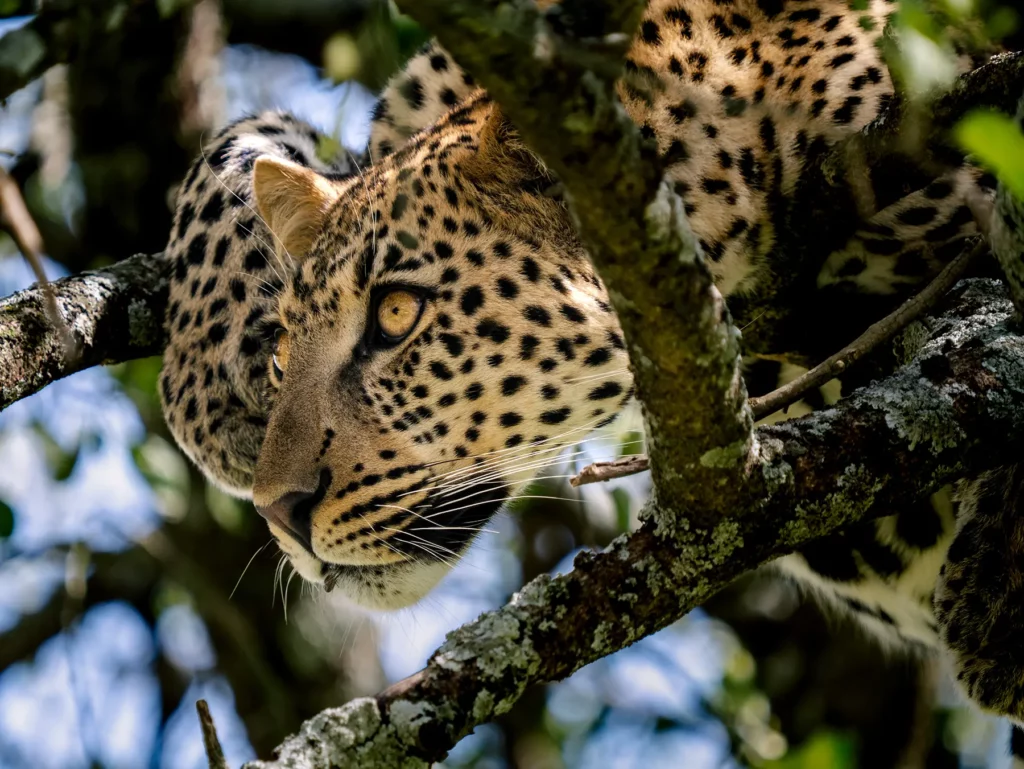
The Serengeti’s high concentration of big cats mean that a day in Serengeti rarely goes by without spotting a lion or two, and the Great Wildebeest Migration can be found somewhere in this vast landscape throughout much of the year, either calving in the south, travelling in endless columns through the plains or leaping across the Mara River in the north.
The name Serengeti comes from the Maasai word for ‘endless plain’ and is a pretty accurate description of this jaw-dropping ecosystem.
In this definitive guide, I aim to tell you everything you need to know about Serengeti National Park, so that you can easily plan the perfect Serengeti safari.

Serengeti National Park Map
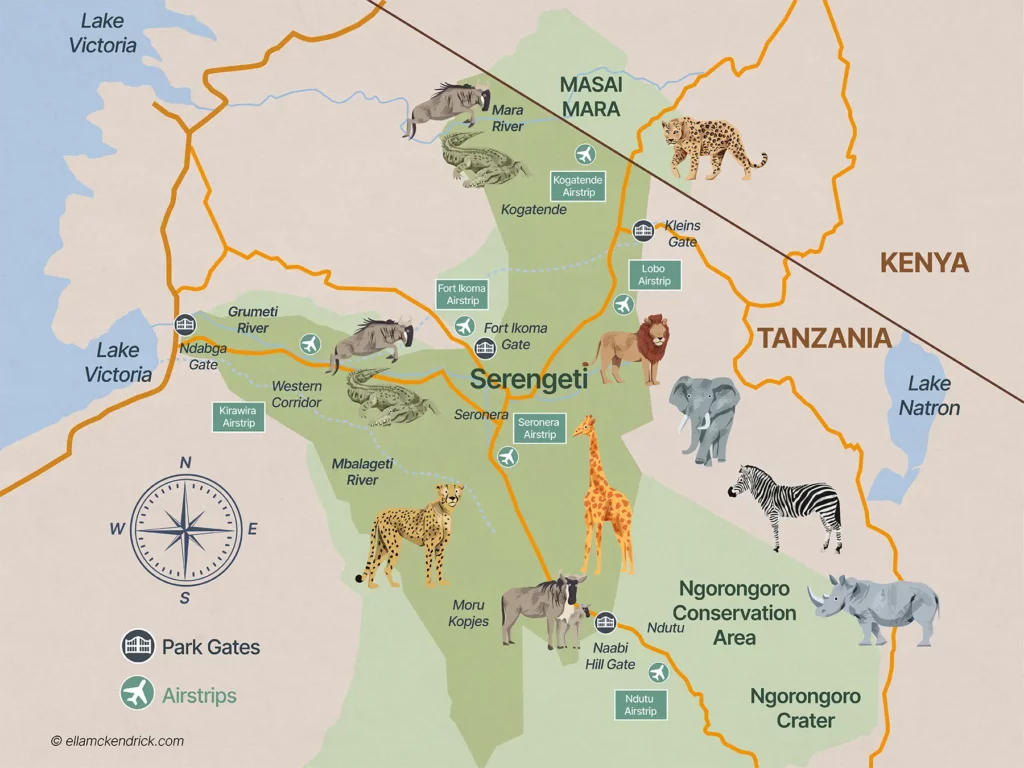
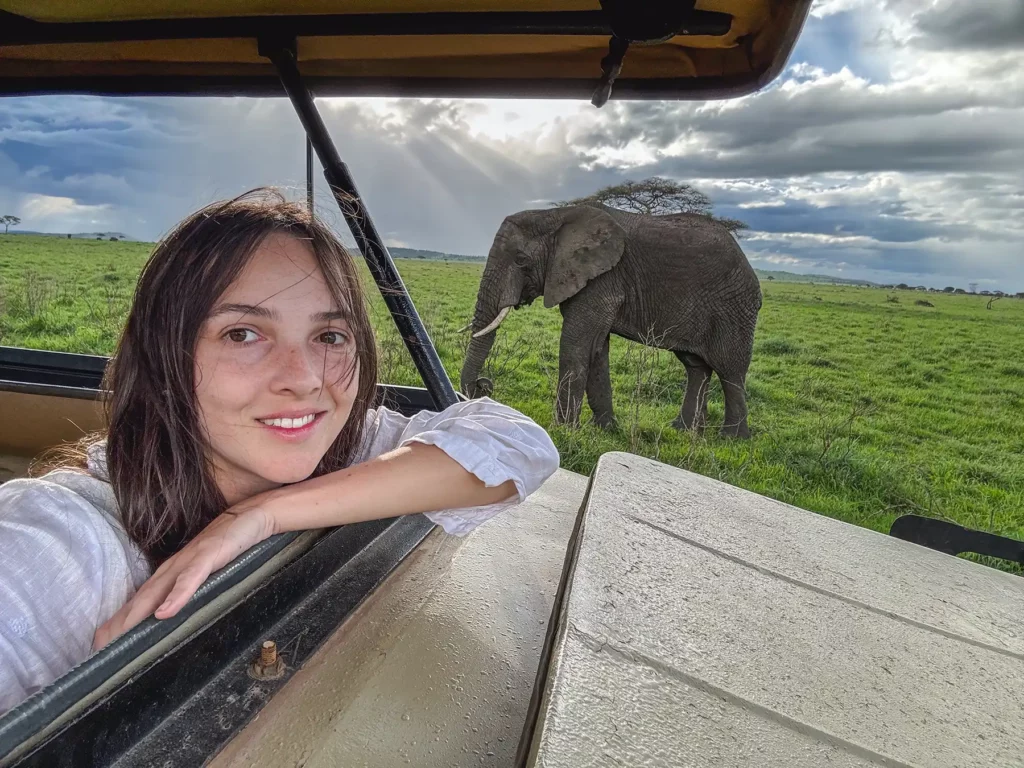
Embark on the Safari of Your Dreams
Save time and ensure an incredible safari experience by getting quotes from my recommended local safari companies
I’m here to make booking your perfect safari quick, easy and risk-free.
Join the rapidly growing tribe of over 1,000 travellers who’ve booked their dream safari using my insider tips and recommendations.

It takes under 60 seconds to fill out the form and in under 48 hours you will receive multiple, no-obligation proposals from my favourite local tour operators with glowing online reviews.
Get your free no-obligation safari quotes and my top safari tips and recommendations
In This Guide
- About Serengeti National Park
- Great Wildebeest Migration
- Wildlife in Serengeti National Park
- Weather & Climate
- Best Time to Visit
- How Many Days
- Serengeti Safari Areas
- Safety
- Things to do
- How to Book your Serengeti Safari
- How Much Does a Serengeti Safari Cost?
- Is a Serengeti Safari Worth it?
- Accommodation – Where to Stay
- Getting to Serengeti National Park
- Serengeti & Zanzibar for Safari and Beach
- How Does the Serengeti Compare?
- Best Serengeti Safari Itineraries
- 5 Facts About Serengeti National Park
- Serengeti National Park Safari Videos
- Read More Tanzania Guides
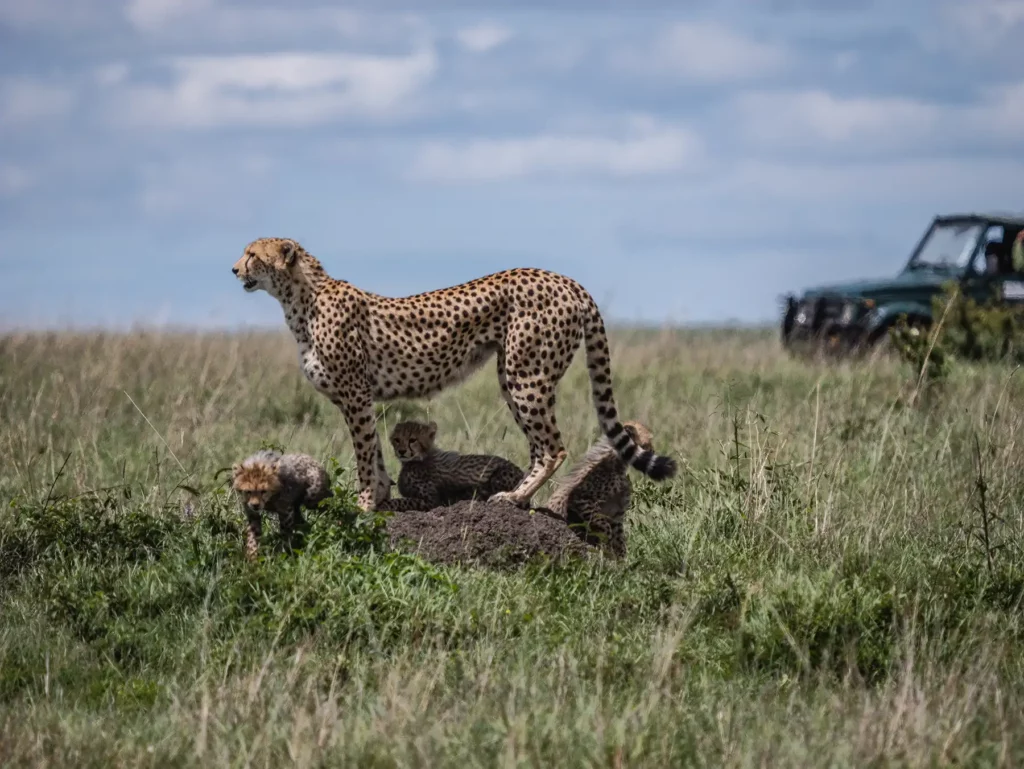
About Serengeti National Park
Below we’ll delve into everything you need to know about Tanzania’s top national park as well as one of the top safari destinations on earth.
If you’re in a rush you can jump to my sections on The Great Wildebeest Migration, Serengeti Wildlife and Booking Your Serengeti Safari.
If you’d like to see exactly what a Serengeti safari experience is like, I highly recommend watching the full YouTube video of my experience below.
You can jump to any of the about sections below.
In What Country is Serengeti National Park?
How Big is Serengeti National Park?
Why Is The Serengeti So Famous?
History of Serengeti National Park
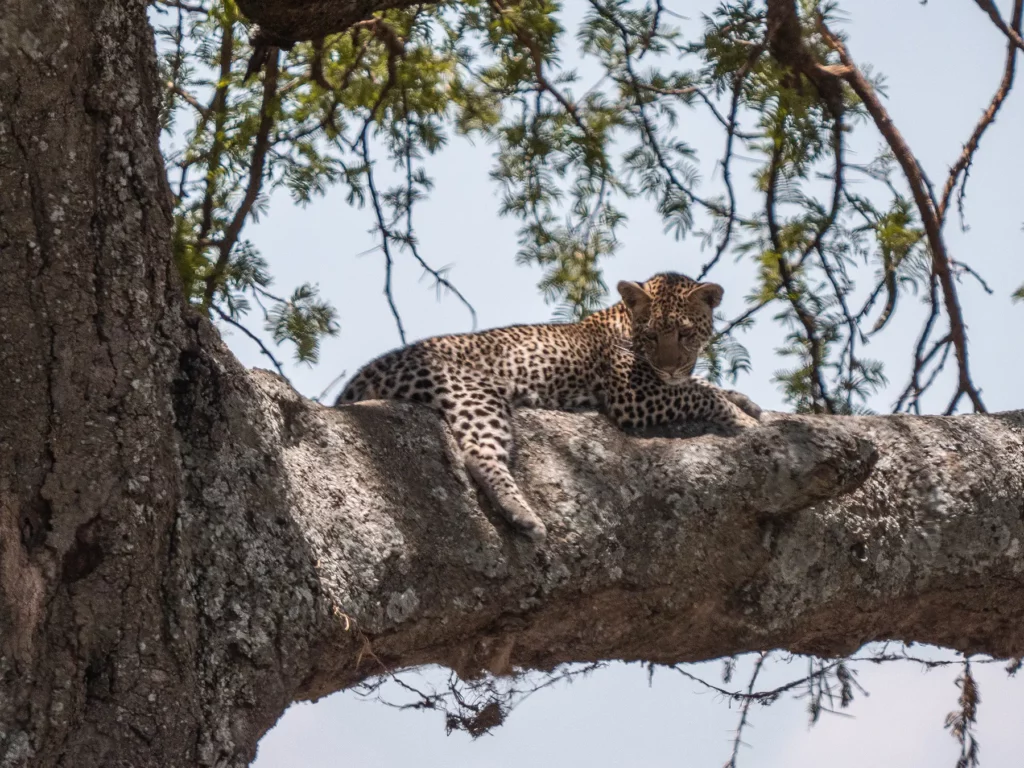
In What Country is the Serengeti?
Serengeti National Park is situated in the northern region of Tanzania, a country within the Great Lakes region of East Africa, within the Great Rift Valley.
Serengeti National Park forms a part of the vast Serengeti Ecosystem, which stretches from the shores of Lake Eyasi in the south, encompassing the Maswa Game Reserve, the Ngorongoro Conservation Area and several other national parks, stretching over the border to include the Maasai Mara National Park in Kenya in the north.
Within this vast 11,583 square miles (30,000 km2) unfenced and pristine wilderness, lies the Serengeti National Park, arguably one of, if not the most famous game park on our planet!
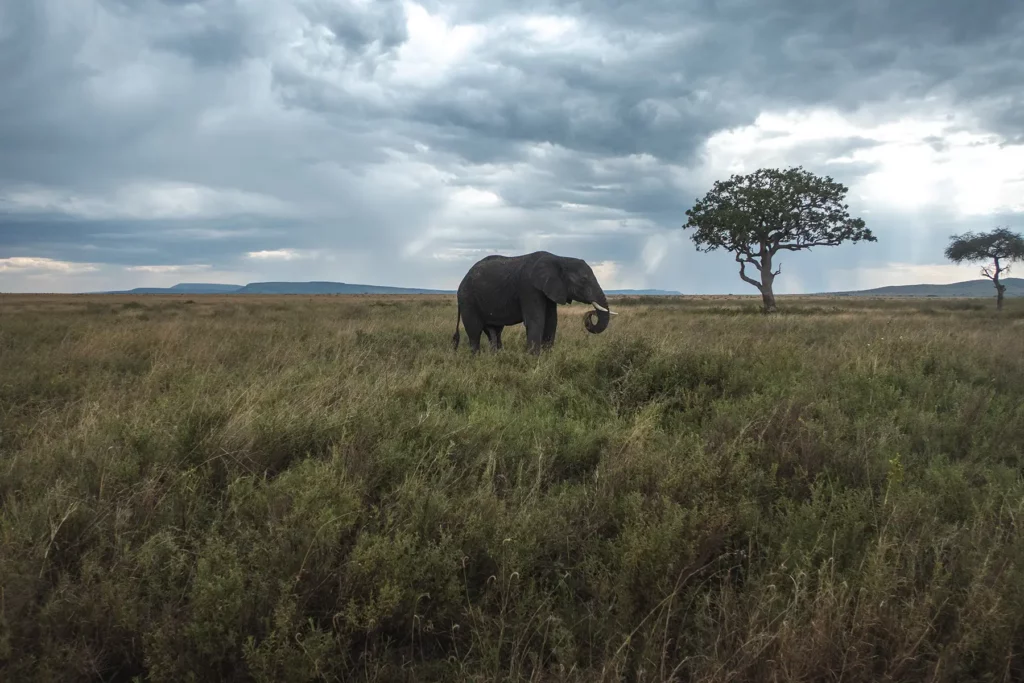
How Big is the Serengeti National Park?
The Serengeti National Park spans over a 5700 square miles (14,763 km2) area with its northern boundary being the Kenyan border at which point the ecosystem becomes the Maasai Mara.
Although it is less than one third of the size of the Nyerere Game Reserve, Tanzania’s and Africa’s largest national reserve, it is still nearly 10 times larger than the Maasai Mara National Park in neighbouring Kenya and is the second biggest park in Tanzania.
I’ve created a table below to show how the Serengeti compares in size with Africa’s top safari reserves.
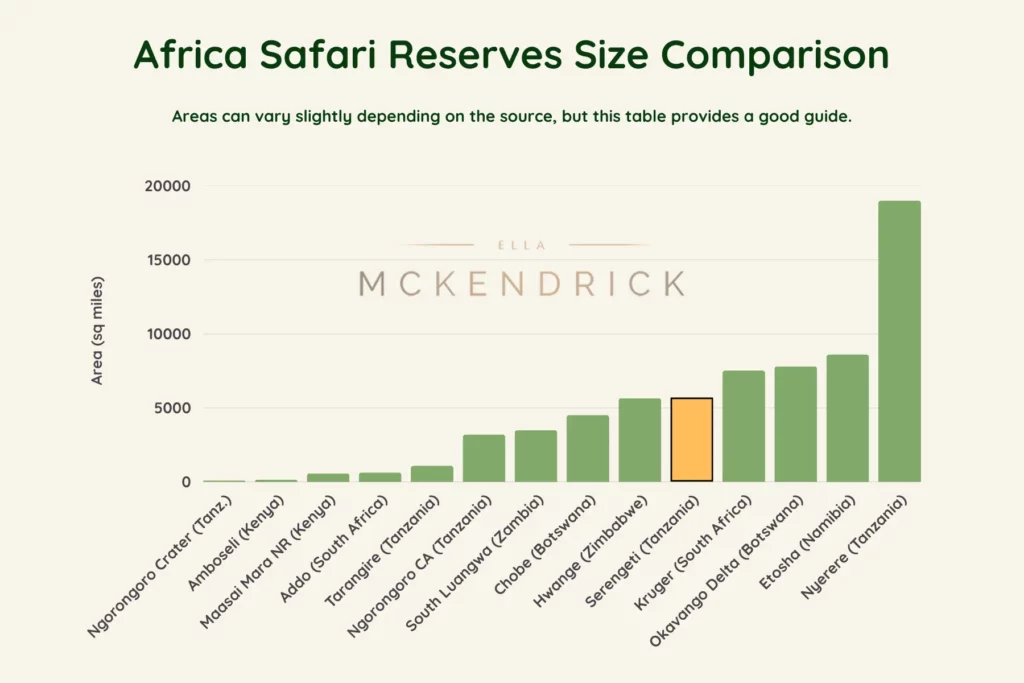
Compared to some of its other famous neighbours in Tanzania, the Serengeti National Park is over three times larger than the Tarangire National Park and twice the size of the Ngorongoro Conservation Area, although the Ngorongoro Crater itself is only a miniscule 102 sq mi (264 km2) in total size.
The table below shows how the Serengeti compares in size with Tanzania’s top safari reserves.
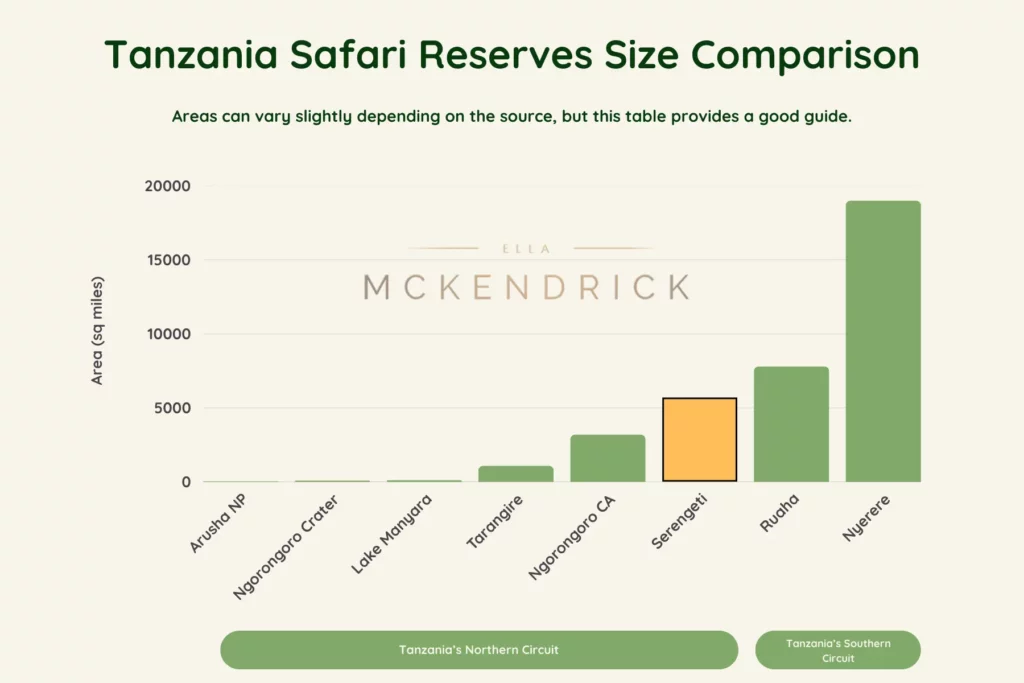
There are of course several enormous game parks across the African Continent that are larger than the Serengeti, including South Africa’s iconic Kruger National Park. Covering an area of just short of 7550 sq mi (20,000 km2), the Kruger is almost the size of the state of Israel.
Etosha National Park in Namibia is even a little larger, covering an area of over 8500 sq mi (22,000 km2), although most of it is desert and arid scrublands, but surprisingly teeming with wildlife, as I’ve found on my safaris there.
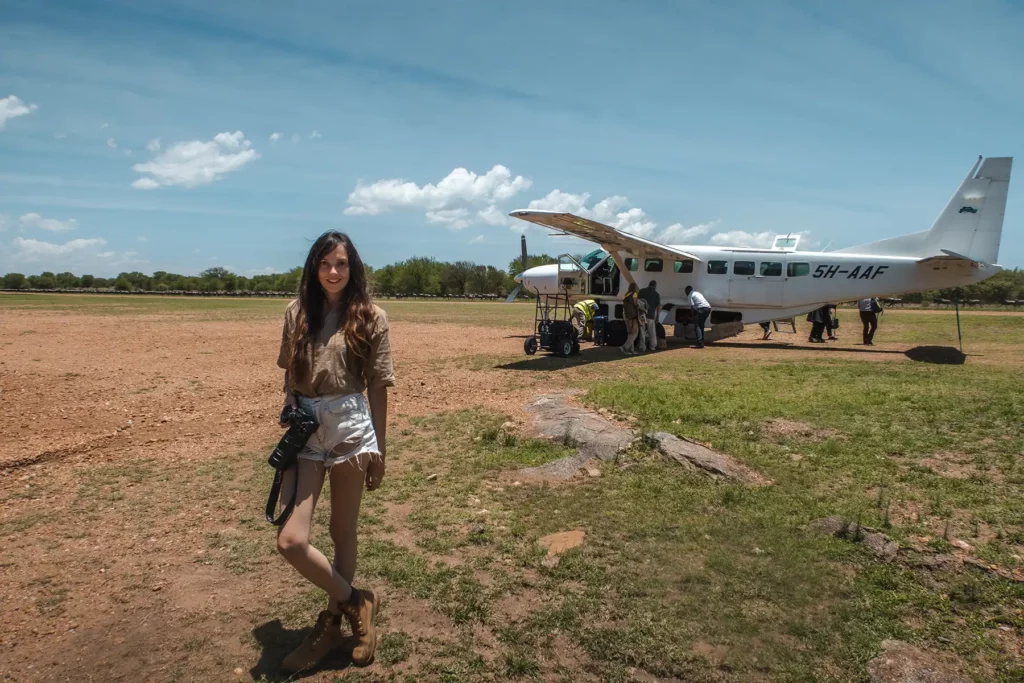
Why Is The Serengeti So Famous?
Serengeti National Park is arguably most famous for housing the Great Wildebeest Migration which, up until recently, was thought to be the largest terrestrial mammal migration on earth. Over two million wildebeest, zebras and gazelles traverse the open plains, chasing the seasonal rains and fresh grass.
Whilst the great wildebeest migration may no longer be the largest land mammal migration in the world (the migration of over six million antelopes in South Sudan is three times the size of the wildebeest migration), it is the most impressive to watch.
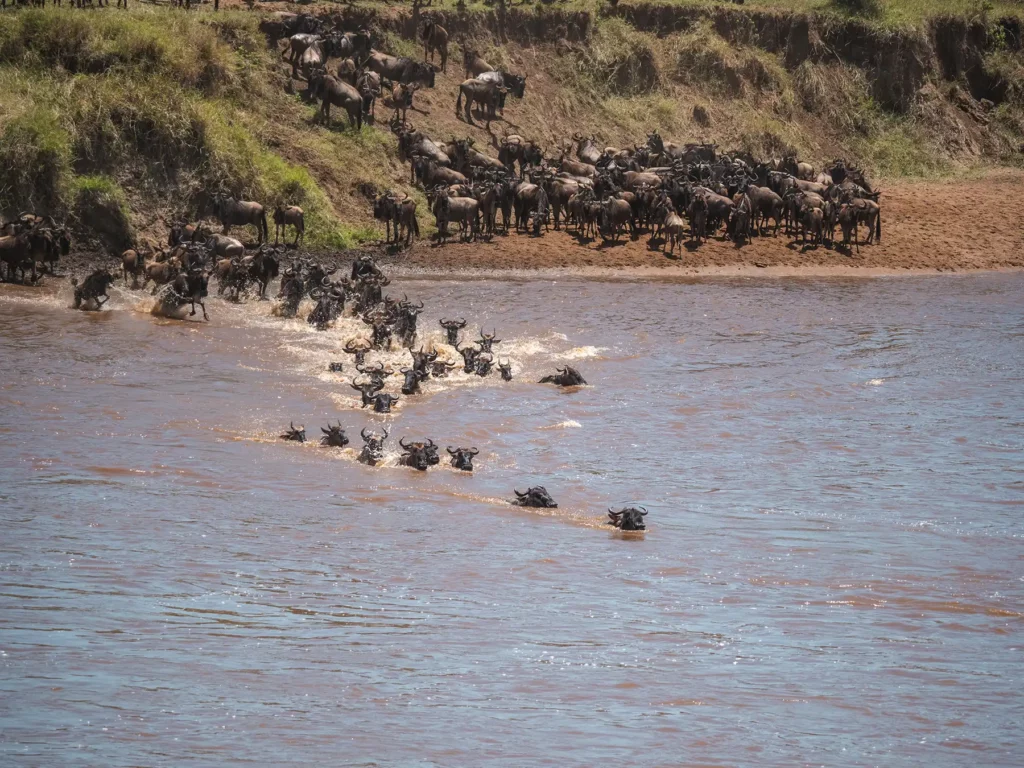
From watching 8,000 baby wildebeests being born each day in the calving season, to gasping as wildebeests and zebras leap into the crocodile-infested Mara River, swimming for their lives, there is no dull moment on the great migration.
Countless documentaries have been aired, showcasing this natural spectacle, and making Serengeti a household name.
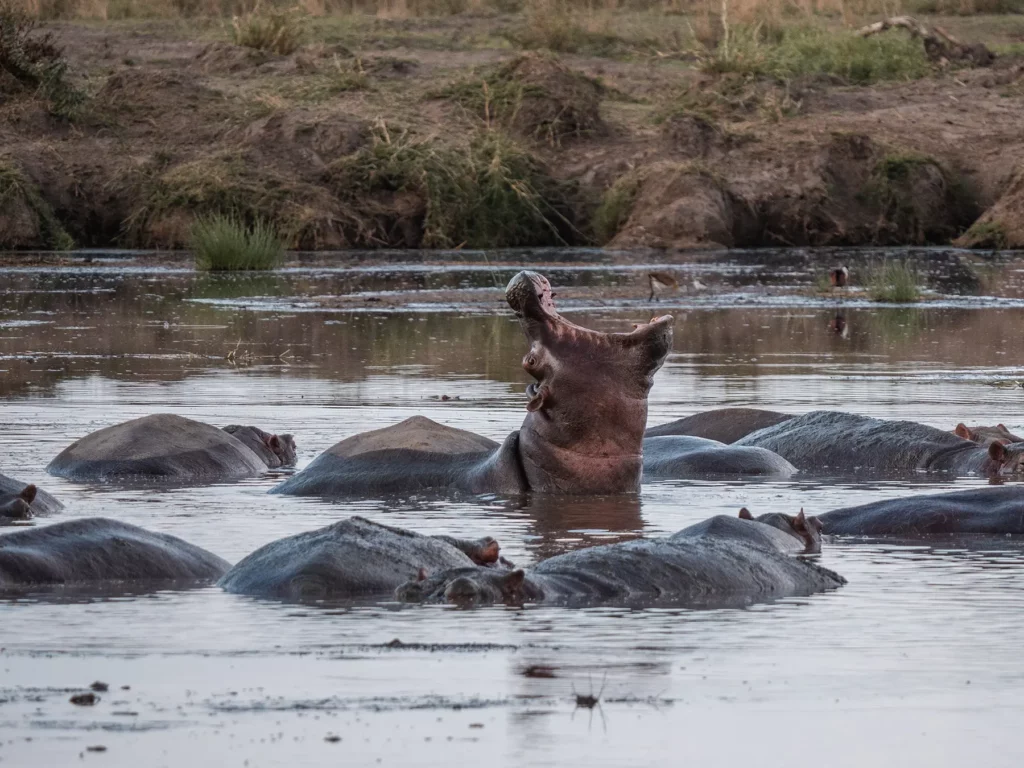
Additionally, Serengeti is famous for its sheer abundance of wildlife, which was recorded as early as the late 19th century by early European hunters, explorers and missionaries. It has an extremely high concentration of big cats, including lions, leopards and cheetahs. It’s one of the few places on earth where you stand a good chance of seeing all three.
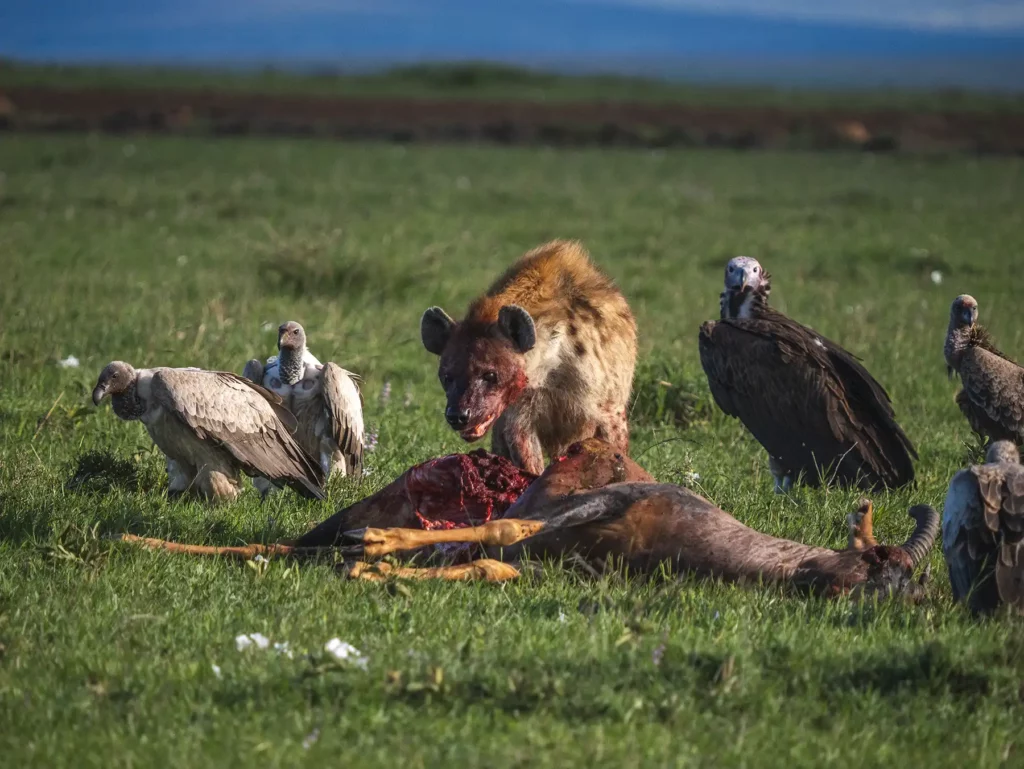
History of the Serengeti National Park
The Serengeti National Park has a long and complex history and has gone through numerous challenging periods.
How Was Serengeti Formed?
The landscape of the Serengeti as we know it today, was originally formed millions of years ago, mostly through violent volcanic activity. Aeons of winds, rains and the ravages of time have sculptured it further, providing expansive, flat, open grasslands and rolling hills, vast plains and gentle valleys, dense woodlands and riverine forests, and tall mountains and steep volcano craters, with each ecosystem having its own climate.
A steady rainfall has enabled numerous rivers to flow freely carving their way through this varied landscape before spilling into the many great lakes that East Africa is known for, while offering life to the surrounding flora and all the creatures that have made this place their home.
This ecologically diverse landscape has allowed a vast variety of wildlife to thrive here, each species evolving over the millennia to meet the demands of this ever-changing ecosystem.
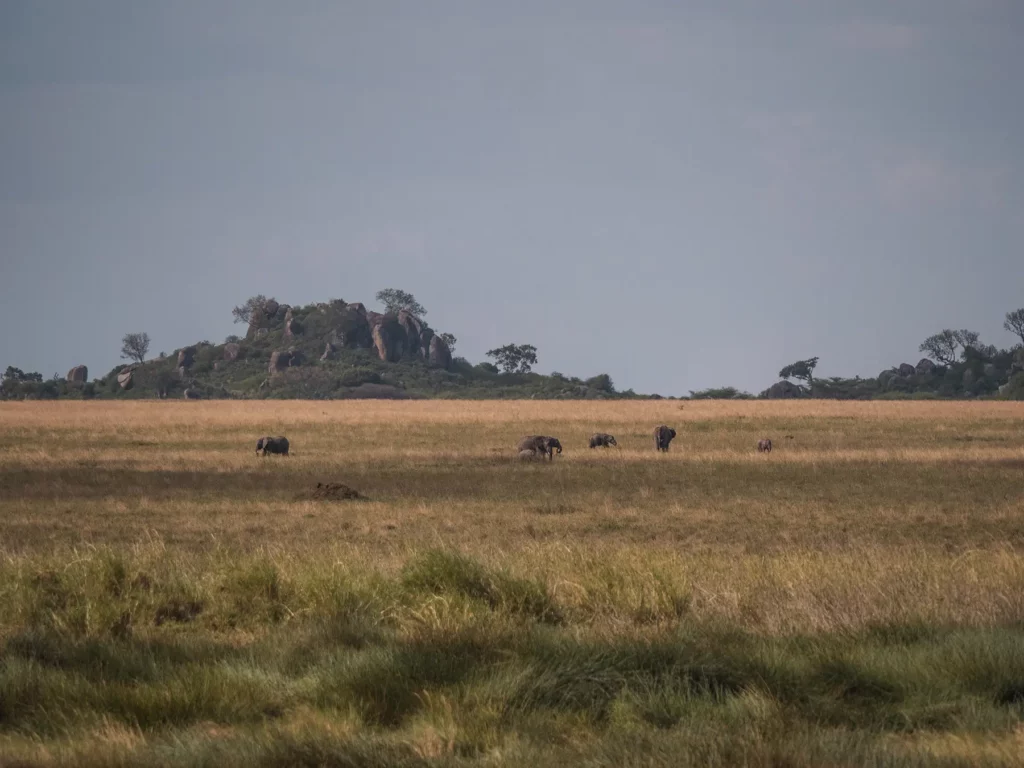
Colonisation & Serengeti’s Decline in the 19th Century
The abundance of wildlife in modern day Northern Tanzania and Kenya was first recorded in western civilization by the early explorers and missionaries of the late 19th century.
The Maasai, a nomadic pastoralist tribe which had migrated with their cattle from the north, had however, already been living there for over 200 years. Awed by the natural wealth and vastness of their newly found homeland, they named it “Siringet” (the place where the land goes on forever).
The fertile, volcanic mineral-rich soil and healthy supply of fresh water provided an abundance of grazing land for their cattle, ensuring a prosperous habitation for the Maasai, keeping them in their age-old semi-nomadic lifestyles within the Serengeti.
But when the paths of the Maasai crossed with the colonial powers of Europe during their Scramble for Africa during the late 19th century, their destiny and that of the wildlife in the “Siringet”, was to change forever.
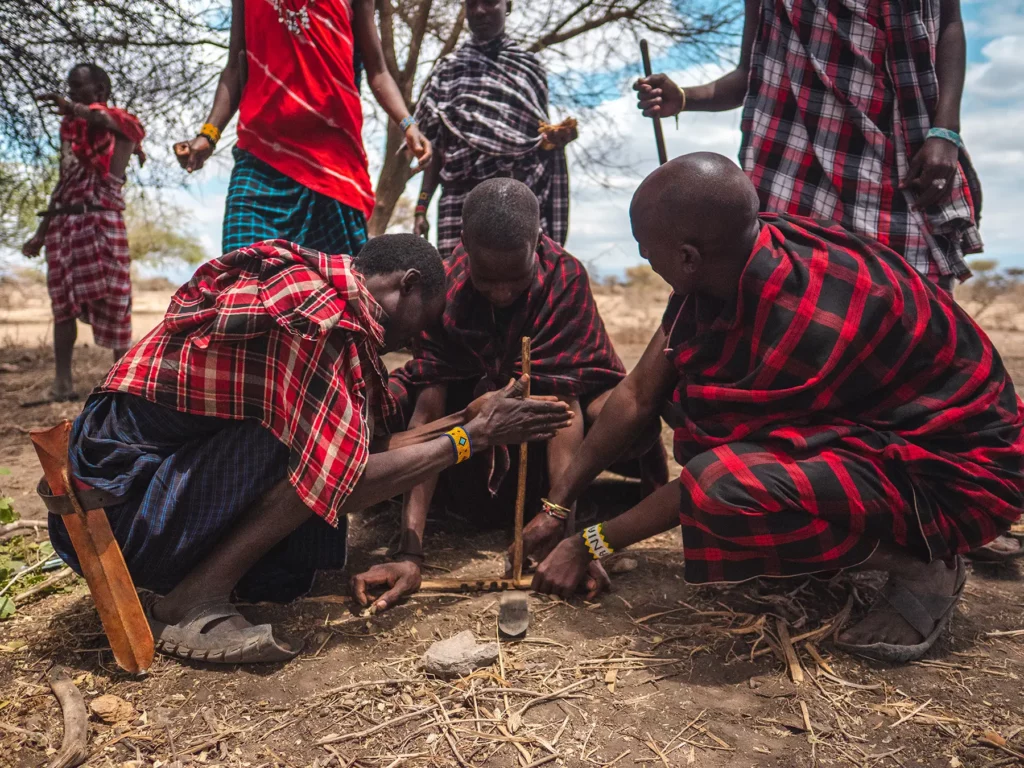
Their courage and spears were no match for the soldiers, guns, and the courtrooms of the western colonials. From then on the fate of the Maasai was sealed as they slowly began to lose their grazing lands to European settlers.
By 1911, through several treaties they had quite controversially signed, they had lost two thirds of their lands and were forced to move to less fertile parts of modern day Kenya and Tanzania.
To cut a long story short, during the 1880s, drought, cholera and a smallpox epidemic took a serious toll on the Maasai, where an estimated two thirds of the population perished to these diseases. At the same time a rinderpest plague swept through their cattle, wiping out most of their wealth and sole possessions. The once proud, fearsome and prosperous Maasai had suddenly been reduced to near starvation and extermination.

The rinderpest disease also had a huge impact on the landscape, the animals and the entire ecosystem. Not being restricted to cattle, it spread like wildfire through the wildebeest and buffalo herds and other wildlife within the Serengeti, reducing them to near extinction too.
The sudden decrease in cattle and other grazers drastically transformed parts of the landscape from grasslands to thorn bush, forcing animals to migrate to other areas in order to survive. This abrupt change of the landscape also created ideal conditions for tsetse fly to thrive, contributing to its rapid spread to the rest of the continent causing more mayhem everywhere along its path.
It took close to 90 years of serious conservation measures by various organisations before the wildebeest and buffalo populations could recover.
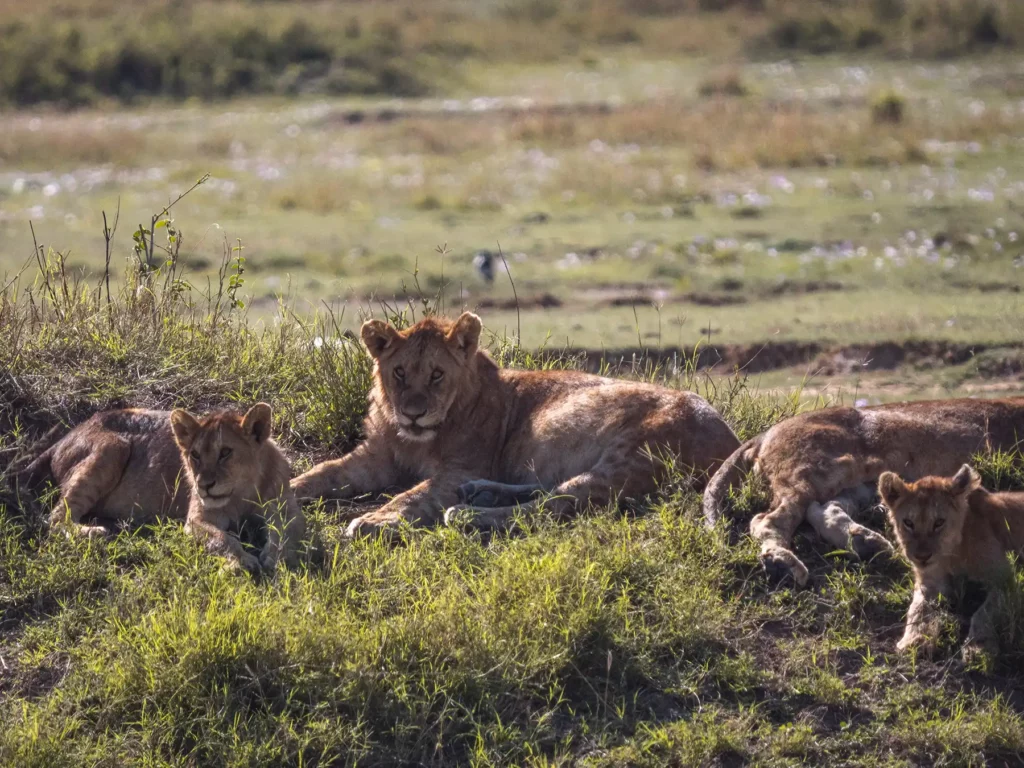
Hunting & the Introduction of Conservation in the 20th Century
When news of the abundant game had reached the outside world, professional hunters started to flock to the Serengeti from 1913 onwards, sending courageous tales of hunting huge dangerous animals and man-eating beasts back to Europe and America.
This brought even more adventure seeking hunters to the Serengeti, making a serious dent in the local wildlife stocks in a very short space of time. Tusks and skins were constantly being shipped out of Mombasa to all corners of the world.
It was only when lions, which had once been so abundant that they were regarded as vermin, had suddenly become scarce, a growing awareness to protect this ‘Natural Wonder’ began to arise.
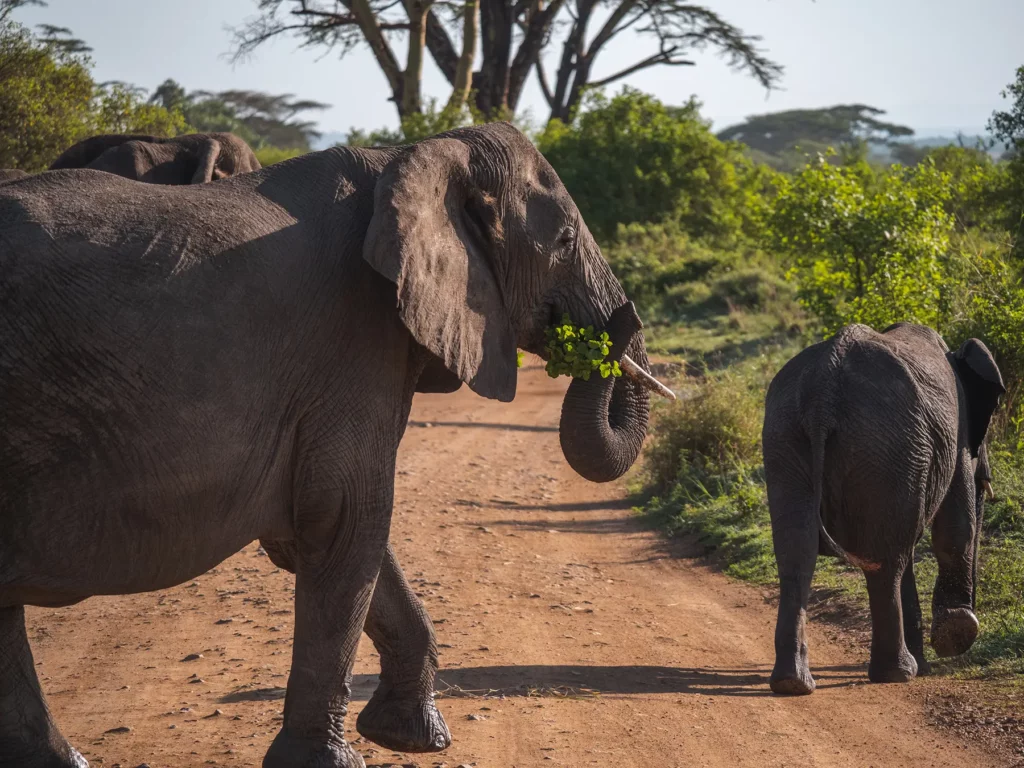
By the end of World War 1, the mainland of the then-called Tanganyika and the Zanzibar Archipelago had become a British mandate after being under German administration since 1891. In 1930 a small area consisting of 2,286 square kilometres was declared a game reserve in the south-eastern region, although it took another seven years before hunting was totally banned.
It still had to wait until 1940 to achieve national park status and until 1948 to be granted full protection when the Serengeti National Park Board of Trustees was formed to administer the park. They do so to this day.
In later years, the Serengeti National Park’s boundaries were extended several times to offer more protection to the wildlife, but that was not to be without controversy, as it restricted movements of the Maasai people who lived within these boundaries.
More land for the wildlife meant less land for grazing and agriculture, creating huge problems for the growing Maasai and the populations of other tribes, which only sought to preserve their simple traditional lifestyles. This problem persists to this day with many Maasai elders claiming that animals have been treated better than humans.
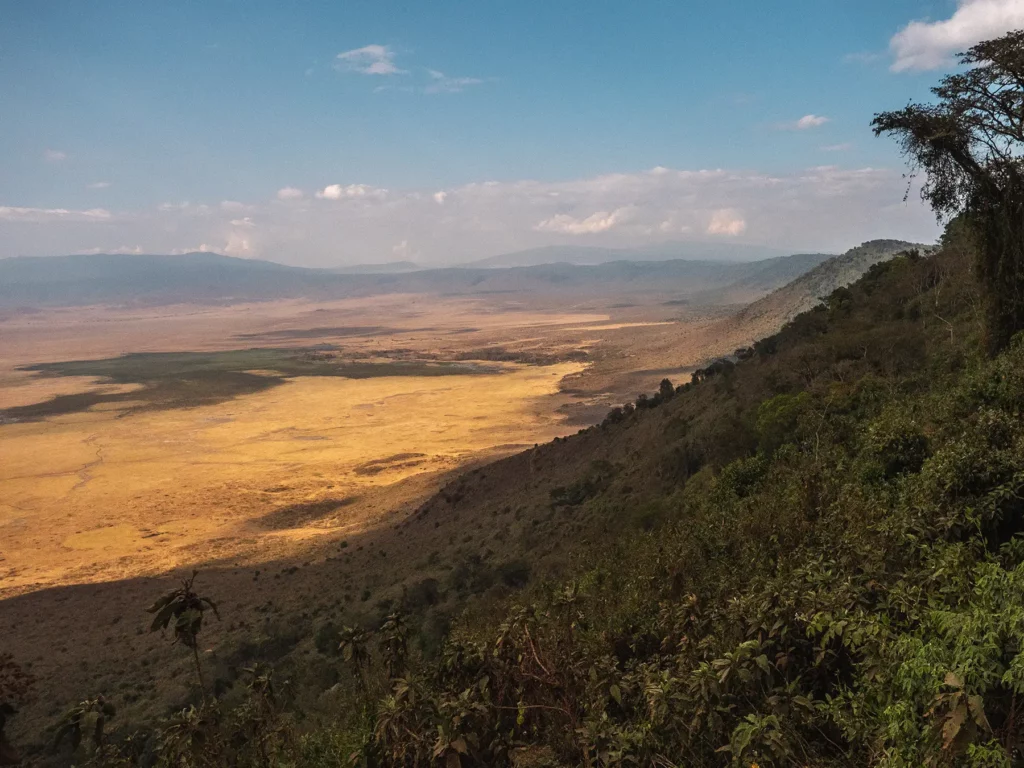
In 1959 the northern boundaries of the Serengeti National Park were extended to the Kenyan border, while the Ngorongoro Conservation Area was removed, in a compromise to allow the Maasai to live and for their cattle to graze in Ngorongoro area but outside of the Serengeti.
More areas were added to the park during the 1960s, notably the Maswa Game Reserve in the south and a small section north of the Grumeti River along the Western Corridor.
A further strip, known as the Lamai Wedge between the Mara River and the newly established Maasai Mara National Park, was added to the Serengeti, ensuring an uninterrupted passage for the migratory wildebeest herds to reach the greener pastures of the Loita Plains in southern Kenya.
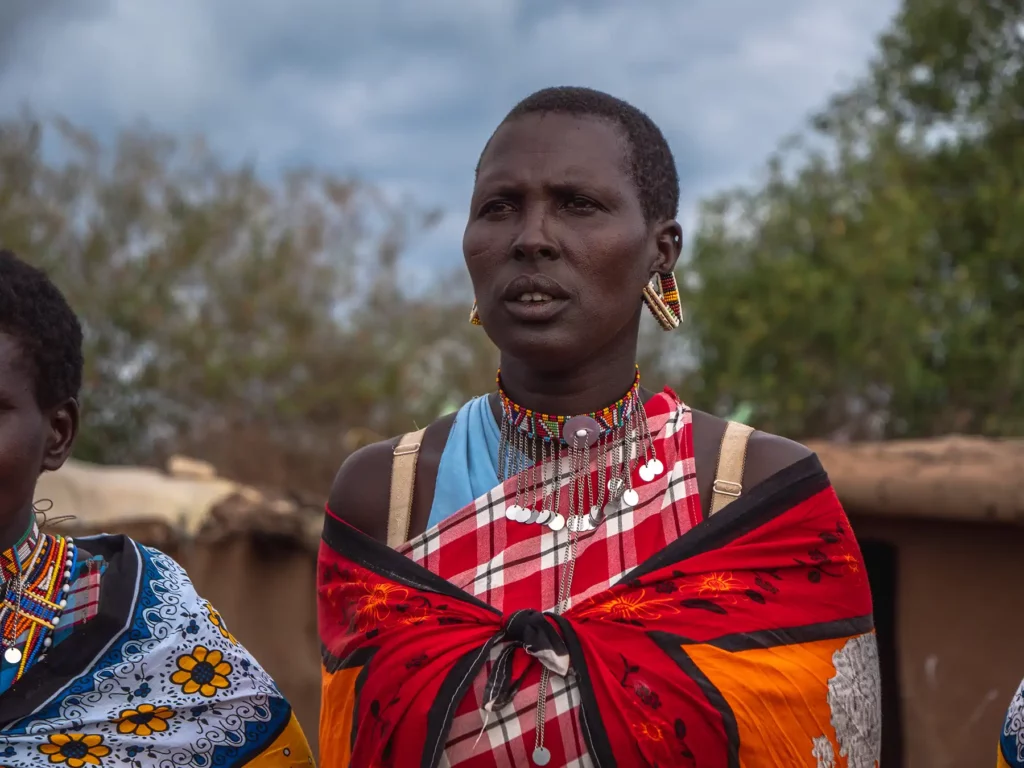
Modern Day Serengeti
The Serengeti National Park today stretches over just under 15,000 square kilometres and is under the management of the Tanzania National Parks Authority and is a declared UNESCO World Heritage Site.
Poaching however, still poses a huge threat to the overall health status of the Serengeti and despite the efforts of the authorities, it is estimated that nearly a quarter of a million animals are lost to poachers each year.
Rhinos, elephants and buffaloes have borne most of the brunt of the rhino horn, ivory, bush meat, and trophy hunting trade, not only in the Serengeti but in many other parks across the continent.
And so the struggle to preserve this paradise seems likely to continue well into the future, while we remain hopeful that nature will win once again.
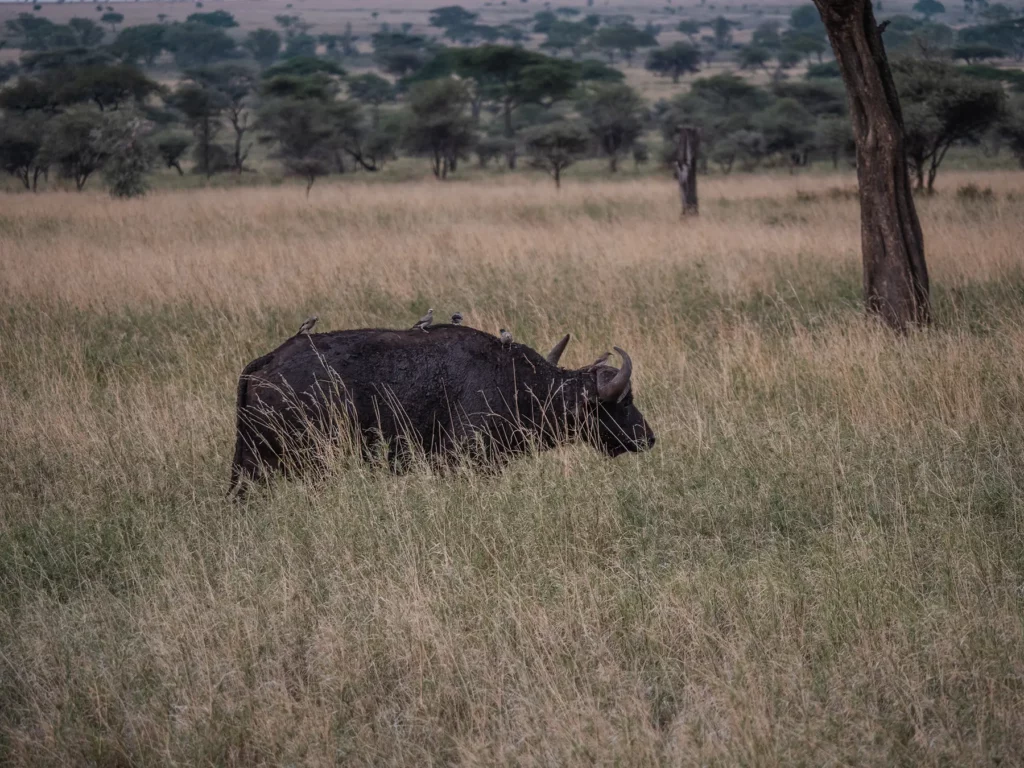
Save time and ensure an incredible safari experience
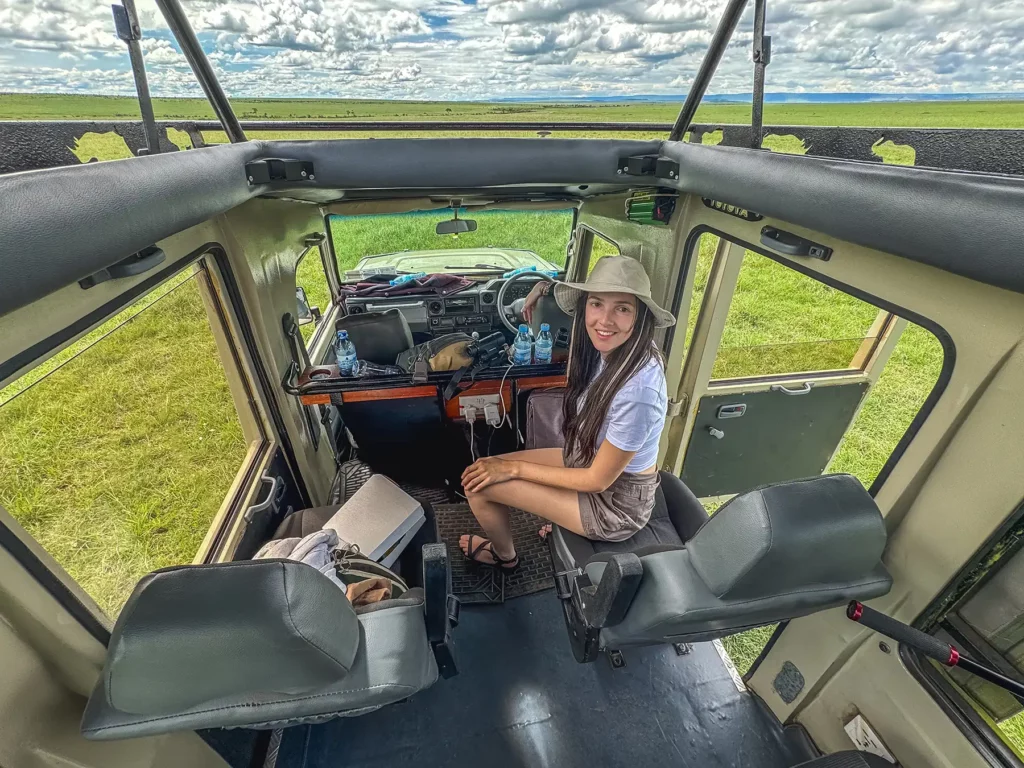
Get quotes from the local tour companies I use to organise my own trips.
You’ll join the rapidly growing tribe of over 1,000 travellers who’ve booked their dream safari using my insider tips and recommendations.
The Great Wildebeest Migration in the Serengeti
One of the main reasons that visitors journey to Serengeti is to witness the Great Wildebeest Migration with their own eyes.
Understanding the migration and the wildebeests’ movements will help you to time your visit so that you can be in exactly the right place at the right time.
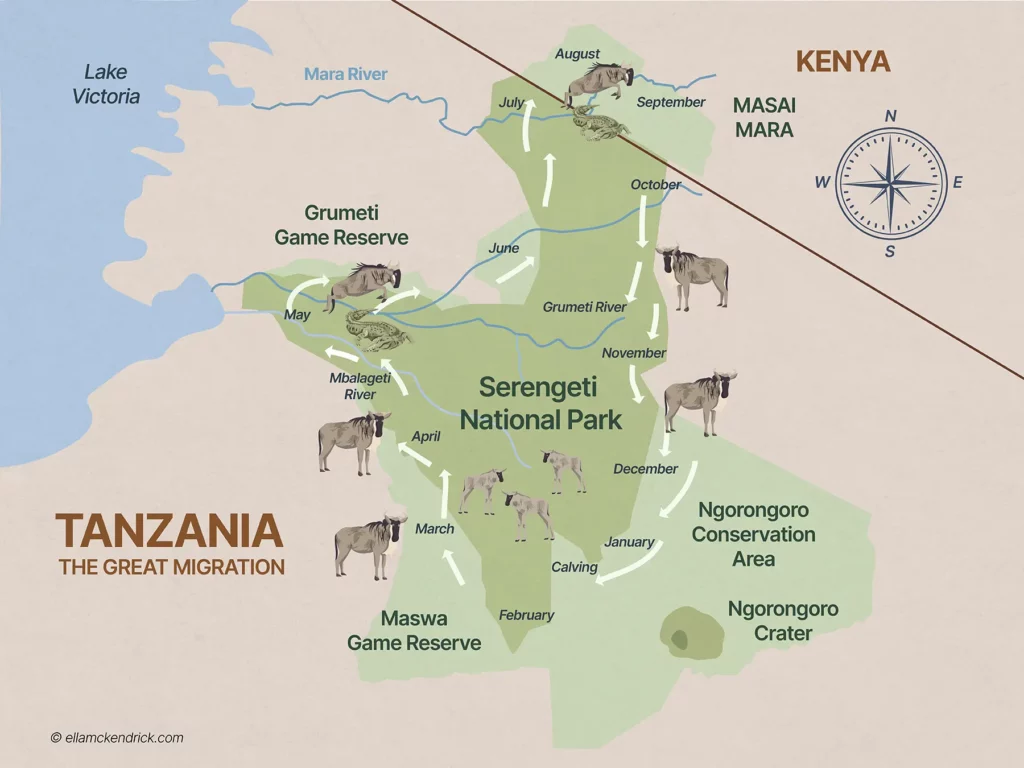
The Great Wildebeest Migration has no official starting or ending point, but is rather a never-ending circuit that dominates the entire lives of millions of animals, most of them from birth to death.
You can watch a video of my experience viewing the Great Migration Wildebeest river crossing below.
Driven by their desire to find greener pastures to graze and water to drink, over two million animals consisting mainly of wildebeest and zebras set off from the southern regions of the park on a perilous 1,000 kilometre journey of life and death.
Travelling in huge herds of up to 40 kilometres long with an estimated 1,000 animals per kilometre, they race northwards in a clockwise direction while being followed and constantly ambushed by thousands of lions, leopards, cheetahs and hyenas, along every step of the way.
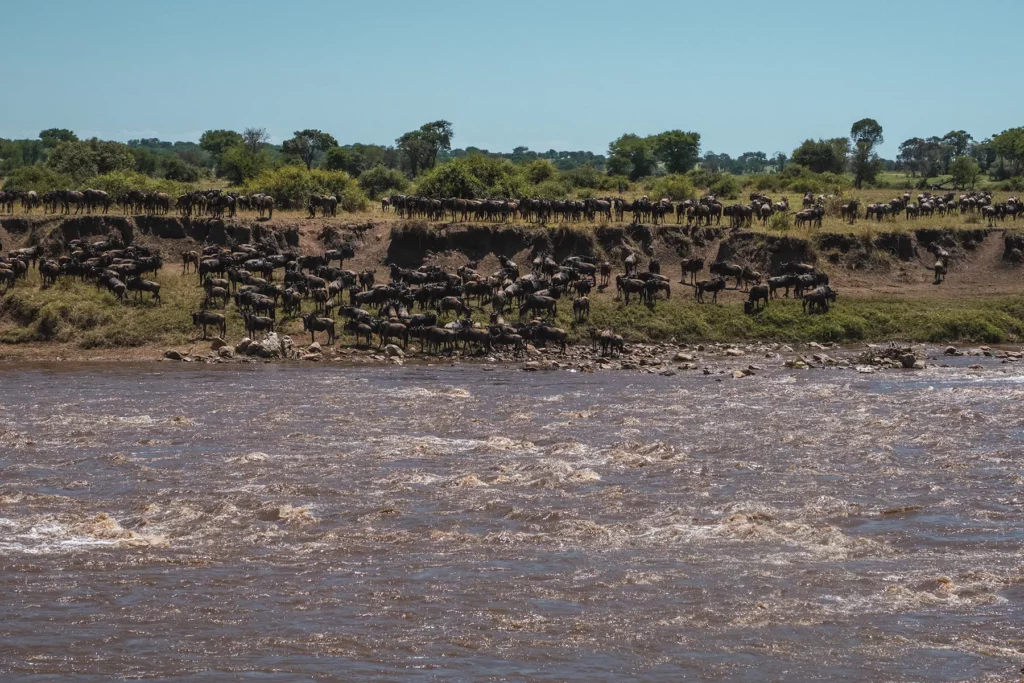
But that is not all they have to face. Crossing several rivers which lie across their path poses additional dangers with thousands of hungry crocodiles waiting patiently in the often fast-flowing waters in anticipation of the feast to come.
The ultimate drama is usually played out at the Grumeti River along the Western Corridor and at the infamous Mara River where to describe that as total mayhem, would be a serious understatement.

Needless to say, the weak, wounded and the stragglers don’t get to complete their journey as well as many perfectly healthy and strong individuals too. It is estimated that around 250,000 animals die each year on this perilous journey.
This is one of the most fundamental laws of nature – the sacrifice of the unfortunate few ensures the survival of all the species.
Despite the seemingly high mortality rate, a recent study by researchers at the University of Copenhagen, has clearly shown that the migration in the Serengeti has ensured the genetic wellbeing not only of the wildebeest population but for the entire ecosystem too.
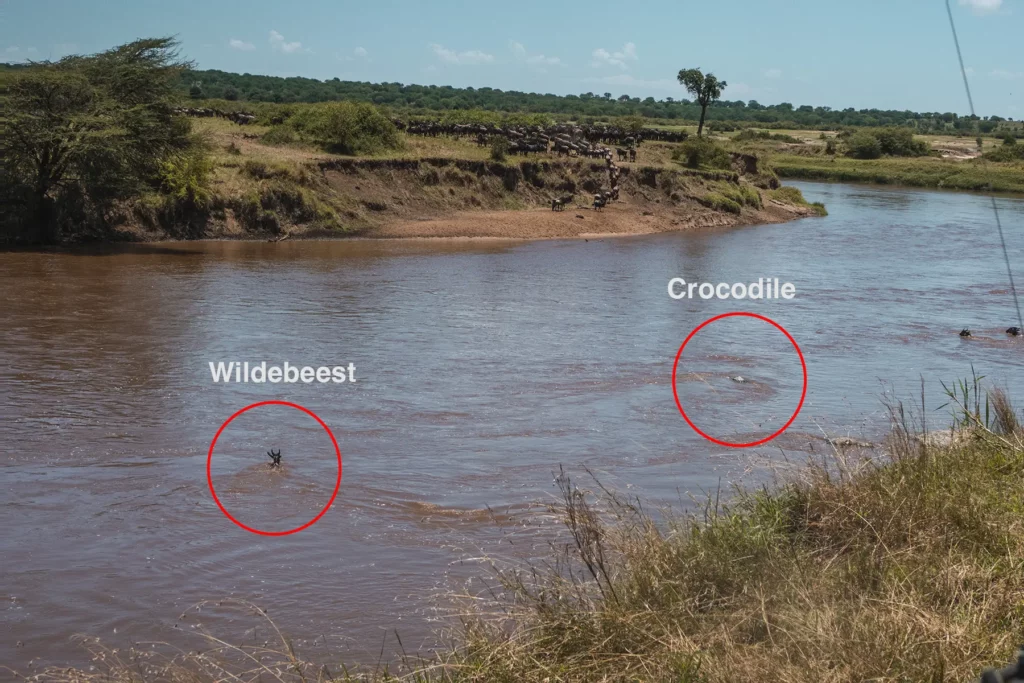
The animals’ grazing along the entire route keeps the vegetation healthy, while they transport nutrients across the plains and their dung fertilises the ground, promoting new growth when the rains finally arrive.
The animals themselves also provide an abundant food supply to thousands of predators and scavengers across the entire 1,000 kilometre landscape.
In other parks across Africa, roads, fences, farms and urban spread have prevented herds of animals from roaming far and wide and are no longer able to migrate.
This has impacted negatively, not only on their own genetic health but their numbers have also decreased at an alarming rate. On the Serengeti however, numbers of wildebeest remain healthy and continue to rise.
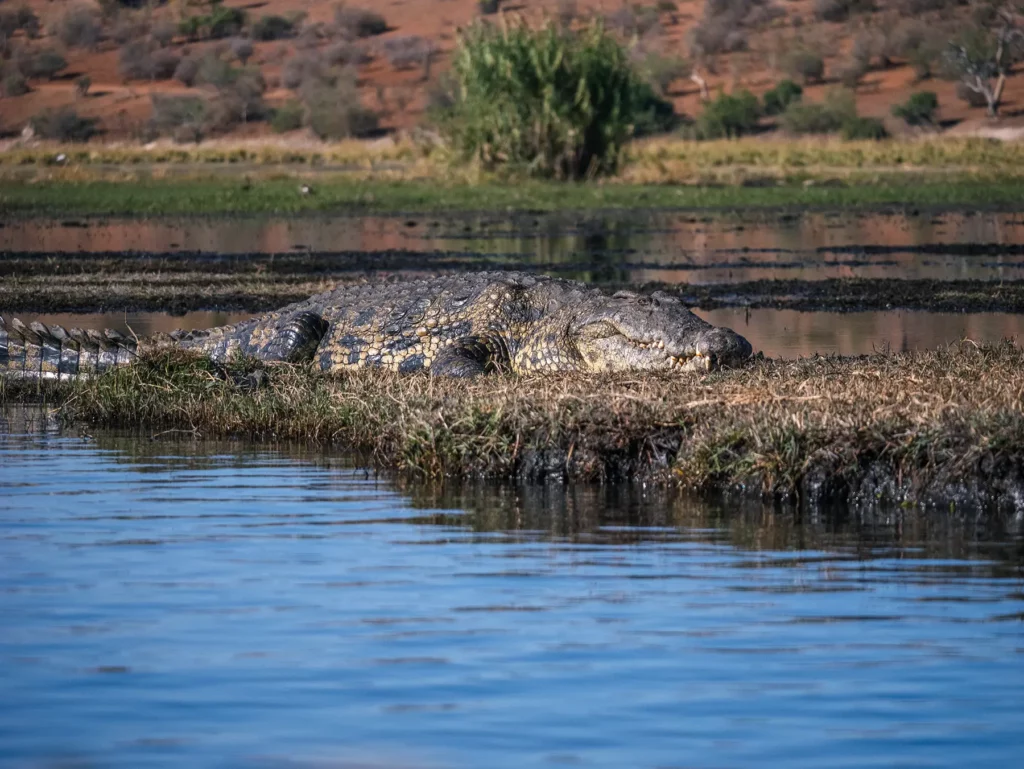
The Great Wildebeest Migration in January and February
The migration ‘starts’ off in the south eastern regions of the Serengeti, mainly south of Seronera and Ngorongoro during January and February. This is regarded as the ‘short dry season’ but the landscape is still lush and green from the preceding rains, and this is an ideal time for conditioning and raising families.
During this period up to 8,000 wildebeest and zebra calves are born each day and within one month they will be joining their parents and the rest of the herds, embarking on their first gruelling and treacherous 1,000 kilometre marathon to the greener pastures of the Maasai Mara plains in Kenya.
For many youngsters, it will also be their last, as less than half the calves make it past their first year.
This sudden emergence of thousands of baby animals on the south-eastern plains of the Serengeti, draws a vast number of big cats and other predators to this area, who are also searching for food to raise their own young. It’s therefore a very good time of year to witness a hunt.
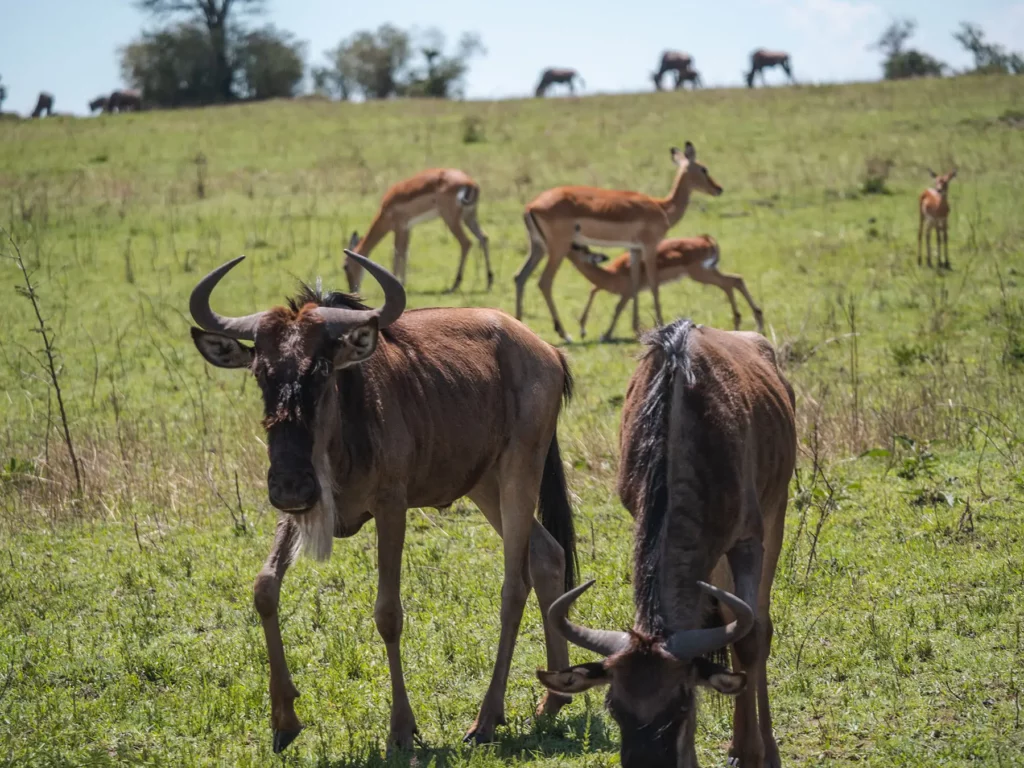
The Great Wildebeest Migration in March and April
By March and April, when the grasslands and lush vegetation have started to dry up, the animals are in good nick and the youngsters are running freely with the herds, it’s time for everyone to set off northwards in search of water and greener pastures.
Fortunately, there are numerous fixed game lodges scattered in this area as well as many mobile camps, which pop up along the route to enable the visiting tourists to witness the start of this epic event.
Many have airstrips located nearby, making access to these lodges and areas more easily accessible.

The Great Wildebeest Migration in May and June
Moving north westwards, the first real obstacle the herds face is when they have to cross the crocodile-infested Grumeti River, in which many animals die.
There again, numerous permanent lodges and mobile camps are set up around the river with several popular viewpoints easily reached by tour operators.
This river flows westwards until it pours into the south-western shores of Lake Victoria.
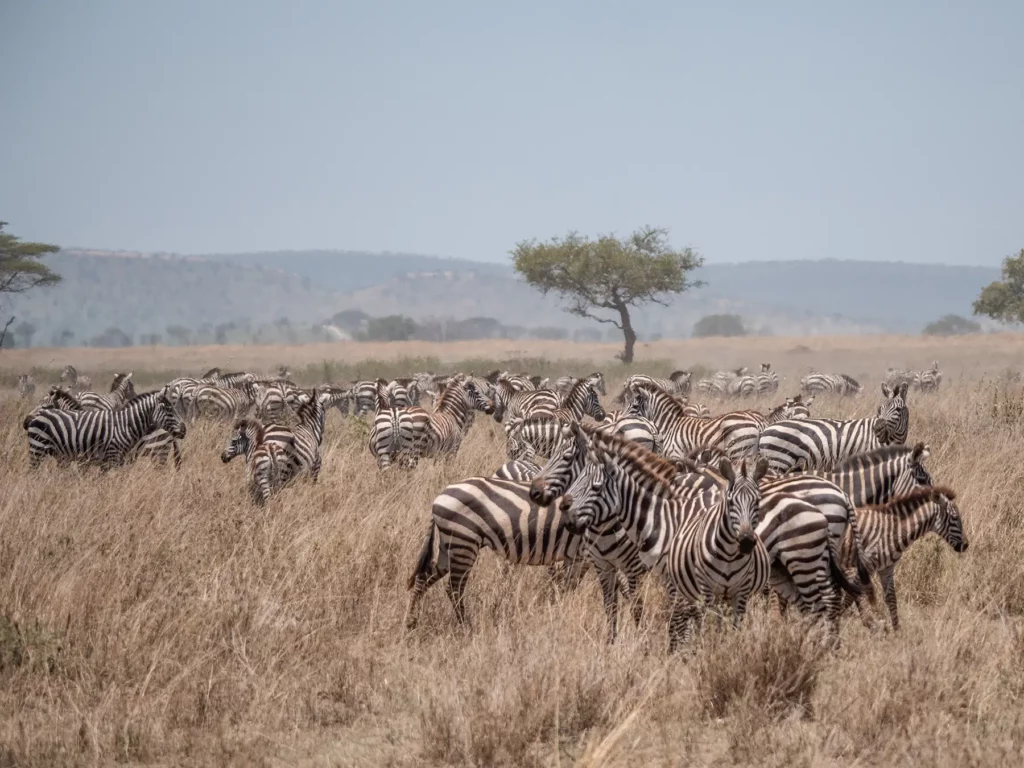
The Great Wildebeest Migration in July and August
By July to August, the herds would have travelled another 70 to 80 kilometres northwards along the Western Corridor, to negotiate the second and most dangerous obstacle of the entire journey – the infamous and deadly Mara River.
For some unknown reason the herds may hang around on the southern bank of the river for weeks, before building up enough courage to begin the crossing in full view of the awaiting crocodiles. Once the first animal takes the plunge, herd mentality kicks in and the mayhem begins.
Although not all crossings are as dramatic as we see on the TV programs, many crossing spots come with their own set of challenges.
Some spots require the animals to jump down steep banks, running the risk of breaking a limb, which will be fatal, while strong currents sweep them downstream away from the herd to be either eaten by crocs or have to negotiate impossible steep banks on the other side before they can rejoin the herds.
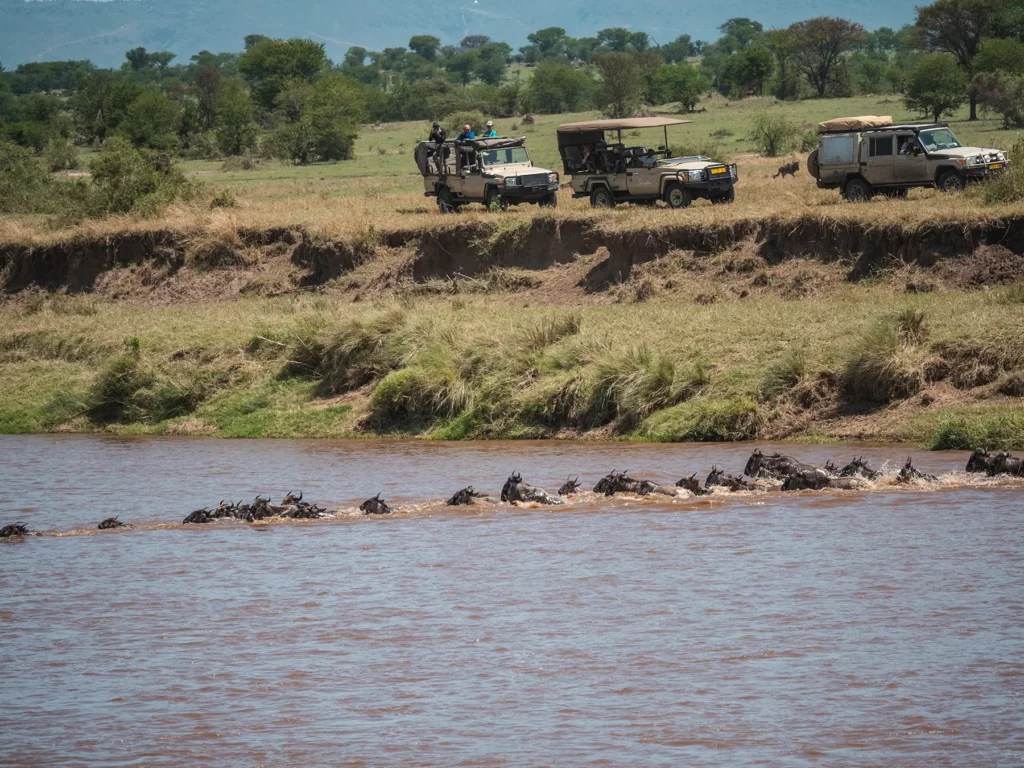
What is puzzling to many scientists, is that many herds cross this river back and forth several times before deciding to move on. Whether they have become confused or searching for their lost calves, we don’t know.
This is by far the best time to visit the Serengeti and possibly many other game parks in Tanzania and it comes as no surprise that lodges and camps abound in this area. Virtually all tour operators have their favourite Mara riverside spots, offering ring side seats for their visitors to this spectacle.
Witnessing the Mara River crossing with my own eyes has been one of the highlights of my many safaris across Africa. Words cannot fully describe the feeling of witnessing hundreds of wildebeest charge into the raging torrent, battling strong currents whilst the ominous forms of crocodiles gather nearby.
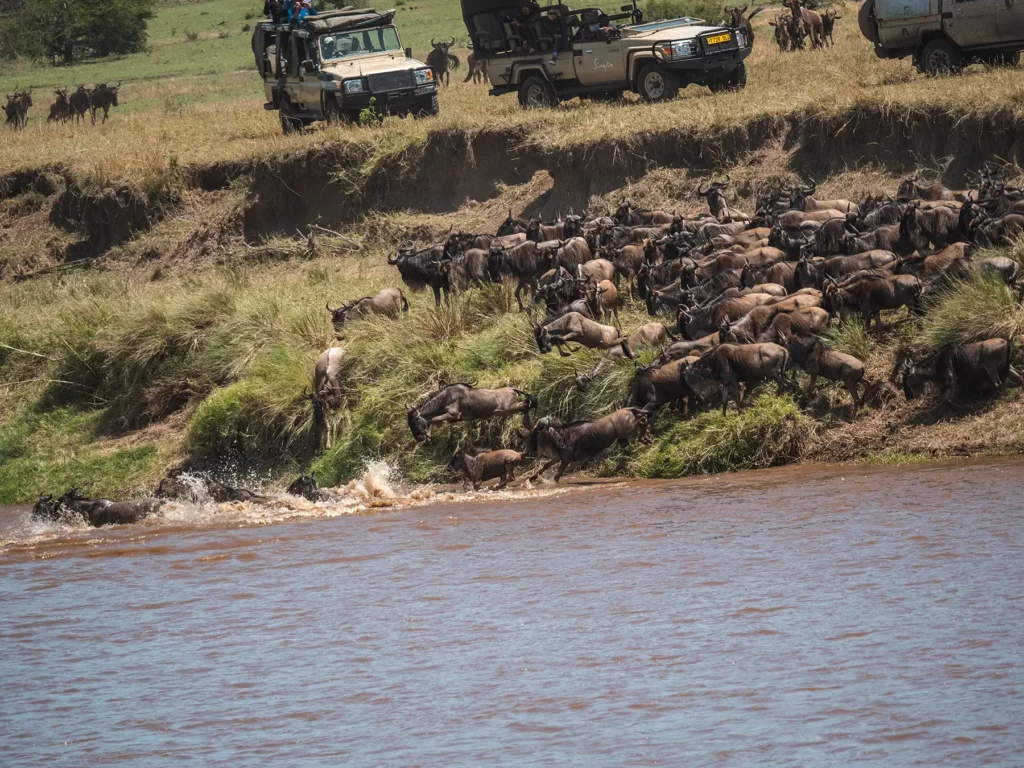
I was surprised that the crocodiles didn’t actively attack the wildebeests – instead they waited until a calf became separated from the herd and was dragged downstream. Only when the calf became exhausted from trying to clamber up the steep embankment did a crocodile finally come and end its struggles.
The Great Wildebeest Migration in September and October
By September most of the herds have crossed into the Maasai Mara National Reserve in Kenya, but by October, they start making their way southwards on their return journey, having to face the same perilous obstacles all over again.
Many travellers choose to combine a Tanzania and Kenya safari and follow the herds into the Maasai Mara National Park, which also rates as one of Africa’s finest game parks. There are however, several things you need to know regarding border crossings between the two countries, which I go into detail on in my article here.
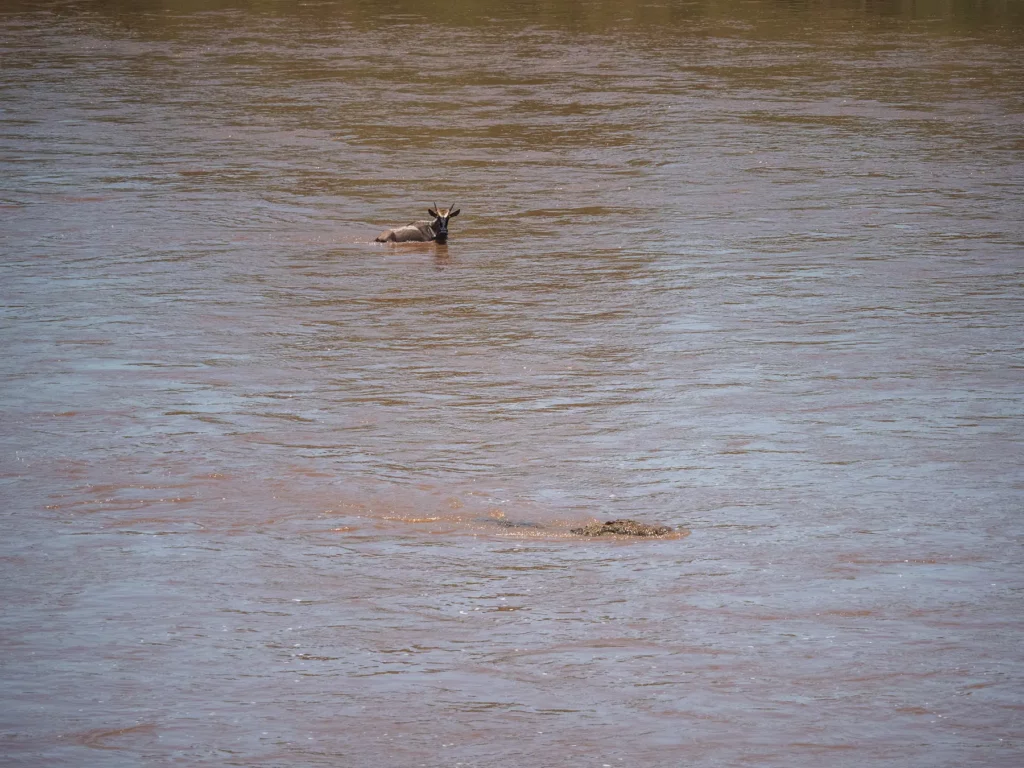
The Great Wildebeest Migration in November and December
By November and December, the exhausted herds have returned to the south-eastern region of the park, when it will be time for calving and conditioning, in preparation to repeat this whole cycle all over again.
As the migration patterns depend entirely on the timing of the rains, it is difficult to predict exactly where and when one needs to be to best witness this unique spectacle. Nobody can tell you with any certainty how the animals themselves know when it’s time to start the journey, or who actually gives the signal to go. As if they’re all controlled by one brain, they gather and take off as one massive army on the march and with a set purpose in mind – to survive.
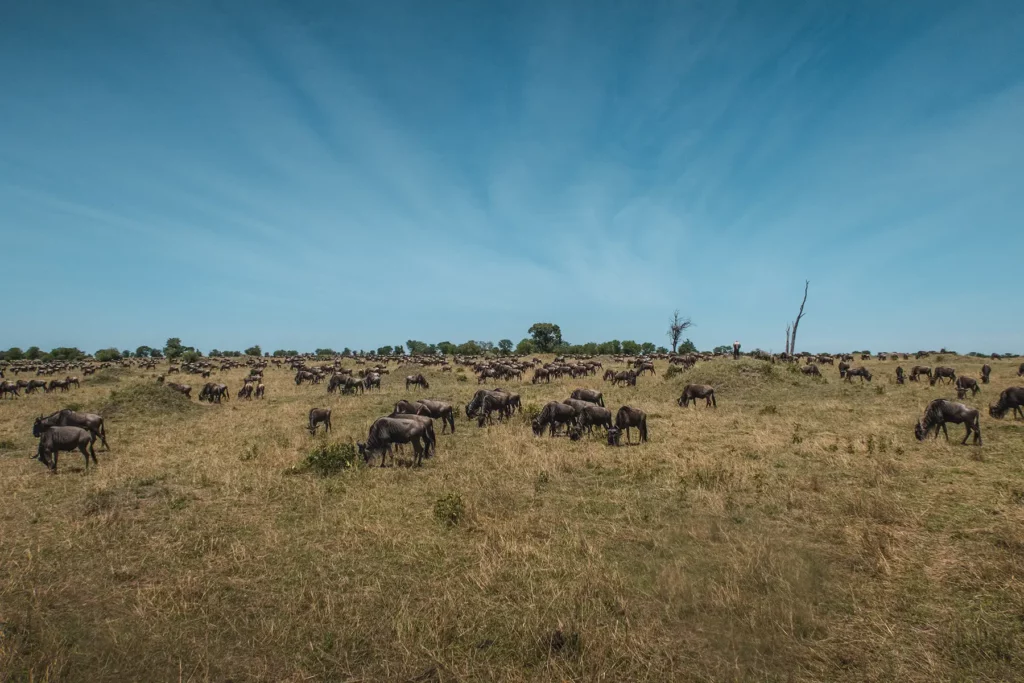
Save time and ensure an incredible safari experience
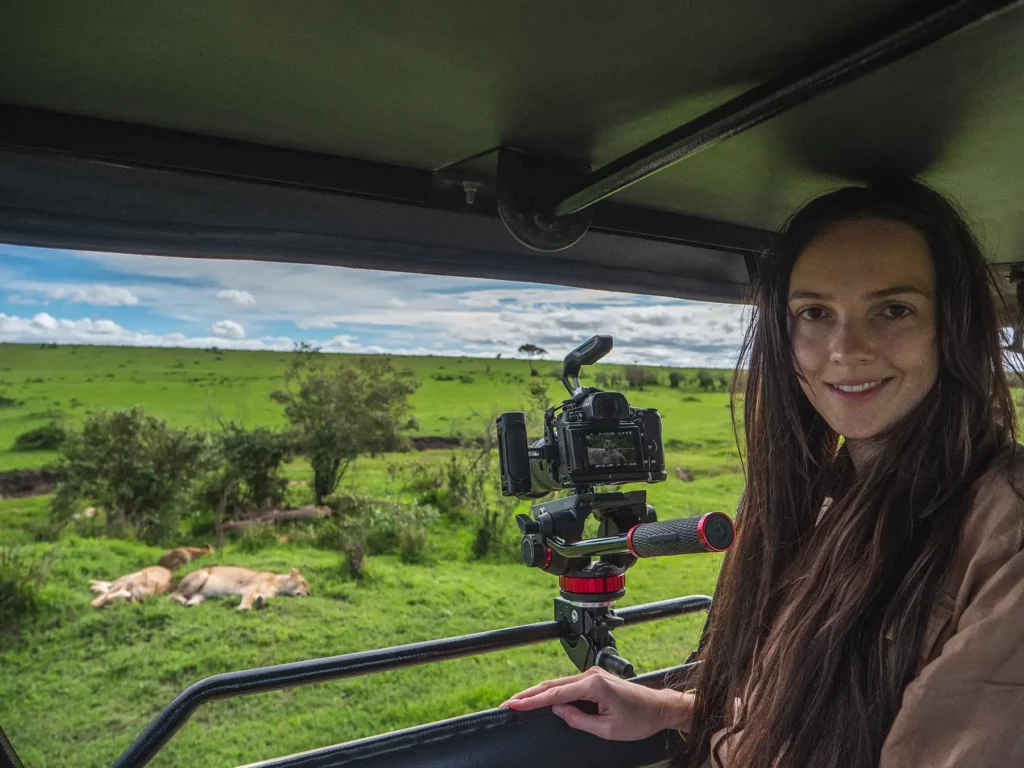
Get quotes from the local tour companies I use to organise my own trips.
You’ll join the rapidly growing tribe of over 250 travellers who’ve booked their dream safari using my insider tips and recommendations.
Animals in Serengeti National Park
The multi-ecosystems of the Serengeti sustain one of the densest populations of wildlife, not only in numbers, but in variety of species too. From the mighty elephant to the tiniest dik-dik antelope and everything in between, so much can be found here!
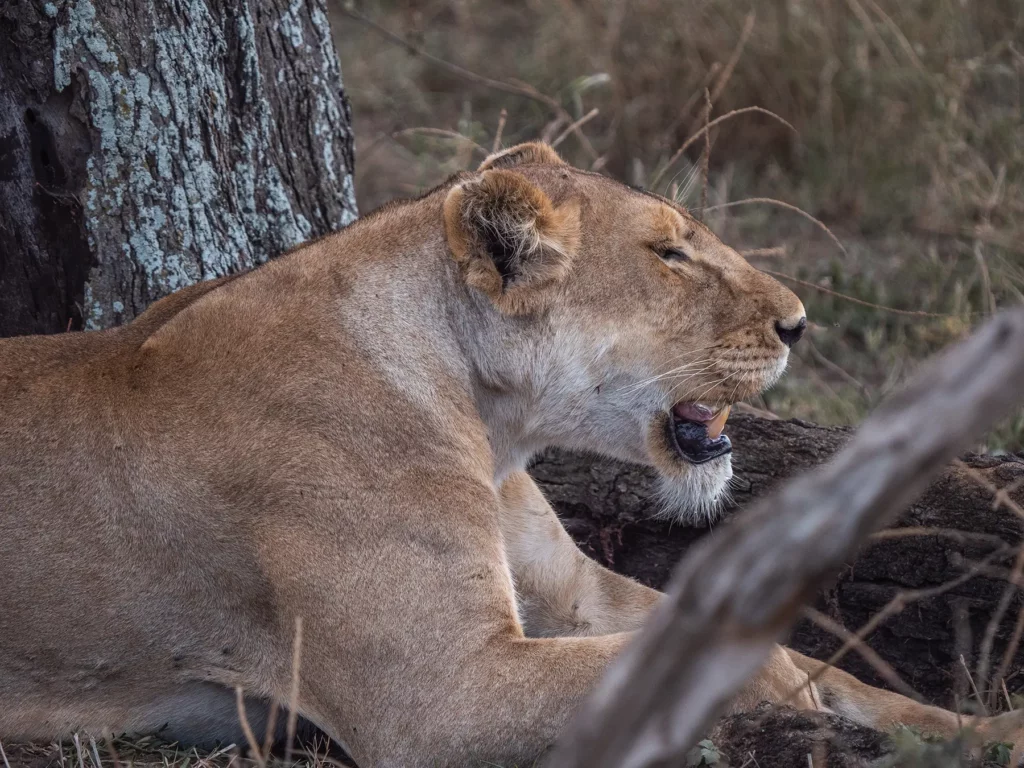
As far as big cats go, which are always a big draw card and my personal favourites, the Serengeti is home to over 4,000 lions, 1,000 leopards and 500 cheetahs and it would not be unusual to come across two or three prides of lions on a single game drive.
The table below compares lion densities (which equates to how likely you are to see a lion) in some of the most popular reserves in Tanzania. Serengeti sits near the top with an average of 3.5 lions per 100 km². This figure reaches 20 lions per 100 km² in the central Serengeti’s prime lion viewing areas.
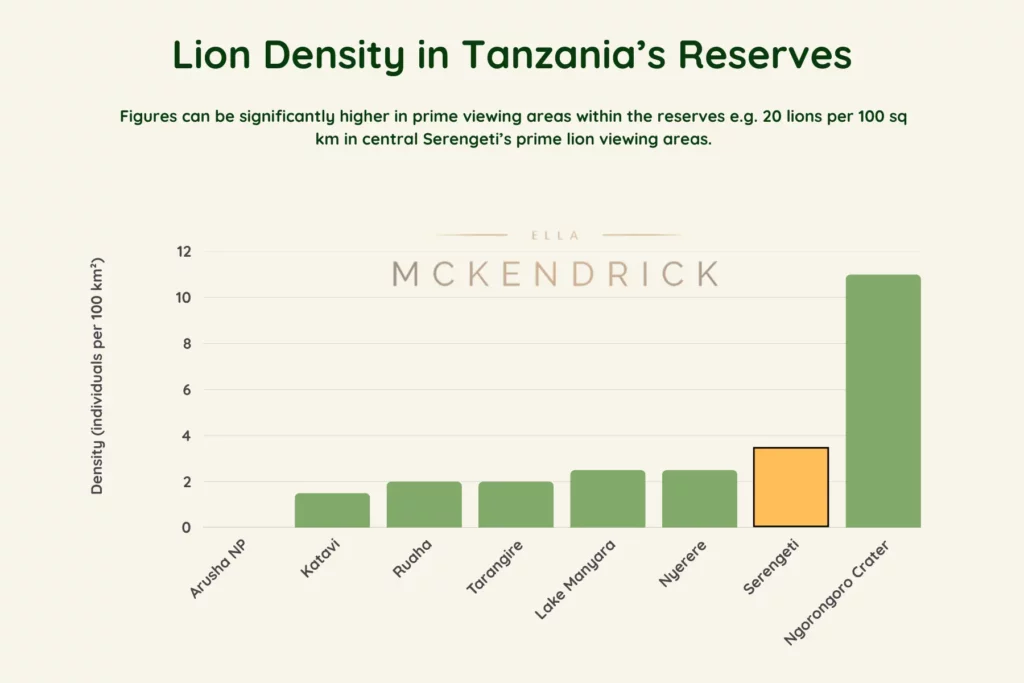
Cheetahs are frequently spotted in the open grasslands and particularly on termite mounds surveying the landscape, while the elusive leopards are harder to spot, but tend to be more prolific in the south around the Seronera region. Rocky ledges and high up in trees are favourite hideouts for leopards.
African wild cats and servals are also fairly common, but tend to be more active at dawn, dusk and at night.
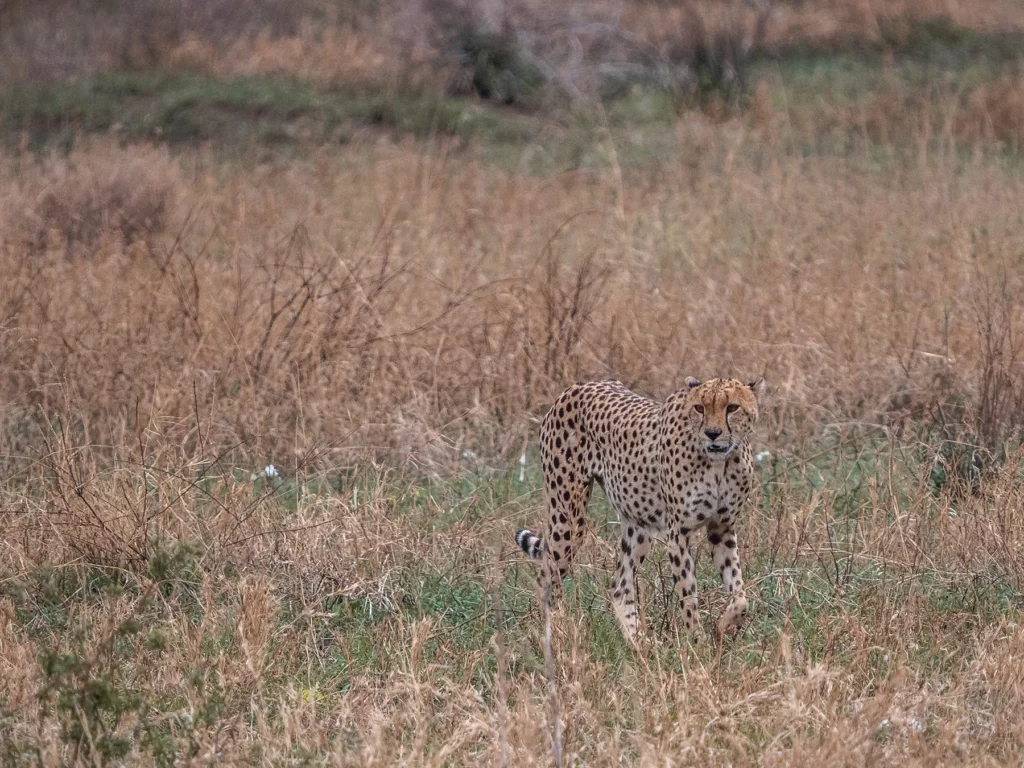
Other predators include an estimated 8,000 hyenas, jackals, golden wolves, bat-eared foxes and of course thousands of crocodiles which hang out in and around the rivers and water holes.
There are also an estimated 8,000 elephants, hundreds of hippos, close to two million wildebeest, plus an abundance of zebras, giraffes, buffalos, rhinos and tens of thousands of various antelope species. Rhinos, whilst present, are rarely seen as unfortunately poaching has and continues to decimate their numbers.
In the woodlands and dense forests one may find baboons, vervet monkeys plus over 500 species of birds, ranging from the giant ostrich to the daintiest and exquisitely coloured sunbird.
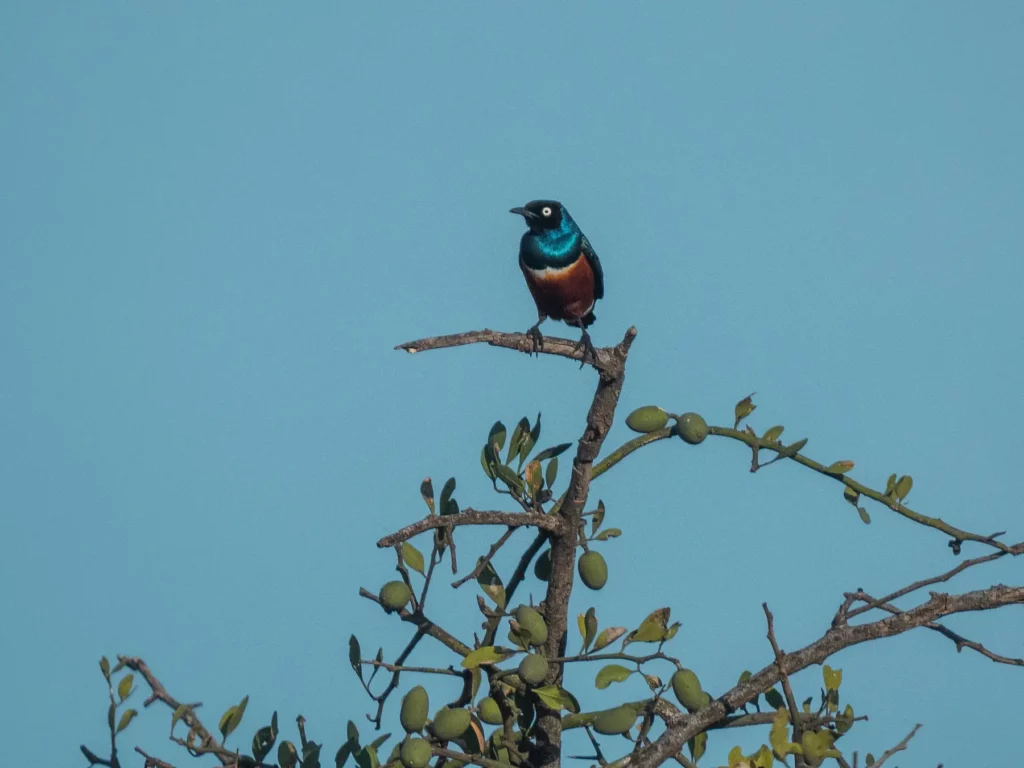
What is the Main Animal of Serengeti?
The most common animals to see in the Serengeti would be lions, elephants, wildebeest, zebras, buffalos and gazelles. They are all common throughout the year, but during the annual migration numbers of wildebeest and zebras vary between regions depending on the actual location of the herds at a particular point in time.
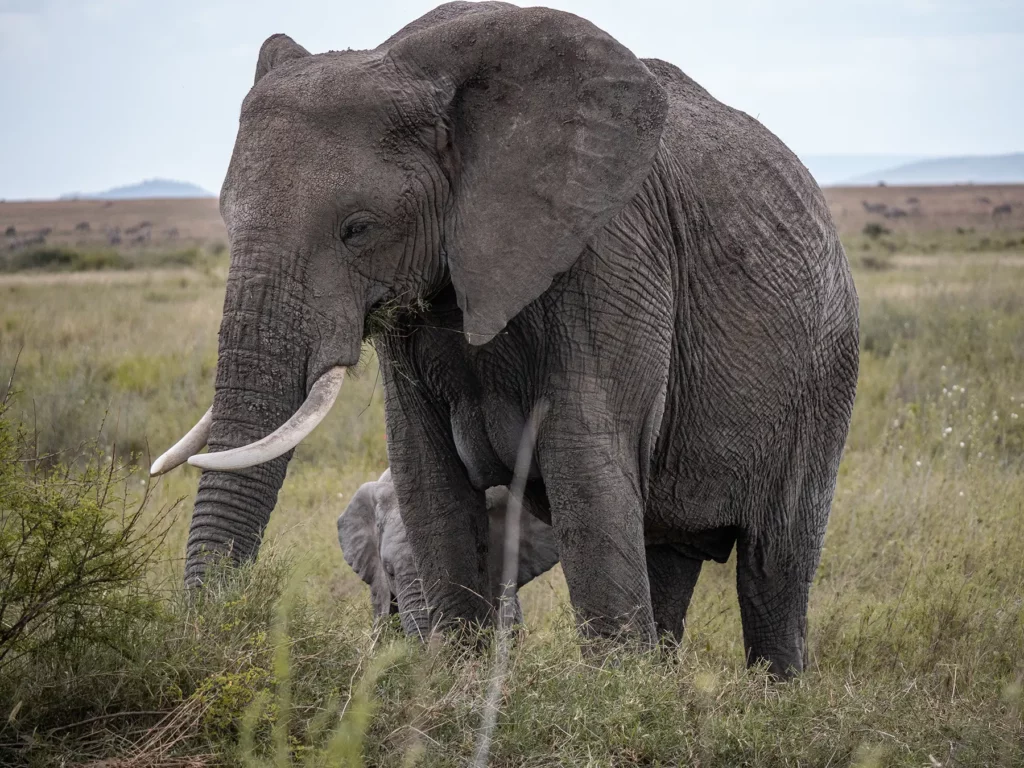
What are the Rarest Animals in the Serengeti?
There are several rare and endangered species of animals in the Serengeti. These include the wild dog, rhino, caracal, striped hyena and the East African Oryx.
Populations of wild dogs in the Serengeti had been on a decline for a number of years, before disappearing completely in 1991. Scientists seem to be at odds with each other as to the exact reason with several theories being suggested.
One is that the wild dogs were exposed to rabies or the canine distemper virus, which spread like wildfire through the packs and wiped them out. Others suggest competition with the increasing numbers of lions and hyenas has led to their demise.
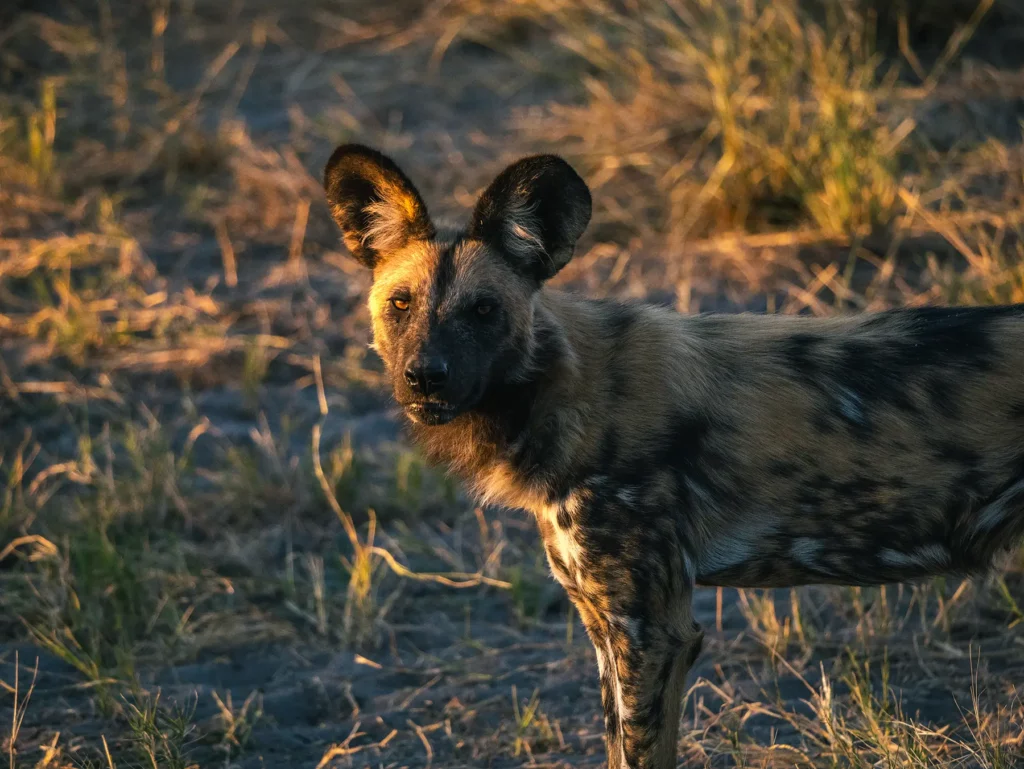
They are unsure however whether the dogs had actually died off or just moved on to other areas. Packs of wild dogs have been seen in neighbouring Ngorongoro and Tarangire parks which may strengthen this hypothesis, but as things currently stand, we simply don’t know.
The good news however, is that wild dogs have been reintroduced to the Serengeti and you just may be lucky enough to spot a pack. With continuous research and monitoring, they may once again become a permanent feature of the Serengeti landscape. These are hardy animals and can thrive in tough environments, with historical evidence of them being near the summit of Mount Kilimanjaro!
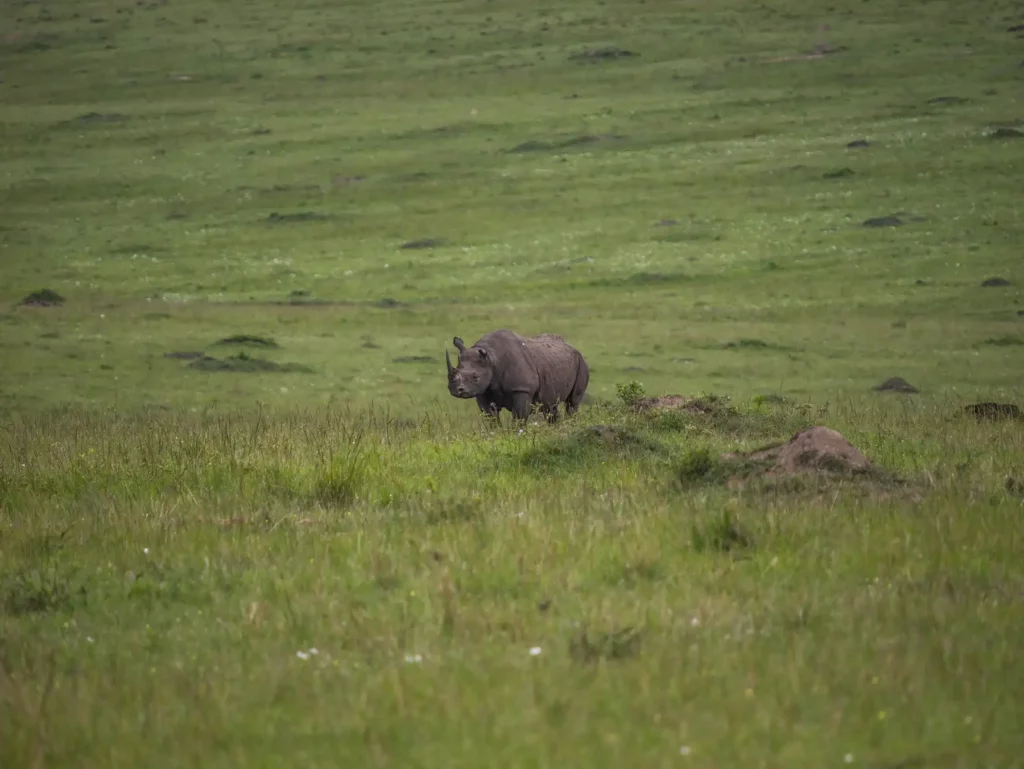
Rhinos are also extremely rare in the Serengeti and in the rest of Tanzania for that matter, mostly due to heavy poaching. This is a huge problem for virtually all the African countries and despite all efforts to curb this scourge, much remains to be done if this species is to survive.
Unlike their spotted cousins, sightings of striped hyenas are also rare in the Serengeti due mainly to their low numbers and that they are strictly nocturnal hunters, preferring to emerge from their lairs only under the cover of darkness.
Perhaps the rarest animal in the Serengeti would be the East African Oryx. Closely related to the gemsbok, usually found in abundance in Namibia, some small herds may sometimes be seen drifting in and out of the southern and central sections of the Serengeti, preferring a somewhat drier and semi-arid climate and habitat.
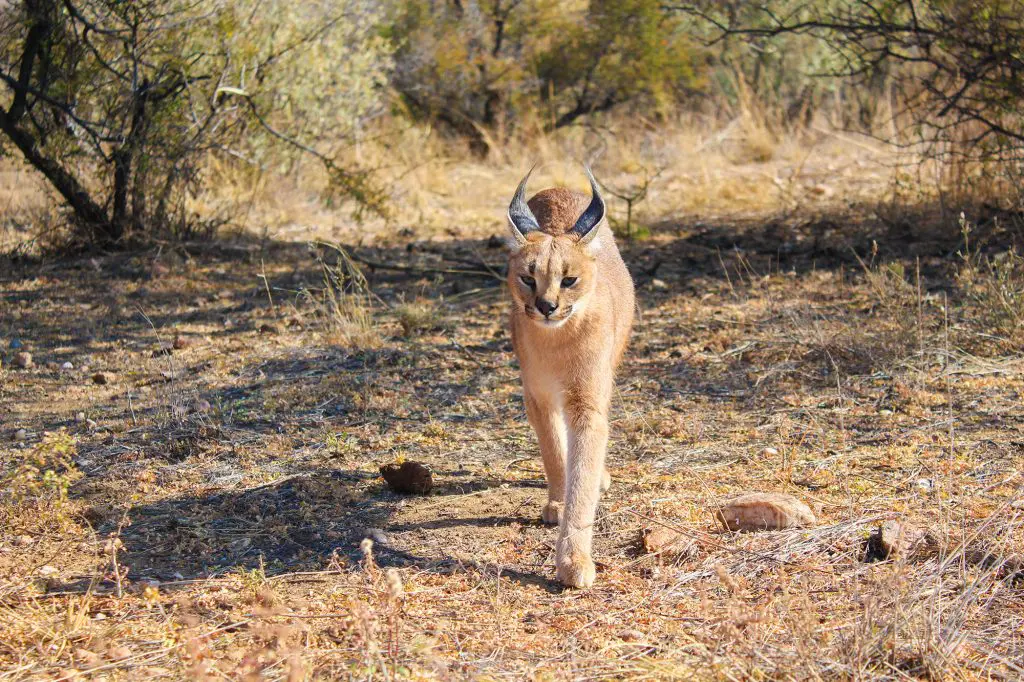
Can I see the Big Five in the Serengeti?
You certainly can, but consider yourself lucky if you do spot a rhino as they are extremely rare in the Serengeti as in many game parks in Tanzania and other parts of Africa.
You can however, have a chance of seeing a rhino in the nearby Ngorongoro Crater.
You’re bound to see the other four species of the Big Five, which consist of lion, leopard, elephant and buffalo, on most game drives.
Despite being plentiful, the secretive nature of leopards however does tend to make sightings of these majestic cats, somewhat difficult but is a real treat.
I have personally seen four of the Big Five in Serengeti. I’ve seen more elephants, buffalos and lions than I can count, and have been lucky enough to see four individual leopards to date, including three leopards in one single day.
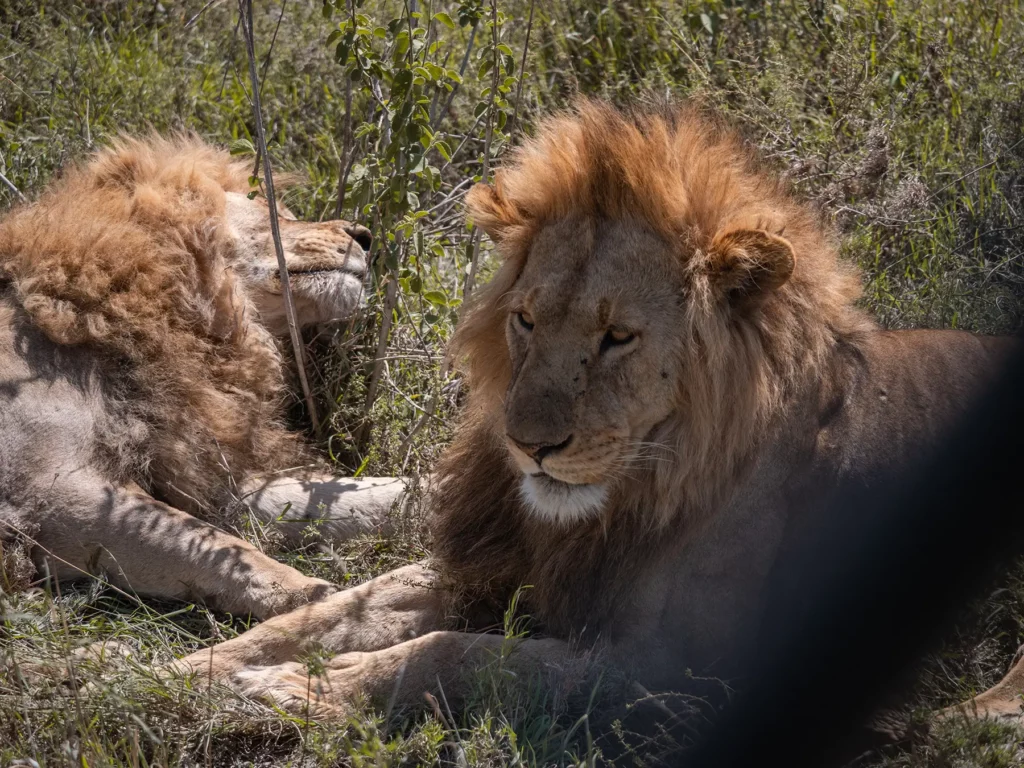
Is Serengeti Good for Birdwatching?
With over 500 species of birds found at various times of the year in the Serengeti, you bet your life that Serengeti is good for birdwatching! So yes, bring your binoculars and zoom lenses along and prepare to be mesmerised.
Easily recognisable species include the majestic fish eagle, whose haunting cries are bound to raise a smile anywhere, the giant ostrich, the half-eagle half-crane secretary bird and the elegant flamingo, of which very few people are aware of its spectacular migrations.
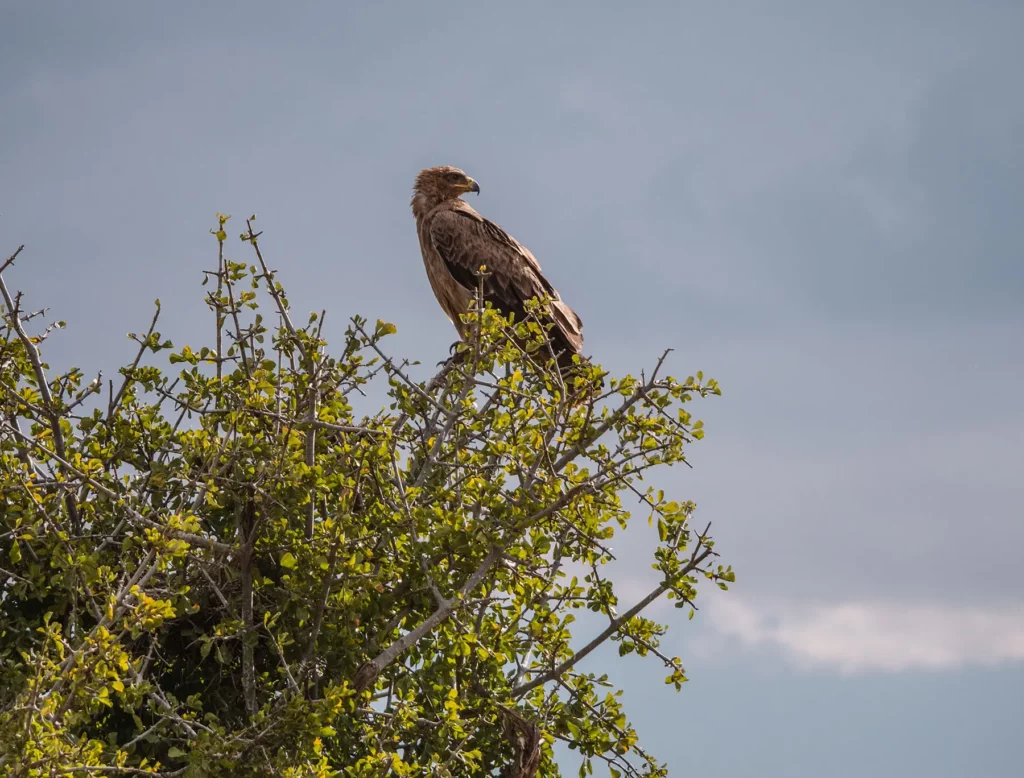
Witnessing thousands of densely packed flamingos feeding with their heads upside down in the shallows, virtually turning the entire lake pink, or seeing them all take off in one spectacular pink cloud, is something to behold, even for non-birders. These fragile looking birds can be found across almost every region of the Serengeti. Basically, where there’s water, they will be flamingos
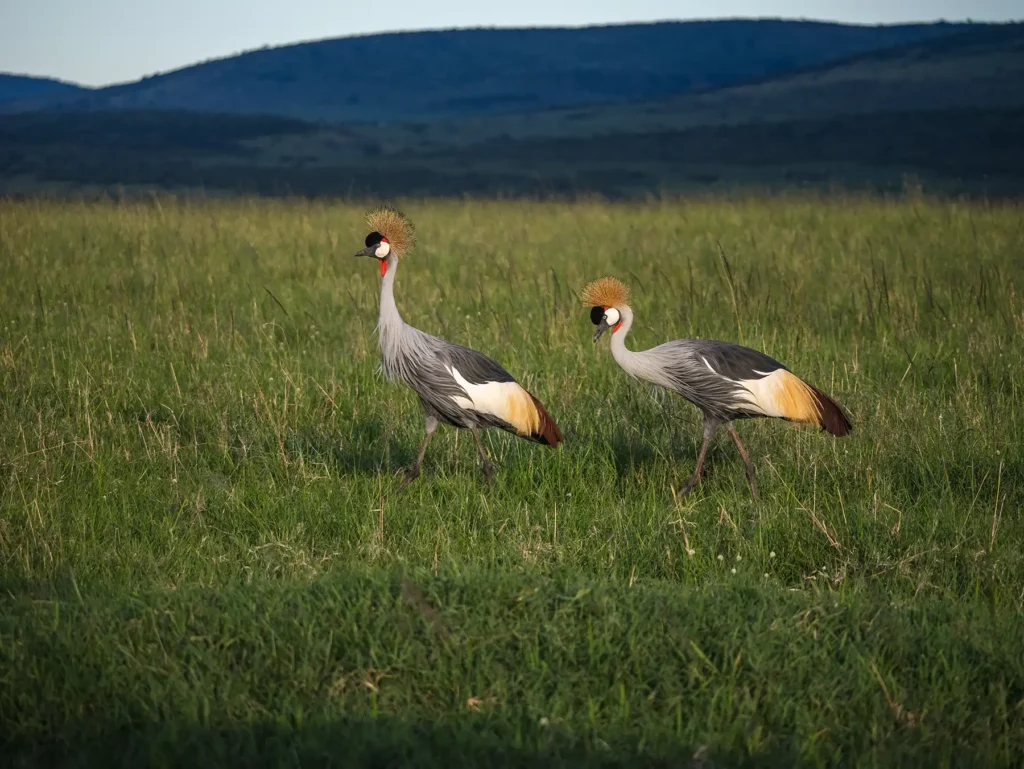
Although there are more than enough bird species all year round, the best time to visit the Serengeti for birding would be between November and April. This is the time when millions of migratory birds arrive from Europe to escape the harsh winters, and it is also the courting, nesting, and breeding time for many endemic species. During this exciting period, certain species put on extravagant courtship displays, dressed in their brightest plumage to attract their mates, also drawing avid birders, photographers and documentary film makers from across the globe.
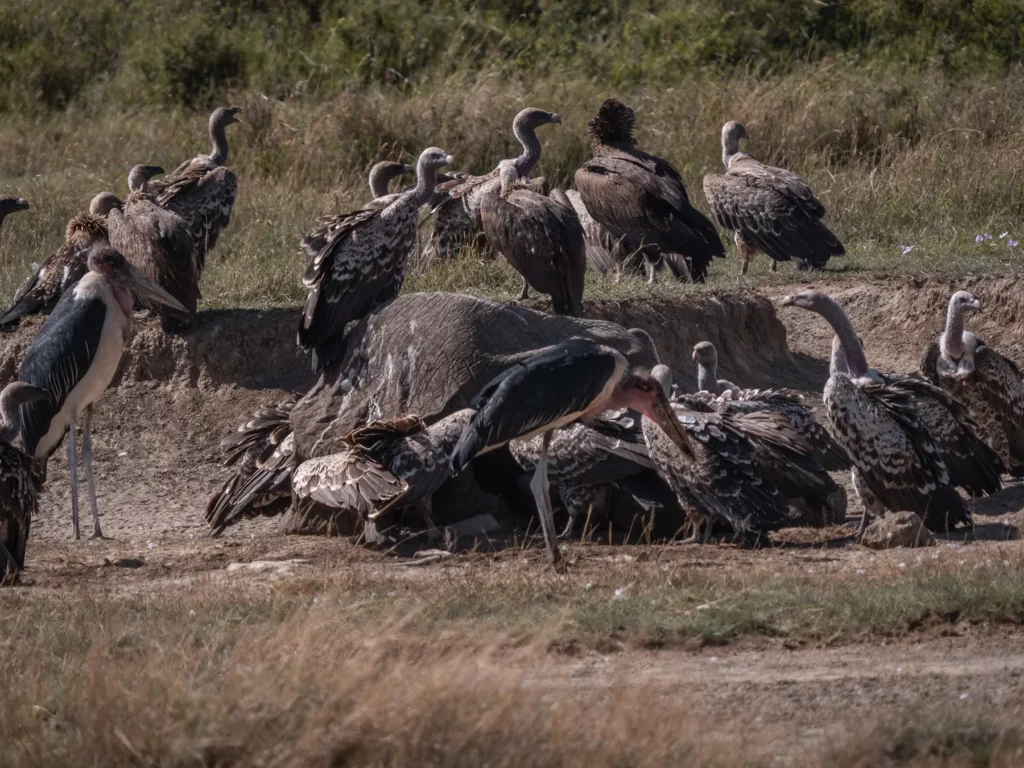
The Serengeti also boasts of having five endemic bird species which means that they are found nowhere else on earth. These include the grey-breasted spurfowl, which is usually found in the open savannahs around the Seronera district, the brightly multi-coloured Fischer’s lovebird, which prefers dense woodlands and the Usambiro barbet, which is endemic to the northern parts of the Serengeti. Sharp eyes are needed to spot these characters as they blend in so perfectly in their preferred habitat of grass and shrub land.
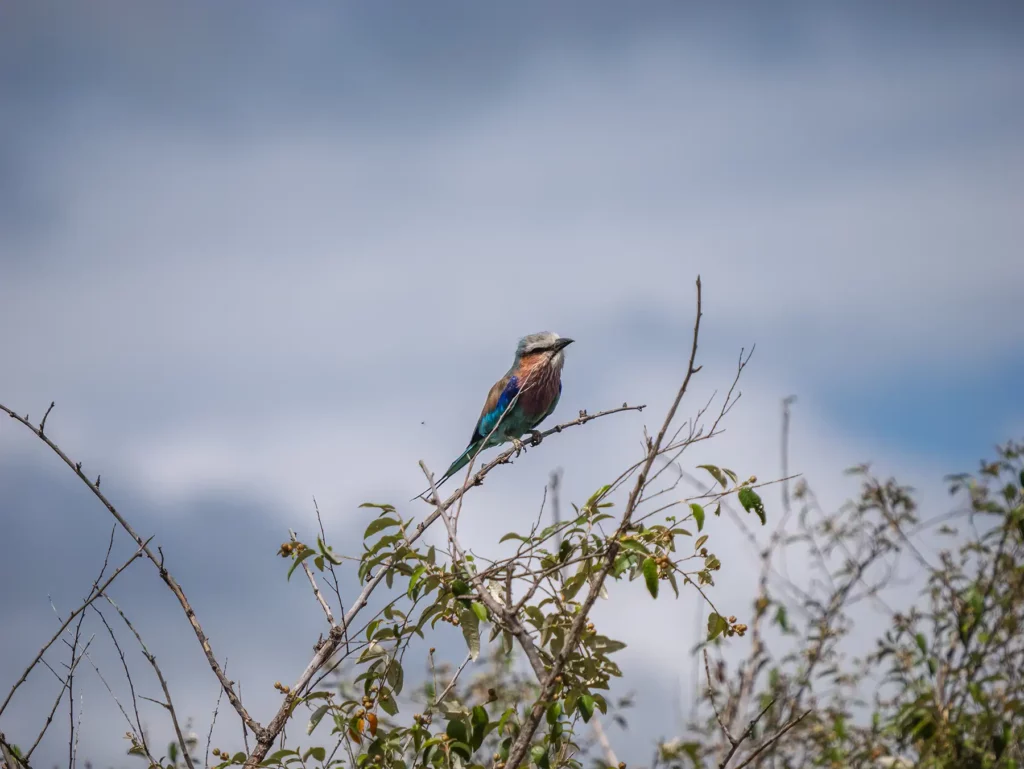
Even when you’re on safari looking at animals, you cannot avoid noticing some symbiotic relationships between birds, animals and even humans. One such example is the relationship between the common oxpeckers and a range of animals. They are often seen riding on the backs of buffalos, rhinos, elephants, zebras and other species, picking off ticks and other insects, ridding their hosts of these irritating blood-sucking parasites.
Another example is the hyenas and other opportunistic predators and scavengers, who are constantly scanning the skies for circling vultures, a sure tell-tale sign of a ready-made meal lying somewhere beneath them.
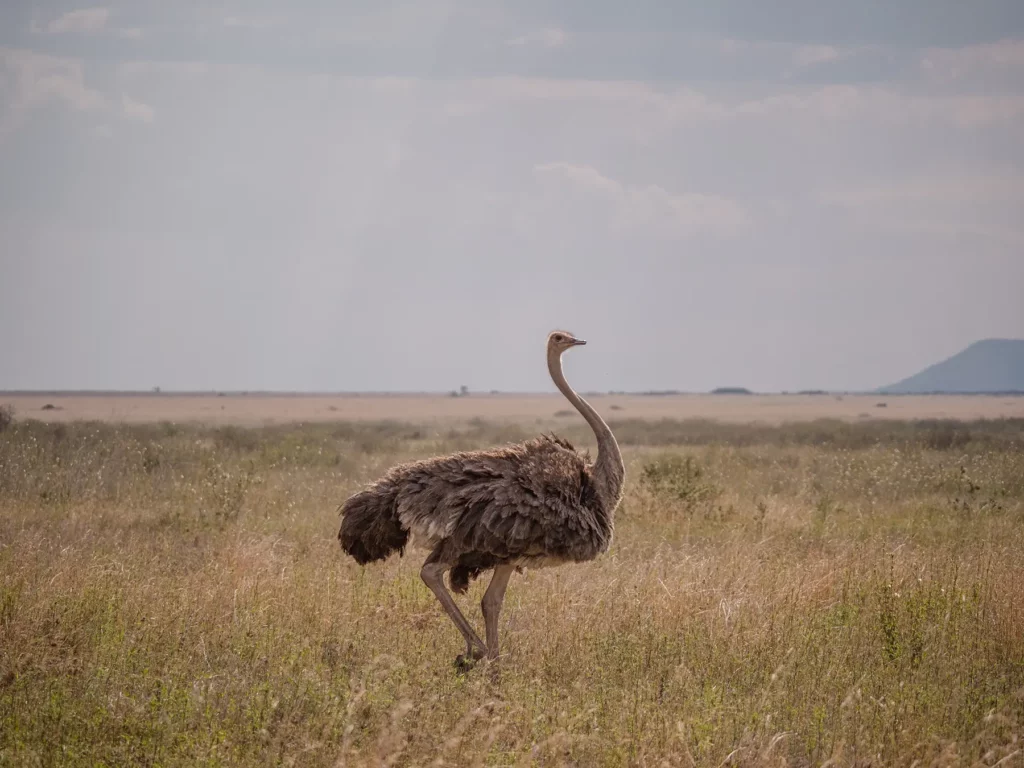
Wildlife Conservation in the Serengeti
Although the abundance of wildlife was first mentioned by early hunters and explorers in the late 19th century, it was only after the Great Migration was witnessed and recorded in the 1920s that the importance of conserving this vast pristine African wilderness was recognised. The process began in 1930 with a small section in the south-eastern region being declared a game reserve, although hunting was allowed to continue until 1937.
It took another 14 years before the Serengeti National Park was officially established in 1951. Since then, the park’s boundaries have been amended several times and is incorporated within the Serengeti Ecosystem, which includes several neighbouring conservation areas from the Maswa Game Reserve in the south to the Maasai Mara National Park across the Kenyan border. To allow the free movement and migration patterns of the animals, the entire area remains unfenced.
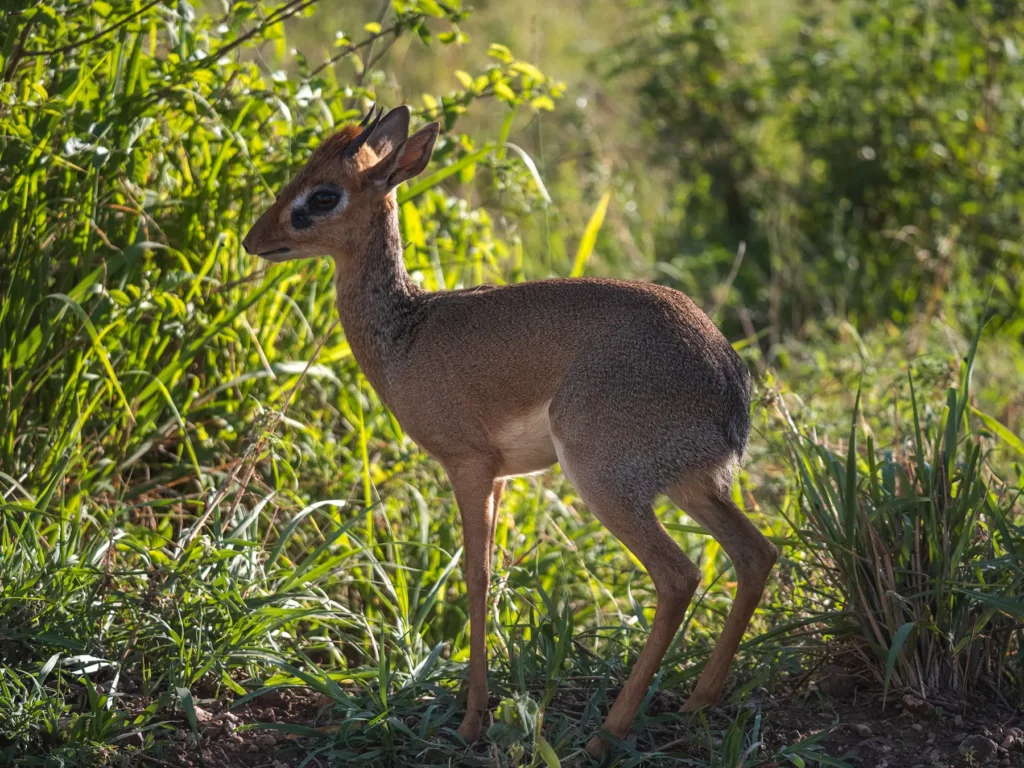
That however, was not achieved without the assistance and dedication of numerous conservation bodies and individuals over the decades. Challenges, such as cultural land ownership, poaching, bad farming practices, deforestation and land degradation continue to this day.
Although tourism contributes hugely to the country’s economy and the creation of jobs, the upkeep of parks and the health and well-being of the wildlife, as well as over-tourism also impacts the environment upon which everything depends.
Finding solutions to deal with such problems, while ensuring the integrity of the environment and conserving it for future generations, is no easy task and no government alone can afford or cope with such challenges.
Fortunately several non-governmental organisations have joined the effort and are doing sterling work behind the scenes. That however requires funding, most of which stretches way beyond the government’s capability. Some of these organisations focus on specific areas of the ecosystem, or on the protection or well-being of a particular species or group of animals.
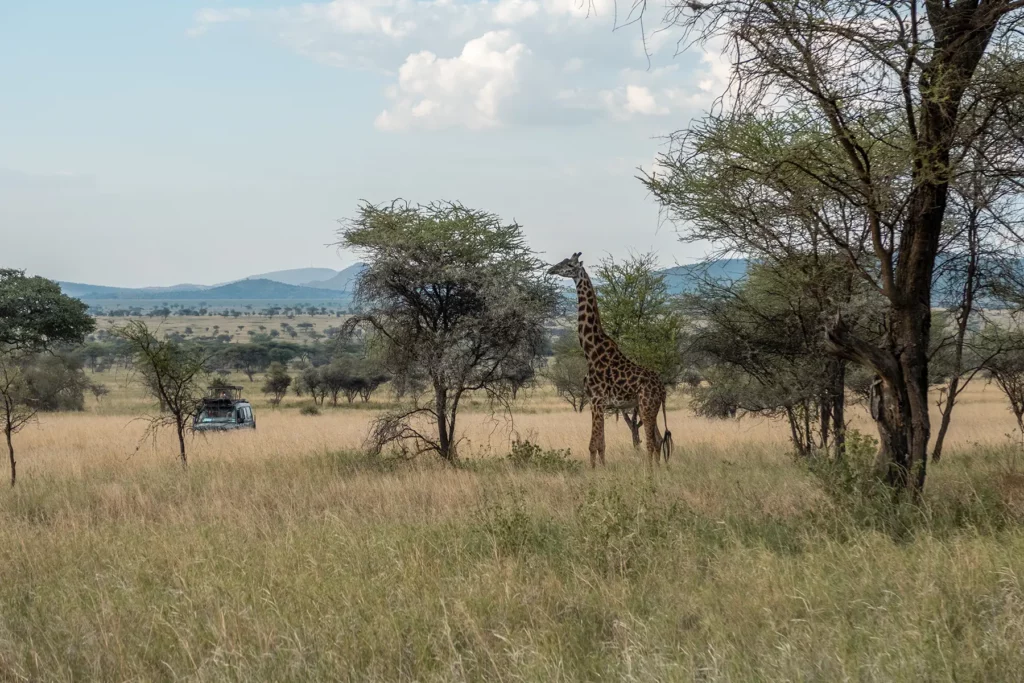
One such organisation is the Grumeti Fund, which focuses on a number of conservation issues along the Western Corridor, considered to be vital to the survival of many species in the Serengeti.
The Serengeti Preservation Foundation is another organisation which is doing a fantastic job seeking ways of ensuring the welfare of the local population by allowing them to make a viable livelihood while preserving the wildlife that share their environment.
Another worthwhile organisation that regard themselves as ‘The Next Generation of Serengeti Defenders’ is the Global Greengrants Fund. They do not restrict themselves to Serengeti issues only but take on a number of environmental matters across the world.
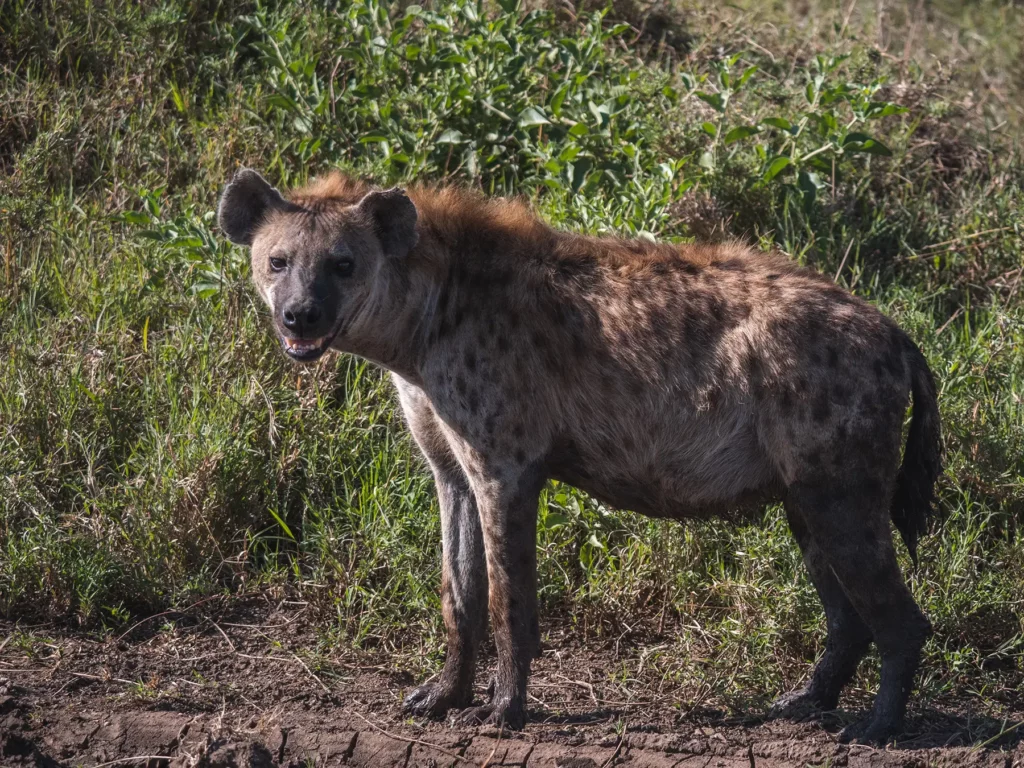
Save Time and Ensure an Incredible Safari Experience
Get quotes from the local safari companies I use to organise my own trips.
You’ll join the rapidly growing tribe of over 1,000 travellers who’ve booked their dream safari using my insider tips and recommendations.
Weather & Climate Serengeti National Park
The Serengeti is an all year round destination for various reasons. Being close to the equator, particularly in the northern regions of the park, there is little temperature variation between summer and winter.
In general, it is usually comfortable but warm all year round, but it can get pretty humid during the rainy seasons.
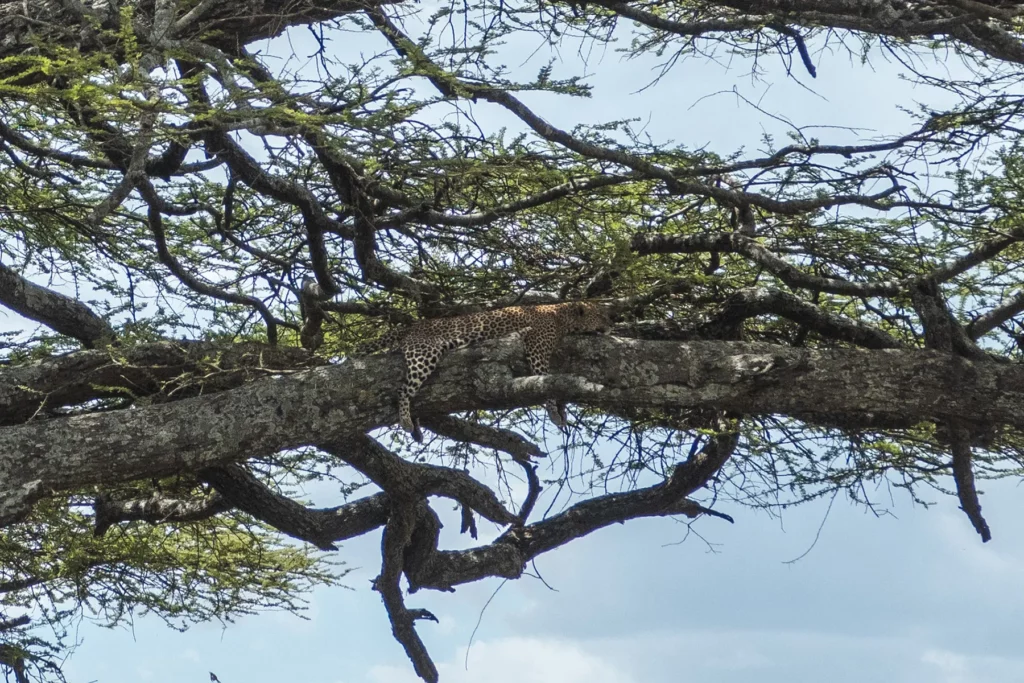
Tanzania has two dry seasons and two wet seasons. Starting with January and February, this is regarded as the short dry season with mild temperatures in the Serengeti areas averaging around 27°C.
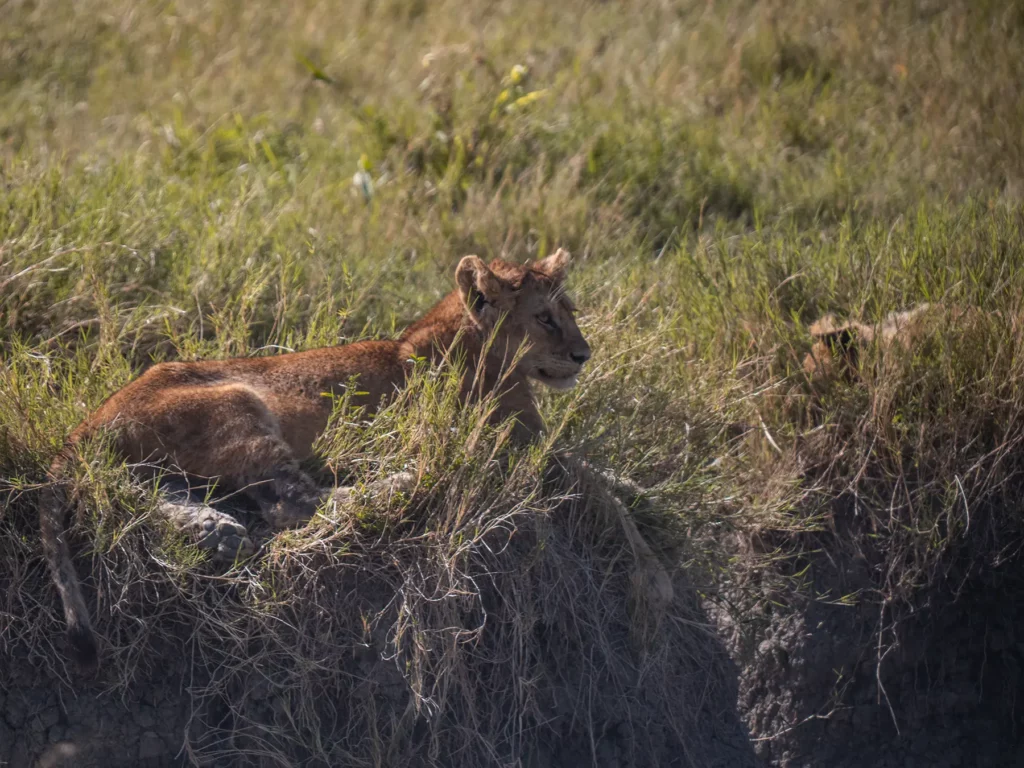
March, April, May is known as the long rains with the mercury dropping to between 17 to 25°C. This is the low tourist season in the Serengeti when prices are at their lowest, but one needs to do some serious research when booking a game lodge, as many lodges close during this period.
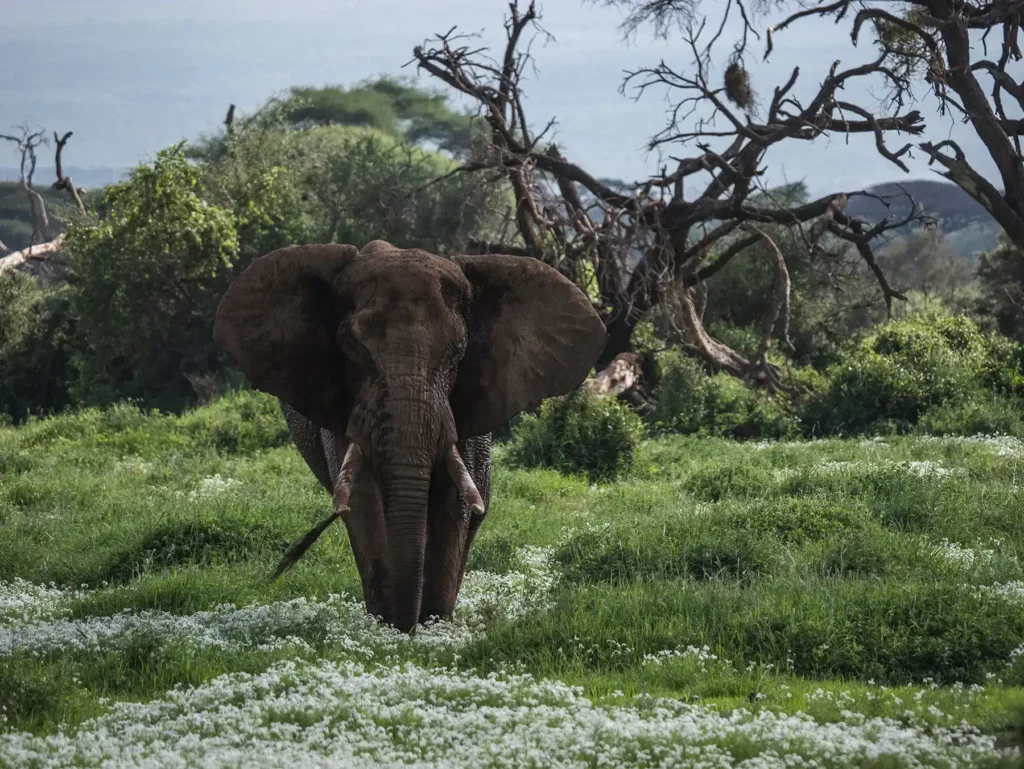
The period between June and mid-October is known as the long dry season when temperatures may vary between 13 to 21°C and there is virtually little chance of rain with loads of sunshine. This is also the busiest season for safari lodges in the Serengeti.

Mid-October to mid-December, the rains return and this period is known as the short rains, lushing and greening the landscape in preparation for the arrival of the thousands of new animal babies in the Serengeti. Temperatures around this time hover around a comfortable 26°C.
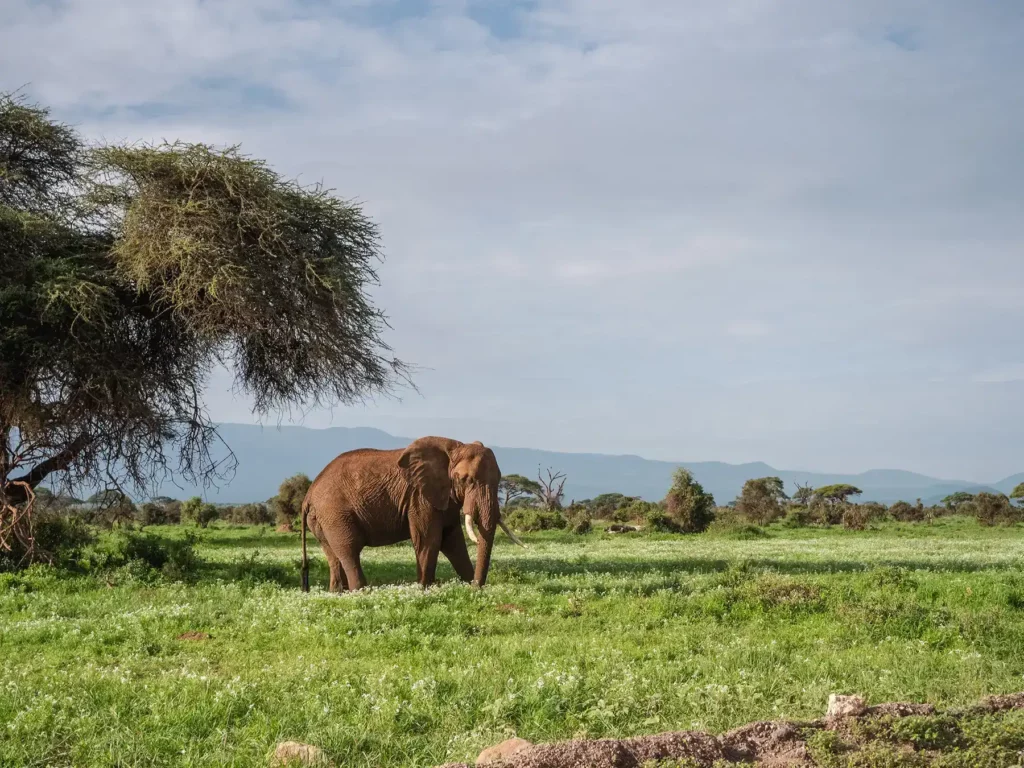
Visiting the Serengeti during this short rainy season is not as bad as some may think. Firstly it seldom rains during the entire day allowing ample time to go on a game drive and witness the wildlife with lush green surroundings as a backdrop. Visiting in the long rainy season is a bit more risky as the rains have become unpredictable in recent years, sometimes causing terrible flooding such as in 2024.
Regardless of the time of year you visit, early mornings and evenings in the Serengeti can get a little chilly, so a fleecy jacket that can be removed later as the day warms up, will be most useful when going on any game drives.
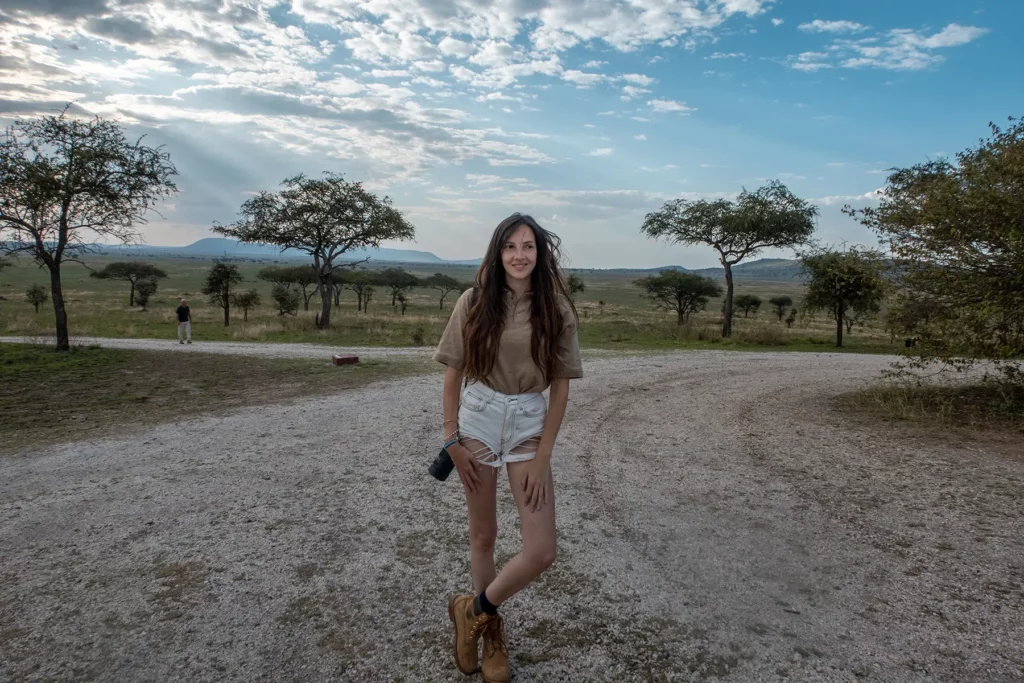
Save Time and Ensure an Incredible Safari Experience
Get quotes from the local safari companies I use to organise my own trips.
You’ll join the rapidly growing tribe of over 1,000 travellers who’ve booked their dream safari using my insider tips and recommendations.
What is the Best Time to Visit Serengeti?
Although the Serengeti is an all year round safari destination, as far as viewing its magnificent wildlife goes, the best time to visit would be during the long dry season, which is from June to September. During this period the grasses are short, the foliage is sparse and the animals congregate around the rivers and water holes, making them easier for visitors to spot.
The Great Wildebeest Migration is also in full swing during this period in the northern regions. The weather is usually great with little chance of rain, which means fewer mosquitos, thus reducing the risk of contracting malaria substantially. The downside to that is that this is the high tourist season and parks tend to be crowded and prices of accommodation and tours are at their highest.
Below I’ve ranked each month in Serengeti National Park.
- Excellent
- Good
- OK
- Poor
The infographic below shows what you can expect in each month.
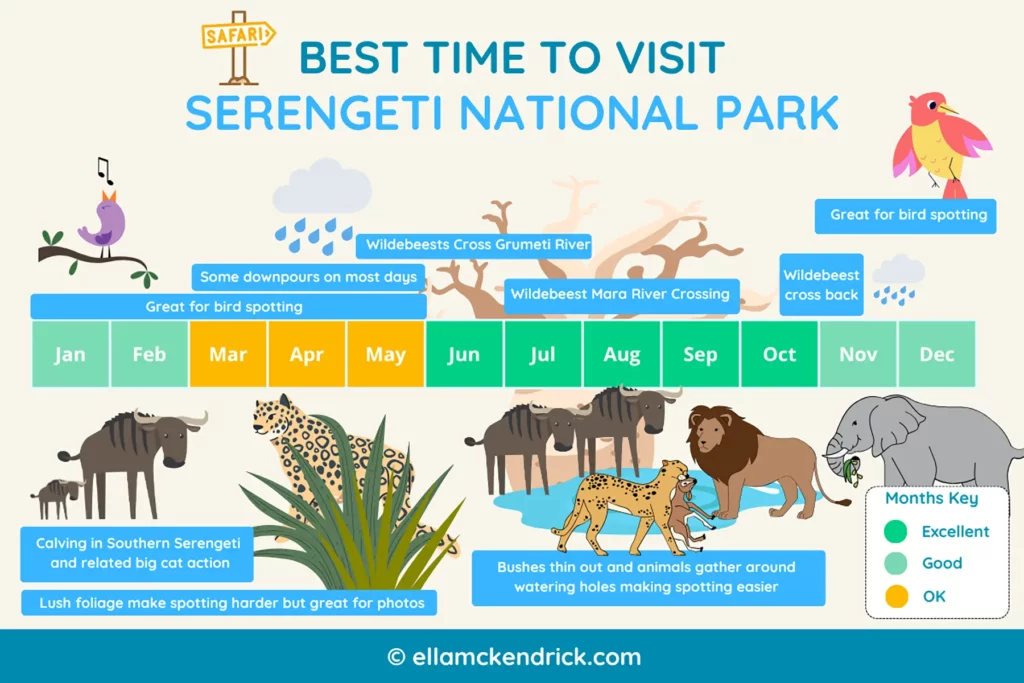
But then again it all depends entirely on what you want to see and experience, as each month has something different to offer. For instance, January and February, which form part of the short dry season, are excellent for seeing loads of baby animals, especially in the southern regions of the Serengeti. This brings out large numbers of big cats and other predators, providing visitors great opportunities to witness a kill.
Photographers will be in their element during this time as the landscape would still be lush and vibrant green from the previous rains, hours of daylight are at their maximum and lighting conditions would be at their very best. Good strong light permits the use of faster shutter speeds, which is essential in capturing that sudden magic action shot.
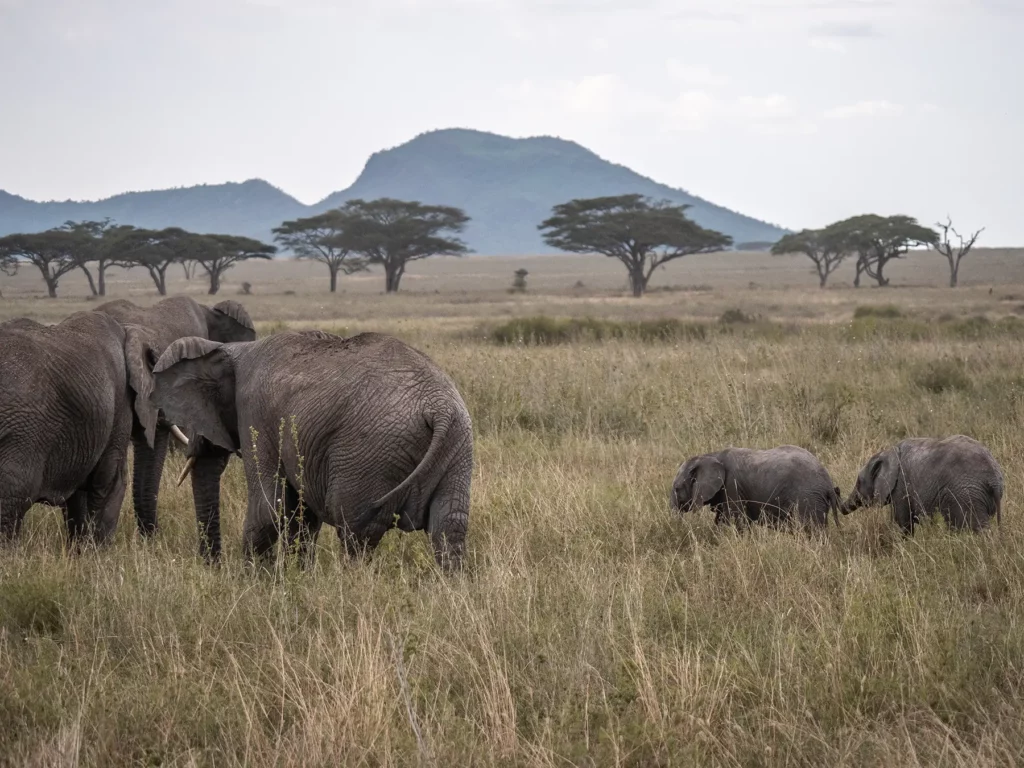
January and February is also the best time for bird enthusiasts, as it coincides with the arrival of many European migratory birds such as ospreys, white storks and barn swallows.
March and April is springtime in the Serengeti and love is in the air for many birds as they display some really entertaining courting rituals in the canopies. Parks are also not as busy and prices are more affordable.
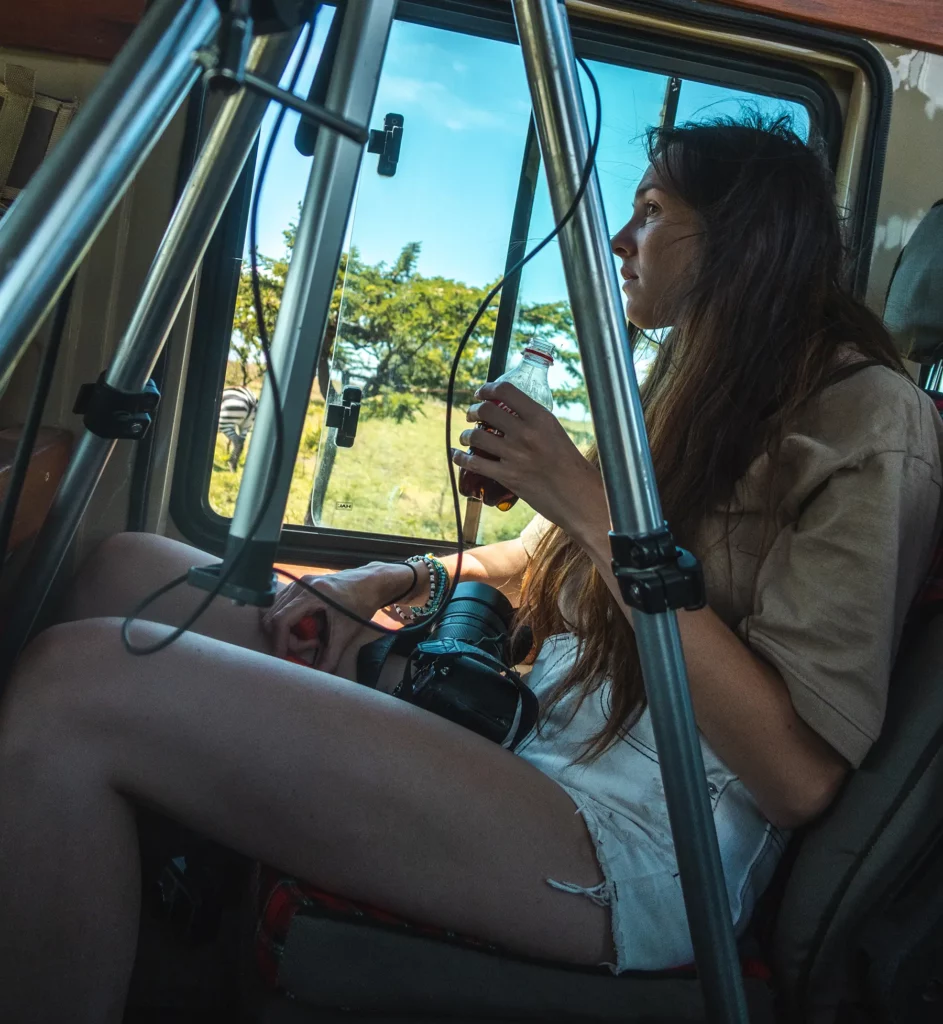
Is Serengeti Crowded?
If you consider a few hundred game vehicles within an area of 14,763 square kilometres crowded, then yes, Serengeti can get a little crowded during the high season. But fortunately, the vastness of this park provides numerous opportunities to find secluded spots to view the wildlife in complete isolation, often without seeing a soul for miles. Experienced safari operators know their way around the park and can take you to many such remote spots, particularly in the northern regions of the Serengeti.
To have a little more peace and quiet you may wish to consider visiting outside of peak season. Between October and mid-March is a great time to visit as the weather is mostly good but there are slightly less people.
If you want to escape the crowds completely, you could visit the Serengeti during the wet season, from March to May. However, visiting at this time of year is a bit of a gamble as its the long rainy season and flooding could occur.
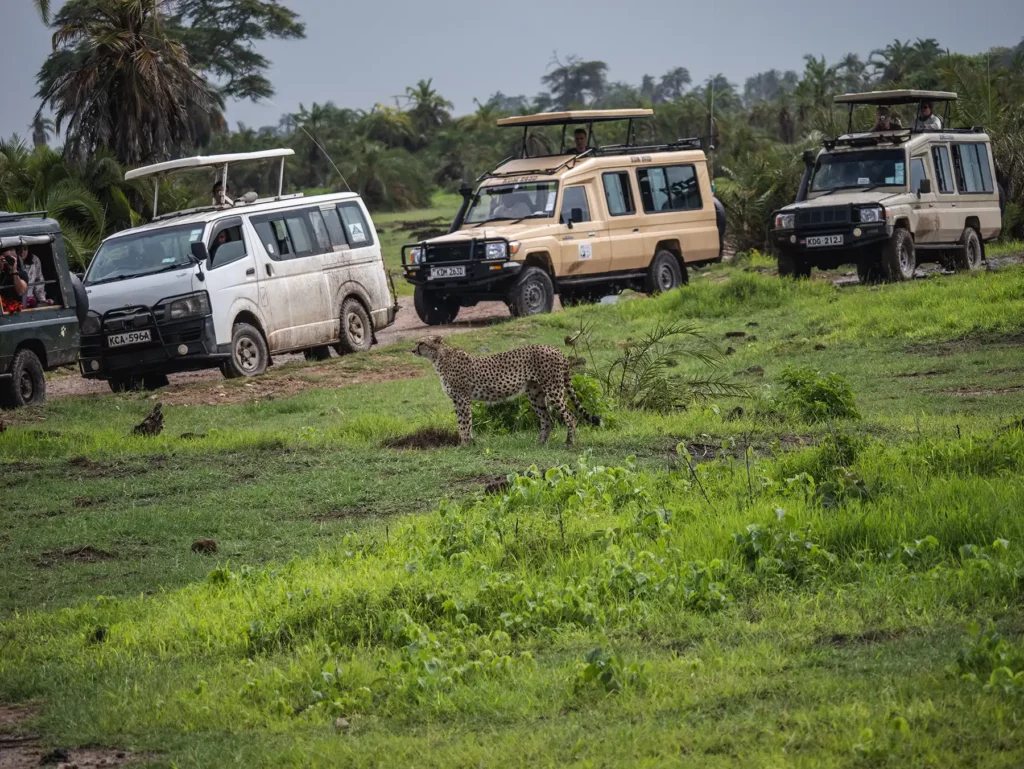
Save Time and Ensure an Incredible Safari Experience
Get quotes from the local safari companies I use to organise my own trips.
You’ll join the rapidly growing tribe of over 1,000 travellers who’ve booked their dream safari using my insider tips and recommendations.
How Many Days Should I Spend in Serengeti?
How many days you should spend in the Serengeti, may depend on what you have come here to see and experience.
When you consider how much money you have spent getting to Tanzania in addition to the fact that you have probably spent the better part of a full day to get to the Serengeti from the airport, it would be a sin to leave before getting a real taste of what it has to offer.
If you’re just wanting to view the wildlife, the barest minimum would be at least two nights to give you one full day on a game drive. But even then, you would be leaving without seeing all that the Serengeti has to offer.
A minimum of three nights would be a little more ideal, giving you more time to split your time between the central and northern sections of the Serengeti. This may be more rewarding if the wildebeest herds are already in the north.
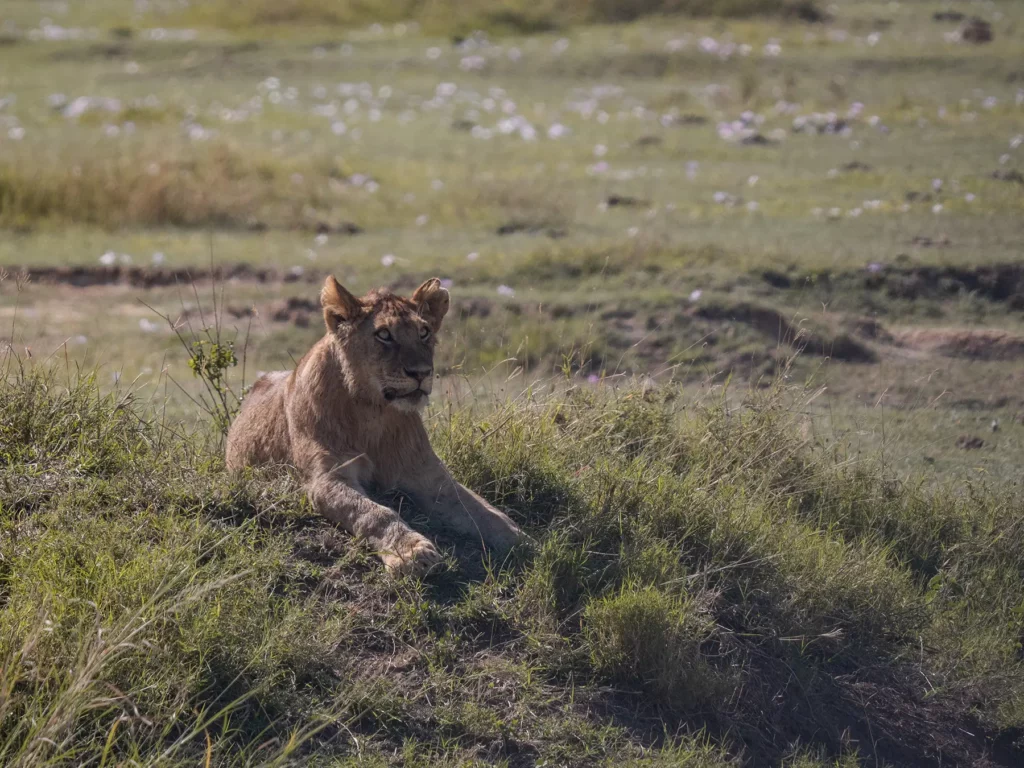
Bird enthusiasts may require to spend a little more time, visiting different ecosystems to view a wide variety of birds that exist in the Serengeti.
Photographers may require even more time again to truly capture the mood and ambience of this wilderness, during the various times of the day.
One thing that you can be assured of, is that not one day will be the same as the next as on every drive, you’ll witness something different.
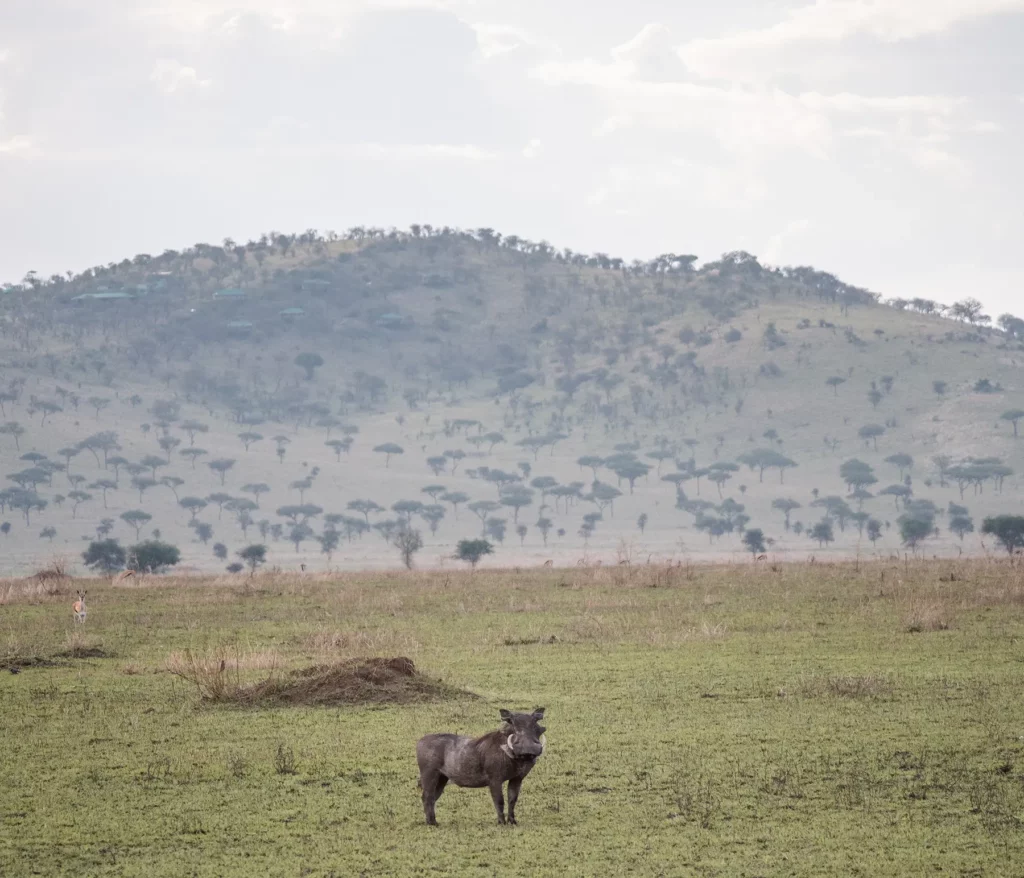
Serengeti Safari Areas
Serengeti is divided into different sections, with each area having a slightly different climate and landscape as well as densities of various animal species.
Deciding which part of the Serengeti to base yourself in can feel like a big decision so we’ll dive into the benefits of each one as well as the best times of year to base yourself in each.

You can jump to each of the areas using the links below.
Seronera & Central Serengeti
The Seronera region and Central Serengeti landscapes areas are dominated by vast open plains with gentle sloping hills, rivers, waterholes and small rocky outcrops, which provide great lookout points for predators.
This area is known for its high number of lions, leopards and cheetahs and also being on the migration route, makes it one of the best safari destinations in the Serengeti.
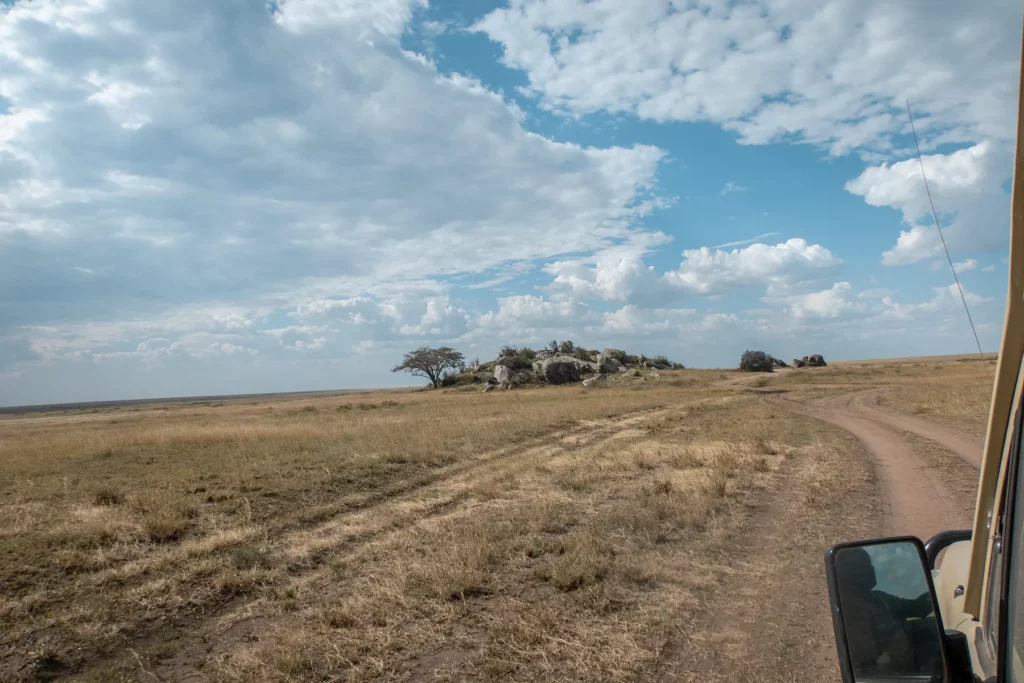
Other animals commonly found in this region include elephants, giraffes, buffalos, hippos, crocodiles, zebras, wildebeest, Thomson’s gazelle, impala and various other buck and bird species.
Although the Great Migration does play a role in the numbers of some species found at certain times of the year, there are more than enough resident species that hang around here all year round.
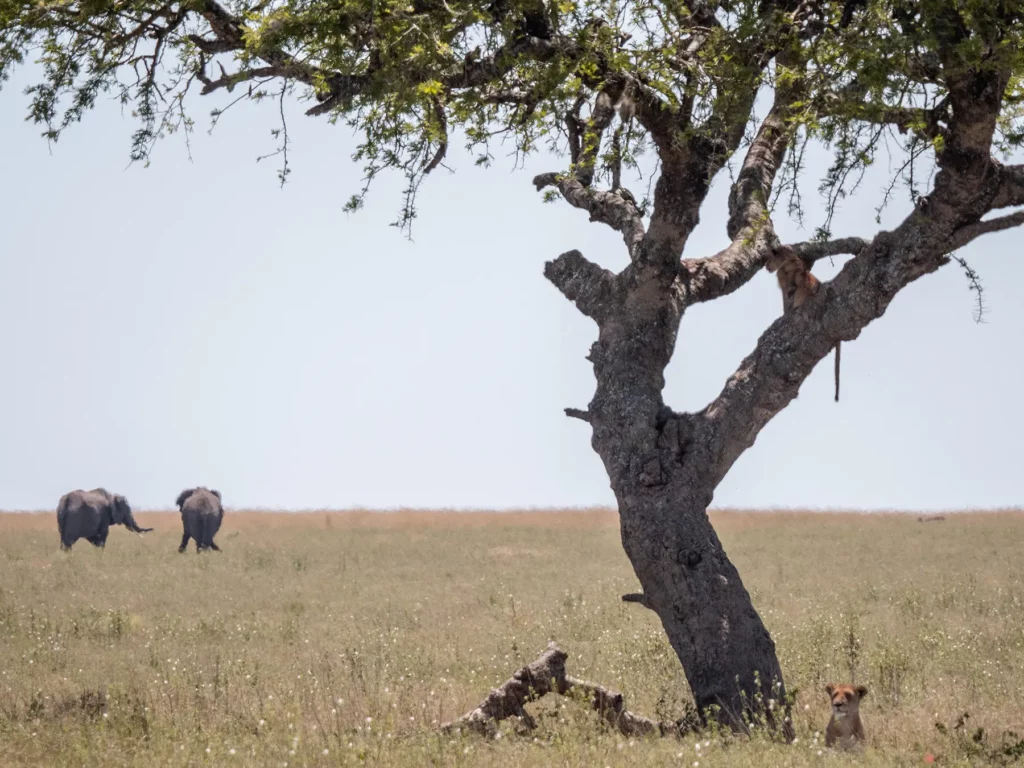
The best time to visit however, would be during the long dry season (June, July, August and September) when the weather is sunny and the wildebeest are passing through.
In the Seronera district, October and November are also good as it coincides with the returning herds.
The Seronera airstrip in the heart of Central Serengeti provides easy access to the region. Flights from Arusha and other key areas run here several times per day.
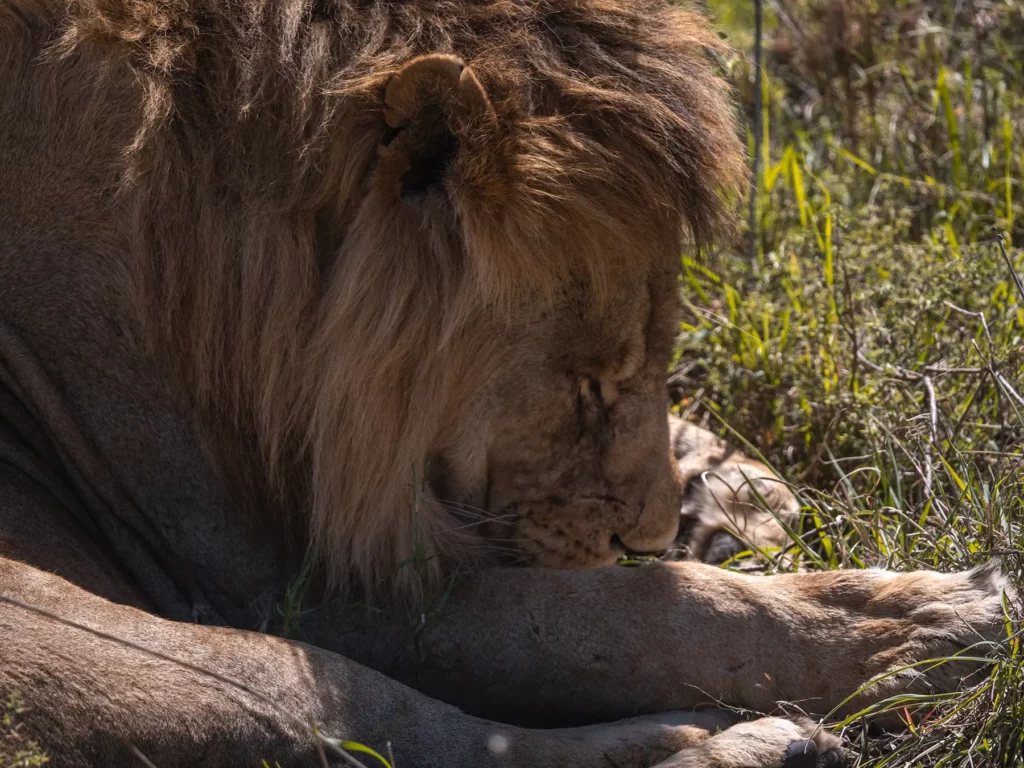
Southeast Plains & Ndutu
The southeast plains of the Serengeti also consist of vast open grasslands with much of the area being almost treeless due to the hard volcanic soil. This area is teeming with many herbivores such as wildebeest and zebras, which in turn attract an unusually high number of big cats, particularly around Lake Ndutu.
The sparsely wooded surrounds of the lake provide refuge and shelter for numerous other animals and a wide range of bird species.
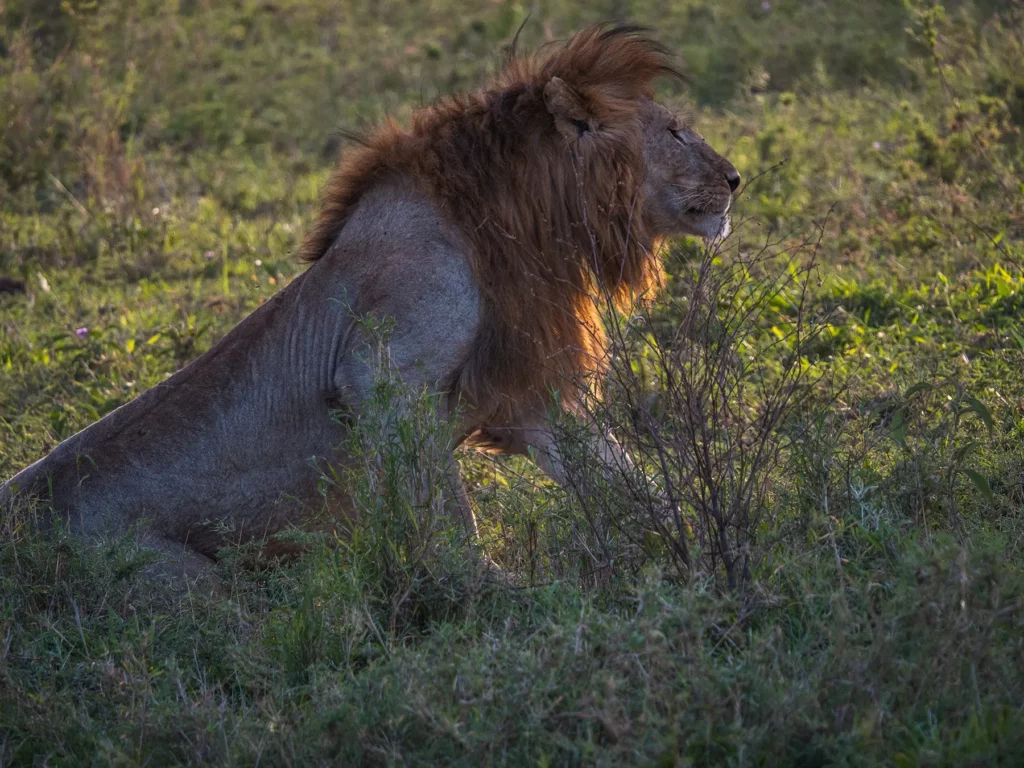
January and February are regarded as the calving months in this region when over 8,000 wildebeest alone are born each day in this area. This draws loads of big cats to the area providing much excitement and action.
For those wanting to avoid the tourist masses, a good time to visit this area would be from around April to May and onwards. Although the herds have left on their annual migration, the remaining wildlife is still abundant with the drying vegetation and short grasses making the spotting of game far easier.
A wide range of lodges dot the southeast plains and around Lake Ndutu, providing a multitude of safari options.

Western Corridor
As the name suggests, the Western Corridor lies on the western region of the Serengeti and is defined as a thin 20 kilometre strip of terrain between the Mbalageti and the Grumeti Rivers which run parallel for about 100 kilometres in a western direction towards Lake Victoria.
This landscape is more densely wooded than the southern regions with miles of lush forests lining the banks of both rivers.
There are also vast open grasslands, which provide the perfect feeding grounds for wildebeest, zebras, impalas and other buck and ideal hunting grounds for cheetahs.
Other animals found here include lions, leopards, elephants, and giraffes, tons of bird species, as well as crocs and hippos in and around the rivers.
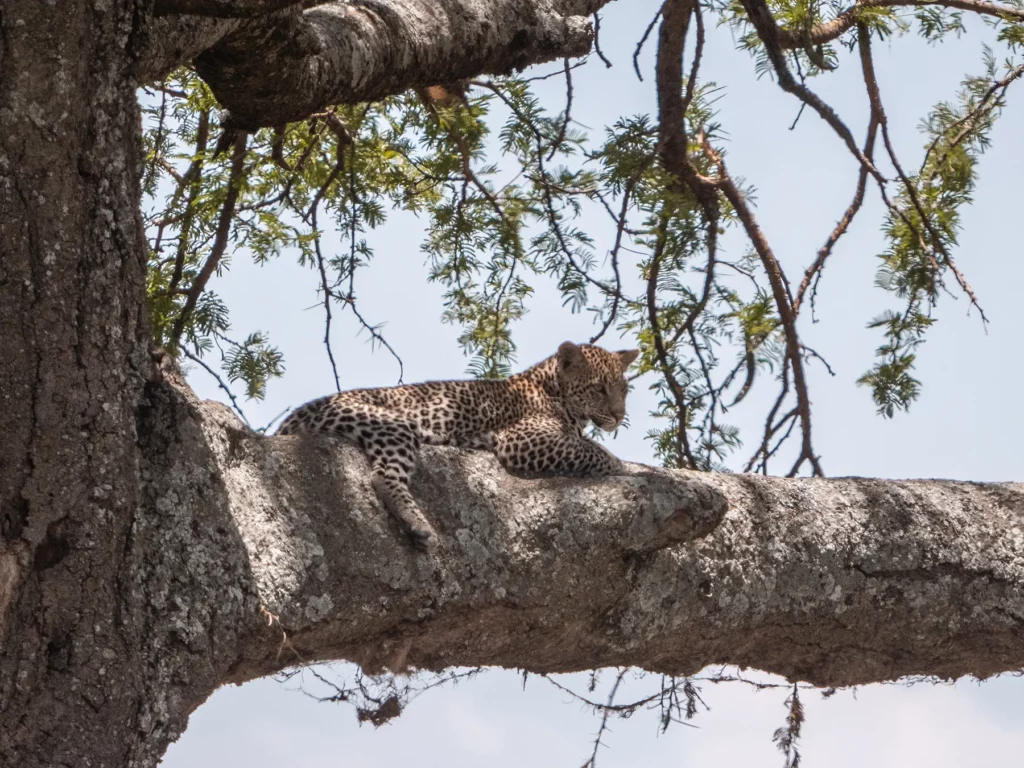
During the Great Wildebeest Migration, this corridor is wall-to-wall with animals of virtually every kind trudging through the landscape. The Grumeti River poses the first big obstacle for the migrating herds, as thousands of eager crocodiles congregate in the main crossing points.
For some reason, this area contains some of the biggest Nile crocodiles you will ever see anywhere on the entire continent. During the dry season they remain in the shallow water pools in the river and may have not eaten since the previous migration a whole year ago. I suppose you could say that they would be quite eager for the herds to arrive.
There are not a lot of permanent lodges along the corridor, with a few mobile lodges popping up during the migration months, but they are mostly around Seronera.
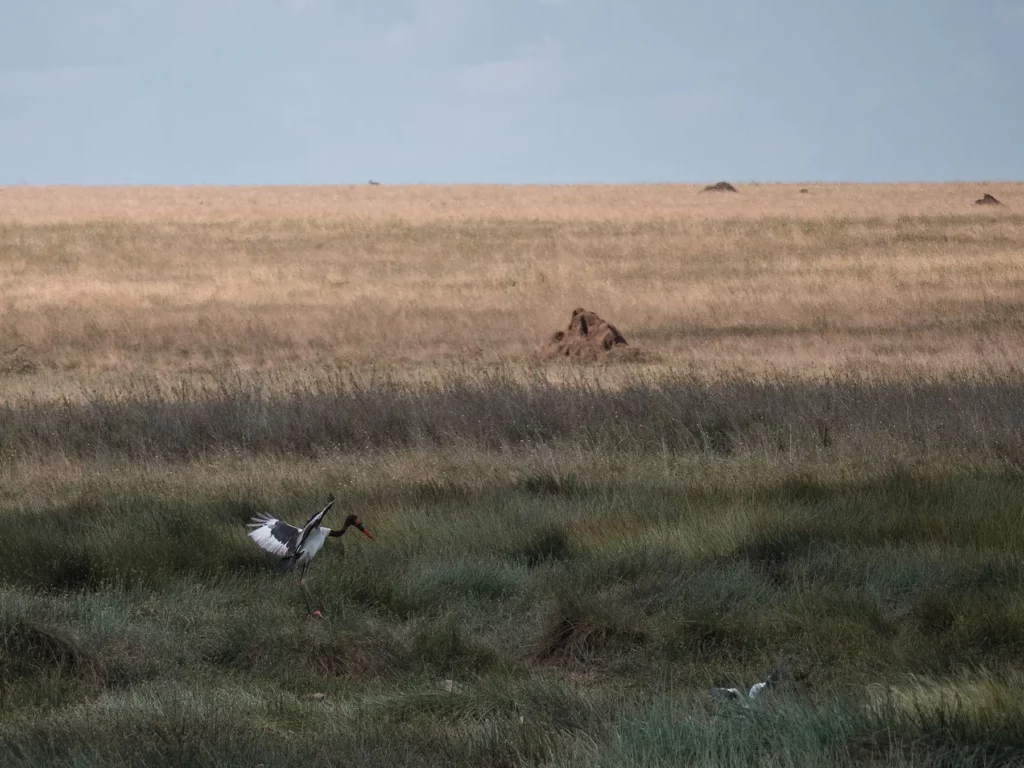
Grumeti Game Reserve
Situated along the Grumeti River in the remote western sections of the Serengeti, this game reserve places limits of only 60 guests at a time and has only a few lodges. This provides visitors a perfect opportunity to experience the Serengeti in almost total isolation.
All the usual animals found in the Serengeti can be seen here all year round, including large prides of lions, cheetahs, elephants, giraffes, zebras and wildebeest.
Its close proximity to the Grumeti River makes it an excellent spot to witness the migratory herds crossing the hippo and crocodile-infested river, without being swamped by other safari vehicles.
This spectacle takes place around May, June and early July, which is possibly the best time of the year to visit. The lush forest lining both sides of the river is teeming with birds and rare black and white colobus monkeys.
The few lodges in this park offer a wide range of activities and experiences, including night drives and walking safaris, which aren’t possible within the main Serengeti National Park.
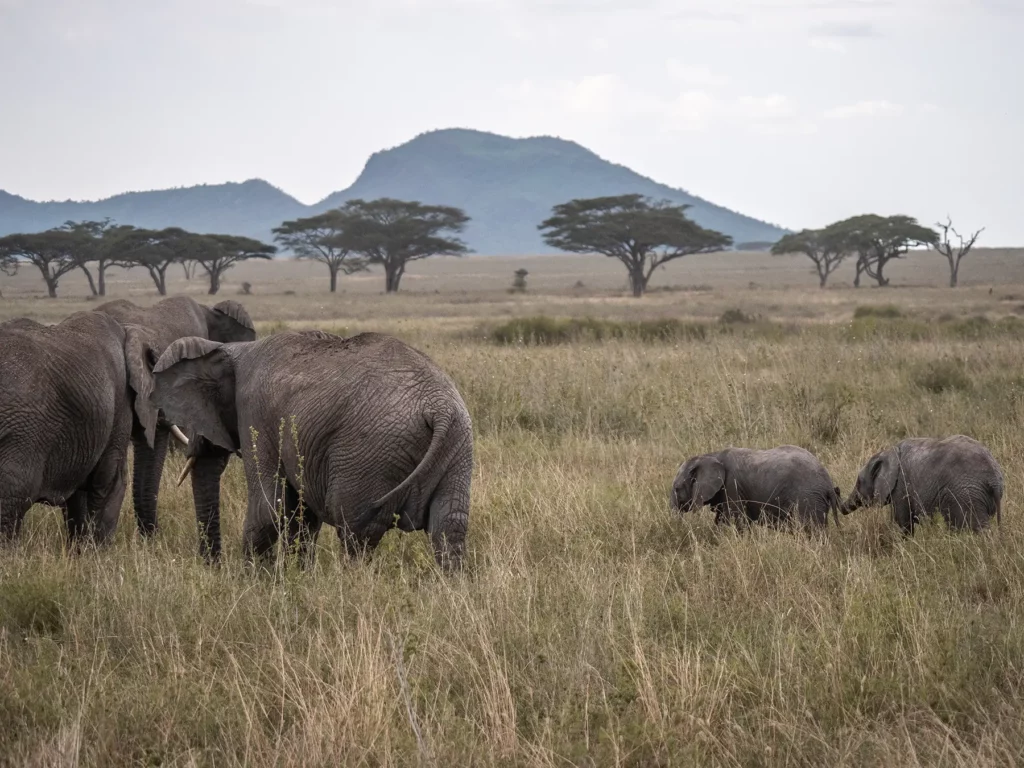
Kogatende & Northern Serengeti
The northern Serengeti is one of the most remote areas of the park. Its landscape has a rich mix of open savannah, rolling plains and far more dense woodlands than the flat plains in the south.
Much of the activity revolves around the Kogatende area where an airstrip provides easy access to the entire region.
The wildlife here is superb, with lions, leopards, cheetahs, spotted hyenas, elephants, hippos, buffalos, giraffes and tons of buck and bird species being common.
But it is when the millions of wildebeest, zebras and antelope pass through on their annual migration, that this place comes alive.
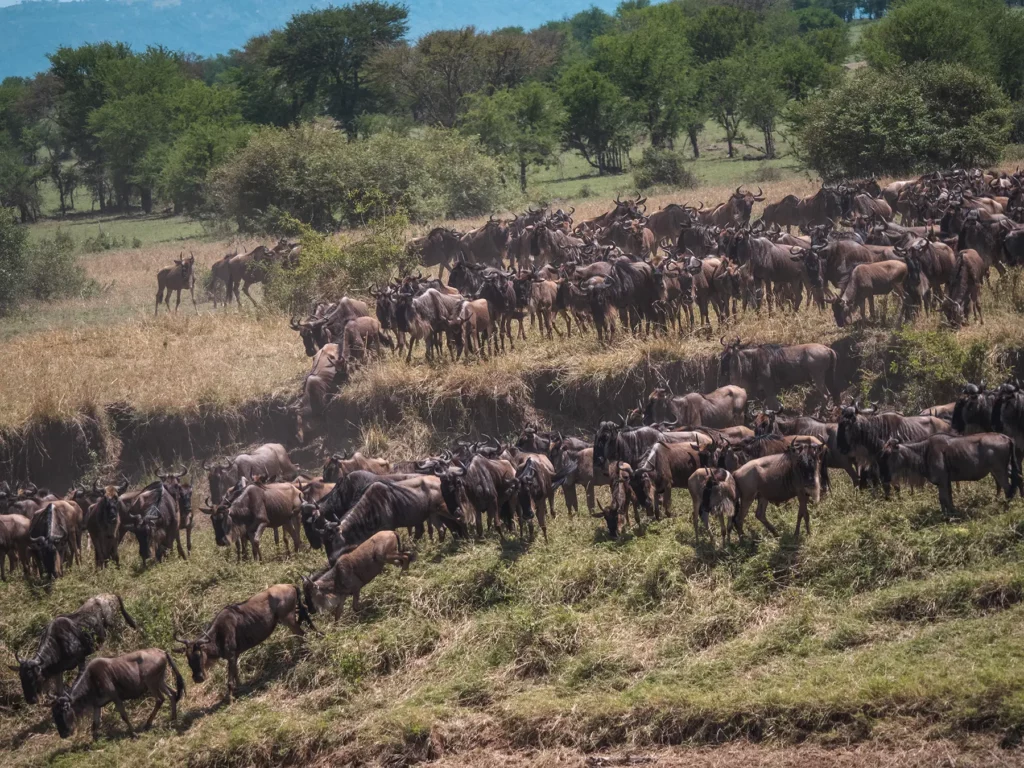
Numerous game lodges and camps are dotted around this landscape, most within a stone’s throw from the infamous Mara River, which the migrating herds have to cross at least twice every year.
These lodges and various safari operators provide their guests ringside seats, taking their positions along known crossing points, on the river banks where thousands of crocs which may not have eaten for months, lie in wait in the rushing waters. This spot provides undoubtedly the most exciting and dramatic scenes along the entire 1,000 kilometre circuit of what’s often dubbed as the ‘Greatest Show on Earth’.
The best time to visit the northern Serengeti to witness this spectacle is between August and October.
My all-time favourite month to visit Tanzania as a whole is September. The wildebeest are typically still crossing the Mara River, the weather is still great with little chance of rain, the tourist crowds have begun to thin out and accommodation and safari prices are a little lower.
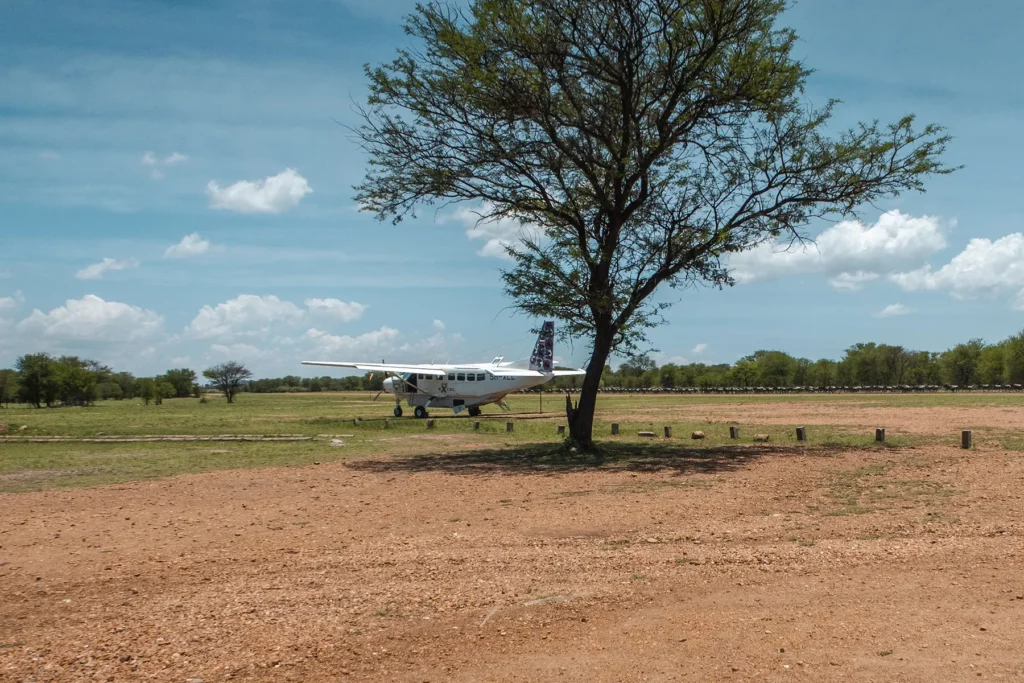
Save Time and Ensure an Incredible Safari Experience
Get quotes from the local safari companies I use to organise my own trips.
You’ll join the rapidly growing tribe of over 1,000 travellers who’ve booked their dream safari using my insider tips and recommendations.
Best Lunch Spots in Serengeti
The most popular way to enjoy lunch in the Serengeti is to tuck-in to a picnic lunch at one of Serengeti’s many picnic sites. However, there are other options available such as visiting a nearby lodge for a memorable hot lunch.
Below I have outlined the available options and best places to enjoy lunch.
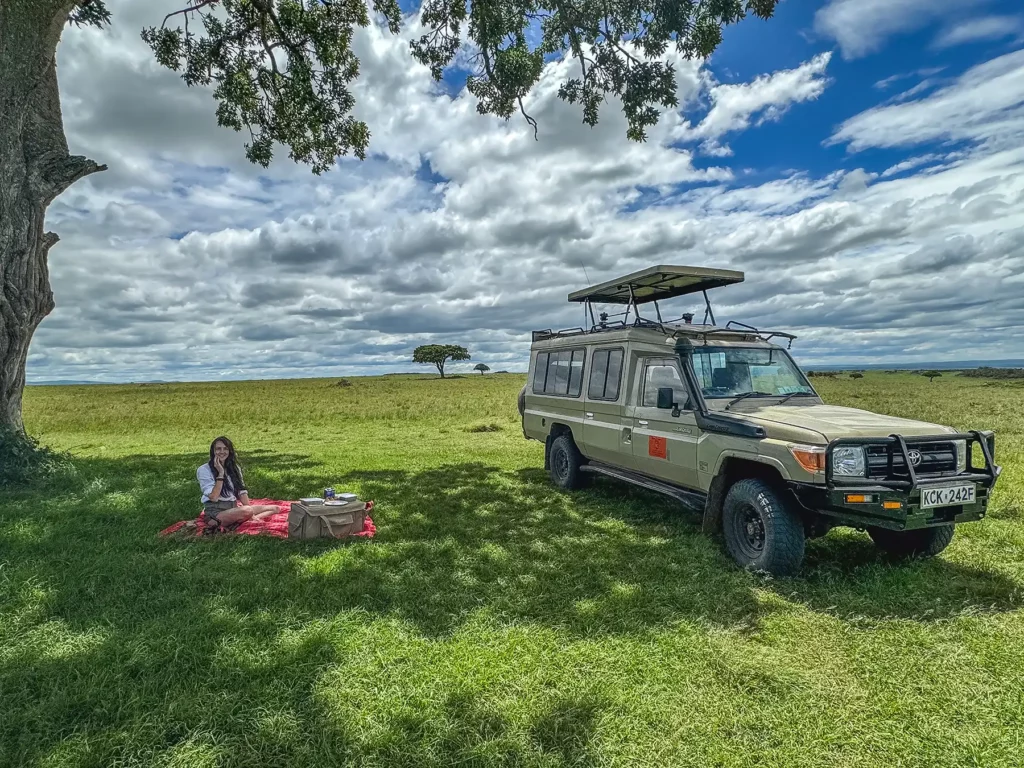
Picnic Sites
While some safari operators offer meals at selected lodges, most provide ready prepared lunch boxes and snacks or even hot lunches for their safari clients which are included in their packages.
A packed lunch is great as often lodges and tented camps are a bit of a drive from the main viewing areas and so it would be inefficient to journey back to your lodge or camp for lunch.
There are instead a handful of picnic spots within the heart of Serengeti’s prime viewing areas. Below I have listed the key sites, although there are a number of smaller ones dotted throughout Serengeti.

Naabi Hill Gate
Located at the southeastern entrance to Serengeti National Park, Naabi Hill Gate is the main gate that visitors use to enter the park. It’s a great place to enjoy a picnic lunch, countless wooden tables strewn out in between a visitor centre, gift shop and ablution facilities.
Visitors often dine at this picnic site when journeying either to or from Serengeti as its a great half-way point between Seronera and Ngorongoro Crater.
The exact location of this picnic site can be found here.
Serengeti Visitor Centre (Seronera)
A visitor centre, Tanzanite store and medical clinic can be found in the heart of Central Serengeti, just a stone throw away from Seronera airstrip.
Right beside the visitor centre is a picnic area, equipped with wooden tables and benches beneath shady parasols. This is the main place to eat your picnic lunch if you are enjoying a full-day safari in the centre of the park. Ablution facilities can also be found here.
The exact location of this picnic site can be found here.
Kogatende Airstrip
In Northern Serengeti the key picnic site can be found right beside Kogatende Airstrip.
A number of picnic tables are located here, with prime views of the runway. Opposite the car park you can find an ablution building.
The exact location of this picnic site can be found here.
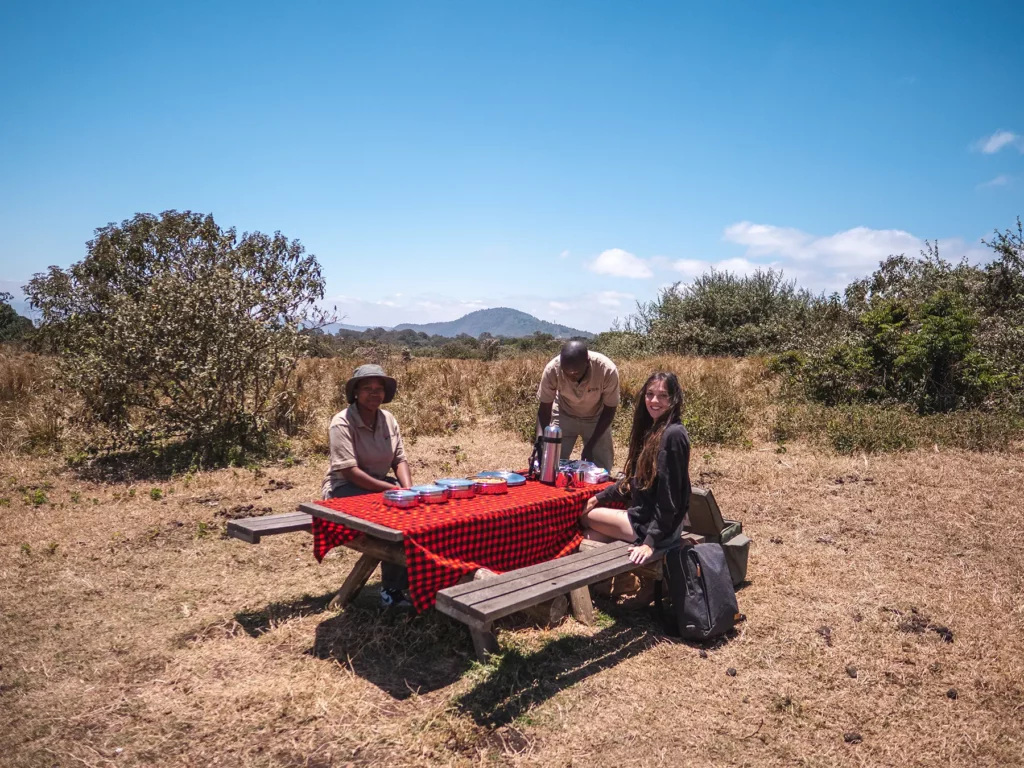
Lodge Options For Lunch
If you fancy a hot lunch and don’t mind spending a little bit more, many lodges and tented camps also offer lunches.
It’s always wise however, to make a reservation at the lodges beforehand to ensure they have availability for you.
Below are some popular options.
Serengeti Serena Safari Lodge
Situated about 15 kilometres west of Seronera in the south-central sector of the park, the Serengeti Serena Safari Lodge is a most popular and convenient choice for many safarists.
It specialises in authentic safari type buffet meals offering a wide variety of barbecued meat, vegetarian dishes, salads and desserts that cater for virtually everybody.
You also have the option of enjoying your meal in their traditional domed dining room with splendid views across the plains, or have a proper hot bush lunch out in the open grasslands in the shade of a flat-topped Acacia tree with animals grazing around you.
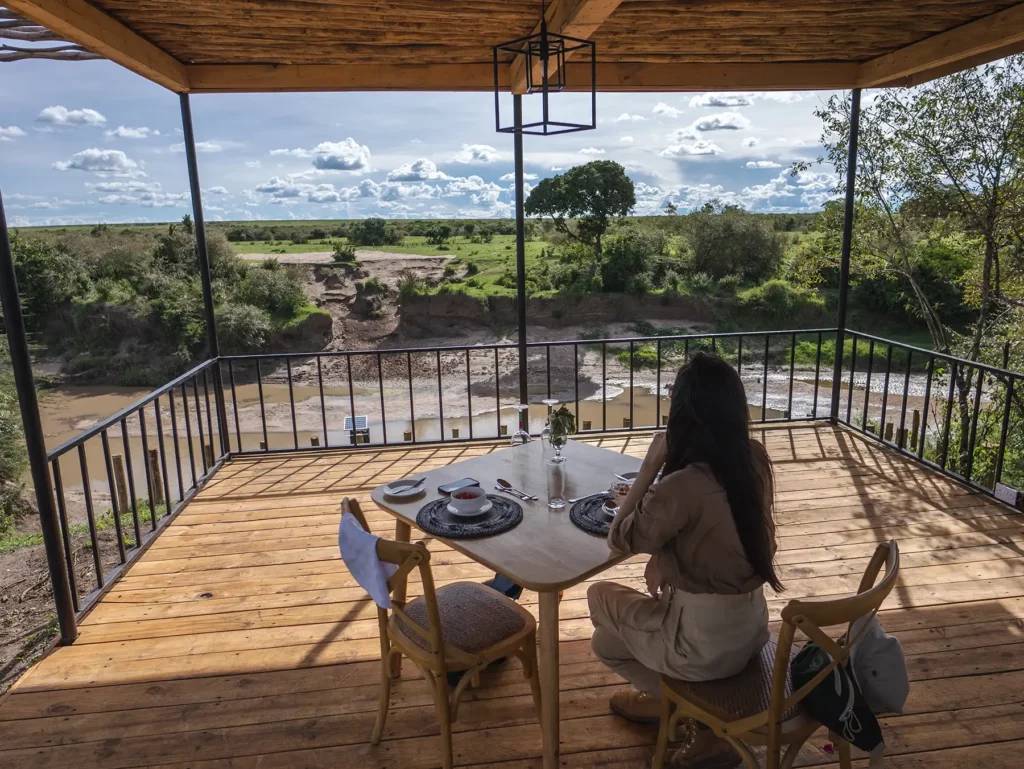
Four Seasons Safari Lodge
Situated about 30 kilometres further north, the Four Seasons Safari Lodge is another superb lunch spot, offering no less than three separate venues, each with their own character, style and variety of dishes.
Their famous Boma Grill is a great favourite, providing an African ambience, serving authentic grilled dishes around an open-air fire pit.
They also have an outdoor terrace serving platters of African snacks, salads and even pizzas, with sublime views across their infinity pool and lake with the Serengeti plains and rolling hills in the distance as a backdrop.
If the weather is unkind, an indoor buffet of various local and international dishes can also be enjoyed in comfort.
Serengeti Migration Camp
Situated in the northern region of the park about 40 kilometres from the Kogatende Airstrip, the Serengeti Migration Camp provides one of the few available lunch venues in the area.
Hidden among rocky outcrops in the heart of the migration route, this luxury tented camp overlooking the river, provides elegant dining including a wide range of local, international and classic dishes.
Mara Mara Tented Lodge
Lunch spots are rather limited in the northern section of the Serengeti. The Mara Mara Tented Lodge, however, offers a quiet spot to enjoy a lunch in their main camp or a picnic al-fresco in the open bush under the African sky.
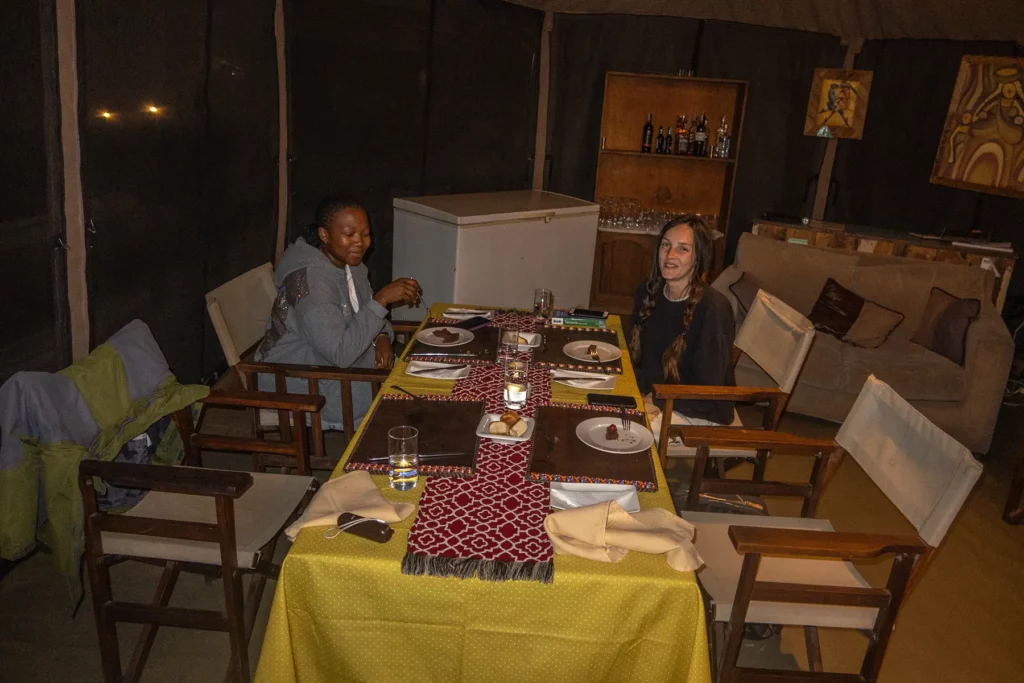
Save Time and Ensure an Incredible Safari Experience
Get quotes from the local safari companies I use to organise my own trips.
You’ll join the rapidly growing tribe of over 1,000 travellers who’ve booked their dream safari using my insider tips and recommendations.
Are Serengeti Safaris Safe?
My experiences on safari in Tanzania have only ever been positive and there have never been any times when I have felt that my safety has been compromised.
In saying that, I must stress that animals in Serengeti and other wildlife areas are at the end of the day wild and so you must always be cautious and treat them with respect.
You are much safer going on safari with a knowledgeable guide rather than self-driving. This is because safari guides understand animal behaviour extremely well and so they are well-equipped to know what to do if an animal seems stressed. There have been a couple of tragic incidents in wildlife areas across Africa in 2024 where self-drivers have got into trouble by getting far too close to elephants and then not being able to read the elephants’ warning charges.
Another area where I’d advise you to be sensible is in regards to balloon safaris. Whilst these are generally safe and most balloon safaris are trouble free, poor weather conditions can cause some issues. Many balloon companies are competent and cancel balloon safaris in poor weather, however I heard a report recently that one balloon company in Serengeti was still flying in bad weather (November 2023) and a visitor was badly injured when the balloon landed badly due to large gusts of wind. I haven’t been able to find an official source for this information to back-up what I was told but still, it made me more careful. Basically, if even one balloon company is not flying due to bad weather, don’t go out in a balloon with any company at that time!
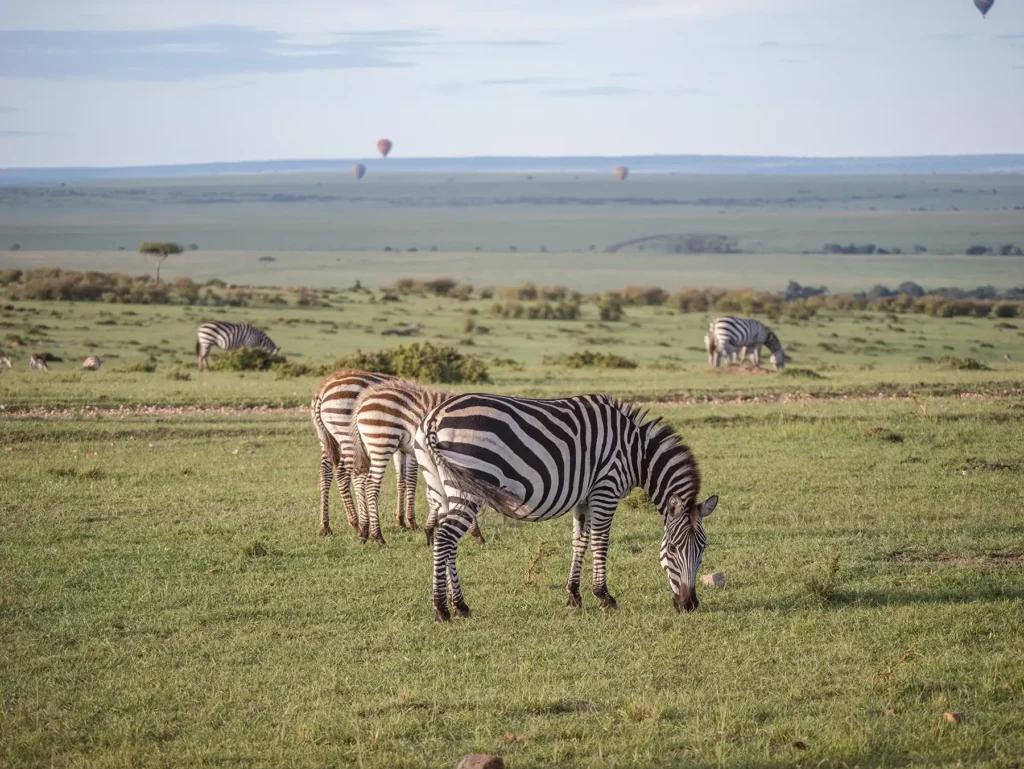
Regarding general safety in Tanzania, again, I have only ever felt safe here. Crime against tourists is typically limited to petty theft in busy towns and cities and so I’d advise you to keep your valuables hidden and to avoid walking on your own after dark.
Another benefit of booking your safari with a tour company and having a guide rather than self-driving is that there’s always someone watching the vehicle whilst you stop at shops on route to your safari destinations. This prevents any opportunistic theft. However, I would say that this kind of theft is a lot rarer in Tanzania than it is in southern Africa.
The biggest danger when in Tanzania is the roads, especially at night. Drink driving, reckless overtaking and cars not having headlights are problems and so I’d avoid any night driving where possible. If it’s inevitable due to a late flight, choose a reputable transfer company, such as your safari tour operator, and request their most sensible driver.
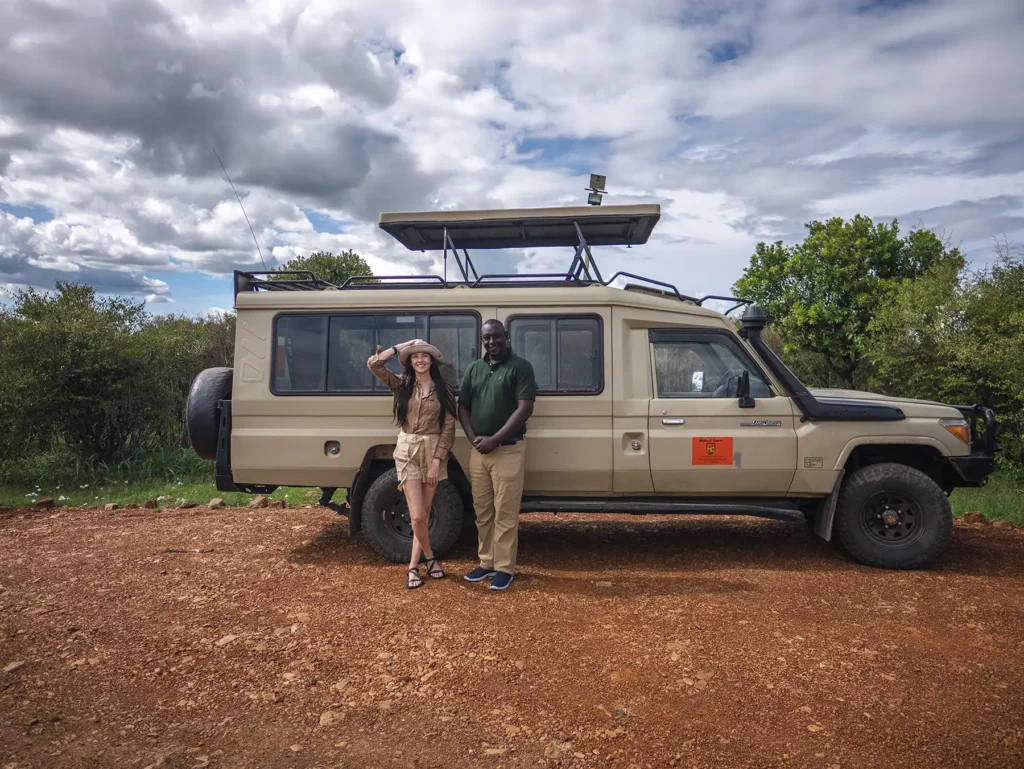
Driving during the day is considerably safer as visibility is much better. I’ve never felt unsafe whilst driving during the daytime in Tanzania. But it’s worth noting that I only ever book my safaris with reputable tour operators who I trust and so the driver guides are always very experienced and sensible drivers.
You can skip driving outside of national parks almost entirely by opting to fly between safari destinations instead. Serengeti houses a number of airstrips, making it incredibly easy to fly between different regions within the Serengeti as well as other key destinations such as Arusha and Zanzibar. The safety of these bush planes is pretty good. Within the last 10 years there has only been one fatal crash involving tourists journeying to Serengeti via plane in 2017 and the cause was poor visibility due to bad weather. If you consider that there are dozens of flights to and from the Serengeti each day, there are an extremely low number of incidents.
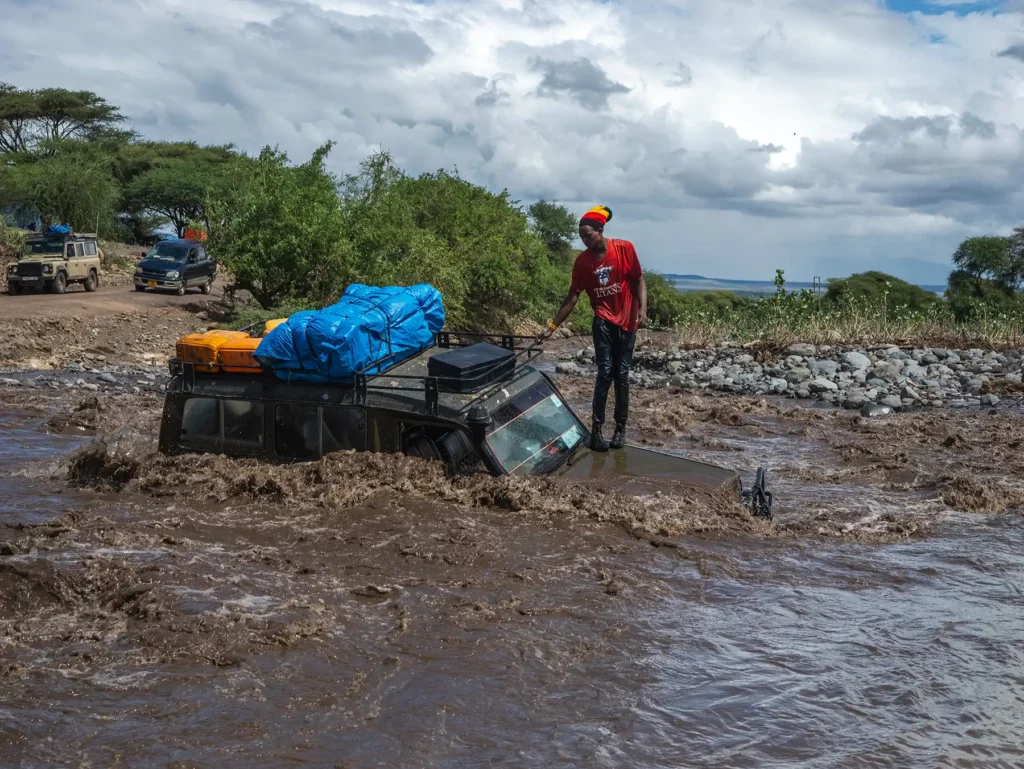
Is Serengeti a Malaria Area?
The Serengeti and the whole of Tanzania are high risk malaria areas, especially during the rainy seasons and precautions need to be taken all year round.
Anti-malaria tablets are easily available but it is strongly recommended for you to seek advice from your doctor or pharmacist on getting the right medication that is suitable for you.
Even so, every effort still must be made to avoid mosquito bites by wearing long sleeve shirts and long trousers as often as possible, as well as having a sufficient supply of mosquito repellents, especially at night and even when going on a game drive.
One must always be aware that you will probably be visiting some really remote areas where medical assistance may be a long way away.
Thankfully Tanzania has a low risk of Yellow Fever and no vaccine certificate is required. However, if you have visited Kenya recently or you’re planning to cross the border into Kenya, a Yellow Fever vaccination certificate is required.

Save Time and Ensure an Incredible Safari Experience
Get quotes from the local safari companies I use to organise my own trips.
You’ll join the rapidly growing tribe of over 1,000 travellers who’ve booked their dream safari using my insider tips and recommendations.
Things to Do in Serengeti National Park
Whilst game drives are the most popular activity that you can enjoy whilst visiting Serengeti, there are other things you can do. Below we will discuss the most popular ones.
You can jump to any of the things to do below.
Balloon Safari Over The Serengeti
Is a Serengeti Balloon Ride Worth it?
In my opinion – yes!
One of the most popular activities that you can partake in is a balloon safari. And there’s a good reason for its high demand.
Nothing really comes close to getting a truly Out of Africa experience by taking a balloon ride over the Serengeti, and especially during the Great Migration. Floating gently and silently over the treetops going wherever the wind takes you, while so much drama is unfolding down below can easily be the most exhilarating experience of your overall safari. Getting a panoramic view of the Serengeti from high up, also gives you a true sense of its sheer vastness and breathtaking magnificence.
The costs however are pretty steep, as you can quite expect. For a balloon safari operator to purchase a balloon it costs a whopping $100,000 per balloon and must be in tip top condition at all times and need to be replaced after only 850 flight hours. The logistics of operating in the remote areas of the Serengeti also don’t come cheap. Fuel, pilots, recovery crews and vehicles add to the running costs of such a high-end service.
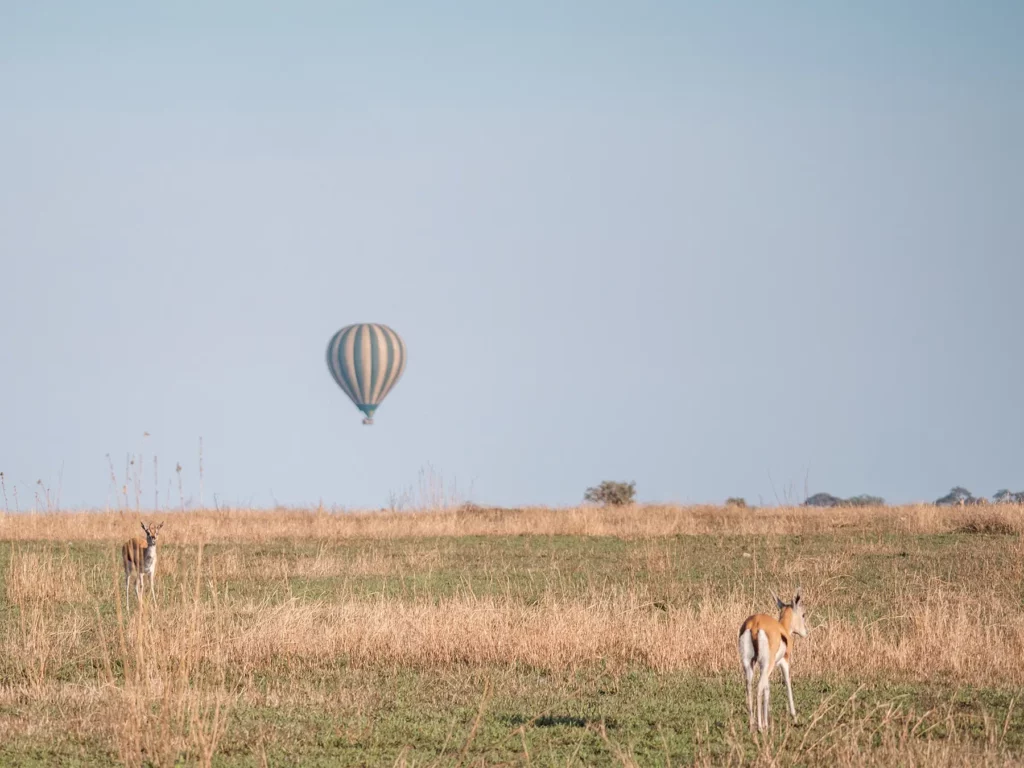
There are several companies that operate balloons in the Serengeti. In general, be prepared to pay approximately $600 per person for a flight that may last around an hour or so. But what memorable memories that hour would provide!
Despite the high costs, balloon operators are extremely busy so booking well in advance is essential particularly during high season.
Balloon rides usually start at the break of day, which means waking up long before the sun comes out, depending on the location of your lodge. The baskets can carry up to 16 passengers, but they are large enough to provide everyone with excellent 360° views of the landscape below. It is important to dress warmly as it is a lot colder in the air than on the ground. Upon landing, you’ll be treated to a champagne breakfast to celebrate the flight of a lifetime.
Balloon rides are hugely dependent on the weather and your flight may be cancelled if poor weather sets in. You will of course be reimbursed in that case. Just be wary of pushy passengers who may try to pressurise the pilots to take off in bad weather, as that can be dangerous for everybody.

Can You Go on A Walking Safari in Serengeti?
Yes – in certain parts of the Serengeti.
Walking safaris must surely provide the ultimate thrill for any adventurous wildlife enthusiast. A handful of safari lodges and tour operators can organise walking safaris in certain regions of the Serengeti. The permits to carry out a walking safari are a little hard to come by and only a select number of lodges and operators have them.
There are designated areas in Serengeti where you can carry out walking safaris such as Grumeti and areas near the Serengeti borders.
On a walking safari, you will be escorted with an experienced armed guide, who will explicitly brief the party before embarking and whose advice must be adhered to at all times.
Walking safaris operators tend to take place in remote areas not usually visited by the tourist masses. This is in order to provide the hikers an authentic African bush experience without the noise of cars and races of modern life. Walking silently among animals in the open wilderness not knowing what lies ahead and not seeing a vehicle or a soul for days on end can be a most unforgettable and exhilarating experience.
Walking safaris may vary from short educational walks around the lodges or camps lasting for a few hours, to multi-day hikes backpacking and camping in the open or walking from camp to camp that have already been set up.
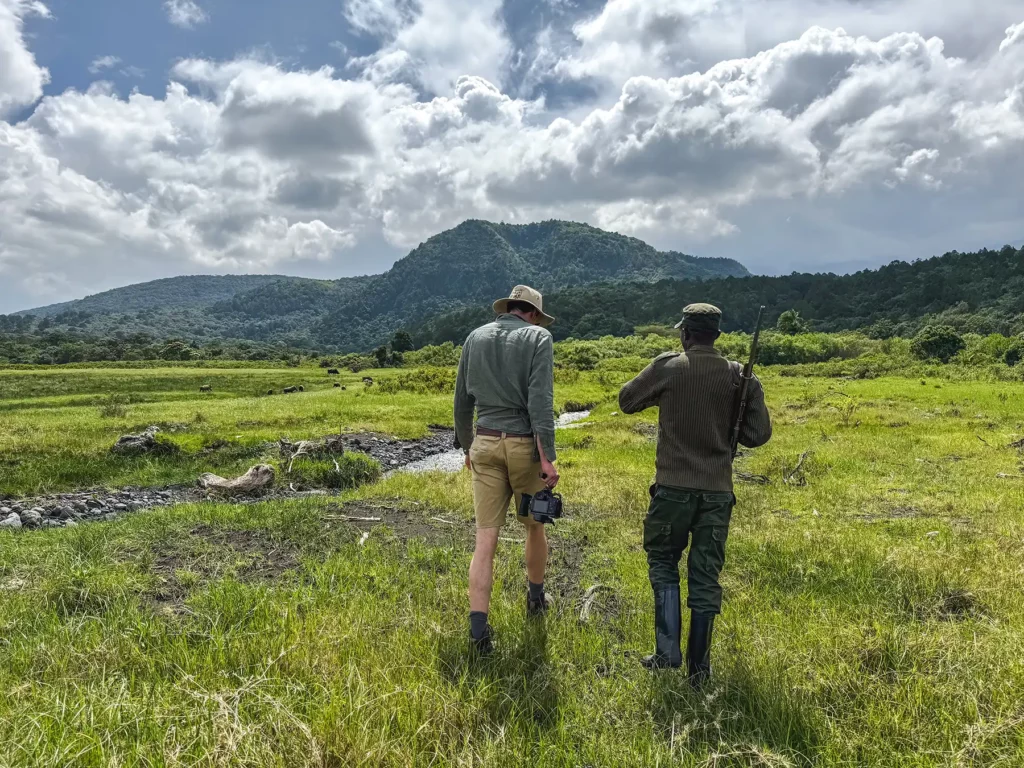
Can You Go on Night Game Drives in Serengeti?
Driving around game parks seeing lions, leopards lazing under the shade of a tree during the day, may seem like a peaceful affair. But when the sun goes down and darkness sets it, the Serengeti becomes a different place altogether. This is the time that hunters go on the prowl and things start to happen.
Unfortunately, night game drives are not permitted inside the Serengeti National Park, but several game reserves outside the park and within the overall Serengeti ecosystem do allow them. Some of these reserves include the Grumeti, Maswa and Ikorongo game reserves and the Loliondo Game Controlled Area.
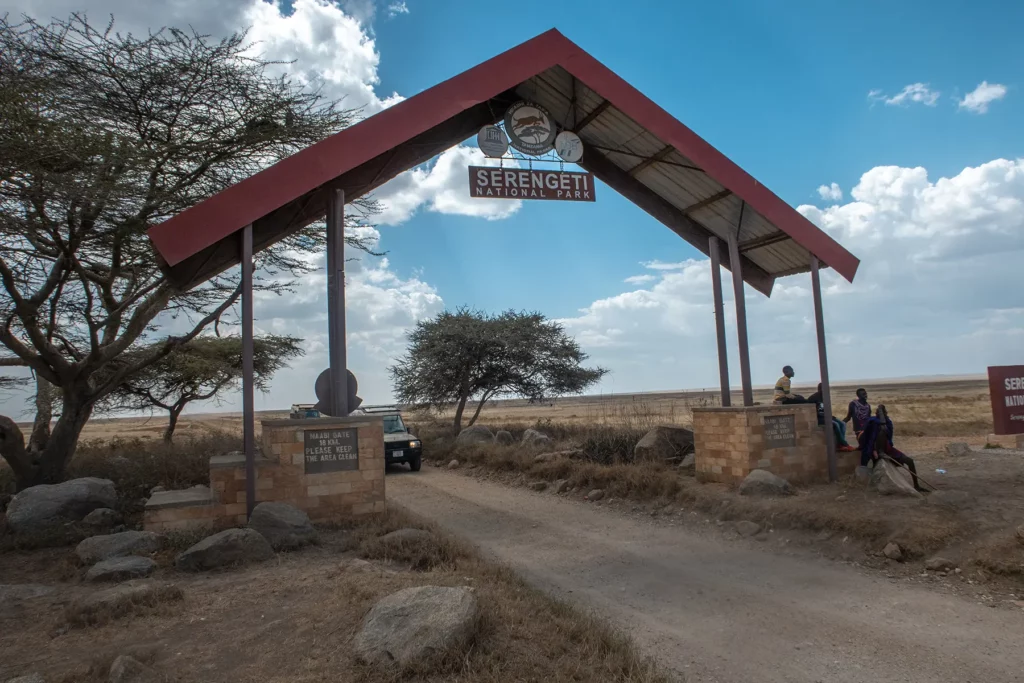
Night drives can offer the most thrilling experiences and give you the chance to encounter animals that you wouldn’t otherwise see in the day. Bushbabies, genets, civets and honey badgers are some of the many nocturnal species that you can hope to bump into on a nighttime safari.
Big animals like elephants, buffalos and hippos are constantly on the move and they can often be heard rustling through the bush, feeding on the grasses and foliage sometimes without even being seen. Like ghost silhouettes, lions, leopards and hyenas can suddenly appear out of nowhere in the dark, with only their eyes reflecting in the moonlight. Quite an eerie sight.
Nights out in the bush can get bitterly cold so it’s wise to dress accordingly. Mozzies are a nuisance too (and it’s the malaria-carrying mosquito that comes out at night) so ensure you have lathered yourself with bug spray. Night drives tend to be more expensive than normal day drives and prices may vary substantially between game reserves and safari operators.
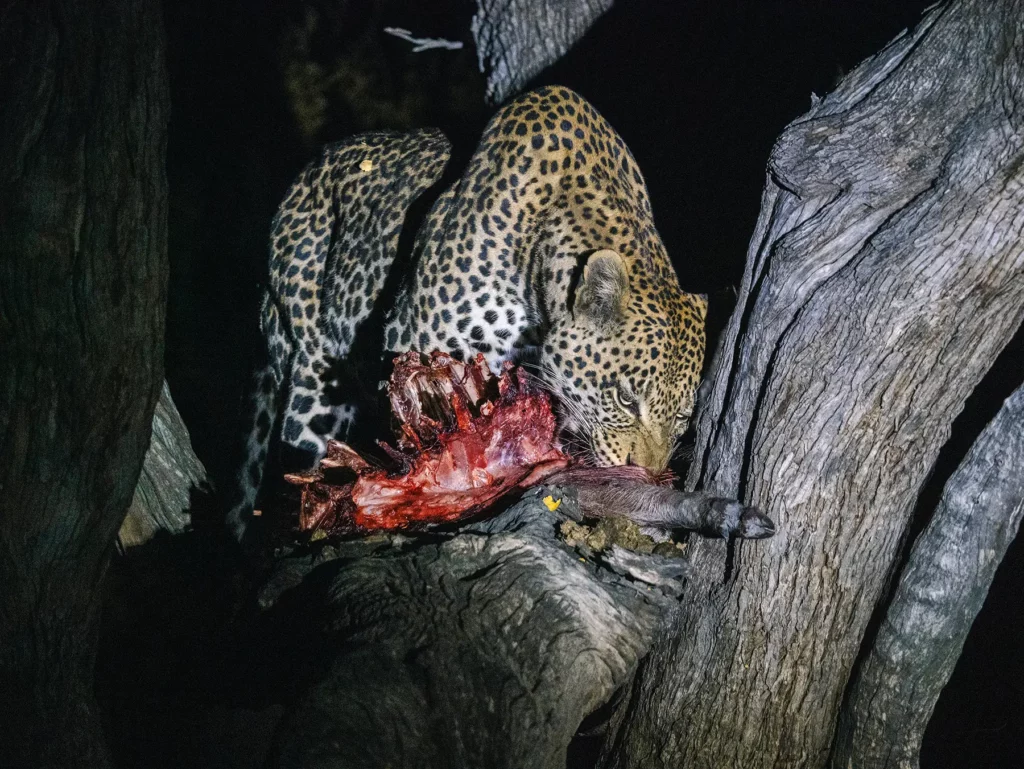
Can I go Horse Riding in the Serengeti?
Whilst you can’t go horse riding in the Serengeti National Park, you can embark on a riding safari in the greater Serengeti ecosystem, in the neighbouring Ngorongoro Conservation Area and Ndutu Plains, where the migrating wildebeest can be found between December and April.
The Maasai Mara in Kenya which is part of the Serengeti ecosystem, allows horse riding in some of the parks’s private concessions.
For experienced horse riders, exploring the Serengeti / Masai Mara eco-system on horseback and getting close to or even galloping with herds of wildebeest, must be one of the most exhilarating experiences ever.
Various tour companies specialise in horse riding safaris in numerous parks across Tanzania. Therefore if you’re a keen rider, you can embark on a riding safari that covers multiple locations. Multi-day riding safaris are, however, limited to experienced riders.
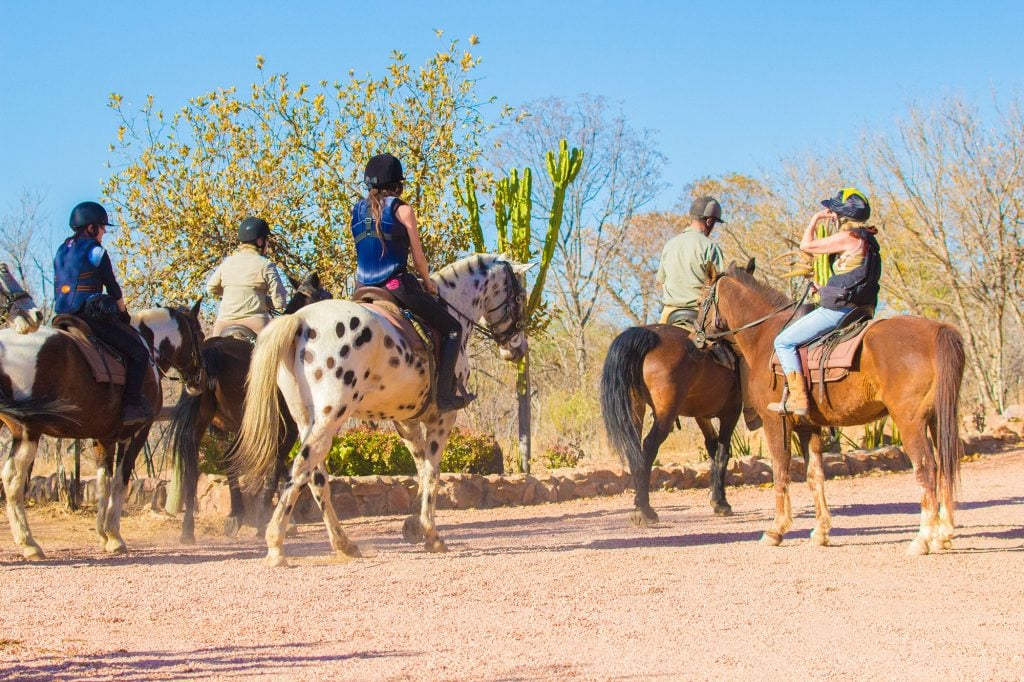
Photographic Safari in the Serengeti
Serengeti is a haven for photographers! The diverse landscape and wide assortment of wildlife, along with long days of strong lighting and crystal clear night skies, make it a paradise for novice and professional photographers and filmmakers.
The Serengeti is an all year round safari destination, and each season provides something unique and magical for photographers to capture. The Mara River crossing allows for some incredibly dramatic shots of wildebeests leaping through dust and into the river, whilst the vibrant green landscape in the wet season provides a colourful backdrop to photos of your favourite African subjects. The arrival of migratory birds in November allows you to capture a vast range of bird species and even witness their courtship displays.

Photographic safaris are led by some of the very best guides in the industry. They have an intimate knowledge of lighting, animal behaviour and how to best position the vehicle to both capture the subject best and ensure the lighting is perfect.
There are several tour operators who offer photographic private safaris upon request. These will be undertaken in specialist photographic vehicles which fully open at the sides, allowing you to capture low-angle shots. They are often equipped with beanbags to help you stabilise your shots.
I’d personally recommend booking a private photographic safari rather than join a group one. This is because you will have much more room in the vehicle and won’t be battling with fellow passengers for the prime positions.
Additionally, as photographic safaris involve spending long periods with one animal, you want to ensure that you have a say over which animal sightings are prioritised, challenging when in a vehicle with four other photographers who have their own preferences.

Save Time and Ensure an Incredible Safari Experience
Get quotes from the local safari companies I use to organise my own trips.
You’ll join the rapidly growing tribe of over 1,000 travellers who’ve booked their dream safari using my insider tips and recommendations.
How to Book Your Serengeti Safari
At first glance, booking a Serengeti safari can feel like a complicated affair, needing much researching and planning and thus leaving people overseas unsure where to even start. To make life simpler for you, I have listed below the four basic options there are in booking a Serengeti Safari.
You can jump to more information on each of the booking options using the links below.
Option 1: Self-Drive Safari
Many people who choose a self-drive safari do so to cut down on costs, only to discover that the cost saving may not be as much as they originally thought.
As the most expensive part of a game drive is the park fees, which are charged per person per day, costs remain the same regardless whether you’re self-driving or you’re on a group tour.
The only saving you may be making is the costs of hiring a driver. But you’ll be missing out on all the benefits of having a skilled driver guide with you such as their amazing spotting and tracking skills as well as their radio which they use to alert them to the best sightings.
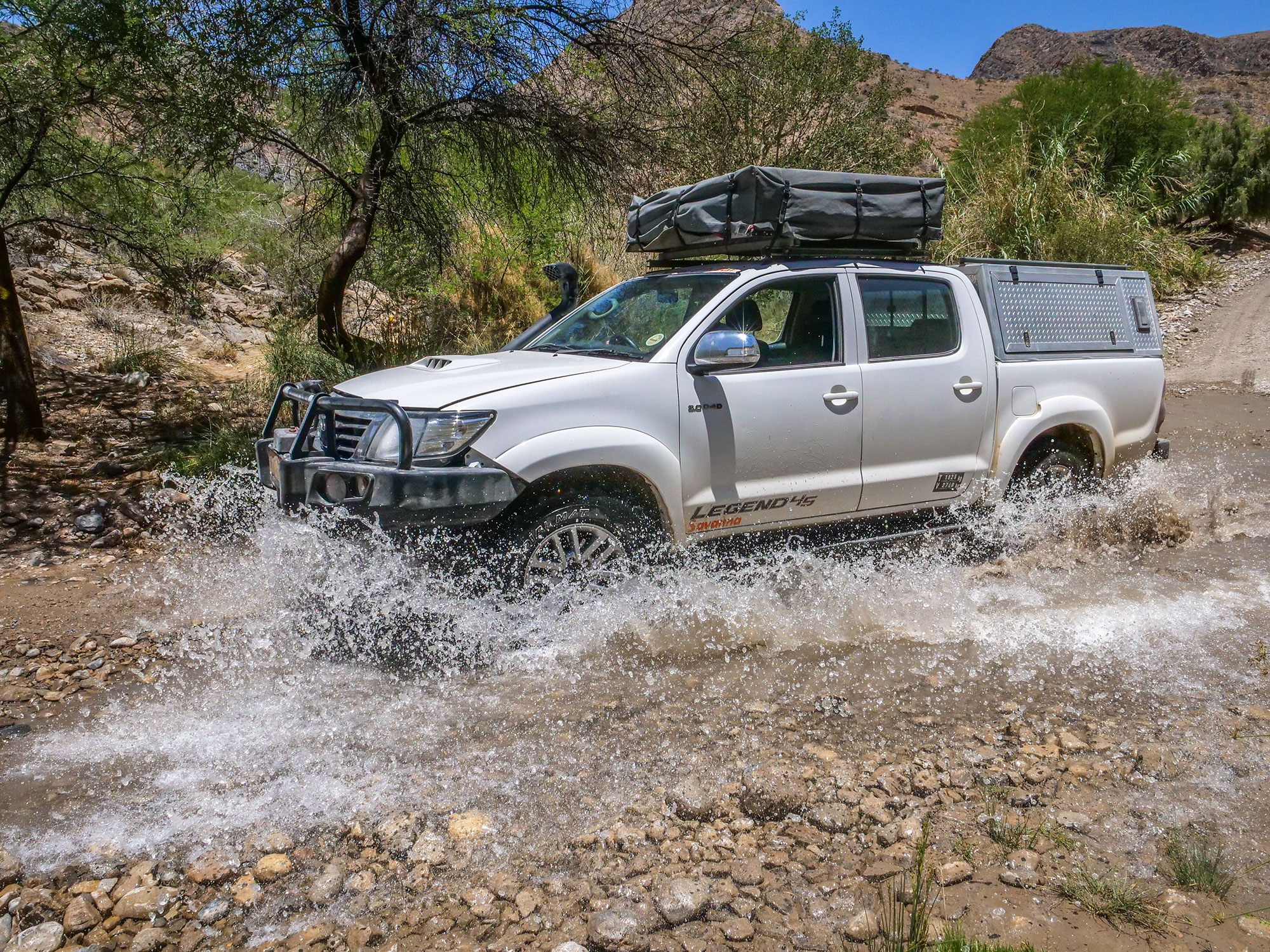
The same applies to accommodation costs. They remain the same, although tour operators can obtain reduced lodging rates, thus offsetting the higher cost of hiring a driver.
Self-drive safaris require you to book your own 4×4 vehicle, and have to make your own arrangements should you have a flat tyre, get lost, stuck in the bush or breakdown in some remote area.
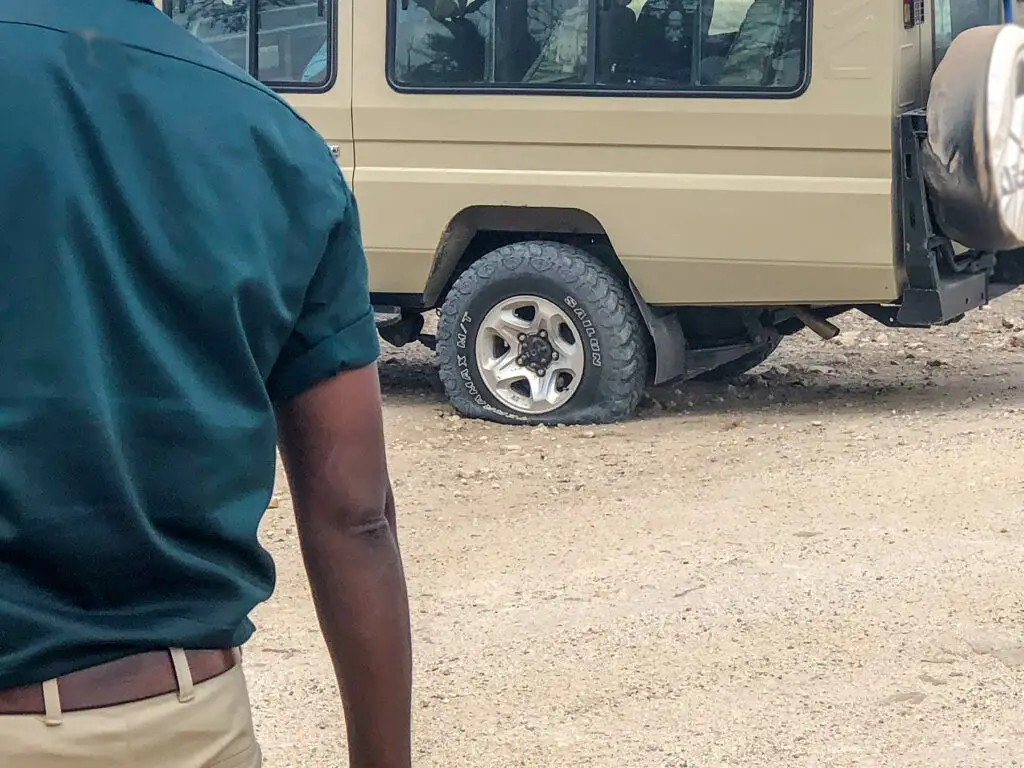
Restrictions for entering Serengeti with your own vehicle are quite strict and the vehicle needs to meet certain requirements. Essentially, if your vehicle isn’t a Land Cruiser or Land Rover (which cost around $200 per day to rent), there’s a strong likelihood that you won’t be able to enter.
In my opinion self-drive safaris in Serengeti aren’t worth it. You won’t see half as many animals as you will with a knowledgeable guide and the cost savings are minimal.
How to Book a DIY Self-Drive Tanzania Safari
- Option 1: Comparison sites which provide multiple quotes from verified suppliers such as Safaris By Ella. Make sure to write you want to self drive in the notes when requesting a quote. (This is a hybrid approach where you’ll drive yourself but they will arrange everything)
- Option 2: Research and book all elements of the trip yourself using Google and online travel agents.
Join the rapidly growing tribe of over 1,000 travellers who’ve booked their dream safari using my insider tips and recommendations. Get your free quotes and my top tips and recommendations now.
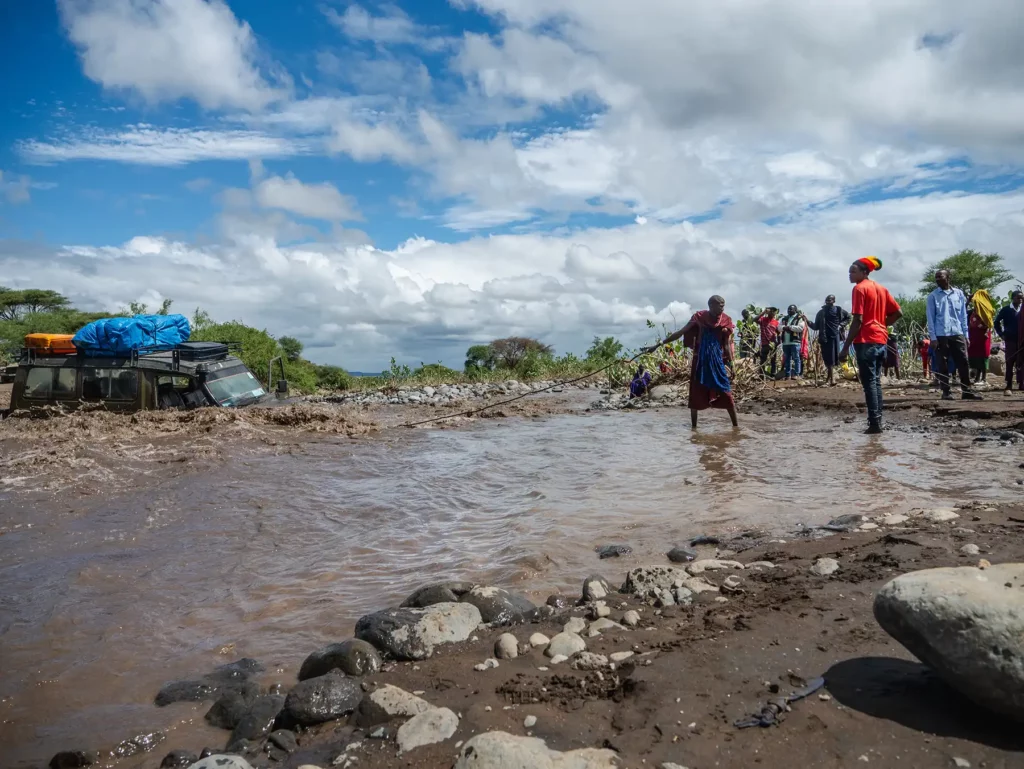
Option 2: Local Tour Operator
Through my personal experience, I have found that booking with a local tour operator is by far the best and most cost effective option.
With their local knowledge and experience, they’re able to take care of virtually everything, taking much of the stress out for you. From booking your preferred style of accommodation, safari drives, arranging park fees, vehicles, driver guides, food and drinks for your game drives, to even collecting you from the airport and taking you straight to your hotel or safari lodge.
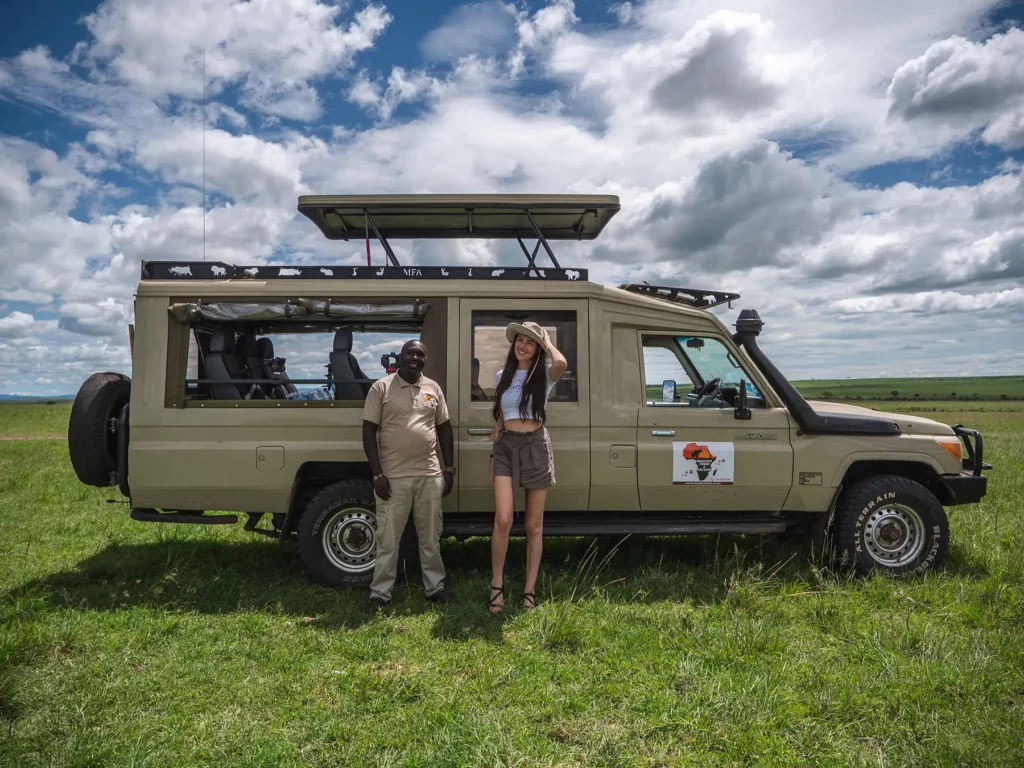
Local tour operators offer two safari options – private safari or group tour. Private safaris are obviously preferable if budget allows, as they start at $300 per person per day. The advantages of private safaris are that you have more freedom and flexibility as to the times and places you wish to go, and you have the undivided attention of your game guide. Tour operators also reserve their best guides for private clients.
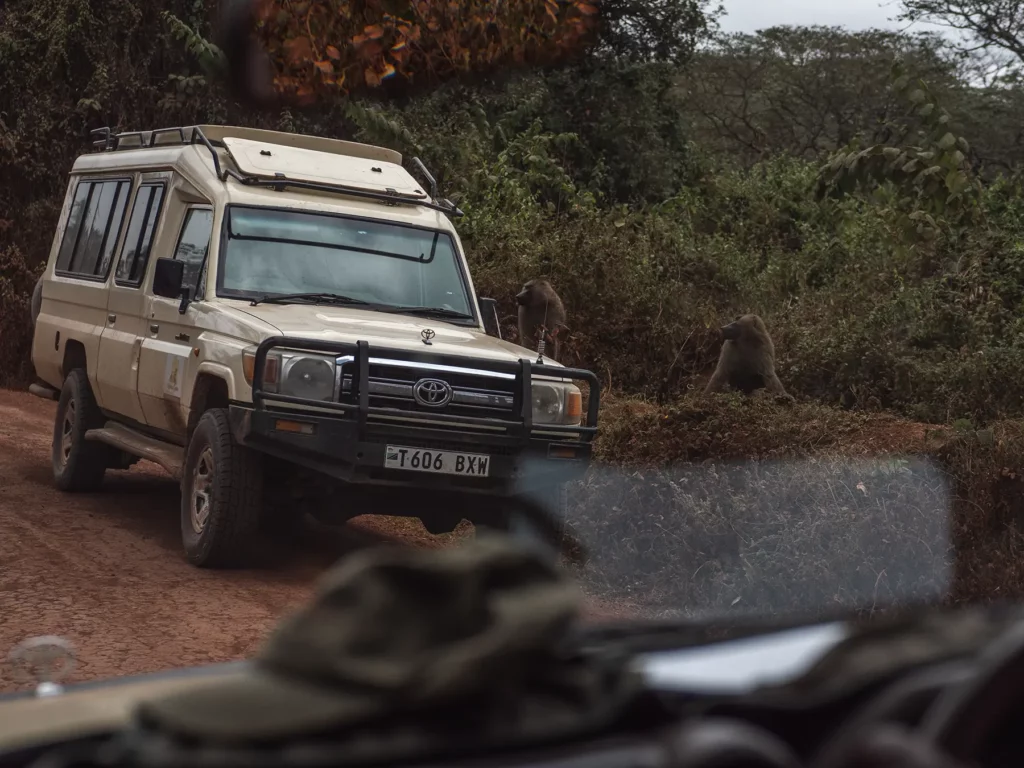
Group tours on the other hand, aren’t so flexible as your hotel or lodge is picked for you as well as the times of the game drives. It can also take a while for your game drive to get started as guests may be based at different lodges so you have to drive from lodge to lodge, picking up different guests before finally going out on safari.
However, group safaris are a good option if you are a solo traveller as they allow you to meet other travellers and there are huge cost savings compared to having a private safari for one person.
How to Book with the Best Local Safari Companies
- Comparison sites which provide multiple quotes from verified suppliers such as Safaris By Ella
Join the rapidly growing tribe of over 1,000 travellers who’ve booked their dream safari using my insider tips and recommendations.
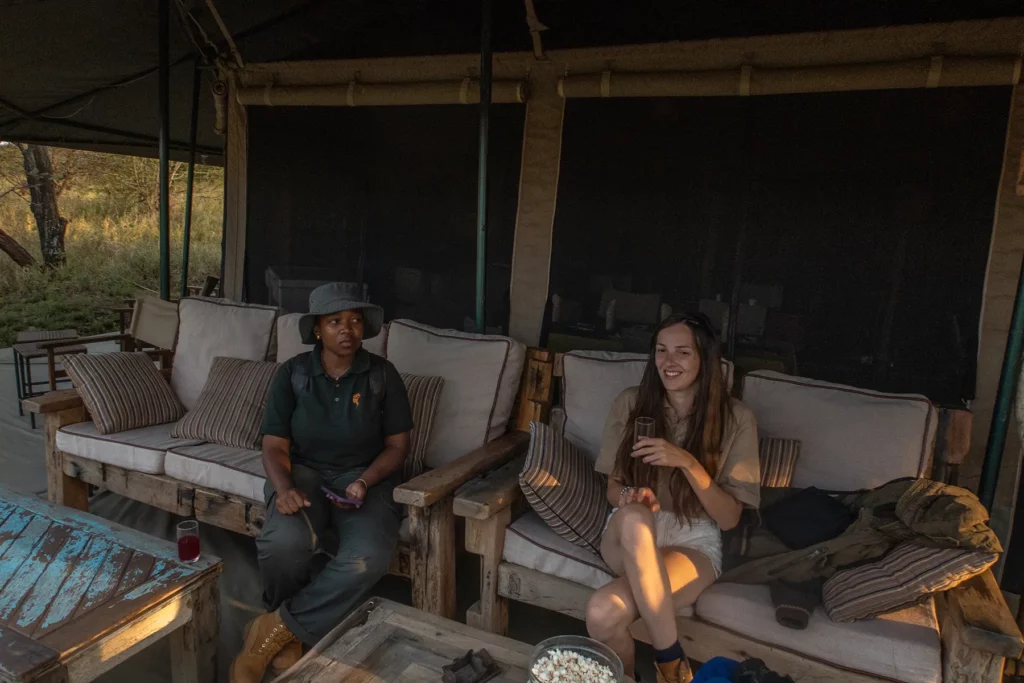
Option 3: International Travel Agents
Safaris in the Serengeti can also be booked through international travel agents, and although that may seem the most convenient option, they tend to be more costly. The reason for that is pretty obvious. They usually sub-contract the accommodation and safari experiences to a local operator and mark up each item or service to make a profit. That’s quite understandable.
Other than arranging your international flights to and from Tanzania, the overall safari experience remains largely the same. Booking through a local operator makes more sense, as long as you choose the right operator.
How to Book Your Safari with an International Travel Agent / Safari Company
- Comparison sites which provide multiple quotes from verified suppliers such as Safaris By Ella. When you select a luxury budget on the quote request, you will receive a quote from my recommended International safari company as well as my recommended local companies for comparison.
Join the rapidly growing tribe of over 1,000 travellers who’ve booked their dream safari using my insider tips and recommendations.
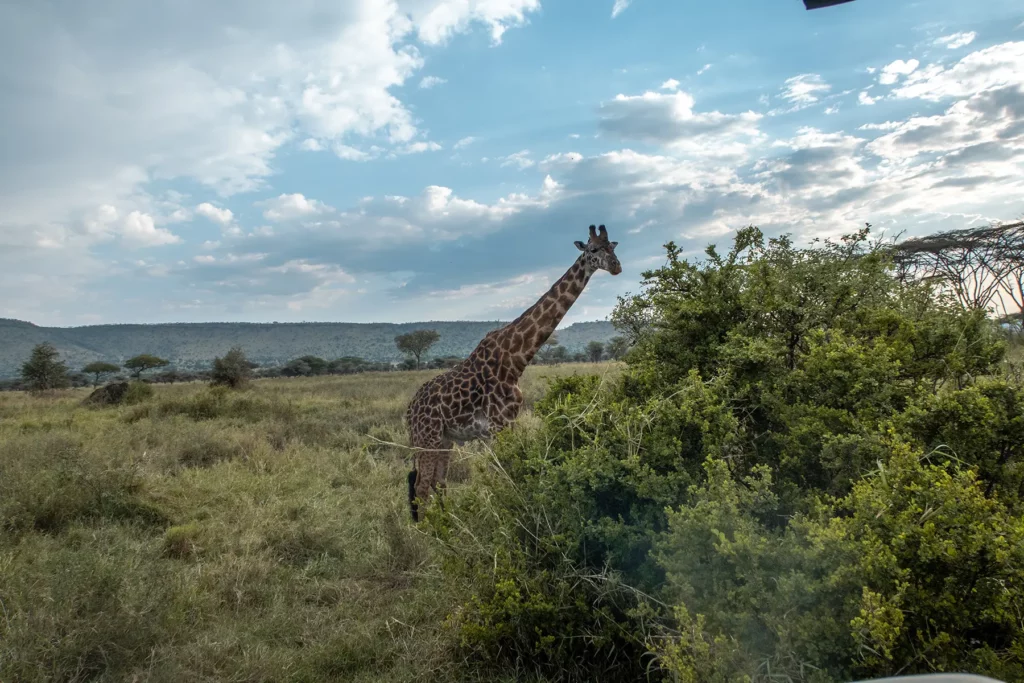
Option 4: Fly-In Hotel Safaris
A final option is to book yourself at lodges and tented camps which arrange their own game drives. This option is only really viable however if you plan to base yourself in one location for a number of nights.
Whilst the lodges can arrange short transfers, you’ll have to generally arrange your own transport to the lodges and the most efficient way to do this is to book a flight. Flights typically cost around $300 per person each way. You’ll then need to arrange for your lodge to pick you up from the airstrip which is an additional cost.
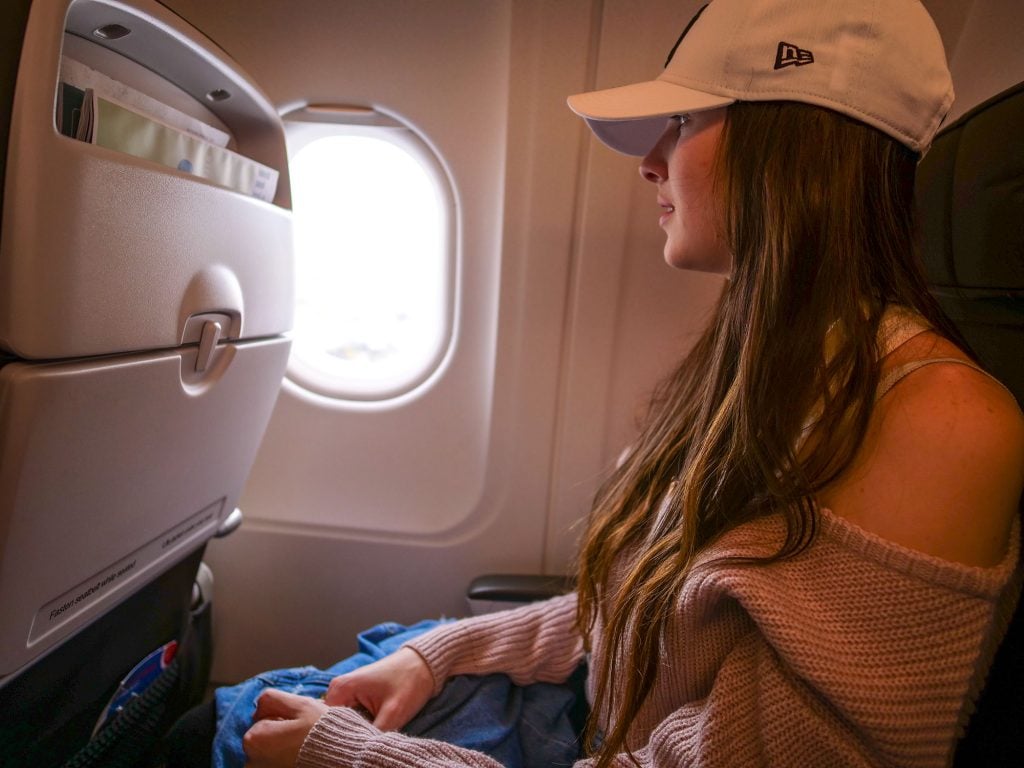
Alternatively most safari companies can arrange the whole thing on your behalf and as they receive special pricing from the lodges, total costs should be similar, especially with local safari companies.
The lodges and camps which typically offer this service are high-end and luxurious, therefore the costs are quite high.
The main drawback of this however is that game drives are rarely private. You’ll be joining other lodge guests on your drives and thus don’t have the flexibility on how long you go out for, where you go and which sightings to prioritise.
How to Book a Hotel-Provided Safari
- Option 1: My recommended tour operators on Safaris By Ella can arrange hotels and air or road transport to and from the hotels. If you opt for the more cost-effective road transport, since they have driven you to the hotel, you might find it cheaper to use the safari company for safaris rather than using the hotel-provided safaris.
- Option 2: Check with your chosen accommodation whether they provide this service and the booking requirements.

Serengeti Safari Prices
Serengeti’s park fees make it the second most expensive conservation area to visit in Tanzania after the Ngorongoro Crater.
Let’s delve into the costs in more detail blow.
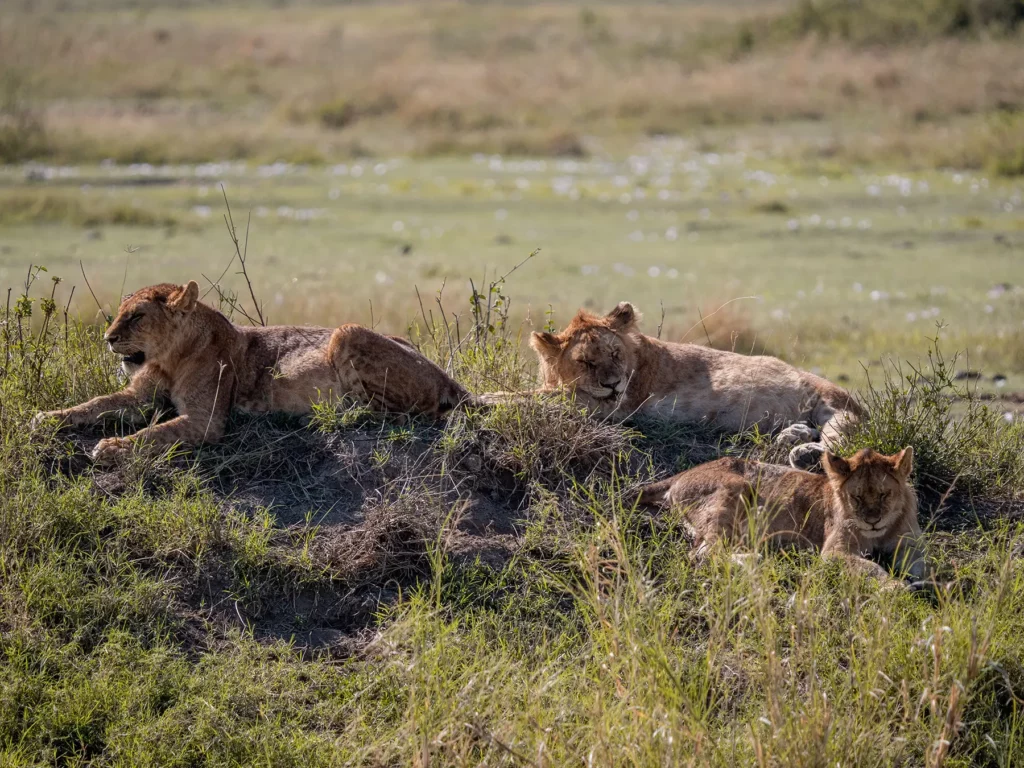
How Much Does a Serengeti Safari Cost?
Serengeti is one of the more expensive national parks to visit in Tanzania. Park fees are quite high and due to the vastness of the park it’s best to book a camp or lodge within the park itself which means you have to pay additional overnight fees. The remoteness of the camps and lodges makes them more expensive than lodges outside of the park as it’s harder to get supplies in and out.
Full board prices start at around $430 – $500 per person per day for a private Serengeti safari for two people ($860 per day total) when using a local safari company.
If you safari also covers other lower-cost parks, your average cost per day will be lower. These prices just relate to days spent in the Serengeti.
A rough breakdown of these costs are as follows: It costs $70 + 18% VAT ($82.60) per person to enter Serengeti for a 24 hour period plus an additional $60 + 18% VAT ($70.80) per person per night if you sleep within the park.
The nightly concession fee is on top of your accommodation costs which start at $100 per person per night at the cheaper tented camps. Accommodation prices do include all meals however. If you opt to camp instead, you have to pay a camping fee of $60 per person per night and as meals aren’t included, I feel there are very minimal cost savings involved when going down this route.
You then have around $350 per day for the driver / guide and safari truck and fuel. Prices vary based on the specification of the safari truck and how experienced the driver / guide is.
On top of this you’ll have other smaller costs such as the transit fee to travel through the Ngorongoro Conservation area to reach the Serengeti when travelling by road (more on this below), flying doctor insurance, around 5 – 10% for the safari companies profit margin which covers their overheads.
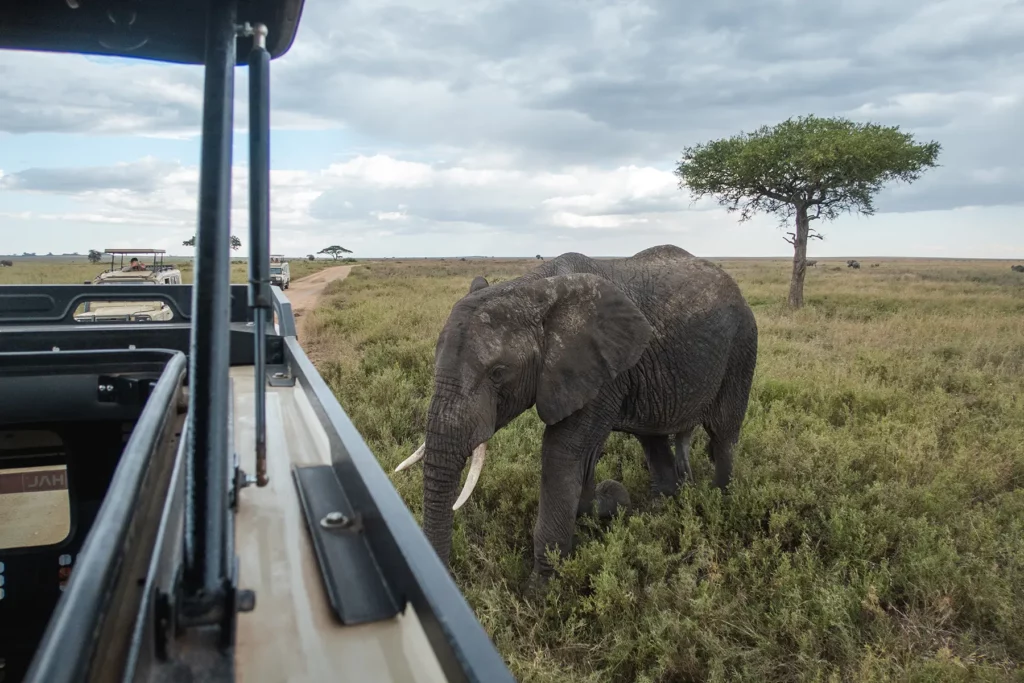
For self-drivers it costs $8 – $13 per vehicle per day to enter Serengeti if your vehicle is registered in Tanzania. It costs $40 – $150 per vehicle per day if your vehicle is foreign registered. The price varies depending on vehicle weight.
The cheapest way to enter Serengeti is via road. However, if you are travelling from Arusha or other popular parks in Tanzania, you’ll need to pass through Ngorongoro Conservation Area to reach Naabi Hill Gate. You therefore have to pay a $70 per person transit fee each way.
The only other way to reach Serengeti is to either drive through another gate (which simply isn’t worth it!) or to fly. Flights in and out of Serengeti are roughly $300 per person.
Whilst Serengeti is undoubtedly expensive, other parks in Tanzania are cheaper and so if you visit Serengeti as part of a longer 7-10 day Tanzania safari, average costs per day will be lower and you can get safaris that visit multiple parks starting from $350 per person per day.
You can learn more by reading my guide to Tanzania safari costs.
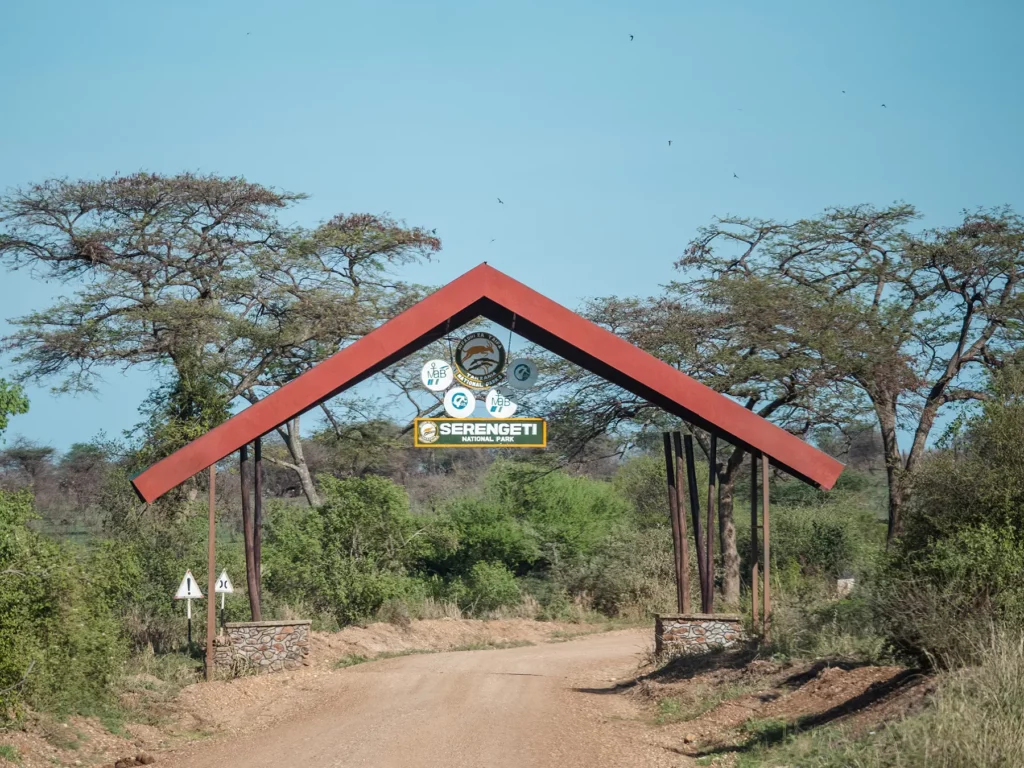
Why is Serengeti So Expensive?
Tanzania is a vast country with just under 20% of its gross domestic product derived from tourism. Much of that is generated from its 21 national parks, which take up approximately 40% of the country’s landscape. Managing and maintaining the Serengeti National Park’s roads, airstrips and other infrastructure while also conserving its precious wildlife and landscape, upon which hundreds of thousands of jobs depend, is an extremely costly affair.
It therefore comes as no surprise that park fees form the biggest expense for visitors going on safari in Tanzania as in most other countries in the whole of Africa too. With the Serengeti National Park being the flagship park of Tanzania, great care needs to be taken continually to preserve this national treasure for future generations across the world.
Running a park of such size and importance, requires much maintenance, ranger and other staff salaries, vehicles, conservation and veterinary efforts etc, etc, all of which impact hugely on the park fees that visitors simply have to pay.
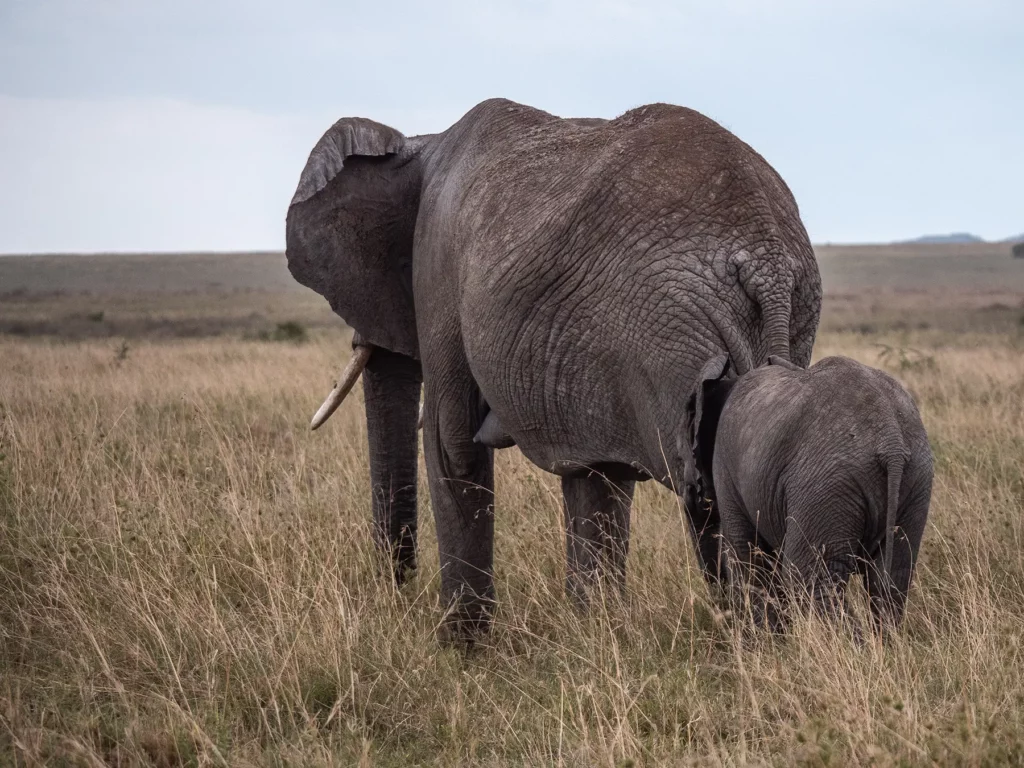
To provide a truly authentic African wildlife experience, the park also places a limit on the numbers of tourists at any one time, in the process limiting their income. It’s a fine balance between the two.
I personally think it’s a good thing that park fees are quite high. It puts a limit on the amount of visitors that enter the park and thus there is less wear and tear on the park and less damage to the ecosystem. It also means that there’s still a decent amount of money that can be invested in protecting this magical ecosystem.
Although park fees are unavoidable, where visitors can save on, is on the level of luxuries and style of accommodation they choose. Fortunately, the Serengeti National Park and most other parks in Tanzania offer a wide range of safari lodging styles and game drives from the most outrageously priced to the most basic and minimalistic, to suit everyone’s tastes and budgets.
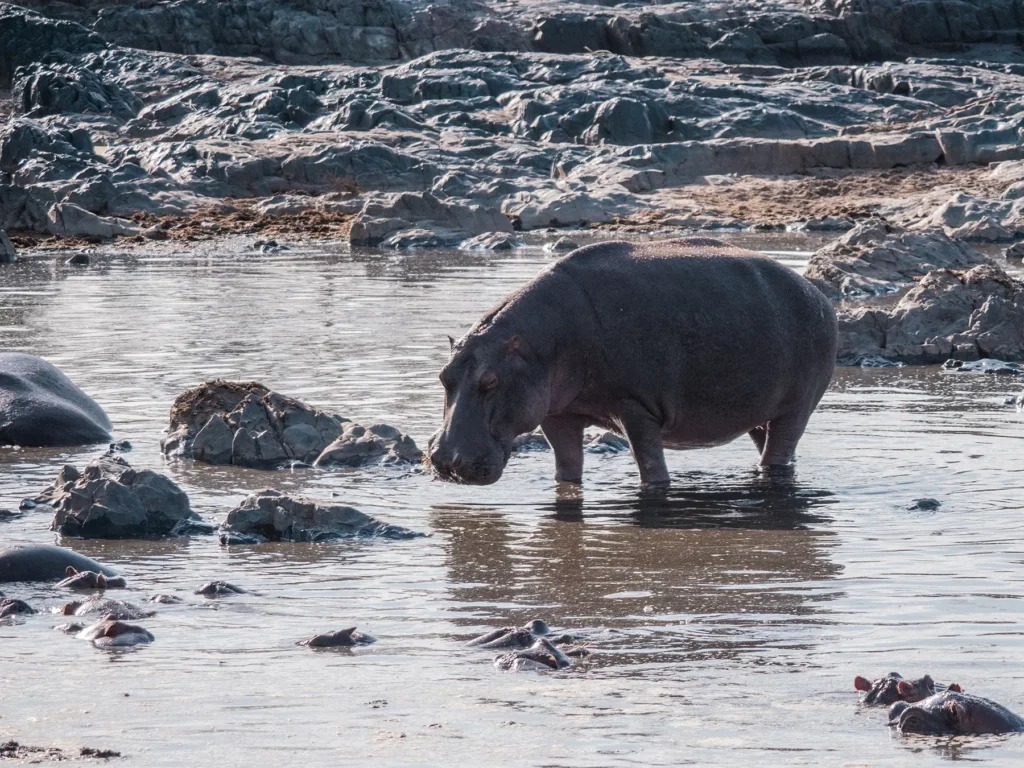
How Much Does it Cost to Enter Serengeti?
Fees to enter Serengeti are $70 + 18% VAT ($82.60) per person and are valid for a 24 hour period.
If you are staying the night within the park itself (which I highly recommend you do) then you have to pay an additional $60 + 18% VAT ($70.80) per person per night concession fee.
If you are entering Serengeti via road, you’ll have to pass through Ngorongoro Conservation Area which has a transit fee of $70 per person each way.
Alternatively, flying to and from Serengeti costs $300 per person each way.
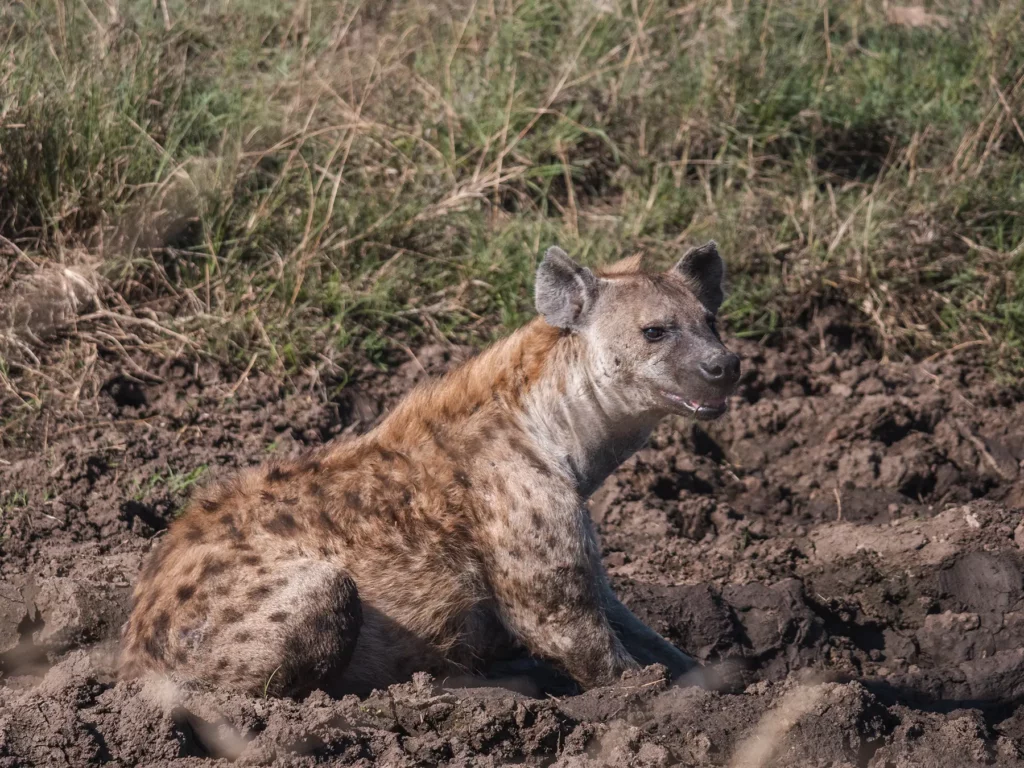
Save Time and Ensure an Incredible Safari Experience
Get quotes from the local safari companies I use to organise my own trips.
You’ll join the rapidly growing tribe of over 1,000 travellers who’ve booked their dream safari using my insider tips and recommendations.
Is a Serengeti Safari Worth It?
With the Serengeti being the premier national park of Tanzania, you bet your life it is! End of discussion.
This national park has everything. The landscape alone is a sight to behold. With vast expanses of open savannahs, sparsely and densely vegetated woodlands, rolling hills and rocky mountains, lakes, rivers and waterholes, with an all ever changing mood and character during every season, the Serengeti is a national treasure.
To this landscape add perhaps the most diverse range of wildlife, from the grey giants, the kings of the jungle, majestic leopards and cheetahs, the speed kings of the savannahs, plus millions of buffalos, zebras, giraffes, rhinos, hippos, crocodiles and tons of antelope and bird species and you tell me whether a Serengeti safari is worth it.
If all that is not enough, well let’s throw in the Great Wildebeest Migration for good measure, which takes your breath away no matter how many times you get to witness it. So yes, I would say that a Serengeti safari is definitely worth it.
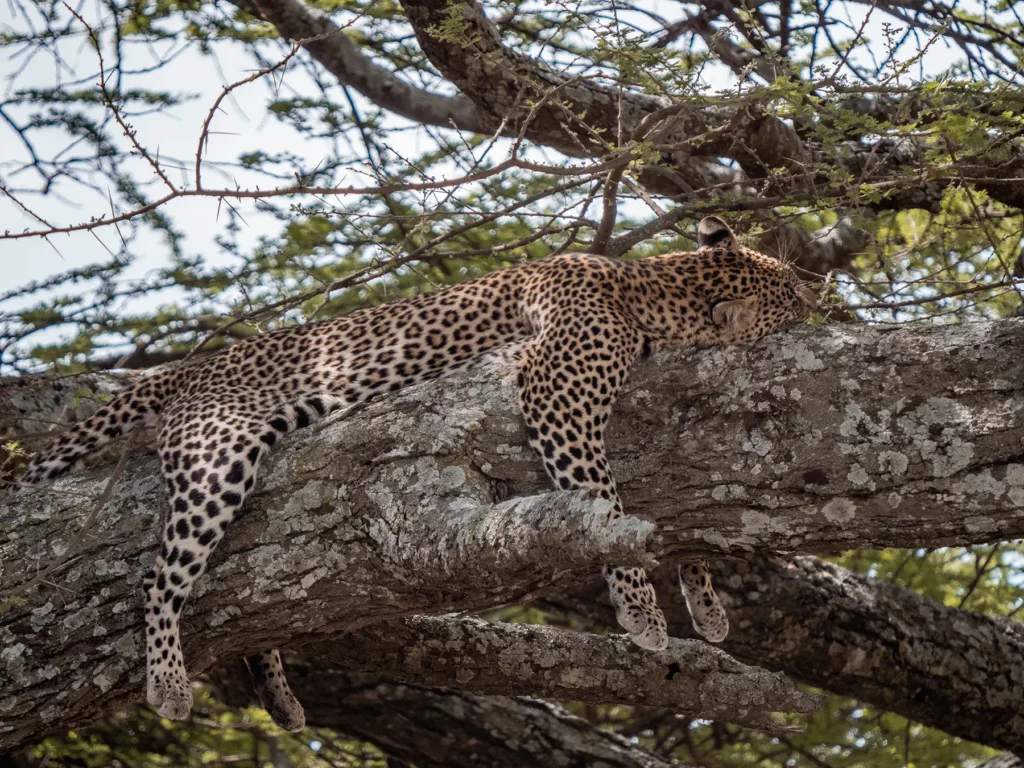
Where to Stay in the Serengeti
There are three different lodging options in the Serengeti National Park – permanent lodges, tented safari camps and campsites, all of which come in various levels of comfort, features and luxuries.
Prices also tend to vary accordingly with some high-end lodges costing over $2,000 per person per night to more affordable joints averaging out at around $400 per person per night.
On the opposite end of the scale, there are numerous budget friendly but still comfortable camping sites scattered across the entire Serengeti, allowing one to enjoy the beauty of the park without having to rob a bank.
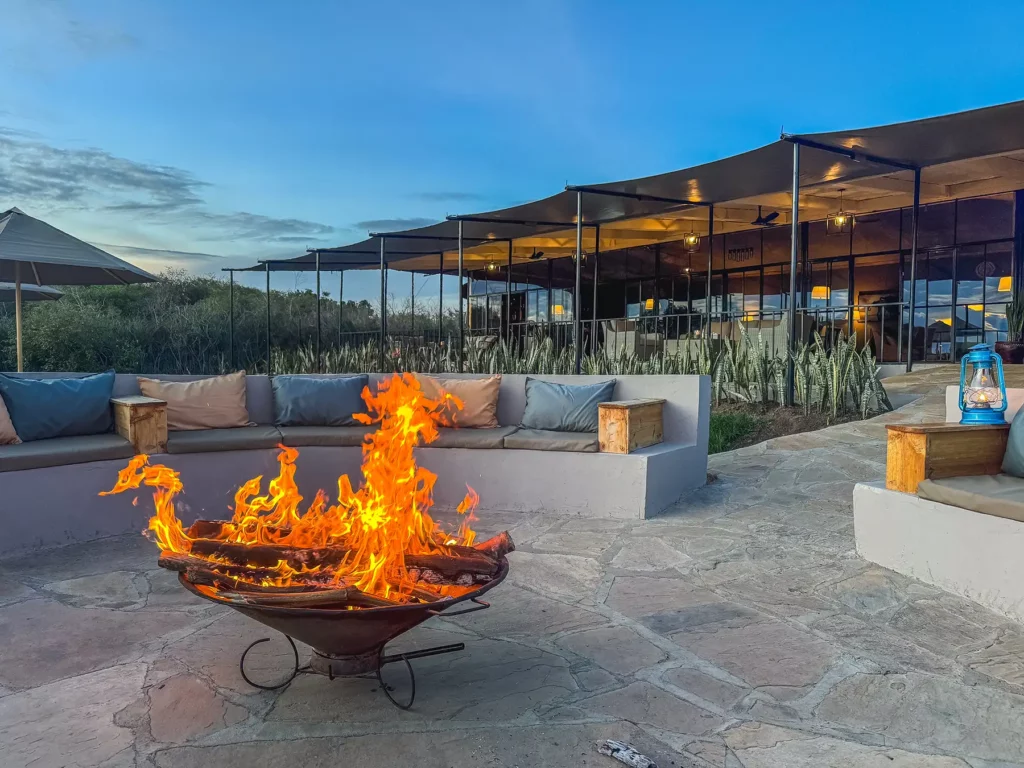
Safari Lodges & Hotels
There are a range of lodges to stay at in Serengeti and I’ve listed some of the main ones below:
The Four Seasons Serengeti Safari Lodge is located in Seronera, central Serengeti, around 45 minutes drive from Seronera airstrip. The lodge is luxurious with an infinity pool overlooking a waterhole frequented buy wildlife such as elephants.
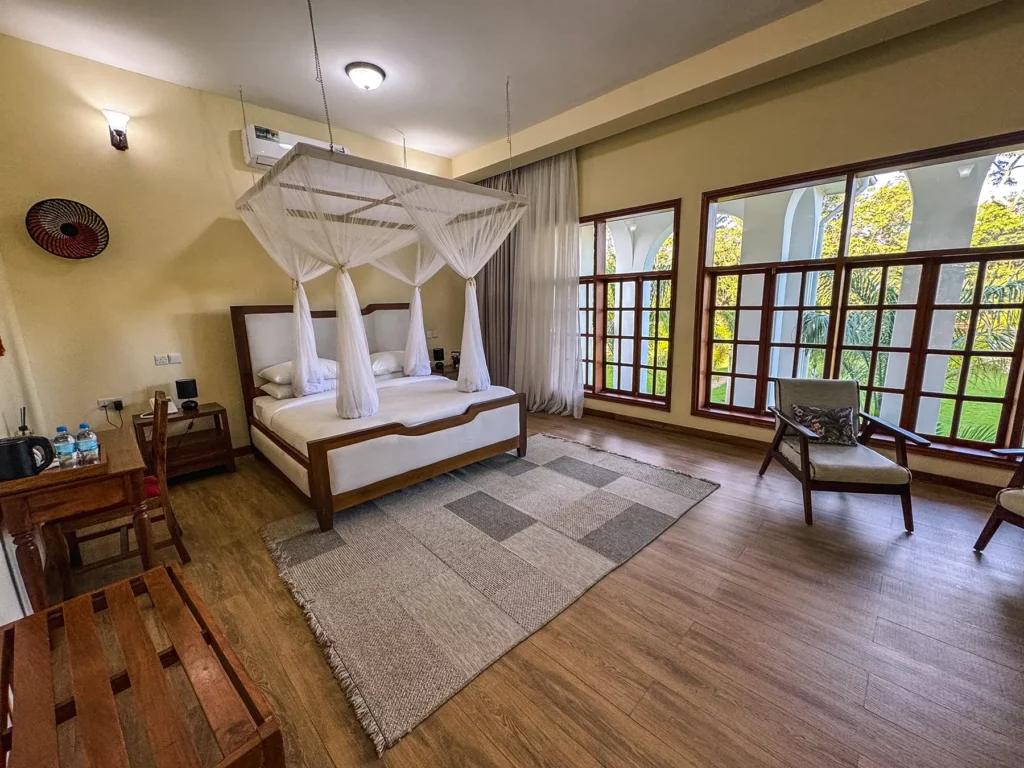
The Singita Sasakwa Lodge is situated within the 350,000-acre private Singita Grumeti Reserve, adjacent to the Serengeti National Park.
The lodge boats silver candelabras, Persian rugs, infinity pools and tennis courts. Guests have the choice of nine private and spacious cottages and a private villa away from the main lodge for that private romantic getaway.
Serengeti Serena Safari Lodge is located in central Serengeti and around 35-minutes drive from Seronera Airstrip. The mid-range accommodation offers individual domed rooms and a swimming pool overlooking the savanna.
The Nomad Lamai Serengeti is built high up on a pile of huge boulders on the northern plains of the Serengeti. Each of the eight rooms come with their own private veranda, offering stunning views of the landscape and wildlife that lie below. Being close to the Mara River, they provide the ultimate safari experience, arranging ringside seats along the river banks during the infamous crossings during the Great Wildebeest Migration.
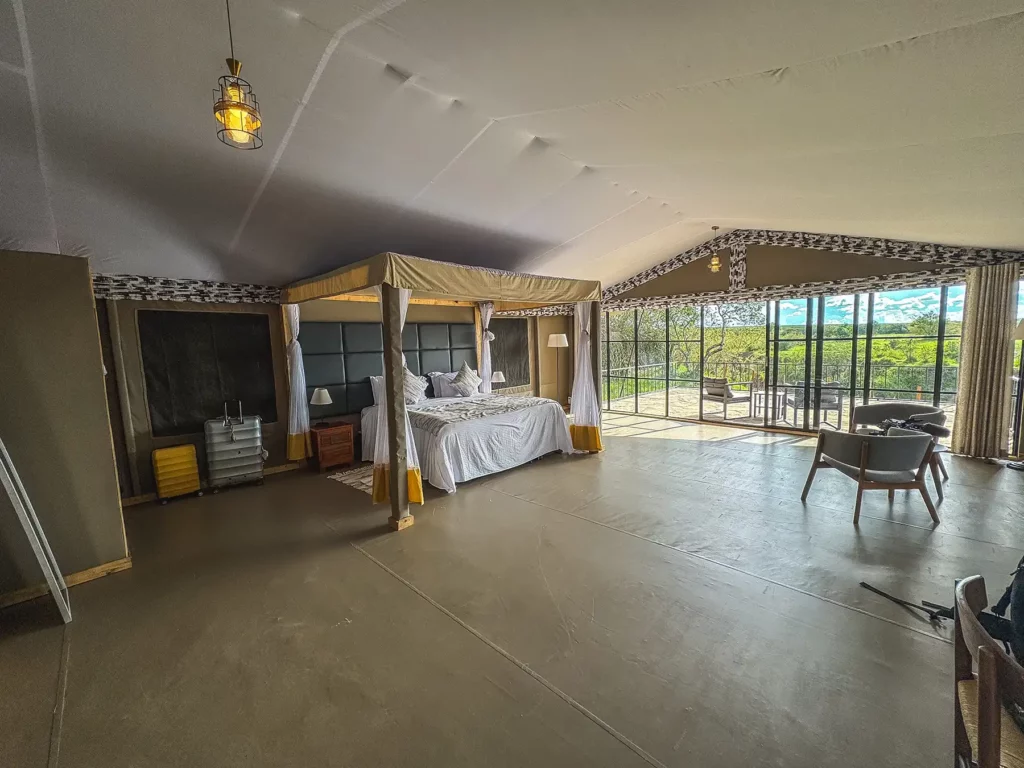
Tented Safari Camps
Tented camps are by far the most abundant type of accommodation in Serengeti. They’re also my favourite choice as sleeping under canvas allows you to feel close to nature and clearly hear the whooping of hyenas or roaring of lions as you sleep.
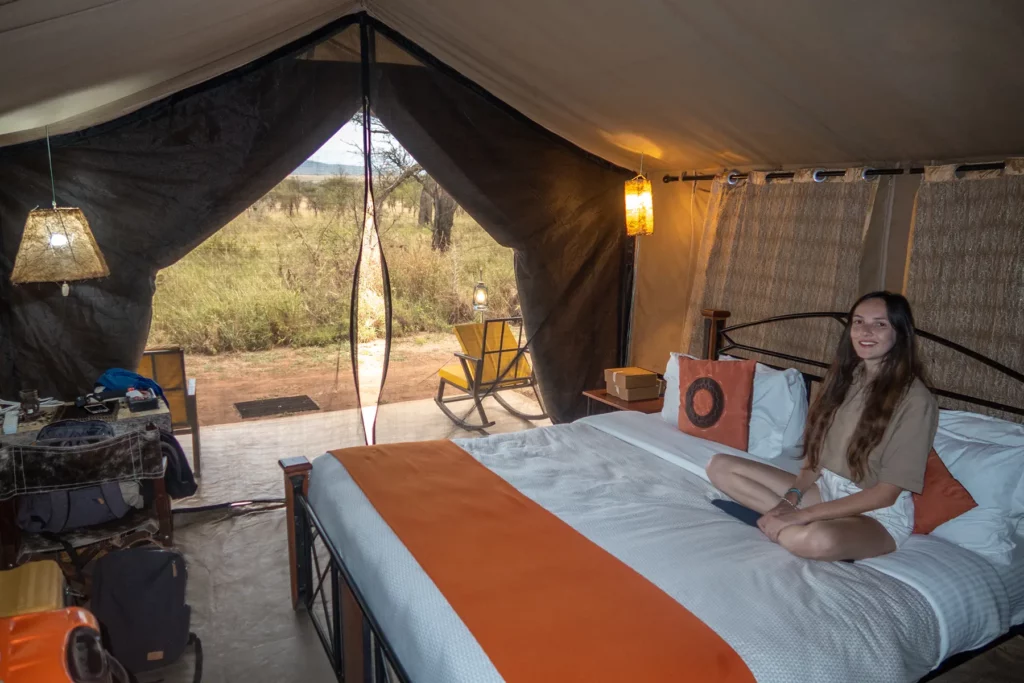
Tented camps seem to be improving every year and now many of them have replaced bucket showers with traditional showers with hot and cold water.
Tents typically have on-suite western-style flushing toilets and a sink with hot and cold water.
As you’d expect, tents also have lights and power sockets for charging your devices.
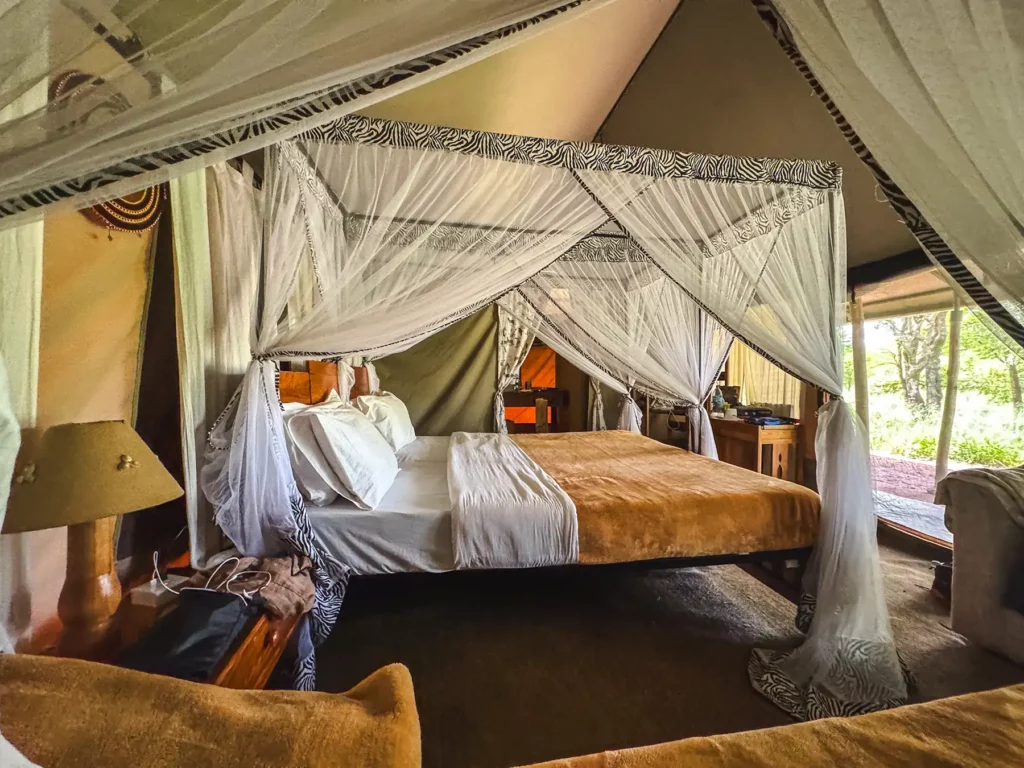
Wifi can be a bit hit and miss in my experience, it usually works some of the time and is good enough for emails and reading the news. It’s worth getting an e-sim on your phone as a backup.
The beds are usually very comfortable and I’ve had some of my best nights sleep in tented camps as the sound of nature is very relaxing.
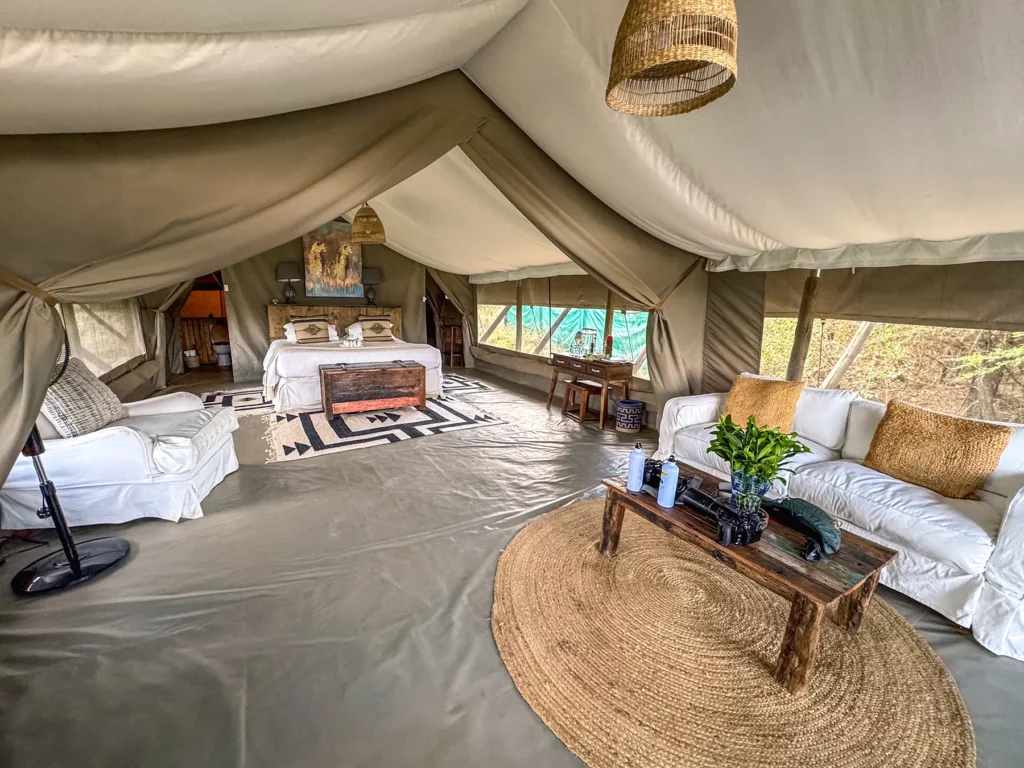
Mobile Camping
While there are numerous permanent lodges and campsites scattered everywhere within the Serengeti National Park, mobile camps also pop up at certain times of the year to allow visitors access to the remote areas along the Great Migration route. Sites and times may vary from season to season, which also depend on the weather patterns, which in turn dictate the start of the migration.
Mobile camps are set up along almost the entire migration route, following the herds from the very start in the south east, right up to the far north on the Kenyan border and beyond.
From December to April, they pop up in the south to allow their visitors to witness the calving season, before moving north west during May to July, and then to the far north from July to November and back to the south to begin this cycle all over again.
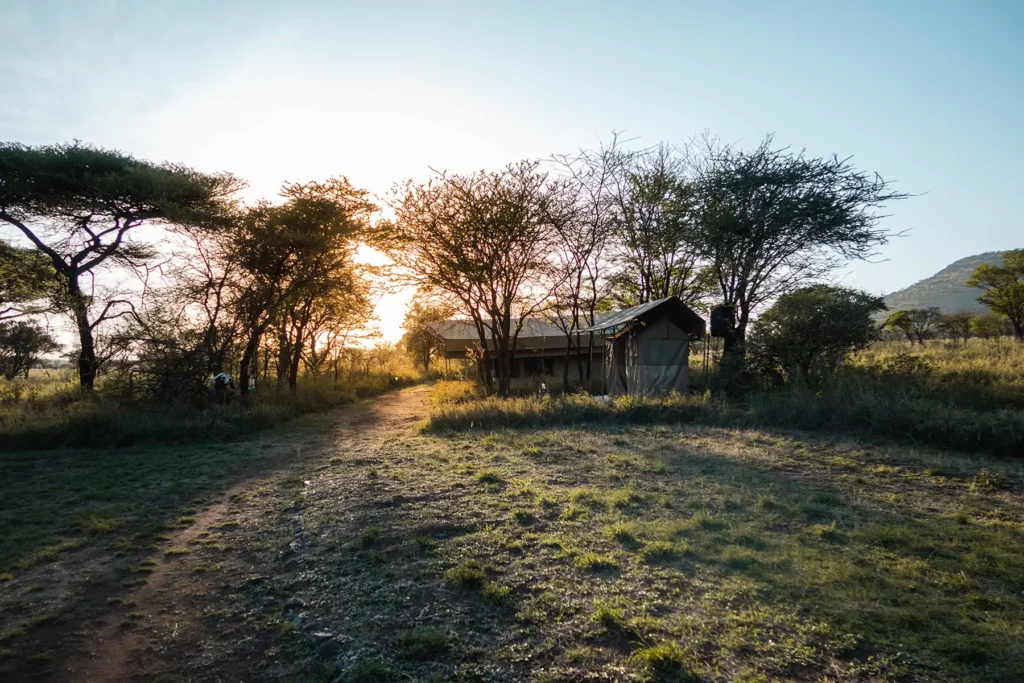
For people that don’t like ‘roughing it’, some of these camps provide a truly intimate experience of being in the heart of the jungle in the middle of nowhere but with all the luxuries of modern life thrown in. They offer daily excursions, game drives, walking safaris and even hot-air balloon rides taking you wherever the migration hotspots may be.
With only a sheet of canvas separating you from the wilderness of the Serengeti, you get to totally disconnect from the modern world and feel a true sense of adventure during every minute you spend out there.
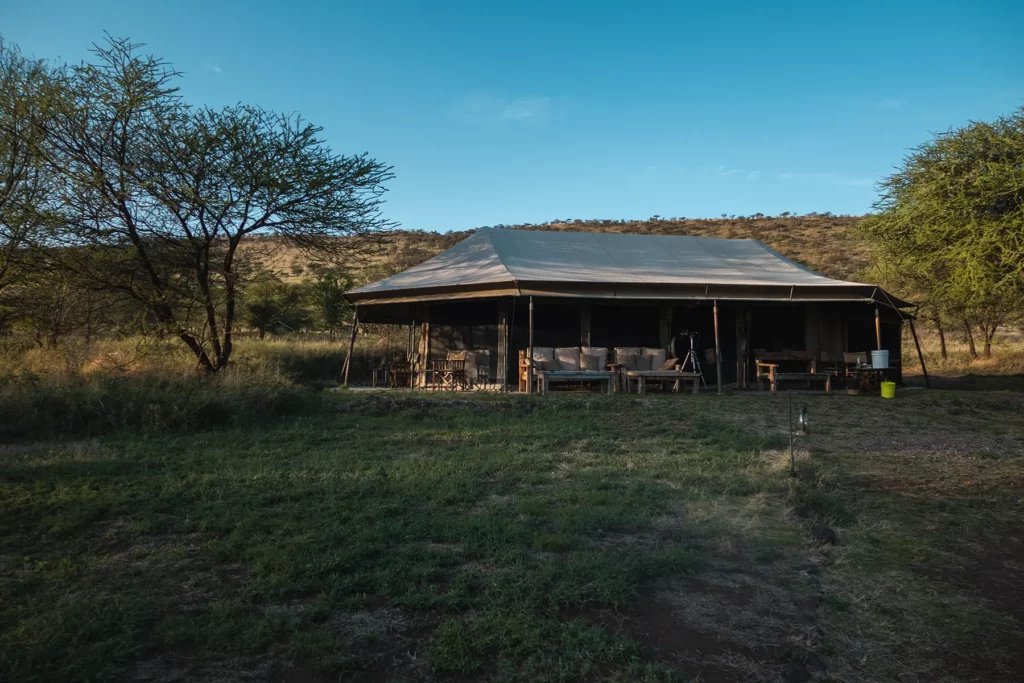
Basic Camping
The most budget-friendly way to spend the night in Serengeti is ground camping. Tents are basic, often with just enough room for you to roll out your sleeping bag and sit your duffel bag down beside it.
There are shared ablution facilities however they can be a little way away from your tent and are not always the cleanest.
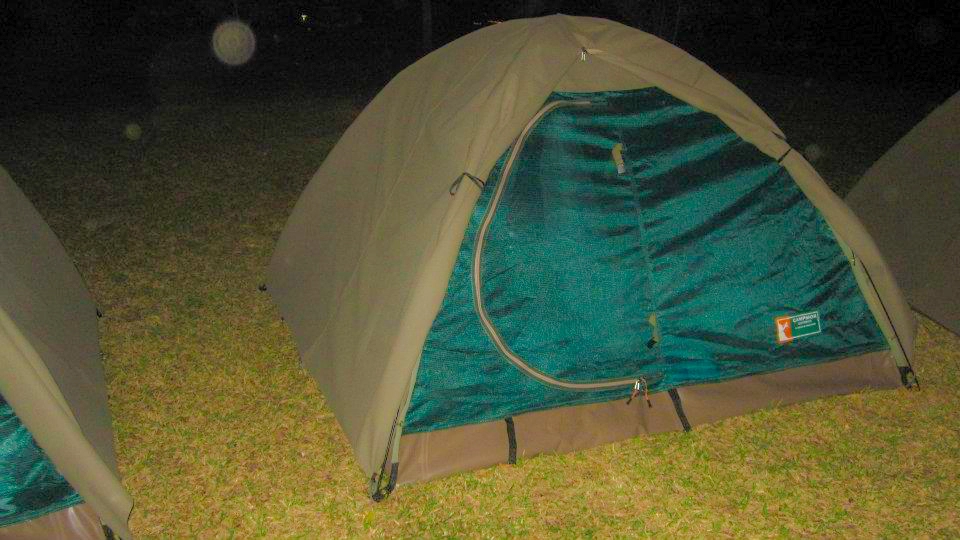
Campsites in Serengeti are unfenced and often unguarded so you need to be sensible as lions and hyenas have been known to wander through campsites in the night.
The Seronera area in the central district is a popular safari destination and has several campsites on offer. Most have modern style toilets and showers, covered areas for campers to enjoy a meal or a sundowner and as they are mostly unfenced, they have armed guards patrolling the premises 24/7.
One such campsite is the Ngiri Public Campsite, which offers really basic amenities such as cold water showers and running toilets in the shared ablution block, a large kitchen area and wide spacious lit up grounds. There are several more such camps situated almost next to this one.
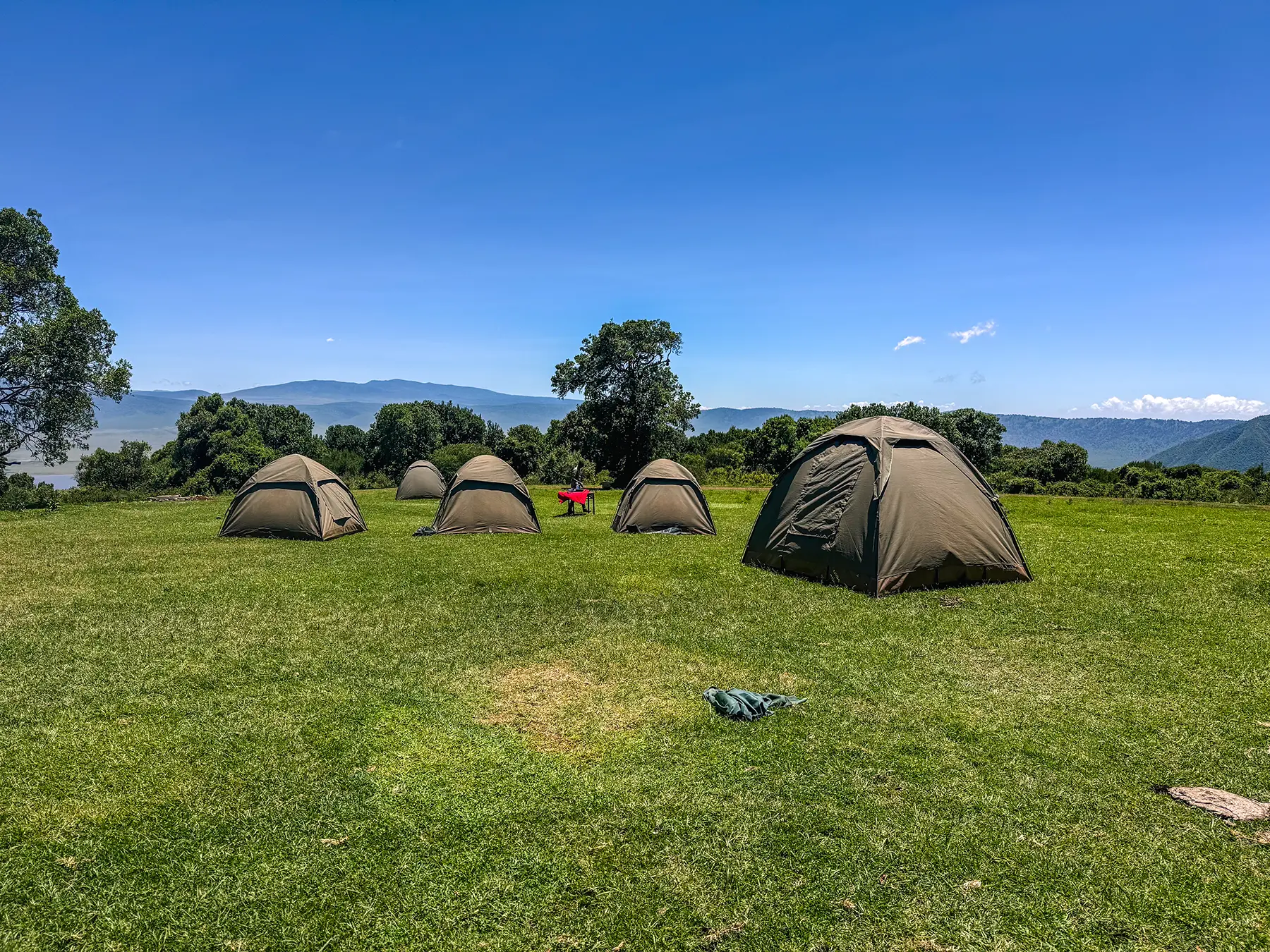
Save Time and Ensure an Incredible Safari Experience
Get quotes from the local safari companies I use to organise my own trips.
You’ll join the rapidly growing tribe of over 1,000 travellers who’ve booked their dream safari using my insider tips and recommendations.
Should I Stay Inside The Park?
When visiting Serengeti, staying inside the park really is a must.
The sheer size of Serengeti means it isn’t practical to stay outside the park. You’d have to spend hours journeying to and from your lodge outside Serengeti each day, missing the very best wildlife viewing times in the early mornings and late afternoons.
The closest town to Southern Serengeti (Ndutu region) is Karatu which is 116 kilometres away and takes 3 hours to drive to.
The closest town to Central Serengeti (Seronera) is Ikoma which is 60 kilometres away and takes 2 hours to drive to.
The closest town with hotels to Northern Serengeti (Kogatende) is Mugumu which is 57 kilometres away and takes 2 hours to drive to.
Distance isn’t the only issue with staying outside Serengeti. Leaving Serengeti actually invalidates your 24 hour entry fee and so your pass only lasts for as long as you’re in the park each day and you have to purchase a new ticket each time you enter. Therefore it’s debatable whether there are any cost savings to staying outside the park.
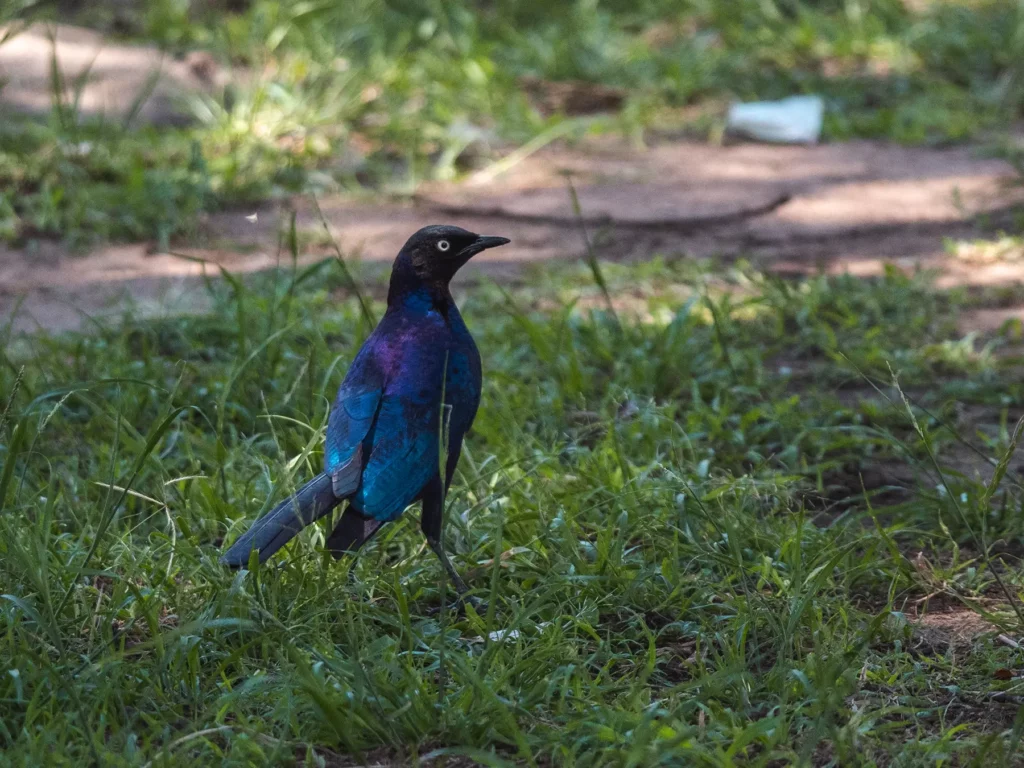
Staying inside the park in contrast provides a relaxing and magical experience. As you are surrounded by nature, the tented camps and lodges within the park are much more scenic than those outside of it. You can even spot wildlife from your tent – I saw giraffes, zebras and buffalos from my tent on my first visit to Serengeti and a pair of curious dik-diks just a few metres from my tent on my second visit.
At night you can fall asleep to the sounds of the bush. Lions, hyenas, zebras, buffalos and leopards are all animals that you can hear whilst you drift off. This is an experience you simply can’t have outside the park.
Top tip! Bring a trail camera on your safari with you and set it up on a tree at your lodge or camp. I’d recommend asking a staff member for recommendations on where to put it as they may know a spot that is an animal trail. Animals frequently wander round tented camps and lodges and so you may be lucky enough to capture some exciting wildlife on your camera. My trail cam has captured hyenas, honey badgers and even an African civet.
The best thing however about basing yourself within Serengeti is the easy access you have to the best game viewing areas. Sunrise and sunset are the best times to see animals in action so it’s a big bonus that you are able to reach the wildlife-dense areas so quickly and easily.
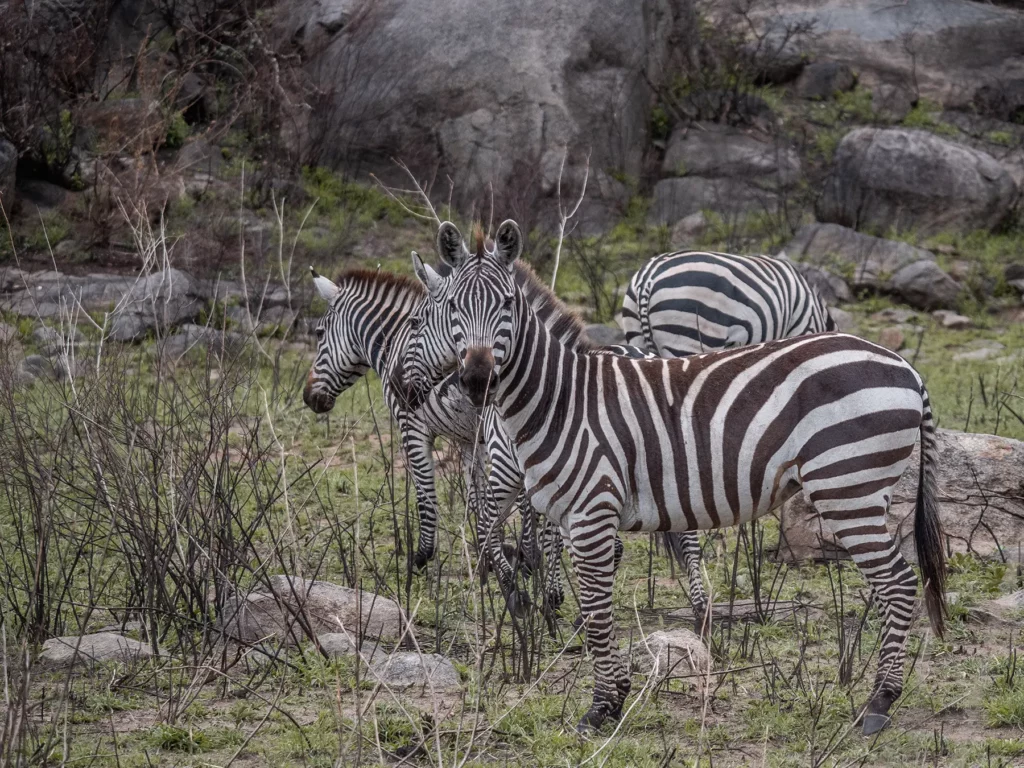
Save Time and Ensure an Incredible Safari Experience
Get quotes from the local safari companies I use to organise my own trips.
You’ll join the rapidly growing tribe of over 1,000 travellers who’ve booked their dream safari using my insider tips and recommendations.
Getting to the Serengeti
The Serengeti is a 1 hour flight on a small propeller plane or a 6 hour drive from Arusha. Below I’ll cover everything you need to know about getting to the Serengeti National Park.
What City is Closest to Serengeti?
The largest city near the Serengeti is Arusha, which houses the only international airport in northern Tanzania (Kilimanjaro International Airport).
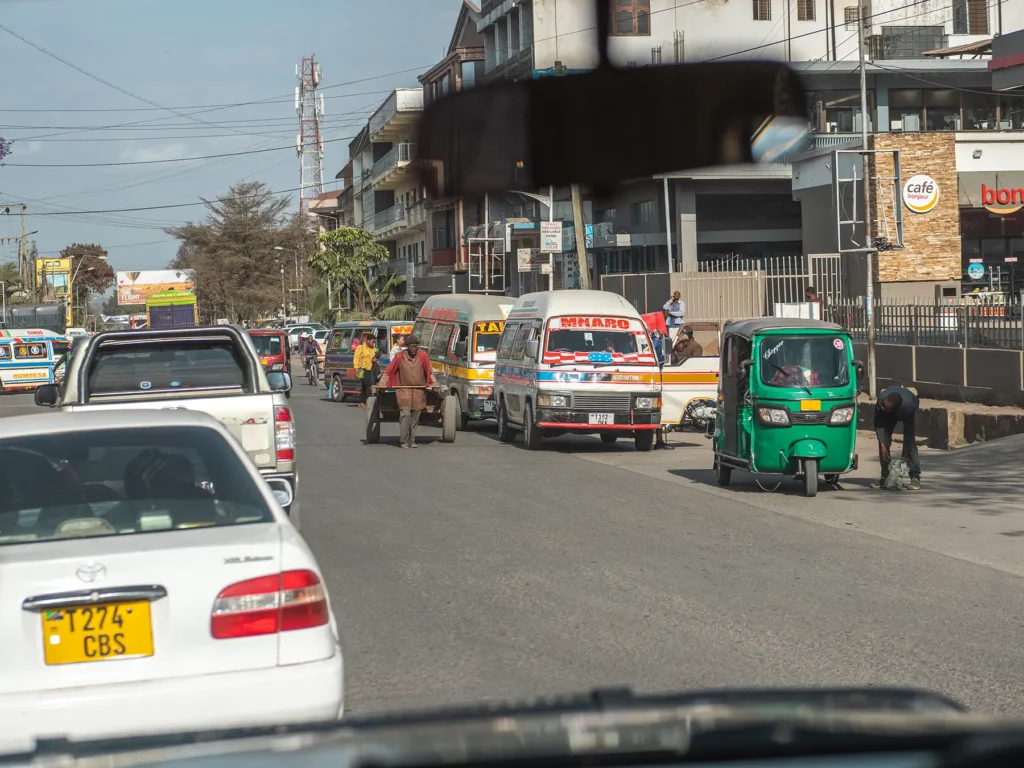
Where Do You Fly to Get to Serengeti?
There are several options when it comes to flying to Serengeti.
The first and most popular option is to fly to Kilimanjaro International Airport in Arusha and then travel by road to your lodge or camp in the Serengeti. Depending on exactly where in the Serengeti you’ll be going, the trip could take up the better part of the day. Due to the extreme distances involved, I actually wouldn’t recommend driving to Northern Serengeti straight from Arusha – you’ll need to stop for a night in Central Serengeti or Ngorongoro on the way.
Bear in mind that the roads are often not in great shape and the trip can be a little uncomfortable to say the least, especially after a long international flight, leaving you totally exhausted when you finally arrive. I’d therefore always recommend spending one night in Arusha before your drive to Serengeti, giving you some time to recover from your flight and overcome any jet lag.
Flying to Kilimanjaro International Airport and then driving is the most cost-effective way to reach Serengeti.
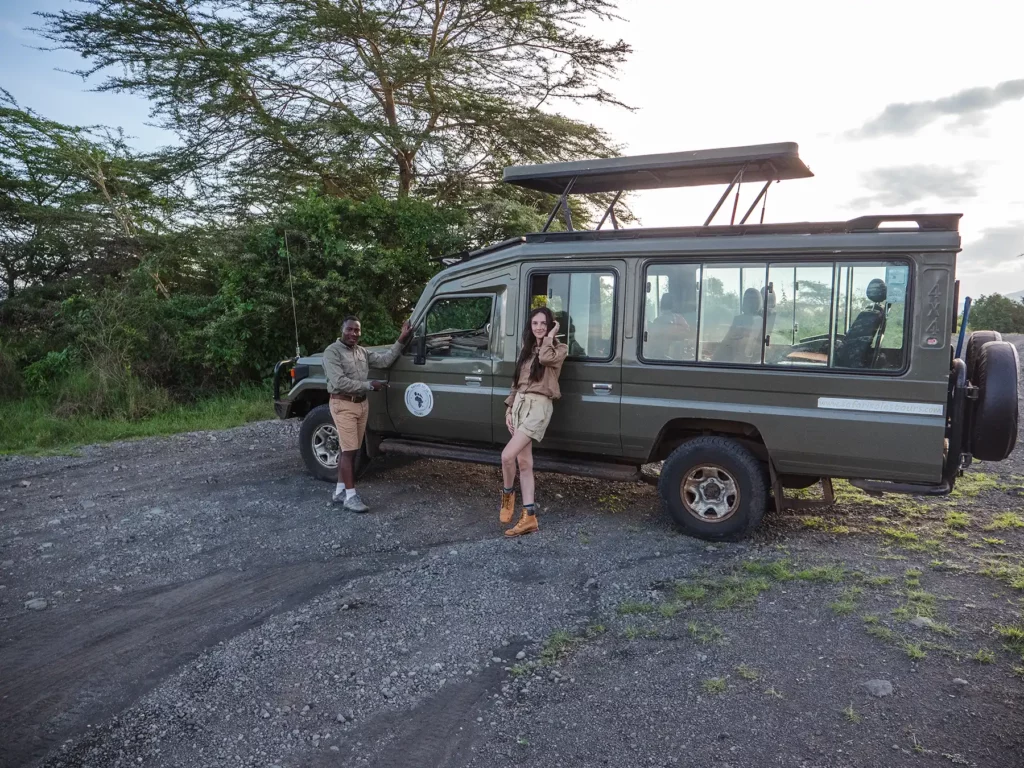
The other option is to fly on a smaller plane from Kilimanjaro Airport or Arusha Airport direct to one of Serengeti’s airstrips. Flights don’t take too long, around an hour, saving you a lot of time. They are however quite expensive at $300 per person per flight.
Serengeti has a number of airstrips. The closest airstrip to Central Serengeti is Seronera Airstrip, the closest to Southern Serengeti is Ndutu Airstrip and the closest to Northern Serengeti is Kogatende.
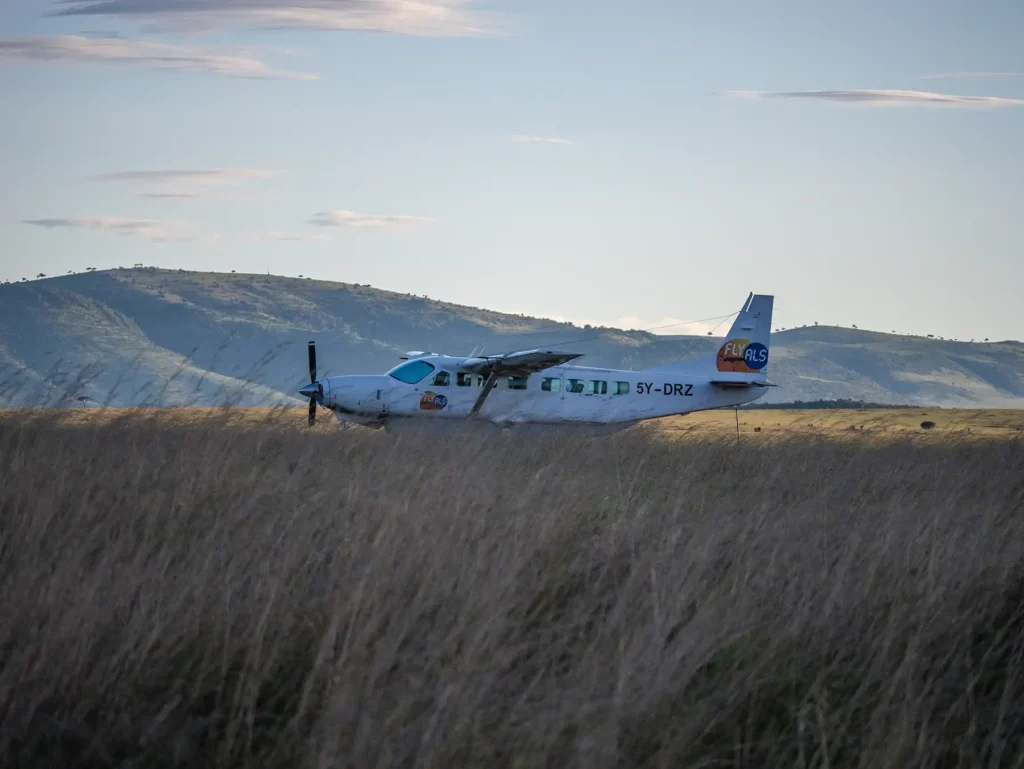
Is Kilimanjaro Close to Serengeti?
The most popular airstrips in the Serengeti National Park are Kogatende in the extreme north and Seronera in the central district. Both lie approximately 280 and 250 kilometres respectively from Kilimanjaro International Airport just outside Arusha, which is the most popular landing point of entry for visitors to the Serengeti.
Flight times from Kilimanjaro and Arusha airports to these two airstrips will be approximately 90 minutes.
It takes 6 to 8 hours to journey to Central Serengeti by road from Kilimanjaro International Airport.
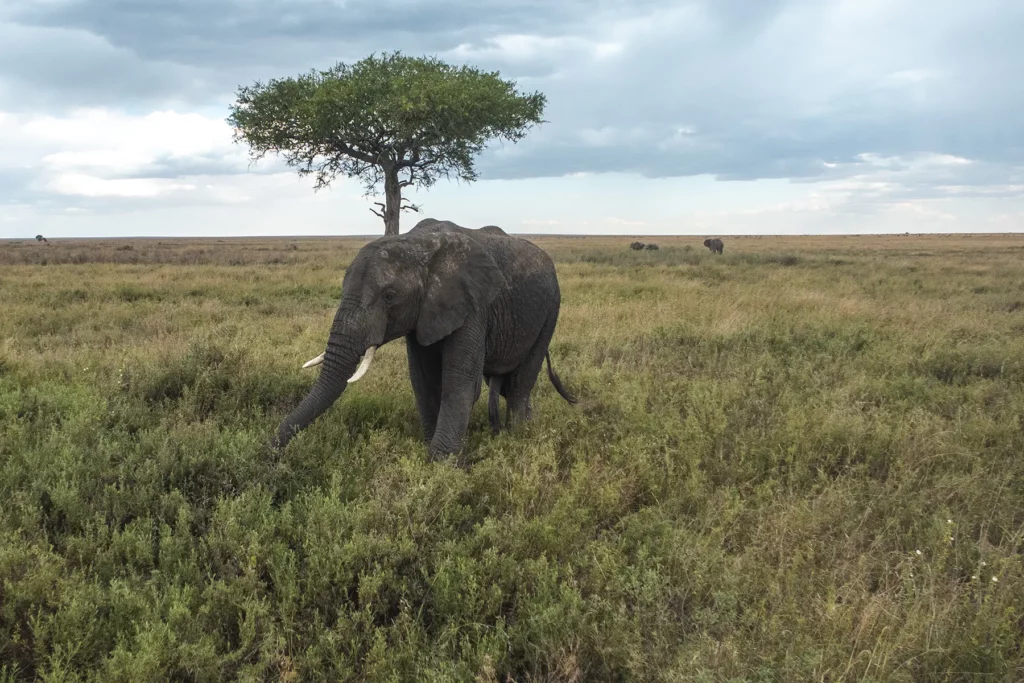
Shuttle Flights to Serengeti National Park Airstrips
The Serengeti, being a major tourist destination of Tanzania, is served by several airlines that fly regularly to and from a number of airstrips across the entire ecosystem. Without them, many lodges, camps and safari operators would simply not exist.
Some of these airlines include Flightlink, Auric Air, Regional Air, ZanAir Tropical Air and Air Excel. Some of them fly on specific shuttle routes to and from certain airports and airstrips in the Serengeti. Many airlines have daily flights during the high season while other times of the year they may not be as regular.
Below is a list of the main airstrips in the Serengeti that are serviced by these domestic airlines.
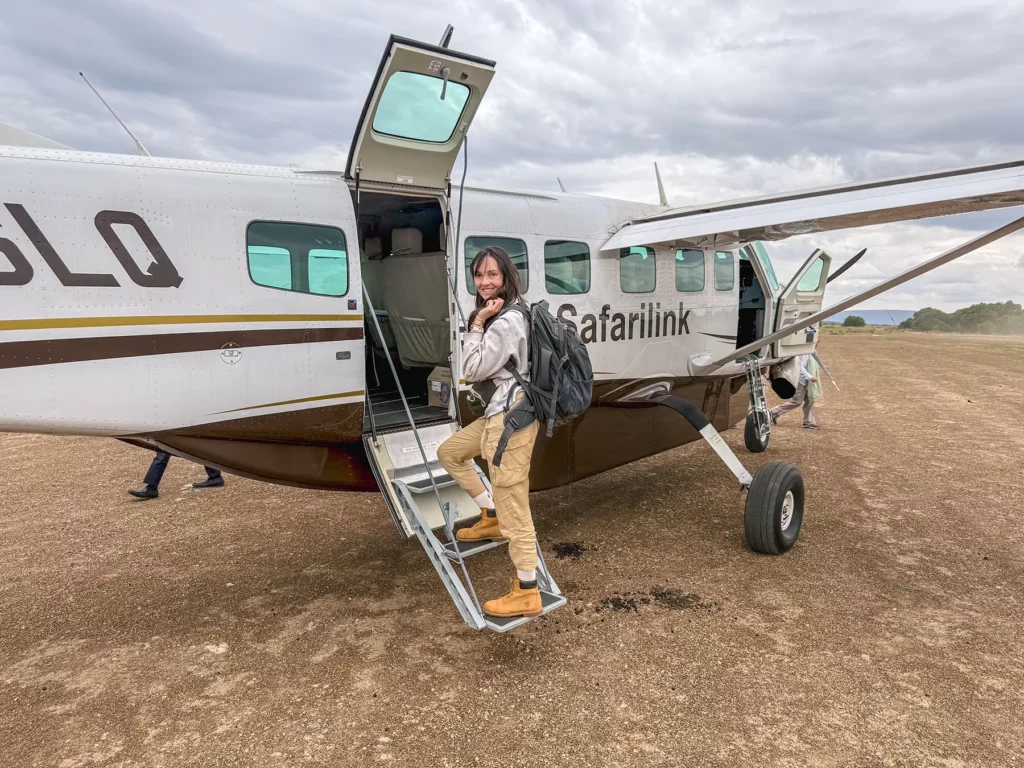
Seronera Airstrip (Central)
The Seronera airstrip serves a major tourist area within the Serengeti and plays a vital role in the existence of many safari lodges in the south and central regions of the park. Auric Air has two daily shuttle flights to Seronera and several other airstrips and is always a reliable choice.
The morning flight leaves Arusha at 8:00 am, stopping at Manyara Kuro and Ndutu before arriving at Seronera at 9:20 am. The second flight leaves at 10:30 am, flying the same schedule and lands at Seronera at 2:30pm.
Air Excel also flies two daily flights from Arusha and one from Kilimanjaro. The Arusha flights are from 8:00 am to 10:50 am and from 9:30 to around 12:30 pm.
Additional daily flights by various airlines also serve Seronera from Arusha Domestic Airport and flight times are usually an hour long but vary, depending on the number of hops at other airstrips.
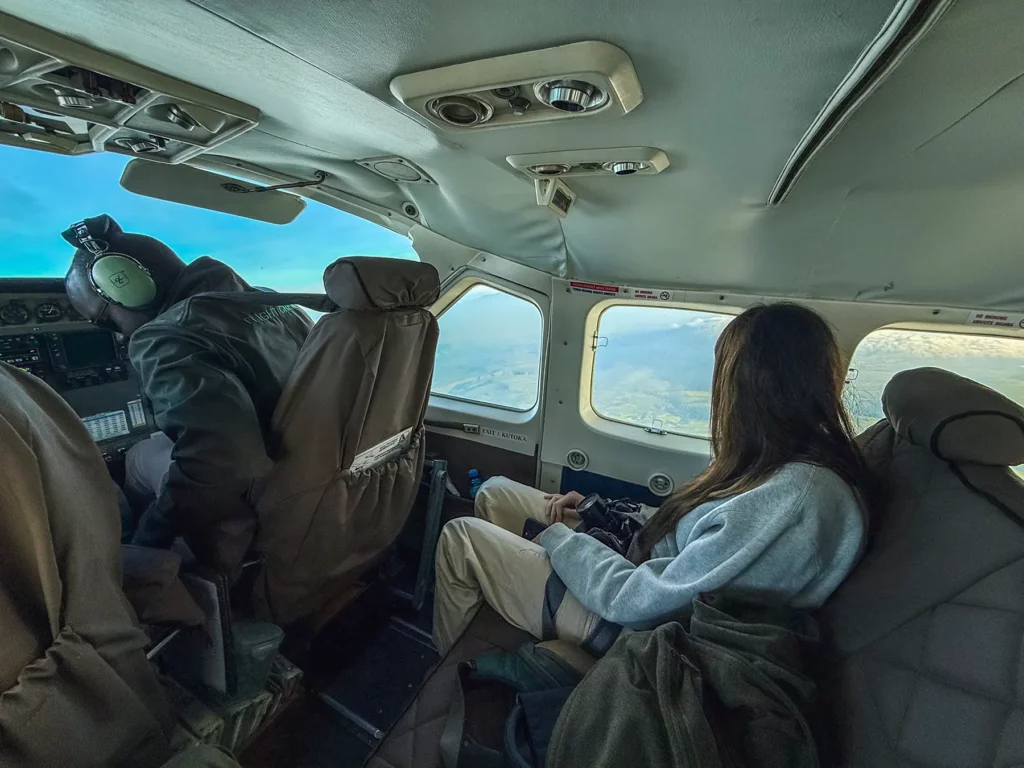
Kogatende Airstrip (Northern)
The Kogatende Airstrip is also a vital part of the safari tourism industry, providing easy access to the otherwise remote northern area of the Serengeti.
Auric Air provides two daily flights, from Arusha, leaving at 8:00 am and 10:30 am arriving at 10:00 am and 1:30 pm respectively, after stopping at several other airstrips.
Air Excel also offers two daily flights leaving Arusha Domestic Airport at 8:00 am and 9:30 am, arriving at Kogatende at 10:00 am and 12:30 pm respectively.
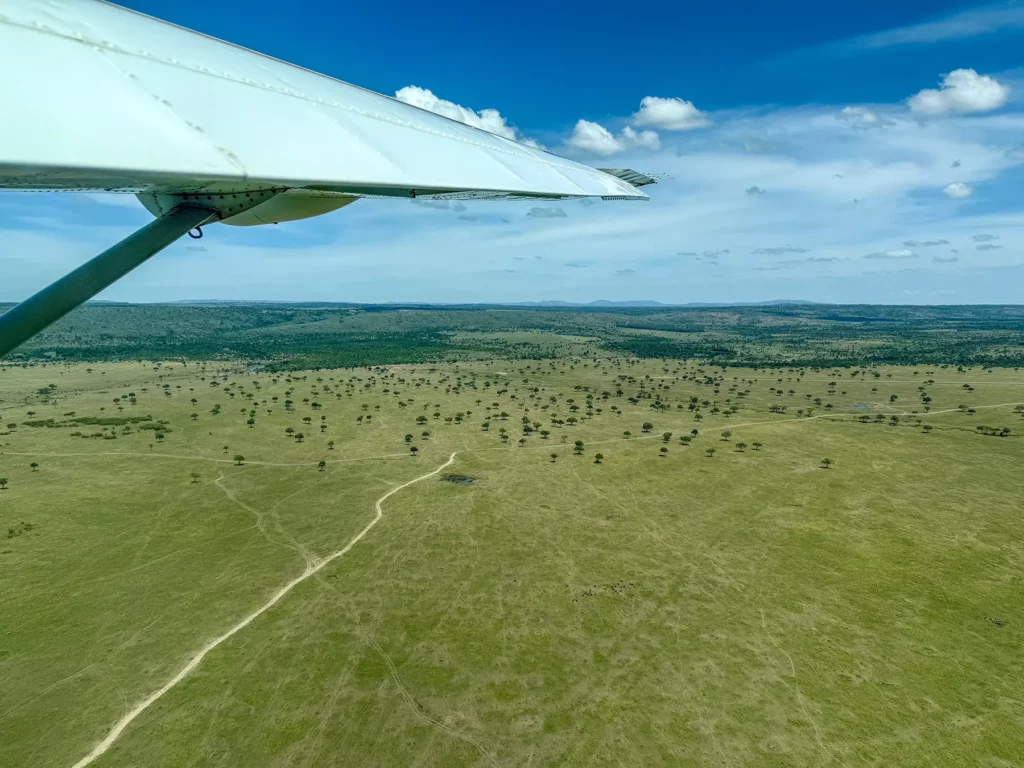
Fort Ikoma (Western)
Fort Ikoma located on the Western Corridor is serviced by some of the above mentioned airlines, but it’s very seldom used as it lies a mere 40 kilometres from the popular and more frequently used Seronera Airstrip.
Nevertheless, Air Excel flies one daily flight from Arusha leaving at 8:00 am and landing at 10:35 am, but it’s always wise to check availability well in advance as some airstrips in the Western Corridor of the Serengeti are remote and very seasonal.

Kirawira B Airstrip (Western)
Also situated along the Western Corridor just north of the Grumeti River within the Grumeti Game Reserve, Kirawira B Airstrip serves this area well particularly during the annual migration.
While several airlines use this airstrip, Air Excel has a daily shuttle flight from Arusha, taking off at 8:00 am and landing at approximately 10:15 am, depending on the number of stops along the route.

Lobo Airstrip (North Eastern)
Serving the north eastern remote districts of the Serengeti, Auric Air flies to the Lobo Airstrip twice daily from Arusha at 8:00 am and 10:30 am and landing at 10:00 am and 1:30 pm.
Air Excel also flies two daily flights from Arusha leaving at 8:00 am and 9:30 am arriving at Lobo at 9:35 am and around midday.
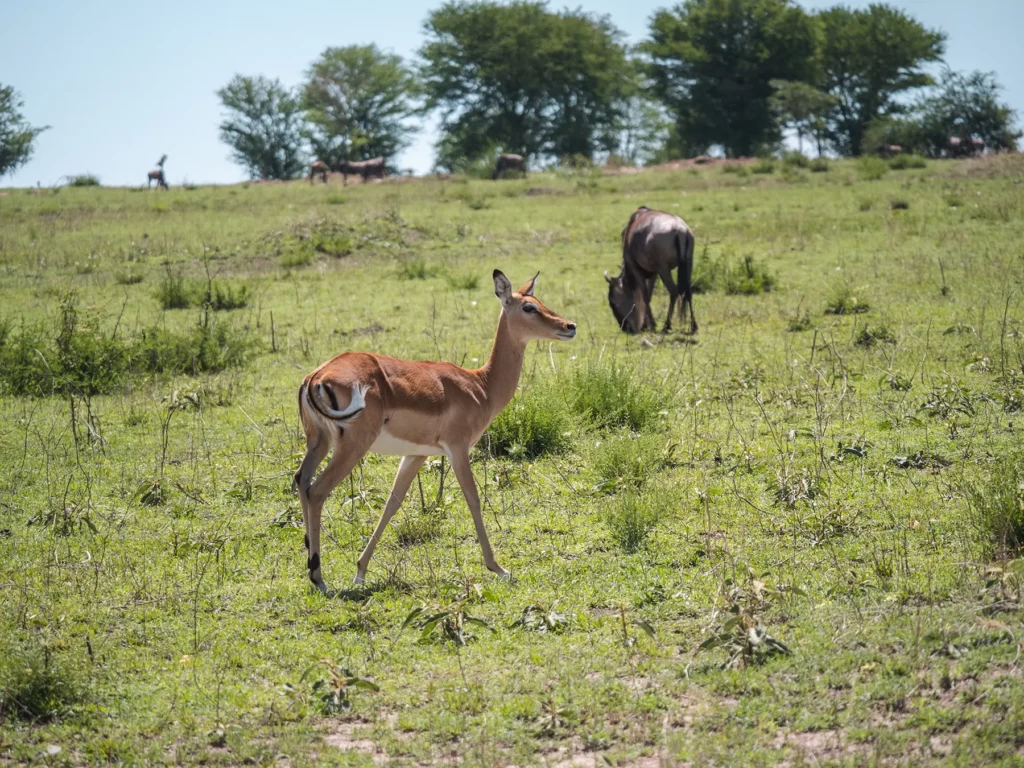
Kusini Airstrip (Southern)
Kusini Airstrip serves a vital purpose providing easy access to the southern plains of the Serengeti for many visitors particularly during January and February, which is the famous calving season. It also serves the Sanctuary Kusini Camp and the Maswa Game Reserve, which lies only nine kilometres to the south.
It is well served by regular flights from several domestic airlines from Arusha, including Air Excel, which leave at 8:00 am and 9:30 am landing about two hours later.

Ndutu Airstrip (Ngorongoro Conservation Area, just outside Naabi Hill Gate)
The Ndutu Airstrip is also a vital link not only to the Serengeti but also to Tanzania’s other national treasure, the Ngorongoro Conservation Area. Air Excel fly two daily flights from Arusha at 8:00 am and 9:30 am landing two and half hours later, after stopping off at various other airstrips.
Auric Air offers two daily flights to Ndutu Airstrip taking off from Arusha Domestic Airport at 8:00 am and 10:30 am, and landing at 9:05 am and 12:30 pm respectively.

Save Time and Ensure an Incredible Safari Experience
Get quotes from the local safari companies I use to organise my own trips.
You’ll join the rapidly growing tribe of over 1,000 travellers who’ve booked their dream safari using my insider tips and recommendations.
Serengeti & Zanzibar for Safari and Beach
Many visitors to Tanzania love to combine safaris on the mainland with a spot of relaxation in the picturesque island of Zanzibar.
And with the warm clear waters of the Indian Ocean and the exotic Zanzibar Islands being just a four hours’ flight away, combining an epic safari holiday with a tropical island paradise, makes a lot of sense.
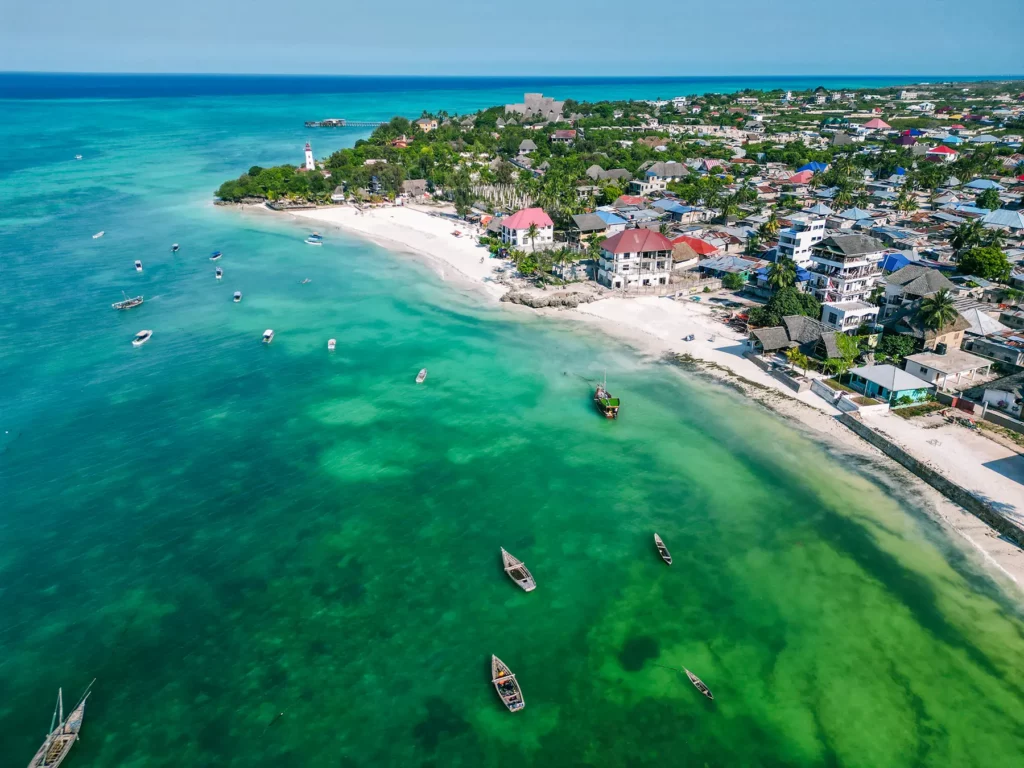
How Do I Get From Serengeti to Zanzibar?
It’s very easy to journey from Serengeti to Zanzibar with frequent flights connecting the two destinations. You can fly from Serengeti using the Seronera, Kogatende and Grumeti airstrips direct to Zanzibar, or fly to Arusha and from there, catch a connecting flight to Zanzibar.
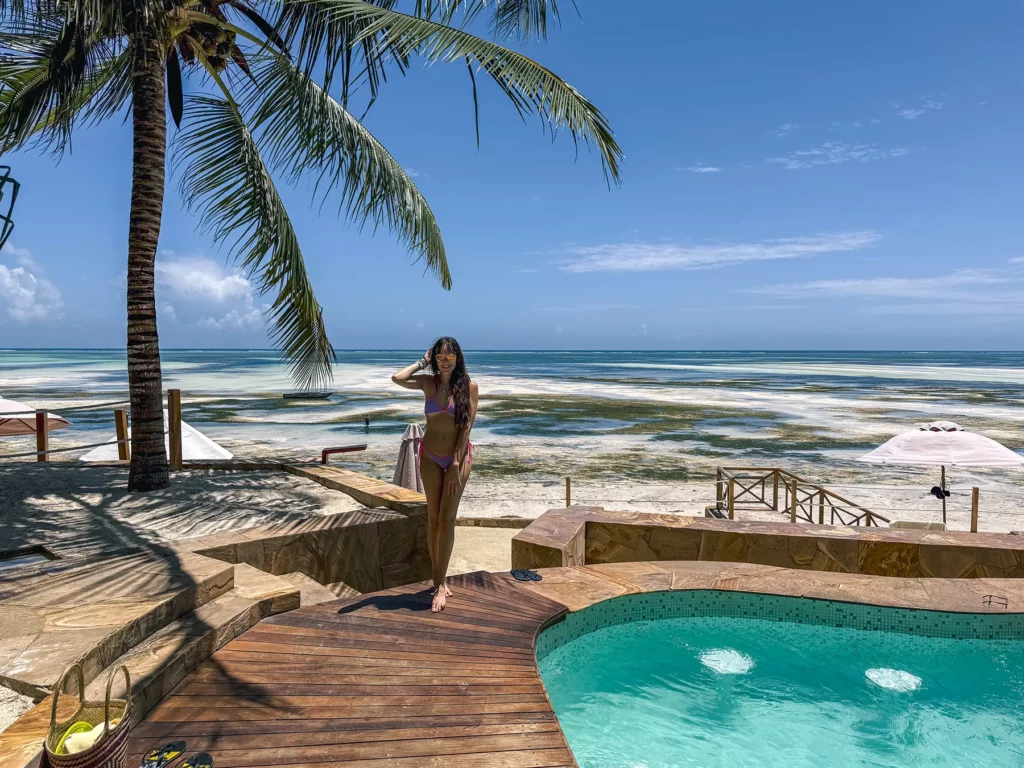
How Long Does it Take to Fly from Zanzibar to Serengeti?
Direct flights from the Serengeti to Zanzibar take between three and four hours, depending from which airstrip you depart, while flights from Arusha take a mere 90 minutes.
Flightlink and Coastal Aviation are just two airlines that provide regular and efficient services to and from Zanzibar.
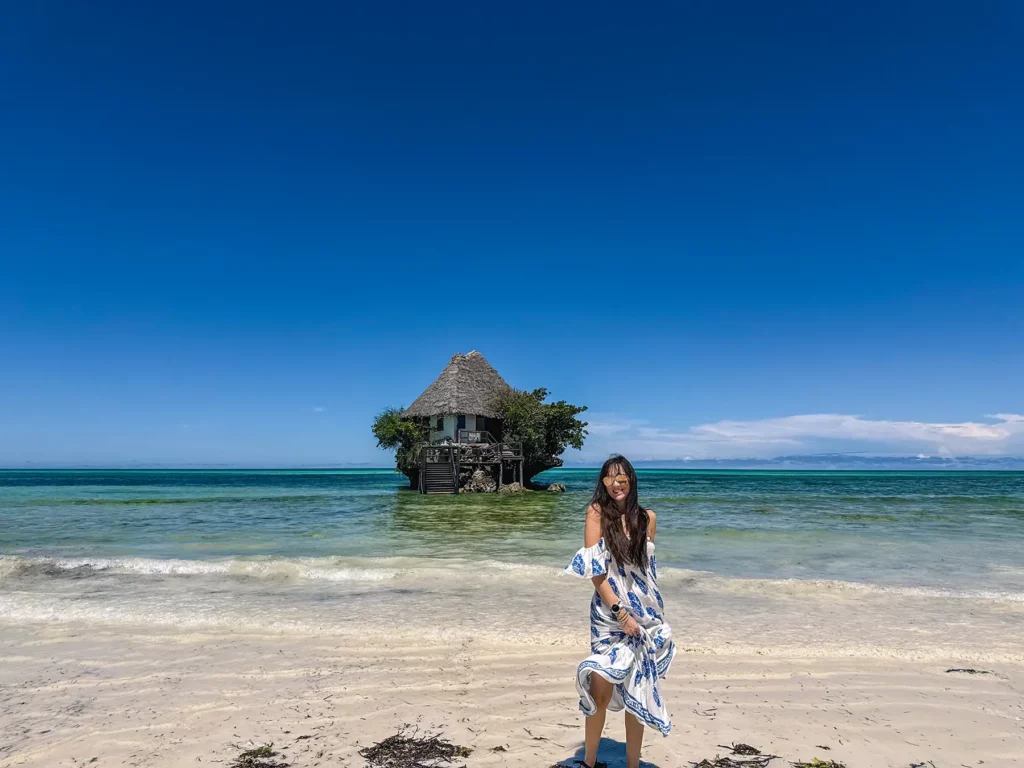
How Many Days Do You Need in Tanzania and Zanzibar?
In my opinion you need a minimum of 5 days on safaris and at least 2 days on Zanzibar to really make the most of the different destinations. Spending just one night in Zanzibar simply isn’t enough as you really need at least one full day to see the highlights.
Whilst it’s certainly possible to enjoy a 3-day safari in Tanzania, adding an extra couple of days means you can experience my three favourite destinations comfortably: Serengeti, Ngorongoro Crater and Tarangire.
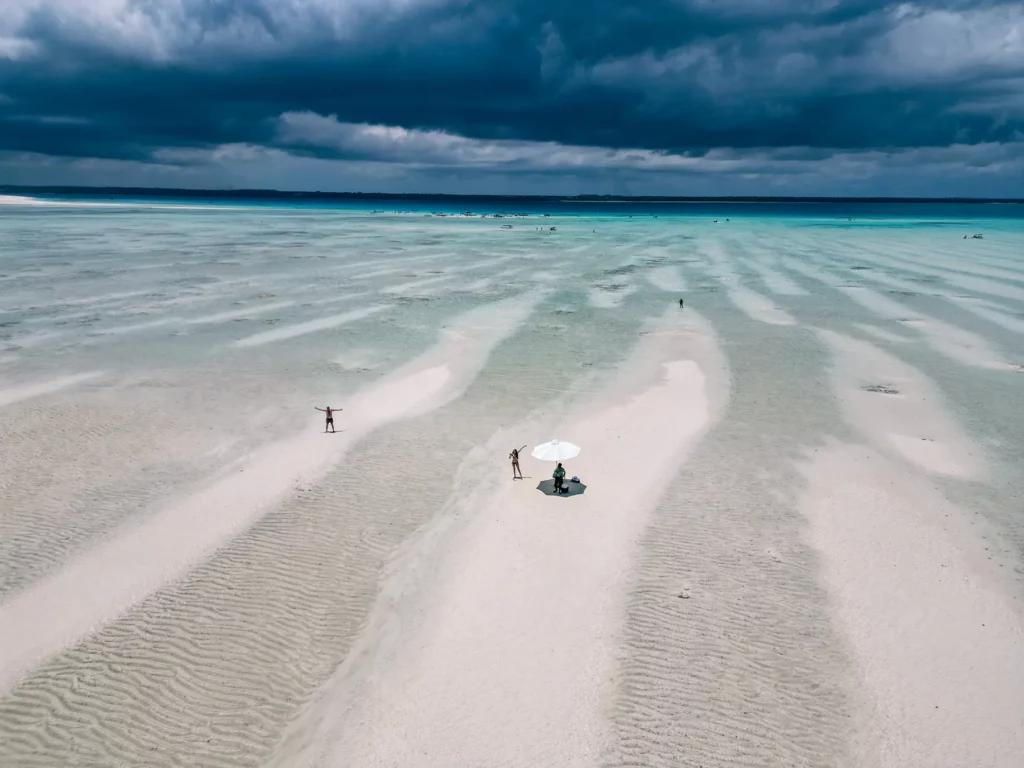
Save Time and Ensure an Incredible Safari Experience
Get quotes from the local safari companies I use to organise my own trips.
You’ll join the rapidly growing tribe of over 1,000 travellers who’ve booked their dream safari using my insider tips and recommendations.
How Does the Serengeti Compare with Other Safari Parks?
Serengeti is honestly one of my favourite safari destinations in the world. It just has it all! From its vast and varied landscape to housing the Great Wildebeest Migration, from having a high density of predators to being one of the few places in the world where you can see tree-climbing lions, there really is so much going on in this beautiful ecosystem.
But there are other safari destinations out there that are also well worth visiting and which also rank high on my favourites list. How does Serengeti compare with them?

Which is Better, Maasai Mara or Serengeti?
Quick Comparison
Size: Winner: Serengeti is nearly 10 times the size of the Maasai Mara.
Wildlife: Draw: Both excellent and feature Great Wildebeest Migration.
Travel times: Winner: Masai Mara is easier to access.
Costs: Winner: Serengeti is now cheaper as Masai Mara price increase in 2023.
Good to Know: Both Serengeti and Maasai Mara are actually part of the same ecosystem separated by the country border with the Masai Mara being the part of the ecosystem in Kenya and Serengeti being the part of the ecosystem in Tanzania.
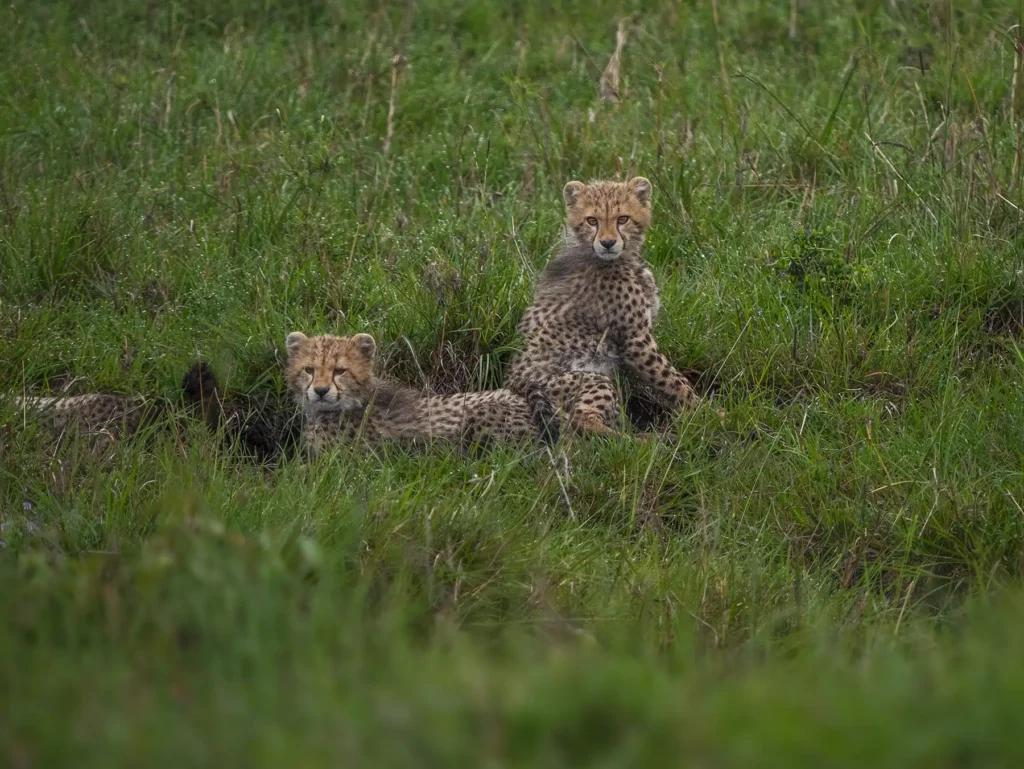
The Maasai Mara and Serengeti are part of the same ecosystem, the Maasai Mara sitting at the northern tip of the Serengeti. As a result, there are quite a few similarities between them. At the same time, however, I found them to be very different in some aspects.
Firstly, the Serengeti is nearly 10 times the size of the Maasai Mara and so everything is a lot more spread out. It can take close to 10 hours to journey from one side of Serengeti to the other. This has little effect on how spread out the wildlife is as predators have fixed territories and herbivores are abundant in all corners of the park. However, one benefit of Serengeti being bigger is that vehicles can spread out more easily meaning the roads aren’t as congested and in theory you won’t get as many people at sightings.
Another key difference I found was how vehicles behave in the reserves. Whilst it’s not strictly permitted to leave the roads in either Serengeti or Maasai Mara, I found that drivers were going off-road in the Maasai Mara a lot more frequently than they were in Serengeti. Whilst this allows you to get closer to the wildlife, it means that there can be more vehicles in your photographs and, most importantly, it bothers me as sometimes the wildlife can get hemmed in if there are lots of vehicles going off-road at one sighting.
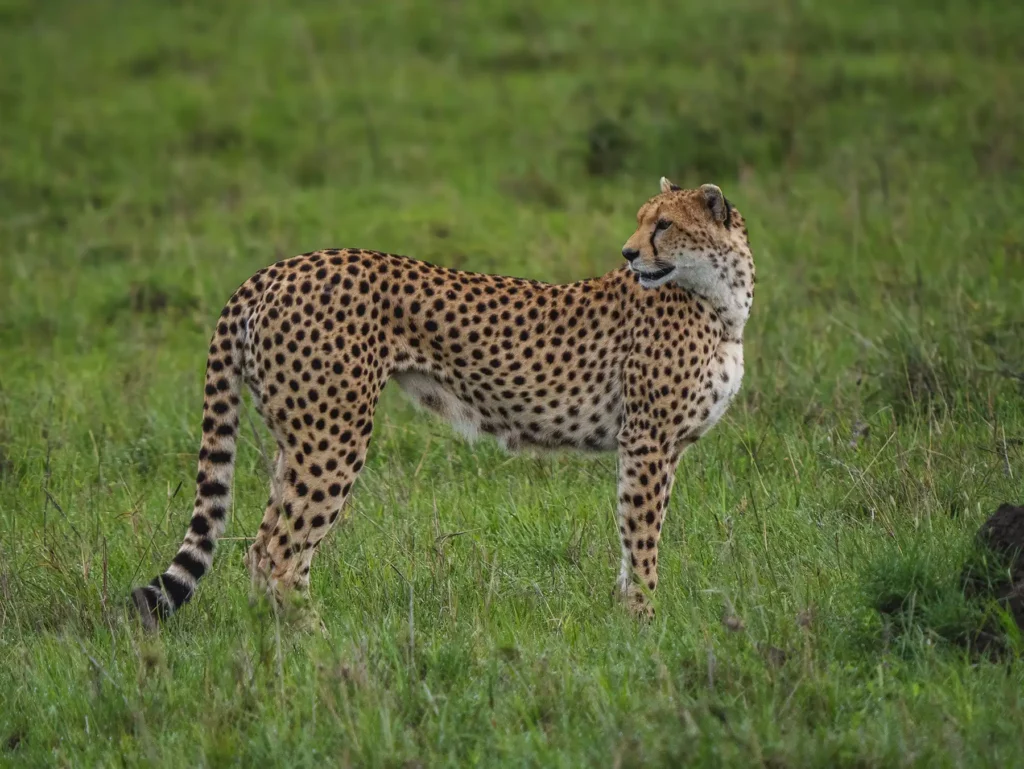
There are a lot more roads in the Maasai Mara compared to Serengeti meaning you can pretty much go anywhere in the Maasai Mara, so it’s baffling why so many people even feel the need to go off-road. I guess it mostly comes down to drivers wanting to impress their guests as much as possible and thus get a better tip.
A benefit of the extensive road network in the Maasai Mara means that you can always get close to the action without the need to go off-road. A drawback is that other vehicles can easily spoil photos and your view of the landscape as they can go everywhere.
One of the most notable differences between the Serengeti and Maasai Mara for me was the landscape. For the most part the Maasai Mara is completely flat, overlooked by a beautiful rift valley wall to the west. The grass is often short and bushes are few and far between. The wide open plains are broken up by the occasional lonely acacia tree which actually brings us to how the Mara got its name. ‘Mara’ means ‘spotted’ in the local Maasai language – the savannah is spotted with acacias.
In contrast, the Serengeti has a more varied landscape. Seronera in Central Serengeti is particularly different with frequent forest-coated hills and rocky kopjes. The grass can get quite long in places, largely due to there being a much larger area for herbivores to graze and so there isn’t as much over-grazing.
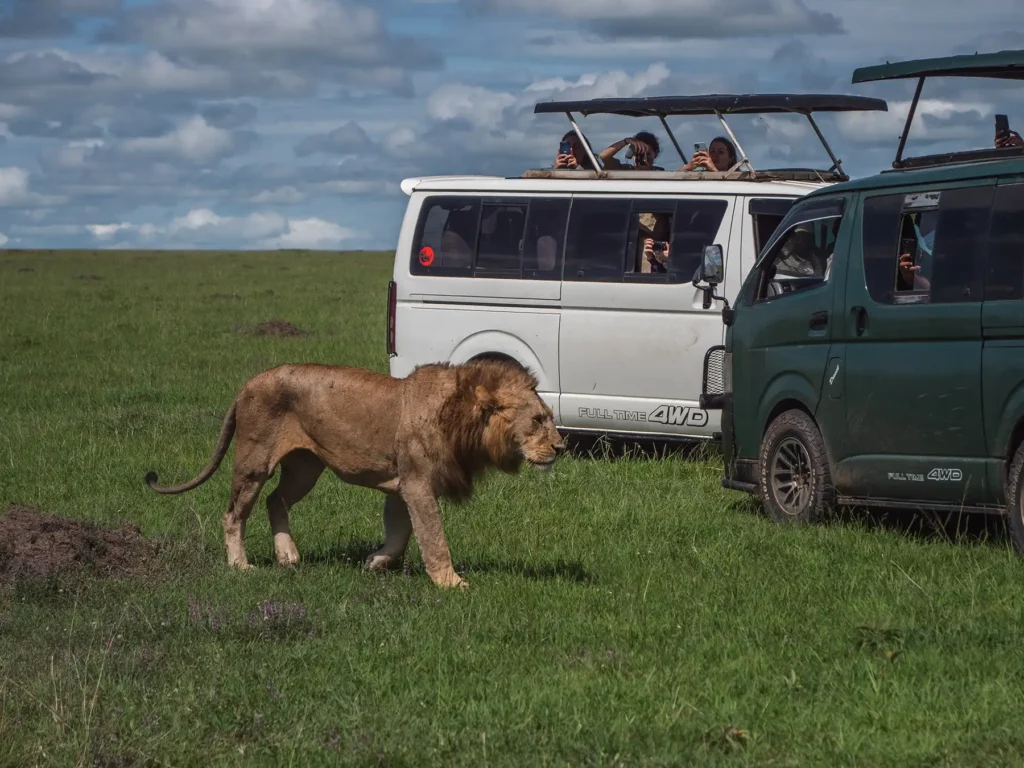
The Serengeti of course has the Great Migration as an added bonus, which occurs at different regions at different times of the year, while the Maasai Mara only experiences that around September and October, before the herds head back south again.
Another added bonus for Serengeti, as result of the annual migration, occurs around January and February each year when over 8,000 baby wildebeest and zebras are born each day, in the southern plains of the Serengeti making it a spectacle in its own right. This event draws huge numbers of big cats to the area resulting in another spectacular frenzy of activity.
In terms of similarities, both parks have an abundance of wildlife, including four of the Big Five: elephants, lions, leopards and buffalos. Whilst black rhinos are present in both, they are seldom seen. Both parks are also blessed with huge numbers of wildebeest and various other bucks, although the wildebeest masses are shared between the two parks by the migrating herds. The Maasai Mara, however, may have the edge over the Serengeti, being famed to have a higher concentration of big cats.
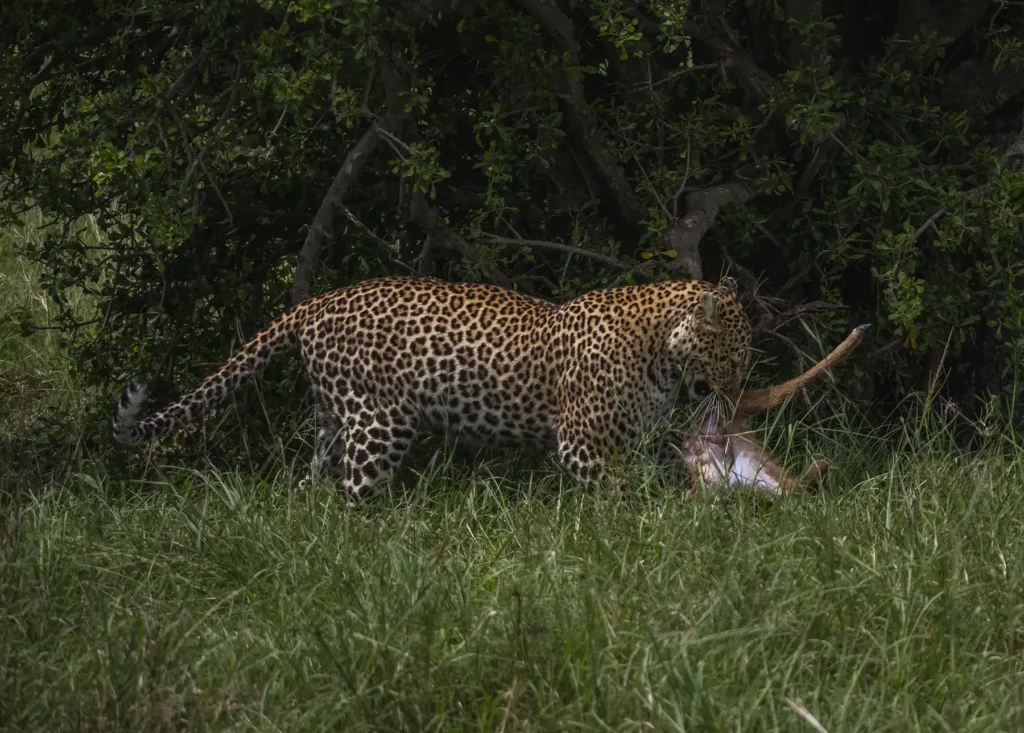
Serengeti park fees for adult foreign visitors are $70 per person per day in the high season (16th May to 14th March) dropping to $60 during low season (15th March to 15th May). Prices are excluding 18% Vat. There is however, an extra concession fee for visitors staying inside the Serengeti National Park.
Maasai Mara park fees are substantially more pricey, coming in at a whopping $200 per person per day during high season (1st July to 31st December) and $100 during the low season (1st January to 30th June).
Both parks lie a similar distance from major cities, with the Maasai Mara being approximately 5 hours away from Nairobi. Getting to the Serengeti from the nearest big town, which is Arusha, may take up to six or seven hours by road.
It’s a tough one for me to say which is best. They’re different with pros and cons each. If I had to choose one, I’d probably say that the Serengeti ever so slightly has the edge, largely due to the fact that it doesn’t get as busy as the Maasai Mara and sightings aren’t as crowded.

Is Kruger or Serengeti Better?
Quick Comparison
Size: Winner: The Kruger is around 25% larger.
Wildlife: Draw: Serengeti with a very high density of big cats and the Great Wildebeest Migration.
Travel times: Draw: Both parks are around 5 hours drive from the nearest International Airport.
Costs: Winner: Kruger park fees are much lower but this does mean the park is more crowded.
Good to Know: Kruger is generally good for budget travellers (although there are some nice luxury options in the private conservancies) and self drivers but the Serengeti provides the ultimate safari experience with the Great Migration and an incredible density of big cats as well as many other world-class parks nearby.

Being South Africa’s premier flagship safari park, the Kruger National Park is often compared with the world’s best parks and naturally, the Serengeti as well.
Starting off with size again, the Kruger is around 25% larger with a whopping 19,485 square kilometres compared with the 14,763 of the Serengeti. This means that vehicles could be even more spread out in Kruger.
The scenery of the Kruger is superb, with many really magnificent sights within the park and nearby. Some of these include the Blyde River Canyon, the third largest canyon in the world, the Panorama Road, which is packed with majestic sights around each bend, one of which being the almost heavenly ‘God’s Window’. It offers a landscape that’s vastly different to Serengeti and both are breaktaking. So, it’s a tie when it comes to scenery.
Whilst the Kruger has no migration, it still has a wide range of animals including the Big Five and loads of big cats. Following a similar pattern as the Serengeti, density of individual species vary from area to area.
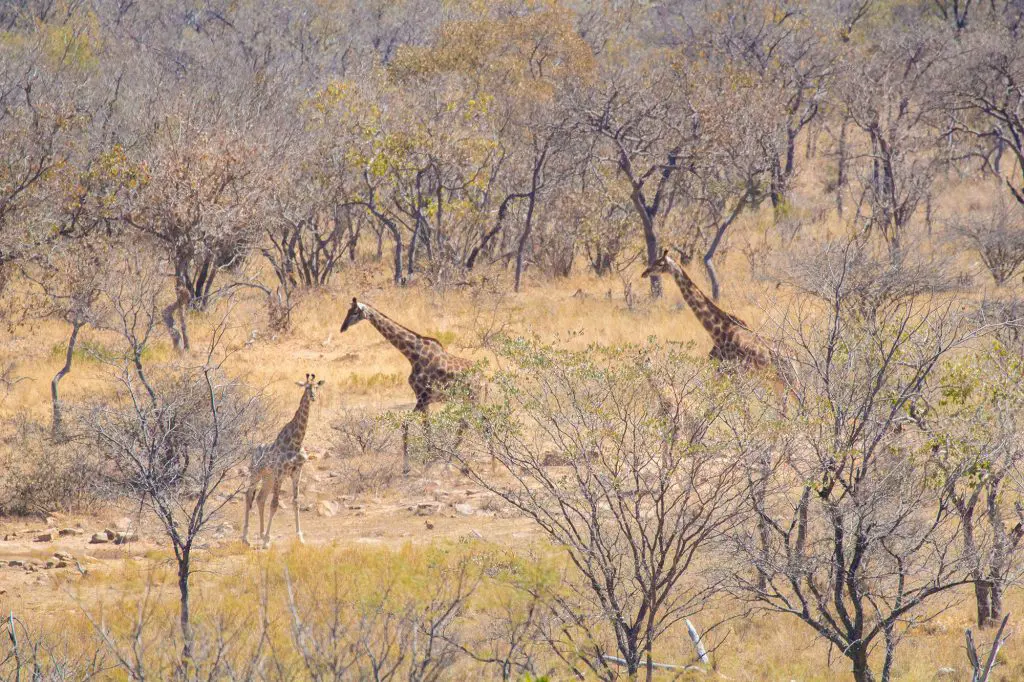
One advantage that the Kruger may have over the Serengeti and over most other parks across the whole of Africa, is the frequent sightings of leopards. Over the years, conservation officers have been leaving vehicles in the park with their engines idling and radios switched on, slowly getting the otherwise secretive leopards to become accustomed to the presence of humans. So where in other parts of the country and the continent, leopards shy away from humans, here in the Sabi Sands area of the Kruger, they are often seen walking brazenly alongside safari vehicles packed with tourists.
The Timbavati Nature Reserve within the Kruger National Park is another unique place to visit, having a healthy population of rare white lions, not often seen in many other parks across Africa.
Park fees also lean on the side when it comes to Kruger, with the low exchange rate of the South African Rand resulting in the daily park fees of a measly $26 compared to the over $100 plus concession fees of the Serengeti. Accommodation costs however are not as cheap, being on average on a par with the Serengeti.

A drawback of Kruger National Park is just how busy it is, especially in peak season. Its extremely accessible nature and infrastructure make it extremely popular with self-drivers and safari tour operators alike and so the roads can get a bit congested, especially in the south, where the density of wildlife is higher.
A way to overcome the high volumes of people is to visit a private concession such as Sabi Sands instead, which is still part of the Kruger ecosystem but is limited to only allowing guests staying there to go on game drives.
In terms of which is best, it ultimately depends on what you’re looking for. The Kruger is a lot more accessible, self-driver friendly and cheaper to visit and so if a budget-friendly safari is what you’re looking for, Kruger National Park takes the cake.
In contrast, the Serengeti offers a more remote experience, the world-famous Great Wildebeest Migration and unfenced camps located in the centre of the park, giving you the real Out of Africa experience.
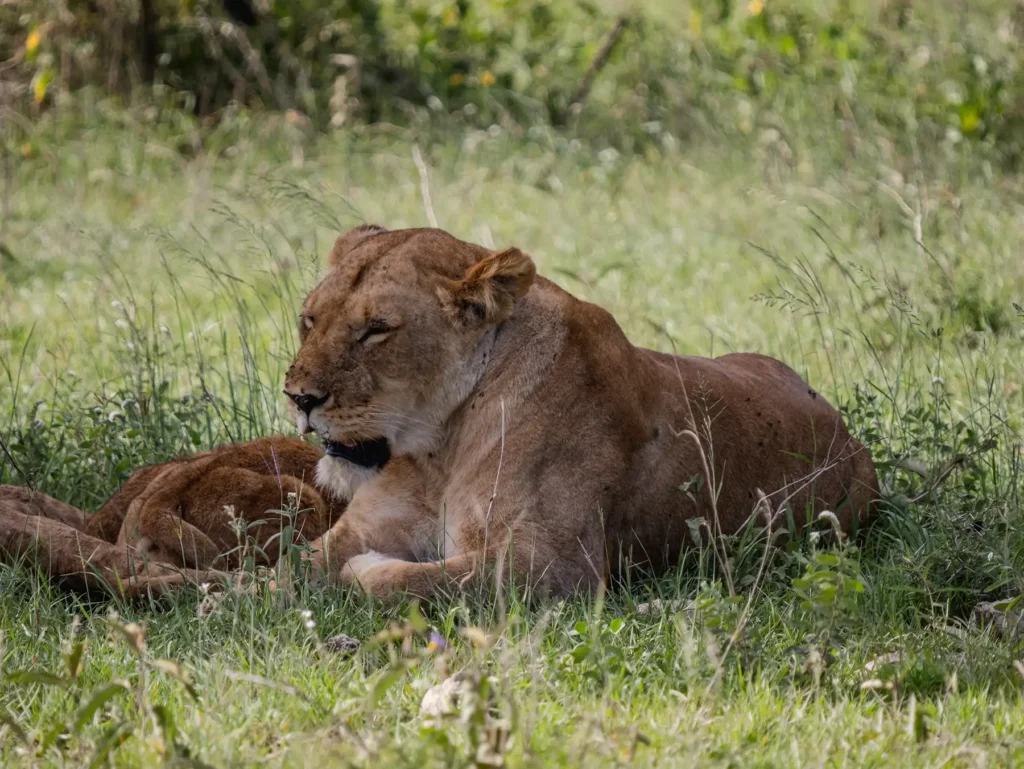
Is Tarangire or Serengeti Better?
Quick Comparison
Size: Winner: Serengeti is three times the size of Tarangire
Wildlife: Draw: Serengeti but Tarangire is a close second with huge elephant herds, all of the Big Five and a smaller migration of its own.
Travel times: Winner: Tarangire is only a few hours drive from Arusha International Airport
Costs: Winner: Tarangire
Good to Know: Tarangire is great value for money and a must-see on your way to the Serengeti.
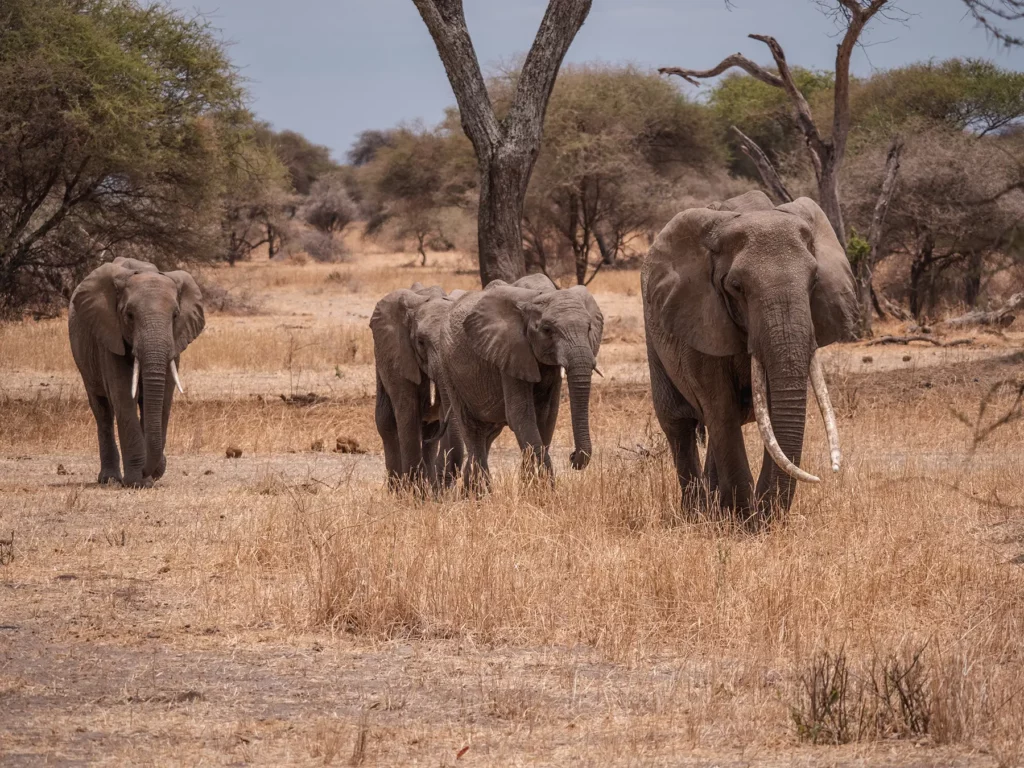
While Tarangire is less than one third of the size of the Serengeti, it has a somewhat different climate, landscape and density of certain animals. It is however large enough to hold its own migration within the park, albeit not as spectacular as the Serengeti. Mostly wildebeest and zebras are joined by huge herds of elephants as they make their way northwards each year in search of greener pastures.
But what Tarangire is famed for, is its humongous herds of elephants, having some of the largest herds in the whole of Africa. Seeing herds of close to 100 of these grey giants is fairly common here, while some herds can reach over 300 strong. A dazzling sight to see them moving through the landscape.
Having a drier climate, the Tarangire National Park is also known for its giant baobab trees. These ‘upside down’ looking trees have adapted to the drier climate by being able to store large quantities of water in their thick, bulging, hollow trunks to nourish them through the long dry periods. They also make for fantastic photography, especially when silhouetted against a blood red sky during sunsets – something not seen in the differing landscapes of the Serengeti that lie about 150 kilometres to the north-west of Tarangire.
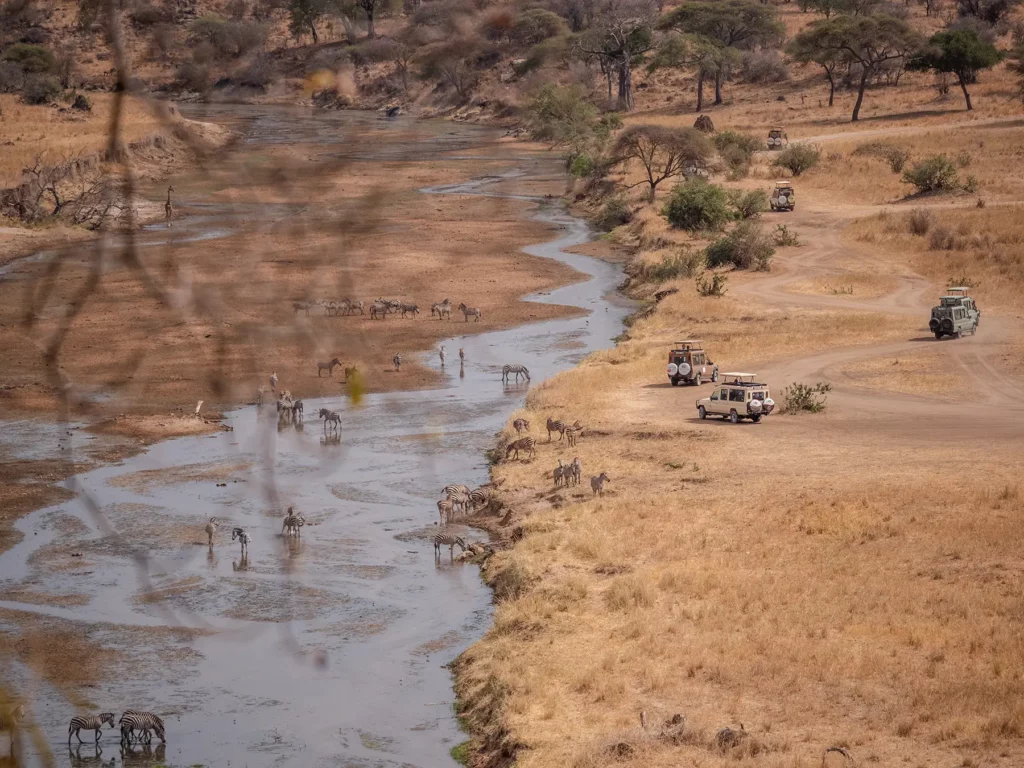
Tarangire also boasts of hosting the Big Five, plus cheetahs, giraffes, zebras, rhinos, elands, kudus and tons of wildebeest and Thompson’s gazelles as well as over 500 bird species.
On the Tarangire River, which runs almost across the entire park and on the river banks you should easily spot hippos and crocs wallowing in the shallows and if you’re really lucky, you may spot a small herd of the extremely rare fringe-eared oryx. This is a similar species closely related to the gemsbok that are associated with the arid landscapes of Namibia. Rhinos and wild dogs are quite a rare sight too.
Whilst Tarangire is a fantastic location and I have no doubts that if you’re visiting Tanzania, you should add it to your Tanzania itinerary, the Serengeti in my opinion is slightly more spectacular, especially when it comes to big cat sightings.
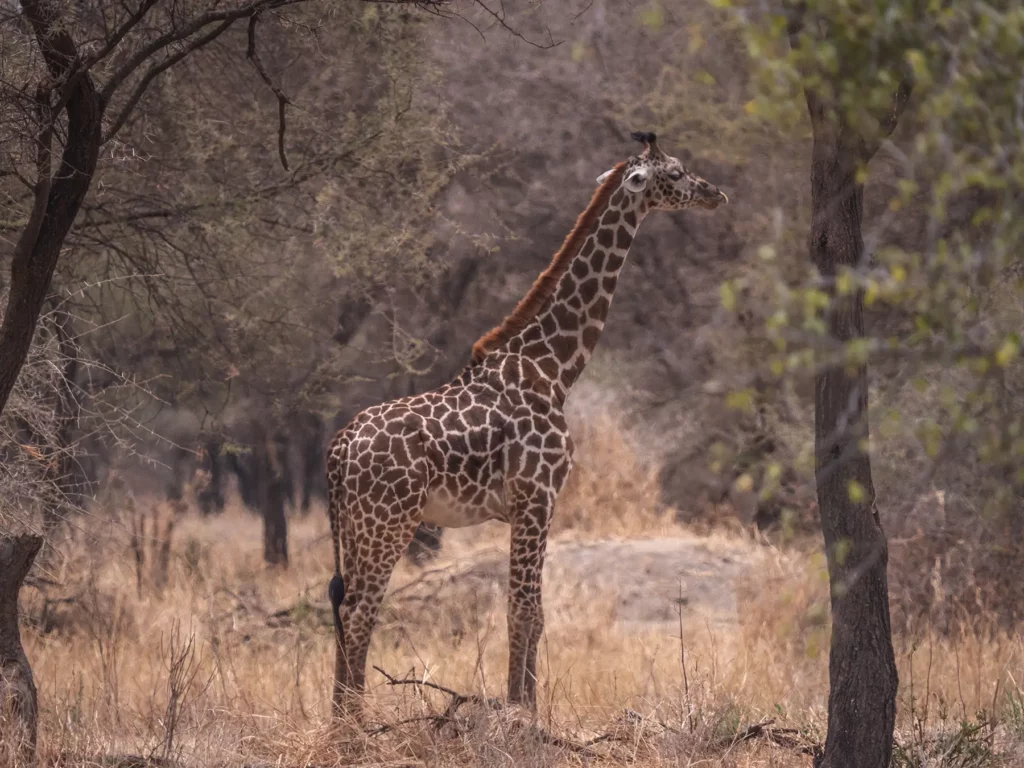
Is Serengeti or Ngorongoro Better?
Quick Comparison
Size: Winner: Serengeti dwarfs the tiny Ngorongoro Crater but part of the beauty of the crater is its small size
Wildlife: Draw: Both excellent with the crater having a year-round dense wildlife whereas Serengeti has the Great Wildebeest Migration and more variety.
Travel times: Winner: Ngorongoro Crater is closer by road from Arusha International Airport
Costs: Winner: Serengeti as the Ngorongoro Crater is the most expensive park in Tanzania
Good to Know: Ngorongoro Crater is truly incredible and reminded me of a lost world. However, due to it’s small size and high cost you’ll probably just want to spend a day exploring. It’s great to visit on your way to or from the nearby Serengeti.
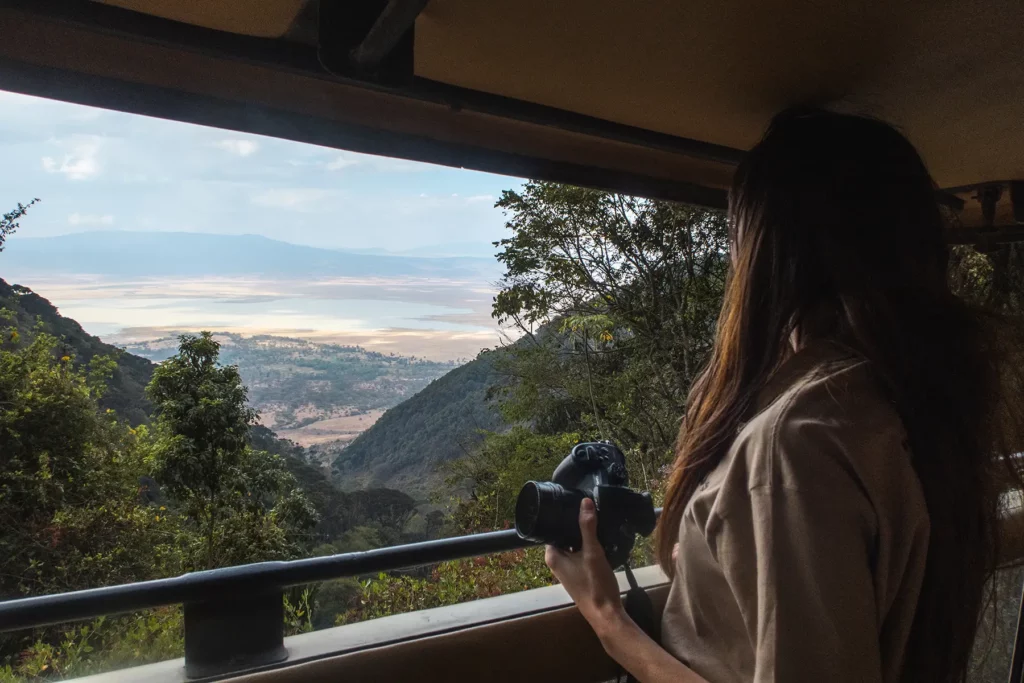
As far as natural beauty goes, Ngorongoro Crater is quite unique and totally mesmerising, especially when viewed for the first time from the top of its 610 metre high crater rim. It’s perhaps one of the most beautiful safari destinations in the world.
Another advantage Ngorongoro may have over Serengeti, is because of its small size there is a higher concentration of wildlife and you stand perhaps the best chance of seeing a number of species of animals. Over 25,000 animals including the Big Five are crammed into a tiny 260 square kilometre space, making the spotting of animals easy.
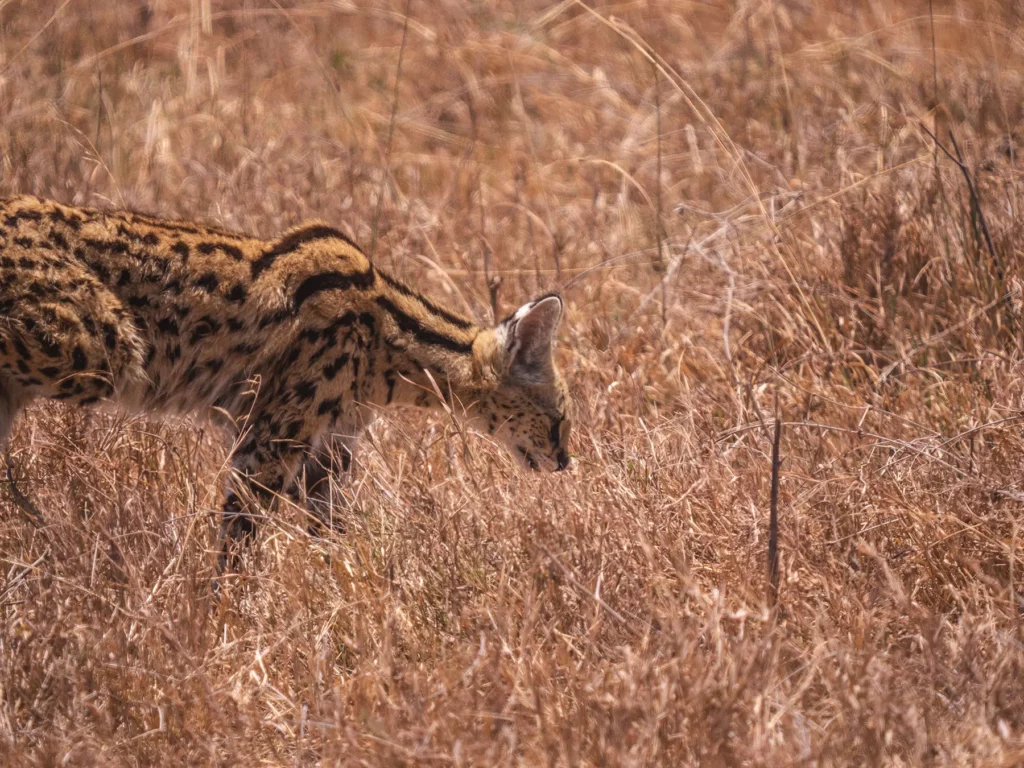
The high and steep wall of the crater prevents any migration taking place here which makes Ngorongoro an all year round safari destination and its small size means that you could easily see most of its main sights within a day, whereas it will take a lot longer, at least two full days, to properly experience Serengeti.
Serengeti however in my opinion is just that bit more spectacular. The presence of the great wildebeest migration, the beautiful endless plains and high concentration of predators make Serengeti extremely impressive. I saw more wildlife species in Serengeti than Ngorongoro and so, although very close, I’d say Serengeti just has the edge.
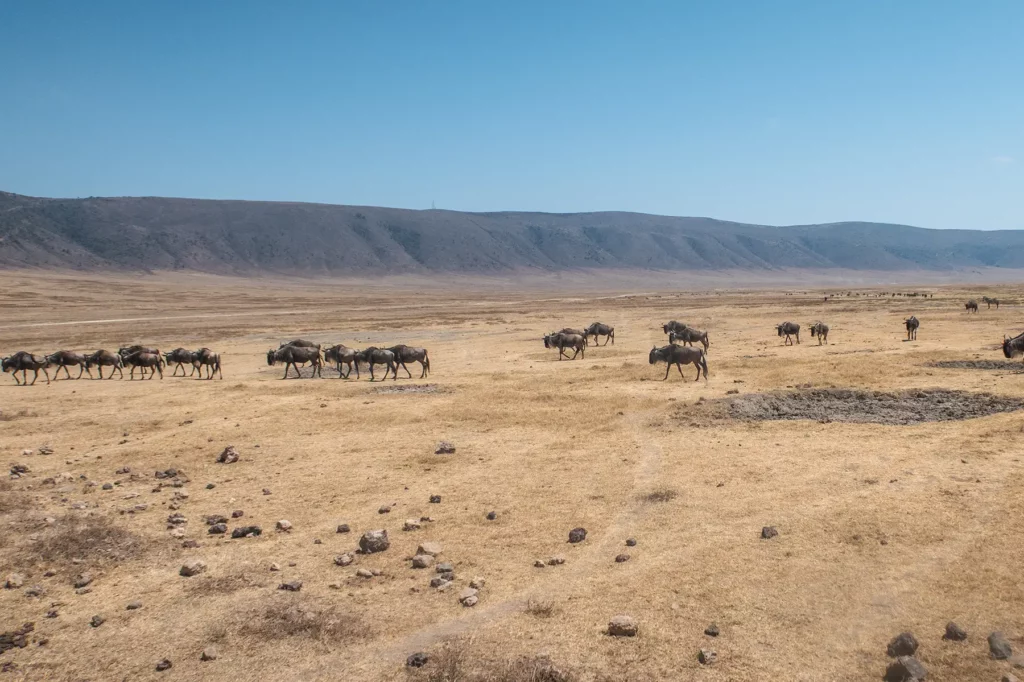
Save Time and Ensure an Incredible Safari Experience
Get quotes from the local safari companies I use to organise my own trips.
You’ll join the rapidly growing tribe of over 1,000 travellers who’ve booked their dream safari using my insider tips and recommendations.
Best Serengeti Safari Itineraries
Below are my recommended itineraries for visiting Serengeti. These can be done either on their own or incorporated into longer Tanzania itineraries, including visiting other parks such as Tarangire National Park and Ngorongoro Crater.
You can jump to the different itineraries by clicking the links below:
5-Day Serengeti Great Wildebeest Migration River Crossing Itinerary
4-Day Serengeti Great Migration Wildebeest Calving itinerary
5-Day Serengeti Great Migration Wildebeest Grumeti River Crossing Itinerary
4-Day Serengeti Big Cat Safari Itinerary
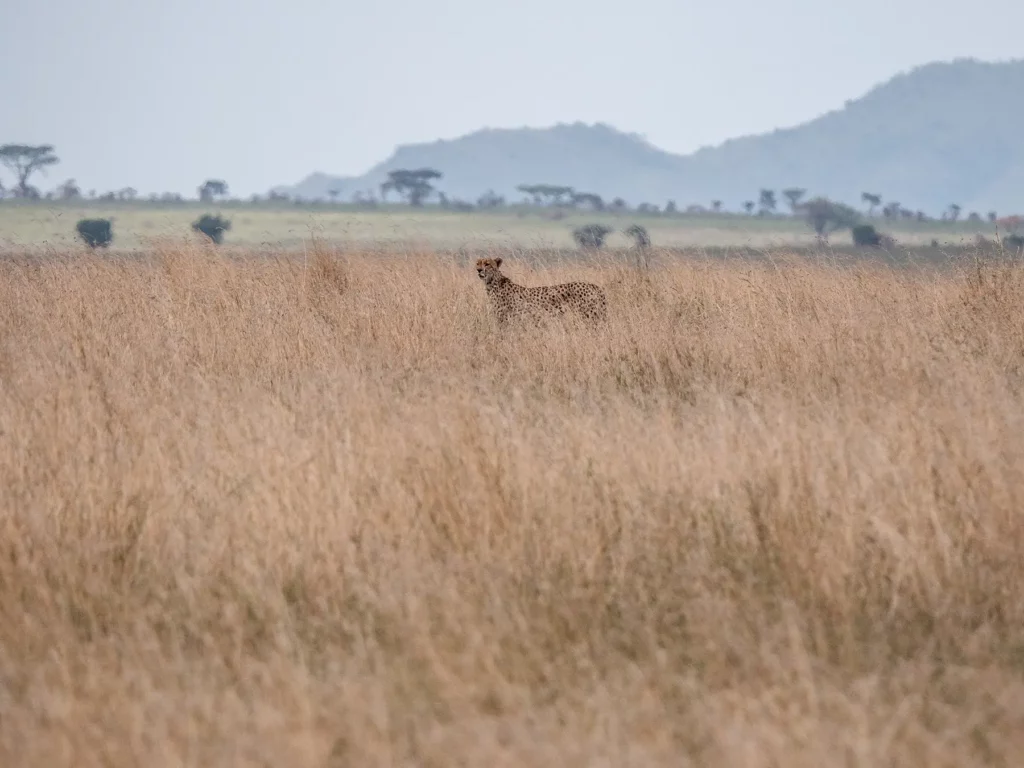
5-Day Serengeti Great Wildebeest Migration River Crossing Itinerary
The wildebeest crossing the Mara River is a bucket-list spectacle for many safari enthusiasts and is one of the main draws to the Serengeti between July and September.
However, the crossing takes place in the furthest and most remote corner of the Serengeti, meaning it isn’t something that can be viewed in a day.
Furthermore, witnessing a crossing is never guaranteed as the wildebeest can take hours milling at the banks of the river before crossing.
Therefore allowing a few days in Northern Serengeti is really a must to increase your chances of seeing a crossing. Below is my recommended itinerary.
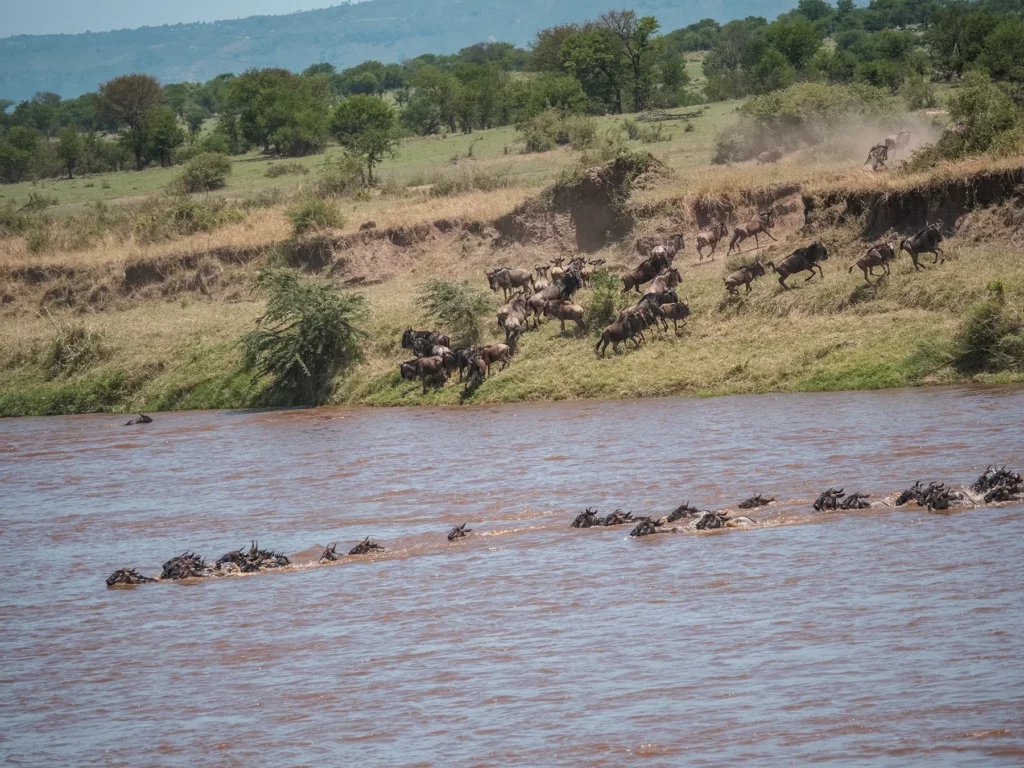
Day By Day Breakdown of 5-Day Serengeti Great Wildebeest Migration River Crossing Itinerary
The trip starts with your arrival to Arusha, the closest big city with an international airport to the Serengeti.
Day 1: Arusha to Northern Serengeti
Total driving time (excluding game drives): 10 hour drive or 1 hour flight
After a night spent in Arusha it’s time for your adventure to truly begin!
The best way to journey from Arusha to Northern Serengeti is by air. A number of flights run between Arusha and Kogatende (Northern Serengeti) each day. They take just over an hour and cost around $300 per person each way.
If you take a morning flight, you can spend the first afternoon on safari, keeping an eye out for river crossings and other marvellous wildlife.
If flights are a little out of your budget, driving is still an option. However, it can easily take over 10 hours by road so you’ll need to set out bright and early to arrive in Kogatende before nightfall.
You’ll spend the night in Northern Serengeti.
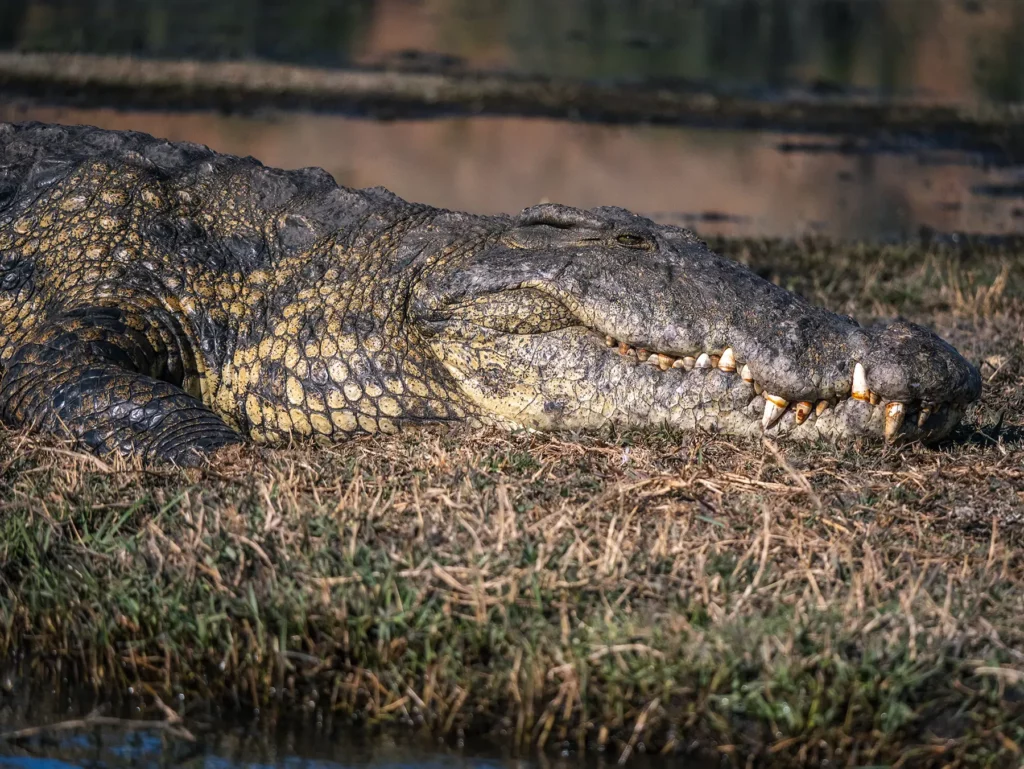
Day 2 – 3: Northern Serengeti
Total driving time (excluding game drives): 0 hours
The next two days you will spend most of the time exploring the northern Serengeti, stopping for lunch and drinks at recognised picnic spots. I can’t emphasise enough the need to set out as early as possible to give you the best chance of seeing some big cats, as this is when they are on the hunt and more active. Once the sun rises high in the sky and starts baking the landscape, lions, leopards, cheetahs and other animals seek the shade and shelter of thickets and trees and are difficult to spot.
There are tons of animals to see in this district, and if you’re there when the migration convoy arrives with millions of wildebeest, zebras and all the rest, these two days will forever be etched in your memory.
After each day’s game drives you will be taken back to your lodge in the evening in time for dinner.

Day 4: Central Serengeti
Total driving time (excluding game drives): 4 hours
After breakfast on day 4, you will leave the northern region and head south to the central region. After enjoying lunch and refreshments at a picnic spot, you set out on your afternoon game drive.
This area has among the highest concentrations of wildlife, so even if the migratory herds have gone past, there will still be tons of resident wildlife to view. It also has the highest concentration of lions, leopards and cheetahs as well as elephants, buffaloes, hippos, giraffes, zebras, wildebeest, impala and tons of other antelopes and bird species.
The landscape here consists of vast flat savannahs dotted with granite outcrops, known as kopjes (pronounced copies), which big cats use as lookout posts scanning the surroundings for prey. Lions in particular, like to hang out on these large boulders, not only to scout the surroundings but for shade when it’s hot and to lie on the sun-warmed rocks when it’s cold.
After a most satisfying day you return to your lodge in time for supper and a well-deserved rest.
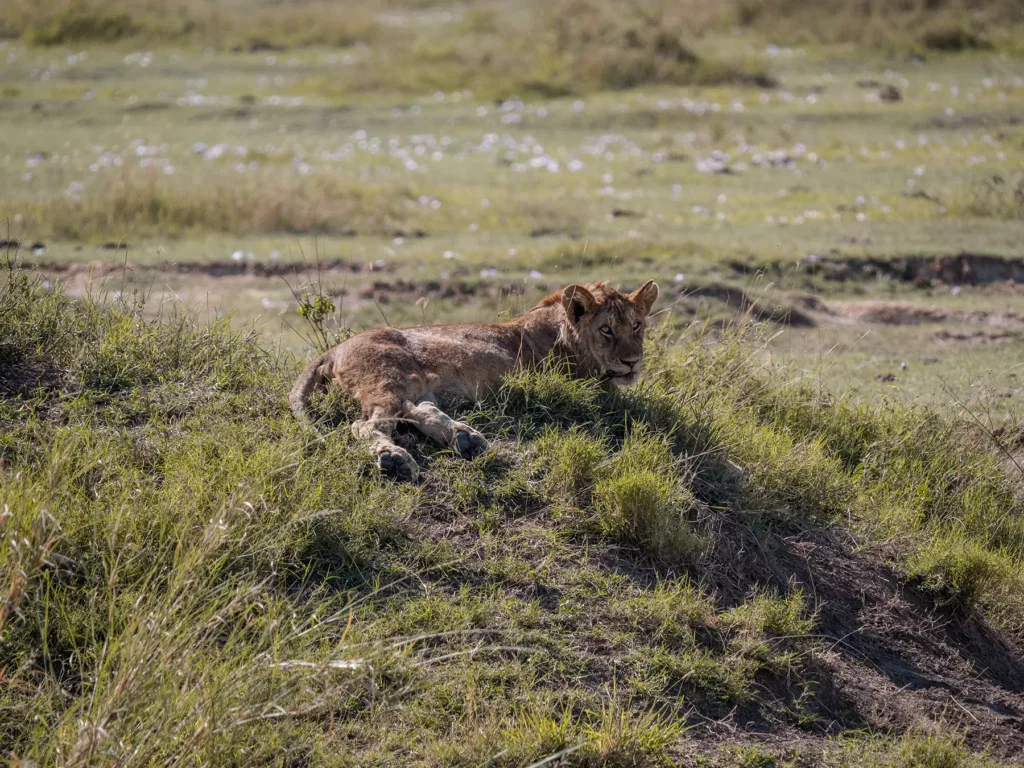
Day 5: Central Serengeti to Arusha or Zanzibar
Total driving time (excluding game drives): 6 hour drive to Arusha or 2 hour flight to Zanzibar.
After breakfast you set off on the road to Arusha, or fly from the Seronera airstrip. You have two choices here. You can either end your safari in Arusha or fly on to Zanzibar. If you’d like some time at the beach, you can hop on a flight from Seronera Airstrip in Central Serengeti straight to Zanzibar.
Or if you’re planning a longer Tanzania safari itinerary, you could drive to one of the worlds’ most stunning natural wonders, the Ngorongoro Crater, and spend the night there.
Should you decide to fly to Zanzibar, you could spend the rest of the day, exploring the historic Stone City, or catch up on some well-earned rest, by relaxing on one of the island’s many glorious white sandy beaches, surrounded by tall swaying palm trees and crystal blue waters of the Indian Ocean. You may be tempted to extend your stay a little longer.
Recommended Booking Options For Your Serengeti Great Wildebeest Migration River Crossing Itinerary
Private Safari
Most popular & best experience – typical prices for this itinerary start from $400 per person per day.
Visit safarisbyella.com for free quotes from trustworthy local tour companies I use to book my own trips.

Group (Shared) Safari – Usually Camping
Good for budget or solo travellers – from $250 per person per day.
My recommended Tanzania tour operators only provide private safaris, however, I’ve listed the best and most similar group options for this itinerary, on SafariBookings below.
Please note, this is more of a mid-range & luxury itinerary, so there are not that many group options available and many follow a slightly lower-cost version of this itinerary. I have linked to the most similar below.
Click the link below to request quotes for the group safari options on the SafariBookings website.
View All My Recomended Group Options Following a Similar Itinerary
Jump back to the list of itineraries to select another Serengeti itinerary to view or keep scrolling to read the next itinerary.
4-Day Serengeti Great Migration Wildebeest Calving Itinerary
To really appreciate this vitally important part of the migration, you would need to visit the southern plains of the Serengeti during January and February. During this short period, which is regarded as the short dry season, the weather is great although it can get a little warm, but the landscape is still lush and green, from the early rains providing an abundance of grazing for the millions of herbivores, and creating a stunning backdrop for photographers. But the main reason for being here during this period, is to witness the birth of over 8,000 wildebeest that occur every single day.
There is no warmer feeling than seeing so many tiny baby animals being born and immediately trying to spring on their wobbly legs and start feeding on mum’s nutritious milk.
The wonders of nature are on full display here, as within minutes these fragile little creatures are running freely with the herd, while being under the constant surveillance of many predators who have begun to gather on the southern plains of the Serengeti.
This period is crucial to the overall survival of not only the wildebeest and zebras, but to the entire ecosystem. With so many baby animals around, the availability of easy prey draws hundreds of big cats and other predators, who themselves need to eat and raise their own cubs. It is therefore a good time to witness a hunt.
It’s also hard to believe that within two months, these new arrivals will be joining the herds on their perilous journey across the Serengeti and beyond.

Day By Day Breakdown of 4-Day Serengeti Great Migration Wildebeest Calving Itinerary
With Arusha being the closest city and international entry point, we once again begin our trip from there.
Day 1: Arusha to Southern Serengeti (Ndutu)
Total driving time (excluding game drives): 5 hour drive or 1 hour flight
After a night settling into Tanzania after a long flight, you will set off for Ndutu on the plains of the Southern Serengeti. I’d recommend setting off early so you can enjoy an afternoon game drive.
You can either journey by road to Ndutu or take a quick 1 hour flight which costs $300 per person.
Once you arrive at your lodge or tented camp, you can enjoy lunch before setting out on your first game drive.
The southern region of the Serengeti is characterised by its vast open and flat plains, synonymous with Serengeti.
This area has a high concentration of big cats as well as healthy populations of elephants, buffaloes, giraffes, and of course wildebeest, zebras and various gazelles.
Many of these species do not join the wildebeest and zebras on that mad migration rush, as they are able to feed off the yellow drying grasslands during the long dry season. This abundance of resident prey ensures the presence of many predators and other wildlife here all year round for visitors to enjoy.

Day 2 – 3: Southern Serengeti (Ndutu)
Total driving time (excluding game drives): 0 hours
This is where you’ll be spending the next two days going on full day game drives, which are broken up by picnic lunches at designated picnic sites within the park.
It is highly recommended to set off as early as possible on your morning drives, as this is the prime time for predators to be out on the prowl. Later in the day once the sun starts beating down on the plains, animals and predators in particular, seek shade and shelter in thickets and become hard to spot. Early mornings are also the most likely times to witness a hunt or a kill. After your afternoon drive, you’ll return back to your lodge in time for dinner in the evening.
This area is very conducive for walking safaris, which can be arranged with your lodge or tour operator. You could also take a cultural tour to a Maasai village where you can interact with the famed Maasai people and learn of their lifestyle and traditions.
If budget allows, this area is also ideal for taking a hot-air balloon ride. Floating gently across the endless savannah viewing the wildlife below, must be one of the most rewarding and memorable experiences for any nature lover.
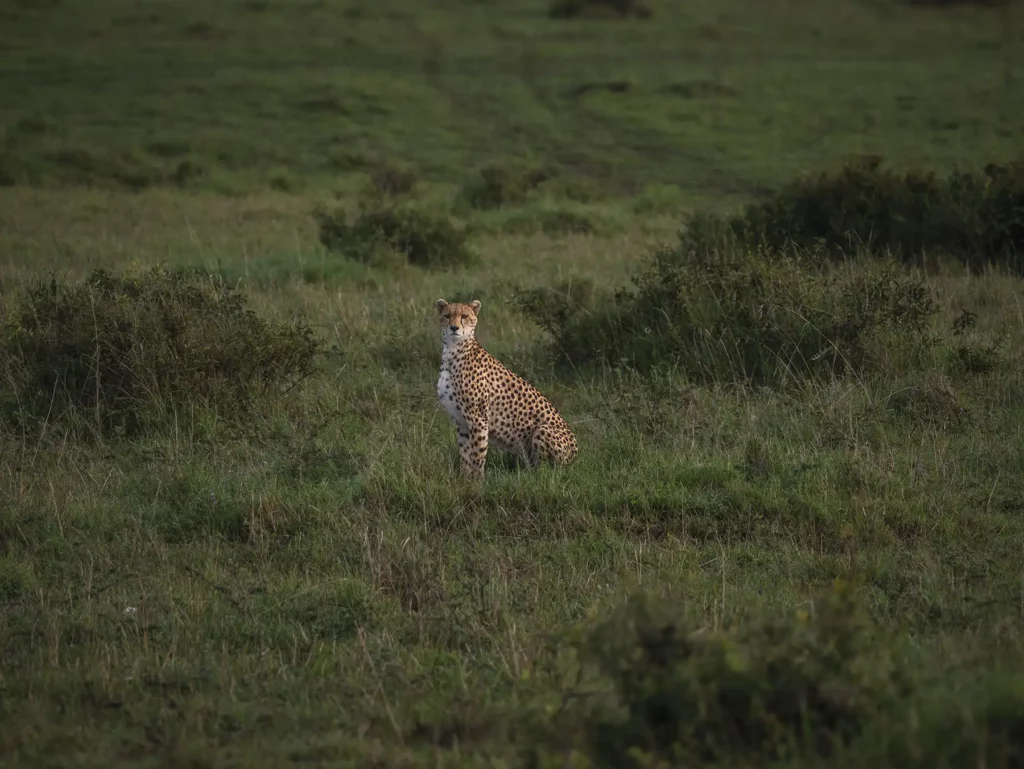
Day 4: Southern Serengeti to Arusha or Zanzibar
Total driving time (excluding game drives): 5 hour drive to Arusha or 2 hour flight to Zanzibar.
After breakfast you are faced with several options. You can either drive for two hours to the Lake Manyara airstrip and fly back to Arusha or direct to Zanzibar to continue your holiday in Tanzania. You can of course choose to drive for five hours straight to Arusha.
If you have time to extend your Tanzania safari itinerary, you could choose to drive to Africa’s own Garden of Eden – the Ngorongoro Crater, which is a mere one hour’s drive away.
Recommended Booking Options For Your Serengeti Great Migration Wildebeest Calving Itinerary
Private Safari
Most popular & best experience – typical prices for this itinerary start from $350 per person per day.
Visit safarisbyella.com for free quotes from trustworthy local tour companies I use to book my own trips.

Group (Shared) Safari – Usually Camping
Good for budget or solo travellers – from $200 per person per day.
My recommended Tanzania tour operators only provide private safaris, however, I’ve listed the best and most similar group options for this itinerary, on SafariBookings below.
Please note, this is more of a mid-range & luxury itinerary, so there are not that many group options available and many follow a slightly lower-cost version of this itinerary.
Click the link below to request quotes for the group safari options on the SafariBookings website.
View All My Recomended Group Options Following a Similar Itinerary
Jump back to the list of itineraries to select another Serengeti itinerary to view or keep scrolling to read the next itinerary.
5-Day Serengeti Great Migration Wildebeest Grumeti River Crossing Itinerary
Situated along what is known as the Western Corridor, this remote area offers wonderful game viewing without masses of tourists.
Although there is an abundance of wildlife all year round, this area comes into its own during the migration around May and June, when millions of wildebeest and zebras invade the area on their clockwise northward bound journey across the Mara River and into Kenya.
Crossing the Grumeti River poses the first major and perilous obstacle for the migratory herds, as it is infested with thousands of the largest Nile crocodiles on the continent, who may not have eaten for months on end.
Apart from that, there is always a wide variety of animals such as lions, leopards, cheetahs, elephants, hippos, giraffes and many primates, buck and bird species to keep you fascinated for days.

Day By Day Breakdown of 5-Day Serengeti Great Migration Wildebeest Grumeti River Crossing Itinerary
This section of the Serengeti has a widely varied landscape that is more densely vegetated than the wide savannahs of the south. It does however consist of some savannahs and rolling hills as well as densely wooded riverine forests. The grasses in some of the savannahs tend to be longer than those in the south and some smaller animals may be a little harder to spot.
Day 1: Arusha to Western Serengeti
Total driving time (excluding game drives): 8 hour drive or 1 hour flight.
I highly recommend spending a night in Arusha before your Serengeti adventures begin. From Arusha you can either drive for at least eight hours to the Western Serengeti, or choose to fly straight to the Kirawira airstrip, which lies less than two kilometres from the Grumeti River, around which you will be spending the next two to three days.
Although there are not a lot of lodges or camps in this remote area, numerous mobile tented camps pop up during the migration run to accommodate visitors.
One of the finest permanent lodges is the And Beyond Grumeti River Lodge, which is conveniently situated less than 100 metres from the airstrip. From this lodge it’s a matter of a few minutes’ drive to the Grumeti River banks.
There are however several other lodges spread along the northern river bank, some of which offer fantastic viewing of the river from the comfort of their verandas. A great viewing deck, which is basically an Indiana Jones type suspension bridge, spans across a section of the river, offering great viewing of life in and around the water.
After arriving at your selected lodge or tented camp, you can spend the afternoon exploring the area on a game drive before returning to your lodge in time for dinner.
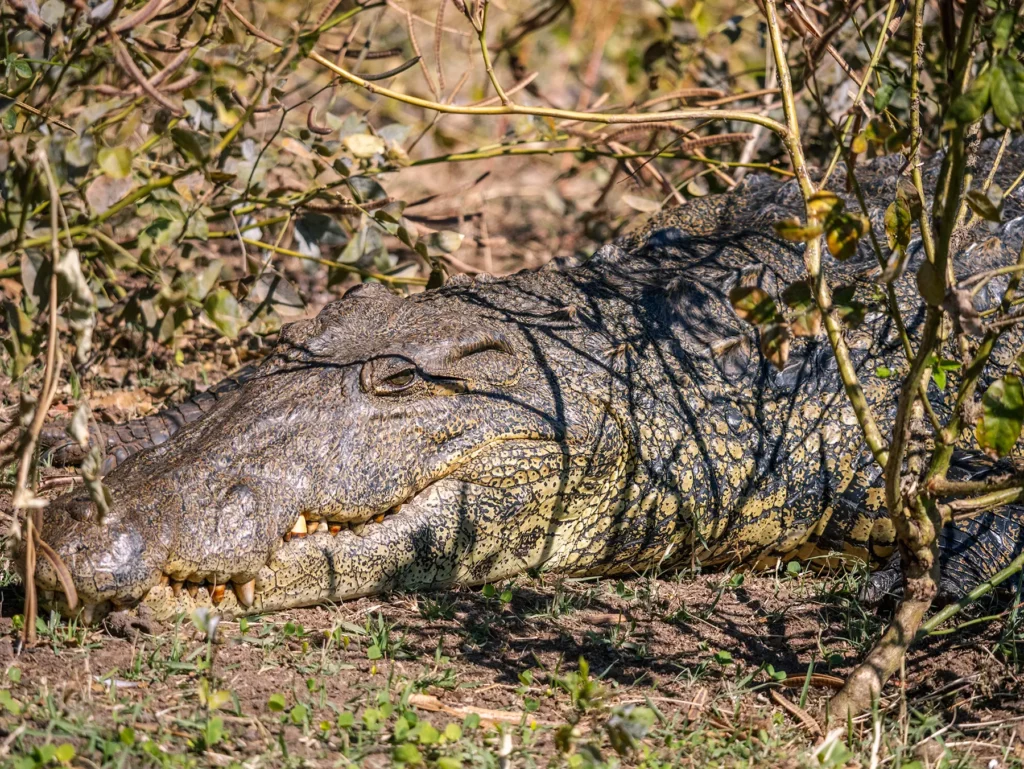
Day 2 – 3: Western Serengeti
Total driving time (excluding game drives): 0 hours
The next two days are spent at your leisure going on game drives, which will certainly include parking at various view sites along the river to witness the animals coming down for a drink while warily looking out for any disturbance in the water, which usually betrays the presence of a crocodile.
Despite their large size, crocs have an uncanny ability to move stealthily in the water just under the surface, lunging up suddenly to latch onto any unfortunate and unsuspecting animal.
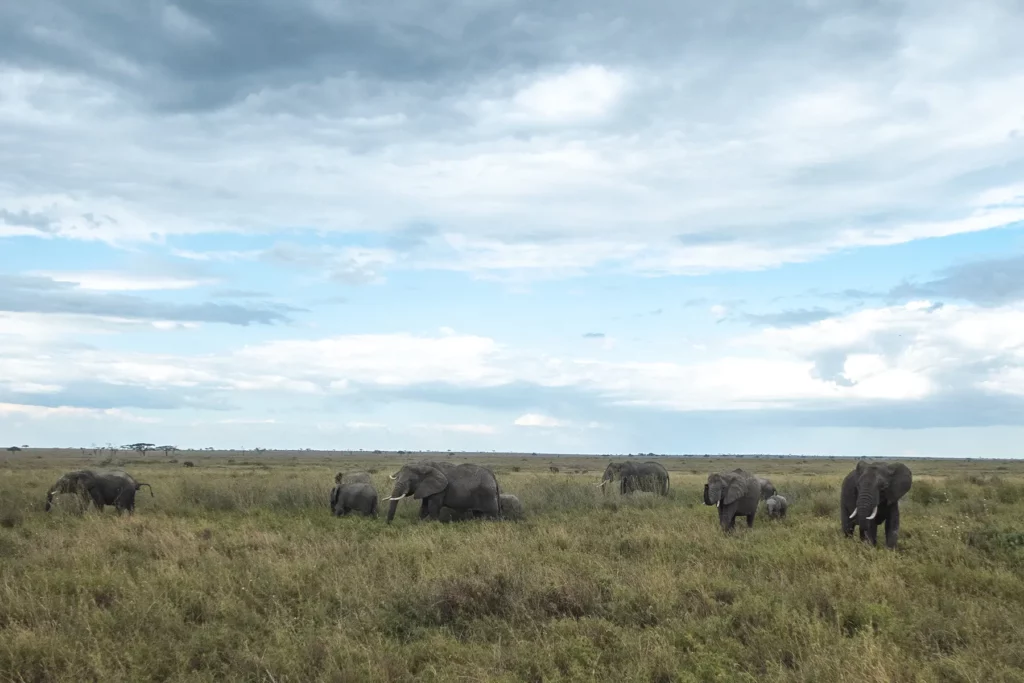
Should you be there while the migratory herds are rushing through, you will undoubtedly be taken to certain crossing points to witness the mayhem that takes place along the river.
The dense riverine canopy is a haven for bird enthusiasts with over 500 species hanging out in this area. So keep your eyes peeled upwards too. Some of the bird species you’re likely to spot here are fish and snake eagles, crested cranes, shrikes, pygmy falcons and a wide range of tiny exquisitely decorated sun birds.
There are also tons of inquisitive vervet monkeys hanging out in the canopies as well as baboons and the occasional rare black and white colobus monkeys.
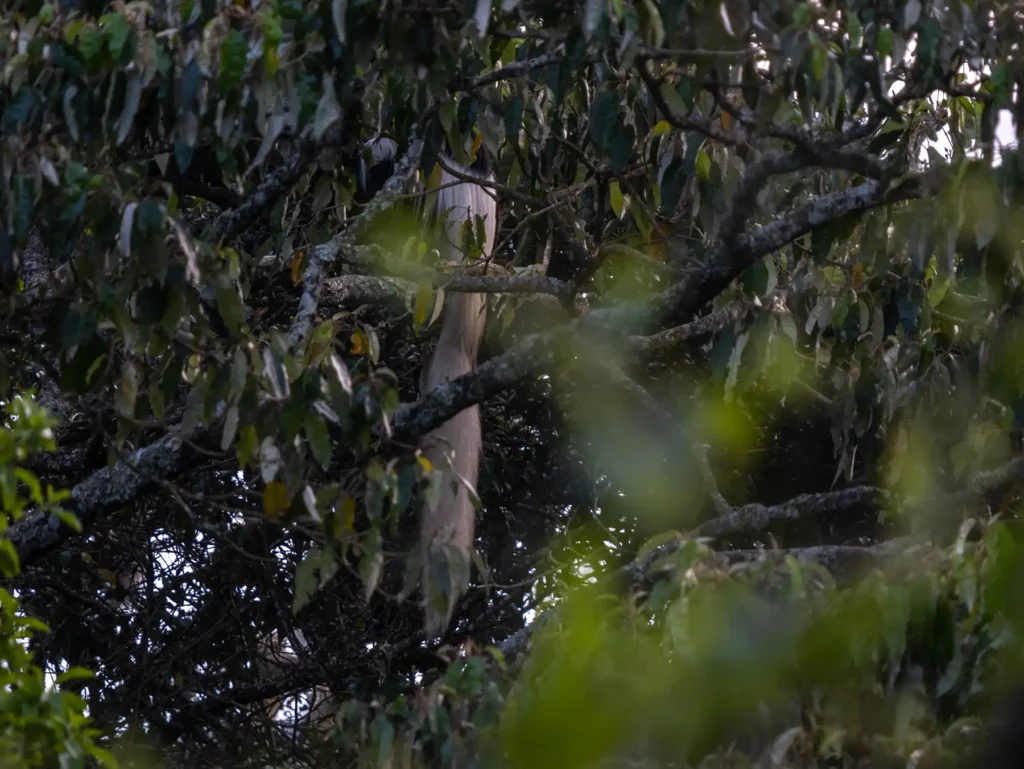
As your driver guides will tell you, heading out as early as possible provides the best opportunity to see big cats on the hunt and other animals too. During the midday heat, most predators and herbivores seek the shelter of the surrounding bush and trees and become almost impossible to spot. In the late afternoons when the heat eases up and the sky starts to pale, they may emerge and it’s all action once again.
Your drives will be broken up by picnic lunches within the park at designated picnic spots, where you’ll be able to get out of the vehicles and stretch your legs. Late in the evenings you’ll be returned to your lodge.

Day 4: Central Serengeti
Total driving time (excluding game drives): 2 hours
After breakfast, you drive eastwards to the Seronera area in the Central Serengeti, a distance of around 90 kilometres, stopping for a lunch somewhere along the way at a designated picnic spot.
After checking in at your lodge or tented camp, you can embark on a game drive and view a somewhat different landscape than the one you have just been.
There are more wide open savannahs here dotted with rocky outcrops, as well as rivers and swamps which support a wide range of animals and bird life. Wildlife here is also much easier to spot.
This area is famed for its large numbers of big cats and you stand a pretty good chance of witnessing a hunt on your one and only evening game drive here.
There are also many other animals to see in this area, including elephants, buffaloes, hippos, giraffes, rhinos, zebras, wildebeest, warthogs, Thompson’s gazelles, impala and many other antelope species.
After your game drive you’ll be taken to your lodge in time for dinner and a rest to complete your safari adventure.
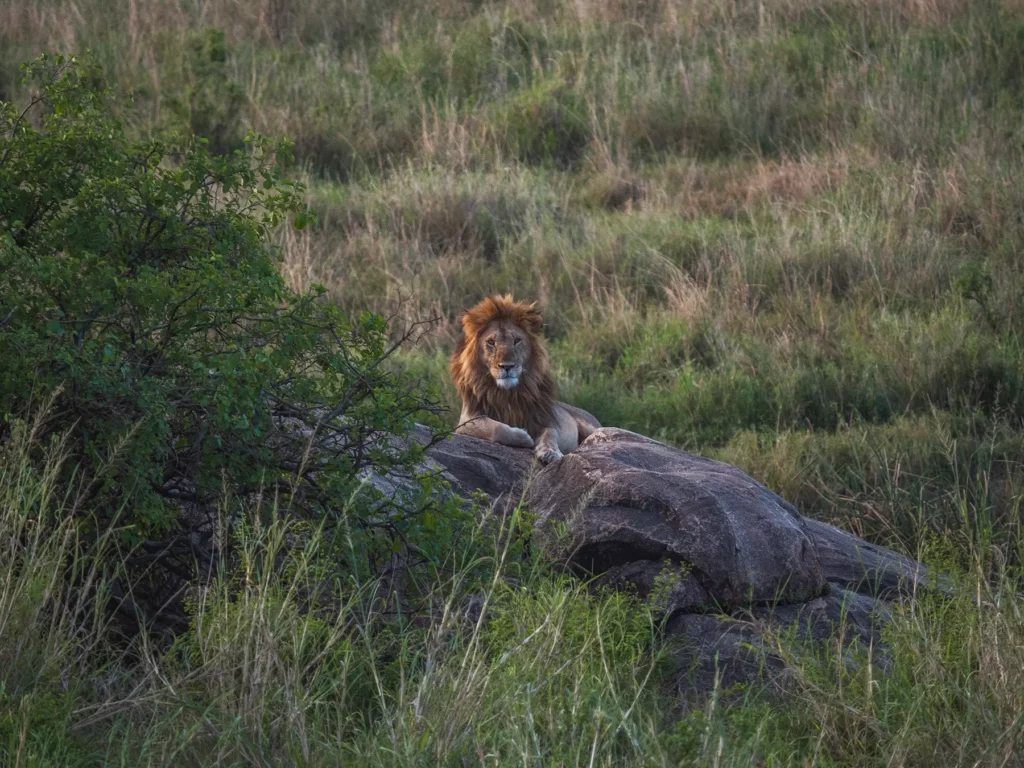
Day 5: Central Serengeti to Arusha or Zanzibar
Total driving time (excluding game drives): 6 hour drive to Arusha or 2 hour flight to Zanzibar.
After breakfast, you have the option of either catching a flight to Zanzibar to enjoy soaking in the sun on some remote white sandy beach on the Indian Ocean or you could undertake a long six hour drive back to Arusha and then home.
Should you decide to extend your stay in Tanzania and continue on your safari, the Ngorongoro Crater, barely 100 kilometres away, is a great choice.
Recommended Booking Options For Your Serengeti Great Migration Wildebeest Grumeti River Crossing Itinerary
Private Safari
Most popular & best experience – typical prices for this itinerary start from $400 per person per day.
Visit safarisbyella.com for free quotes from trustworthy local tour companies I use to book my own trips.

Group (Shared) Safari – Usually Camping
I could not find any group safaris following this or any similar itineraries. See my guide(s) below for better group budget options.
Jump back to the list of itineraries to select another Serengeti itinerary to view or keep scrolling to read the next itinerary.
4-Day Serengeti Big Cat Safari Itinerary
If, just like me, big cats are your thing, then the Seronera district in the Central Serengeti is the place to go. Here you can find one of the biggest concentrations of cats, from the mighty lion to the lithe cheetah, the elusive leopard to the nocturnal African wild cat.
The terrain consists of expansive open savannah with short grasses, an ideal hunting ground for cheetahs, the speed queens of the Serengeti. These grasslands are strewn with high rocky outcrops, providing ideal lookout posts for cheetahs to scan the savannahs for prey. Many wildlife documentaries are filmed in this area.
There are also many densely vegetated areas, which provide the perfect hunting ground for the elusive leopards to stalk and pounce on any animal that ventures close by. Lions too love to hunt in prides in this ideal and varying terrain.
The Seronera River provides an invaluable water source for animals and birds in the surrounding vicinity and is a good place to head for to witness big cats coming down to the water to quench their thirst and check out what may be on the menu for the day.
As with all sections of the Serengeti, there is always an abundance of prey for cats to feed on throughout the year as most herbivores, other than wildebeest, zebras and a few antelope, live here year round, quite content to feed off the dry grasses during the long dry season.
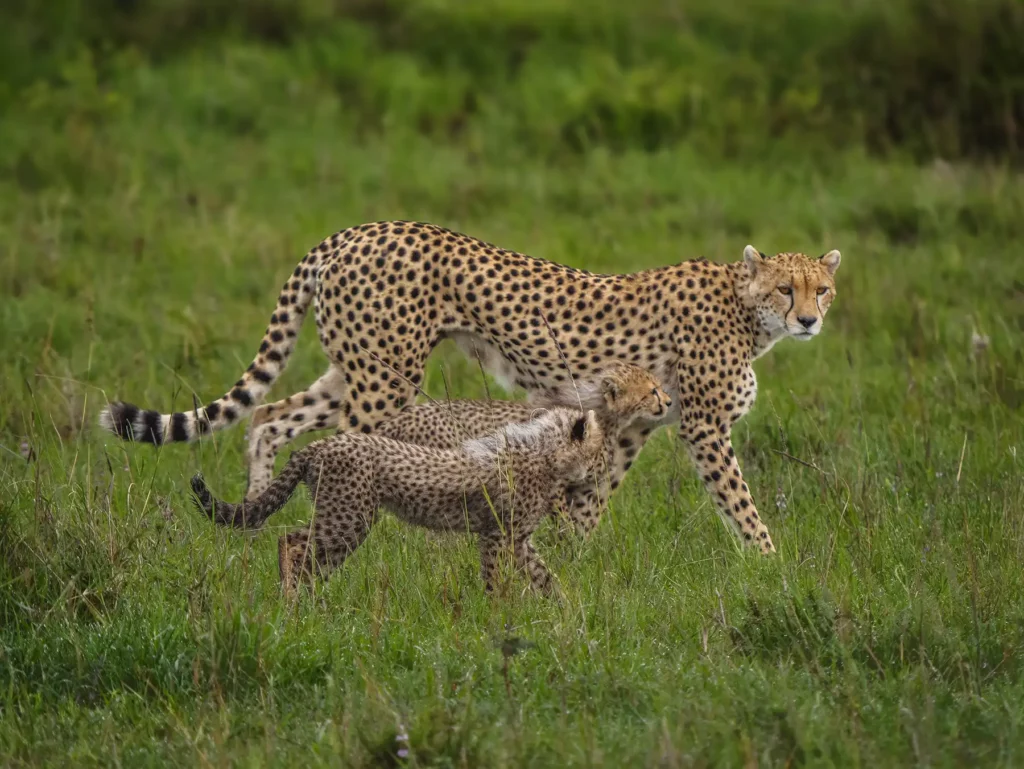
Day By Day Breakdown of 4-Day Serengeti Big Cat Safari Itinerary
This itinerary starts in Arusha, home to the closest international airport to Serengeti and the gateway to many of Tanzania’s wildlife destinations.
Day 1: Arusha to Central Serengeti (Seronera)
Total driving time (excluding game drives): 6 hour drive or 1 hour flight
Your adventure begins after a night relaxing in Arusha, after which you can choose to drive to Seronera in the Central Serengeti, or save yourself the long exhausting journey by taking a quick one hour flight, landing on the popular Seronera Airstrip.
This afternoon you will set out on your first game drive, and hopefully come across some of the big cats you have travelled so far to see. At the end of the game drive in the late evening, you’ll return to your lodge in time for supper and a rest.

Day 2 – 3: Central Serengeti (Seronera)
Total driving time (excluding game drives): 0 hours
The next two days you can enjoy game drives to the various areas the guides will take you, spending most part of the day out in this beautiful wilderness.
The days will be broken up by picnic lunches your safari operator has arranged with your lodge at designated picnic areas. This will give you an opportunity to walk around and stretch your legs.
Being one of the best places to see leopards, you will undoubtedly be taken to typical leopard terrain of thicket and rocky outcrops which leopards use to creep up and surprise their prey.
Incidentally, the Central Serengeti also holds one of the few tree-climbing prides of lions found anywhere in Africa.
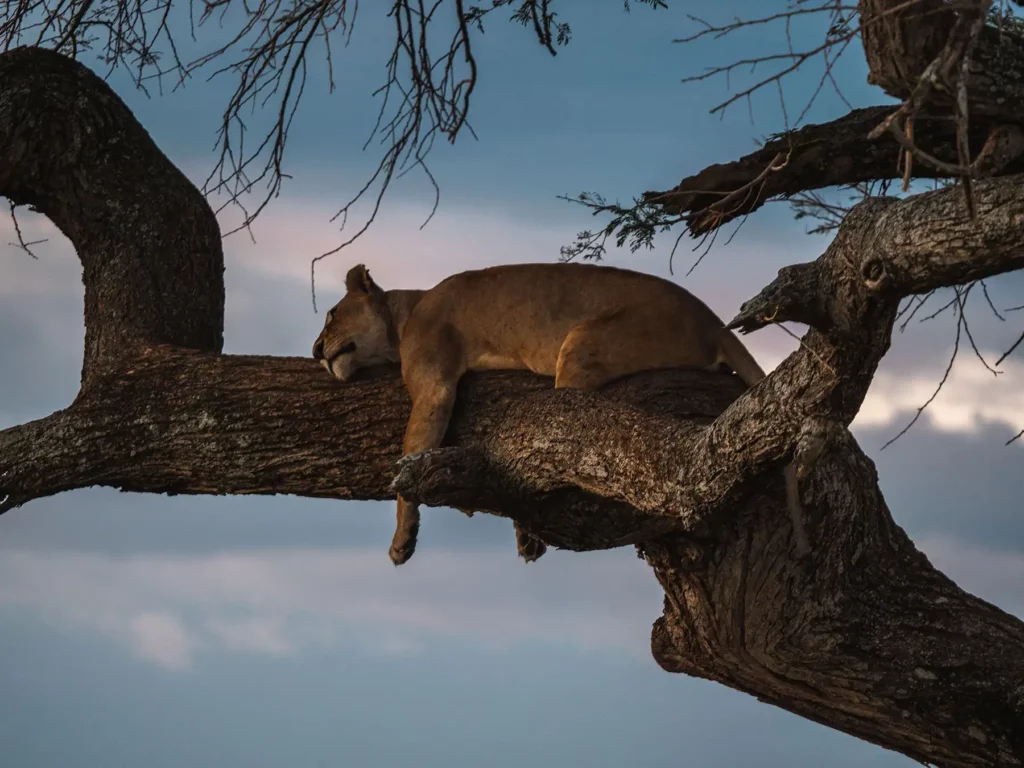
If you happen to be there when the migration madness arrives, you may be lucky enough to see big cats on the prowl. This period can provide some really magical moments, so keep your eyes peeled in all directions. This is also when you realise the full value of an experienced guide, as they can spot the slightest disturbance in the landscape long before we can.
In order for you to have the best chance of witnessing a big cat hunt or a kill, it is imperative that you set out on your game drive as early in the mornings as possible. As it can get pretty chilly during those early mornings and evenings, packing a warm jacket that can be removed later when the day warms up, will always be a good idea.
At the end of each day you will be taken to your lodge to enjoy a most welcome dinner and a rest.
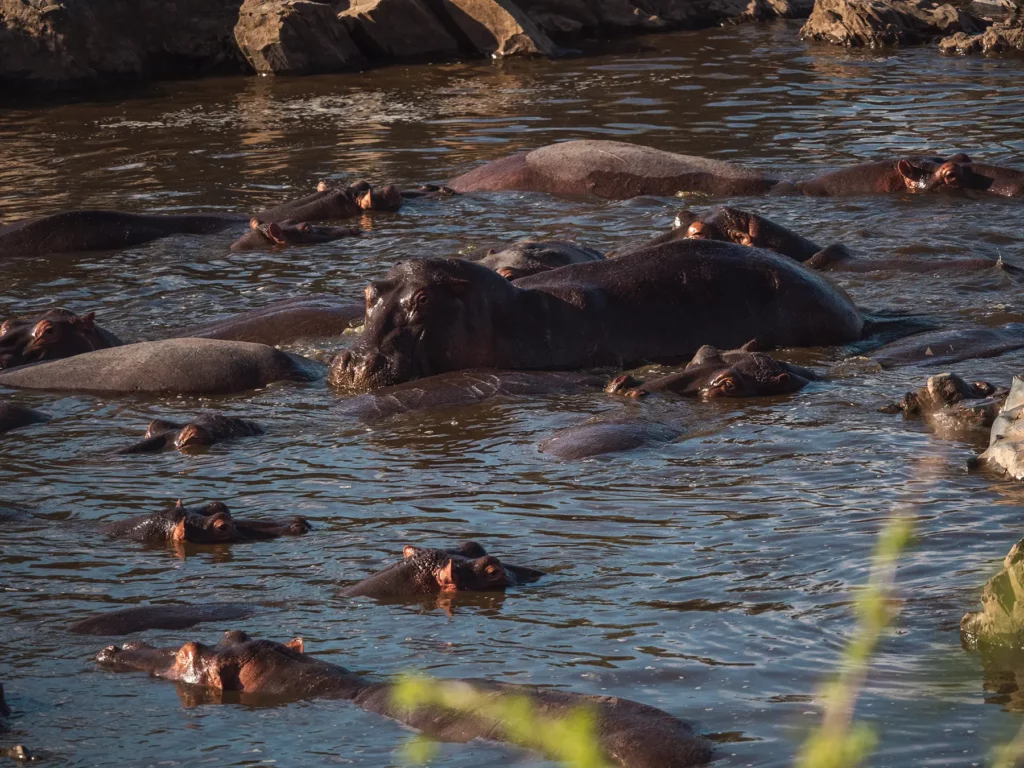
Day 4: Central Serengeti to Arusha or Zanzibar
Total driving time (excluding game drives): 6 hour drive to Arusha or 2 hour flight to Zanzibar.
After breakfast, you can either fly from the nearby Seronera Airstrip back to Arusha and then back home, or fly straight to Zanzibar and enjoy a few days chilling on a sandy beach swimming or snorkelling in the soothing crystal blue waters of the Indian Ocean.
You could also of course choose to drive the six hour trip to Arusha and see more of the surrounding countryside at your leisure.

If the safari bug has bitten you good and proper, as it did to me, and you’re wanting to extend your Tanzania adventure, the Ngorongoro Conservation Area with its famous crater is just a two hour drive away. You could quite easily spend a night or two in one of the numerous lodges that line outside the crater rim, and explore this marvel of nature, packed with many species of animals and birds, including big cats and the Big Five.
In my opinion, it would be sheer sacrilege to have come so close to Ngorongoro and not see it.
Recommended Booking Options For Your Serengeti Big Cat Safari Itinerary
Private Safari
Most popular & best experience – typical prices for this itinerary start from $400 per person per day.
Visit safarisbyella.com for free quotes from trustworthy local tour companies I use to book my own trips.

Group (Shared) Safari – Usually Camping
Good for budget or solo travellers – from $250 per person per day.
My recommended Tanzania tour operators only provide private safaris, however, I’ve listed the best and most similar group options for this itinerary, on SafariBookings below.
Click the link below to request quotes for the group safari options on the SafariBookings website.
View All My Recomended Group Options Following a Similar Itinerary
Jump back to the list of itineraries to select another Serengeti itinerary to view or keep scrolling to read the next itinerary.
7-Day Serengeti and Maasai Mara Itinerary
With Tanzania and Kenya being arguably among the top safari destinations in the world, many first-time visitors are often unsure of which game park to visit.
Well, the good news is that the Serengeti National Park in Tanzania and the Maasai Mara National Park in Kenya lie next to each other. It therefore makes perfect sense for many people to visit them both on one trip, cutting down costs and without having to travel too far in between.
If big cats are what you want to see, the Serengeti and Maasai Mara are both excellent choices, but they do offer a great deal more than that. When you consider that it’s only the Mara River that separates them and this is where so much drama and excitement is played out every year during the Great Wildebeest Migration, you are able to view the carnage that takes place here from both sides of the river.
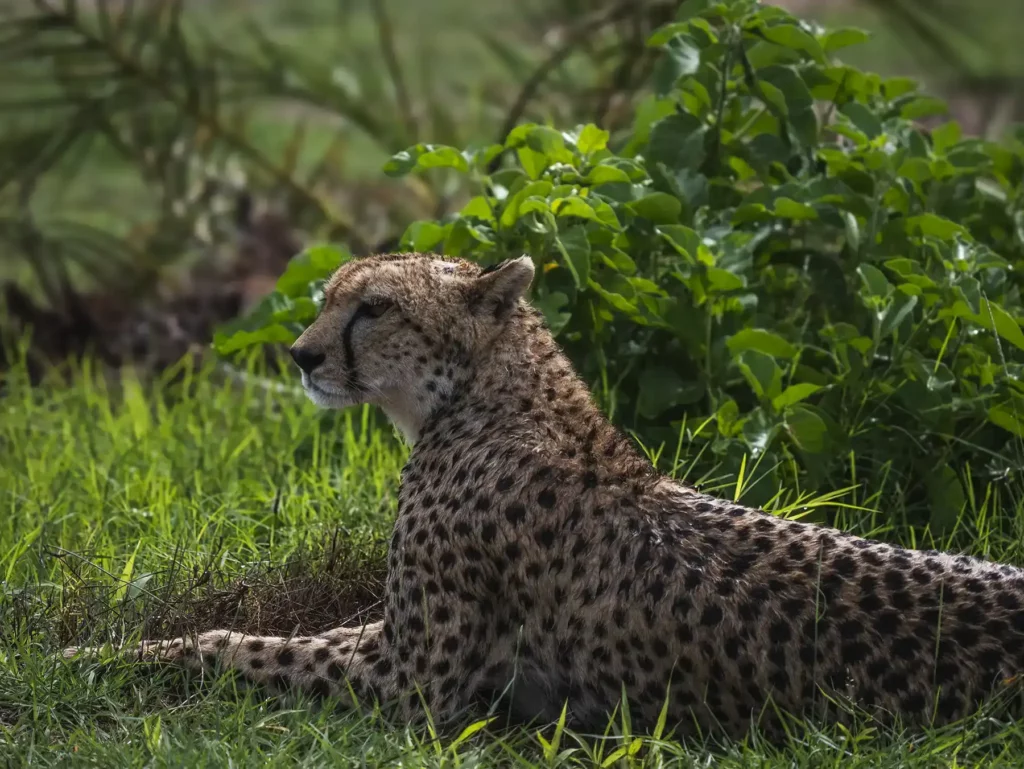
When planning to visit these parks, it makes more sense to time your arrival from between September and November when the migration masses usually arrive from the Serengeti and cross the crocodile-infested Mara River into the Maasai Mara. Apart from the dramatic scenery witnessed along the river banks, there are so many other animals and sights to see not only during this period but all year round.
The northern part of the Serengeti consists of vast open grasslands, rolling hills, more densely vegetated woodlands and forests, with a sprinkling of huge granite outcrops, all providing a great habitat to a wide variety of game and birdlife. That includes all the big cats and some of the biggest prides of lions in Africa, as well as huge herds of elephants, which often also undertake long migrations from the drier regions of the south.
This terrain, especially the vast open grasslands, also provides perfect hunting grounds for cheetahs and the elusive leopards which are often seen lurking among the granite outcrops, or lie perfectly camouflaged in the thickets or high up in the trees.
Other animals that are common to both parks, include buffaloes, hippos, hyenas, jackals, giraffes, smaller cats like African wild cats and servals, kudu, eland and thousands of other smaller antelope like impala and Thompson’s gazelles.
During the latter part of the migration, the countryside is covered with masses of wildebeest and zebras. They will stay in the Maasai Mara National Reserve for a while, feasting on the lush green grasslands, before braving the crocodile-infested Mara River once again heading south back to the southern regions of the Serengeti, to begin this cycle of life once again.
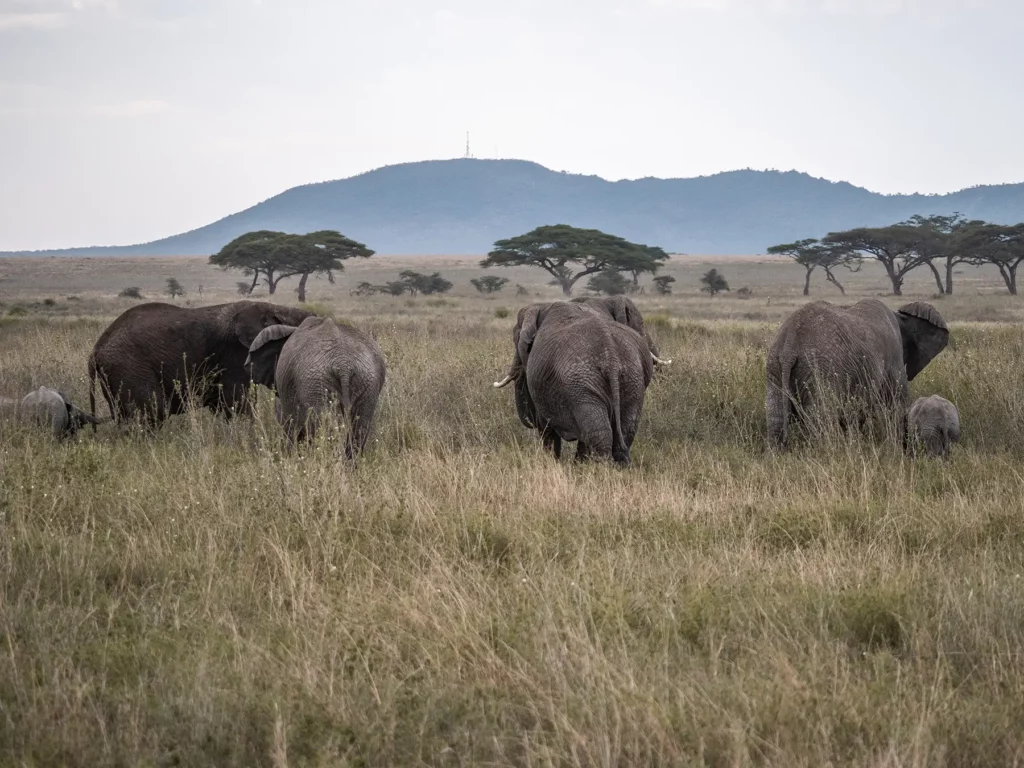
Day By Day Breakdown of 7-Day Serengeti and Maasai Mara itinerary
This itinerary starts in Nairobi, Kenya’s capital, and ends in either Arusha or Zanzibar.
Day 1: Nairobi to Maasai Mara
Total driving time (excluding game drives): 6 hour drive or 1 hour flight
Your African adventure starts with your arrival at the Jomo Kenyatta International Airport in Nairobi. I’d recommend spending at least one night in Nairobi before journeying to the Maasai Mara.
It’s either a 6 hour drive through the scenic countryside or a swift 1 hour flight to reach the reserve.
In the afternoon, after a delicious lunch at your lodge, you embark on your first game drive, thereafter spending the night at your lodge or tented camp.
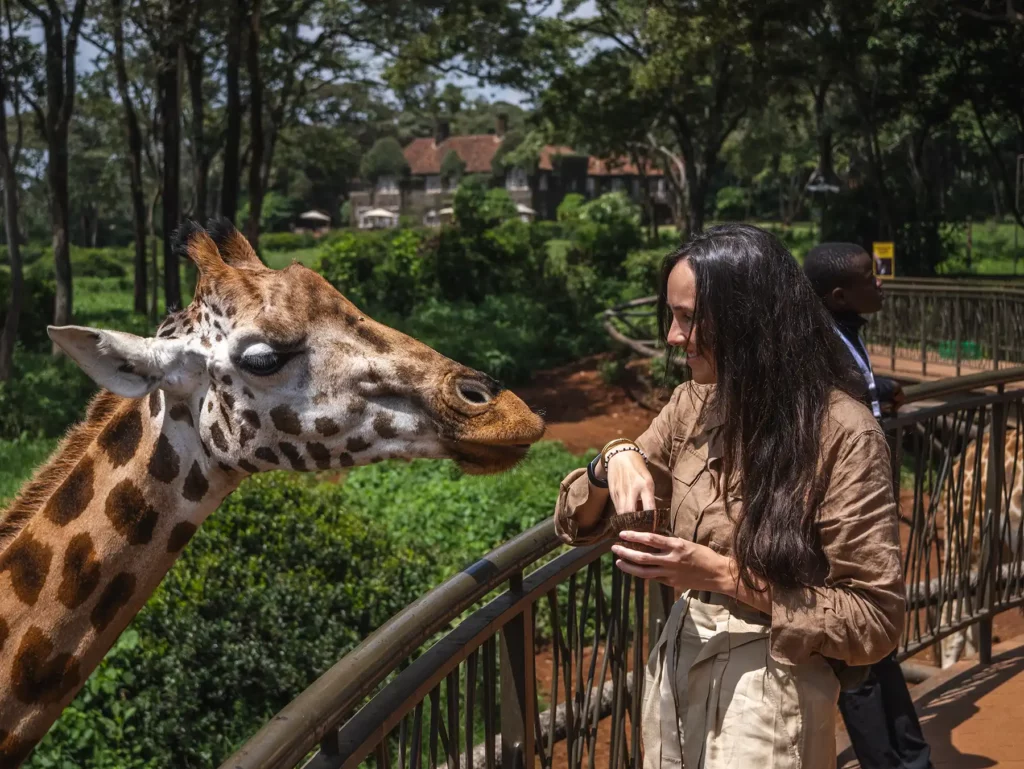
Day 2 – 3: Maasai Mara
Total driving time (excluding game drives): 0 hours
The next two days will be spent on day-long game drives, with the guides taking you to their favourite sites, depending of course on the time of year and expected sightings of game. Full day drives are the better option, not only for getting full value for money but are also far less costly as you have to pay each time you enter the park’s gates.
Undoubtedly, if you’re there during the time of the Mara River crossings, you will spend some time parked along carefully selected viewing points along the river to witness this spectacle. The drivers will of course pause for a rest during mid-morning for a quick breakfast and coffee, and then again for lunch in some scenic picnic spot, probably beneath a shady acacia tree.
As always, the earlier you can get out onto the plains, the more chance you have of seeing lions, leopards and cheetahs on the hunt or even making a kill. In the heat of the midday sun, animals seek the refuge offered by the thick woodlands and big trees and remain inactive until the early evening starts to offer some relief. And then it’s prowl time again. The park’s gates open at 6:00 am and it’s wise to try to be there first in line.
After each day’s game drives at around 6:00 pm when the park’s gates close, you’ll be taken back to your lodge that may be within or just outside the park in time for dinner.
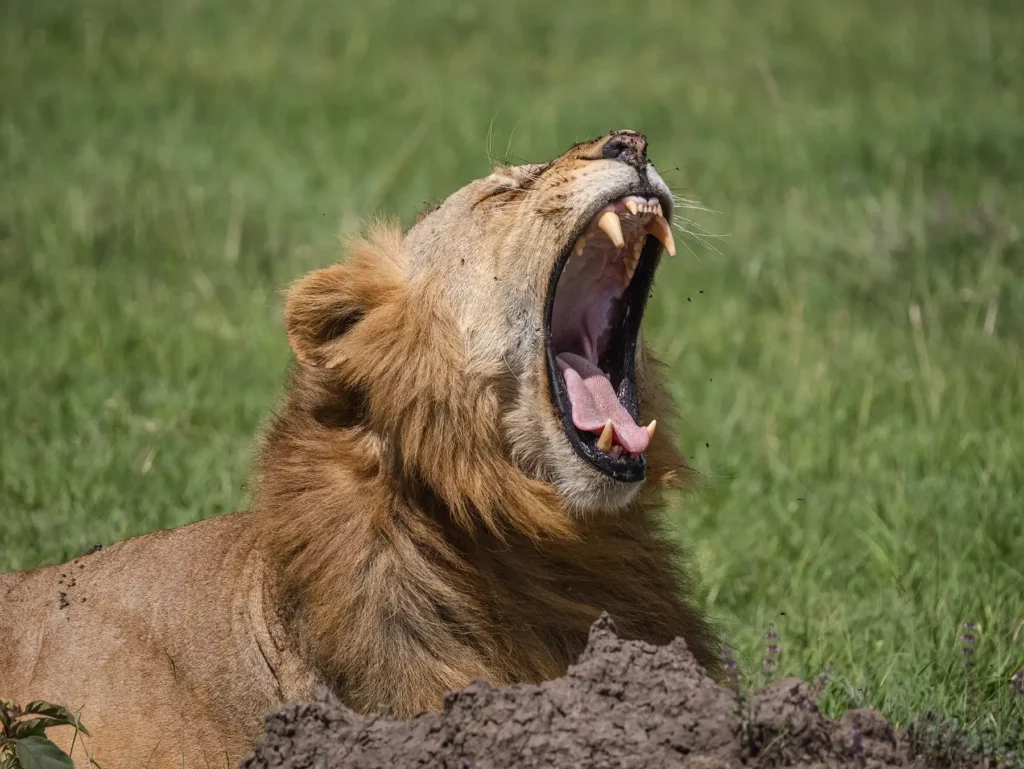
Day 4: Maasai Mara to Central Serengeti
Total driving time (excluding game drives): 10 hour drive or 3 hours by plane.
After three glorious days in the Maasai Mara National Park, today you will embark on a rather long journey travelling over 100 kilometres, which typically takes over 10 hours. The roads can be a little bumpy at times!
Passing through the border post at Isibania and changing to a Tanzanian vehicle, you then start the long trek to Seronera in the central region of the Serengeti and then find your way to your selected lodge.
You could of course decide to avoid all this palaver and catch two short 30 minute flights to Seronera, but even then it’s a complicated process. You first have to fly to the Migori airstrip in western Kenya, then drive across the border and into Tanzania to the Tarime airstrip and from there another flight to Seronera.
Trying to arrange all this requires tons of patience and painstaking preparation. That’s just another reason to book your safaris with a local tour operator who knows best of these logistical challenges and local regulations better than overseas travel agents.
Once you’ve arrived at your preferred lodge in Seronera, the long journey will soon be forgotten.
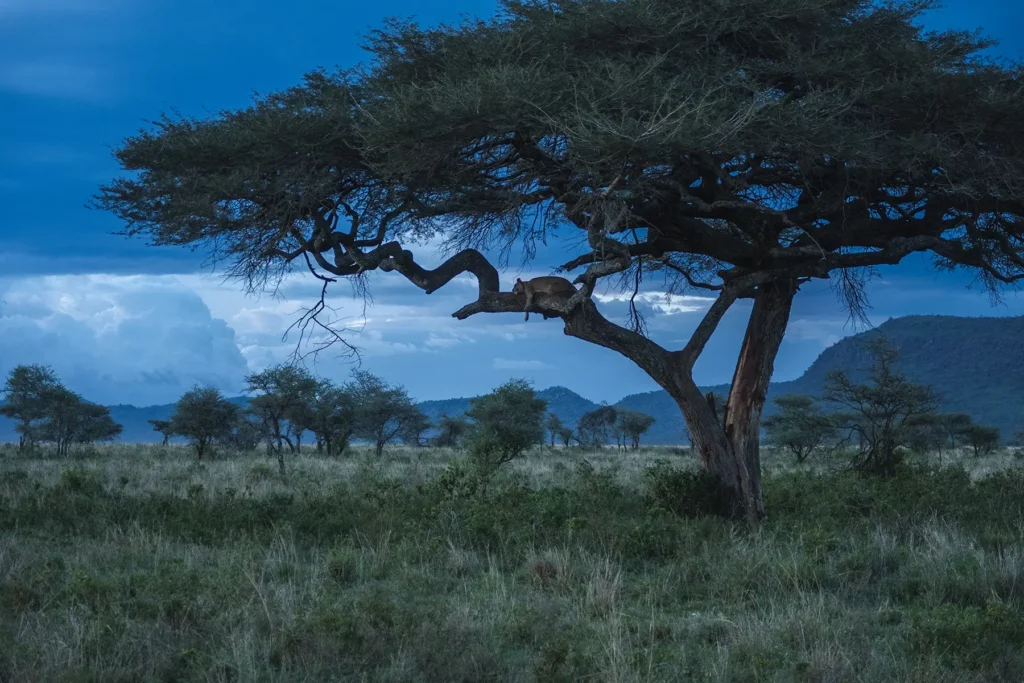
Day 5 – 6: Central Serengeti
Total driving time (excluding game drives): 0 hours
Central Serengeti consists of a varying landscape which is ideal for lions, leopards and cheetahs, making it one of the best places to see big cats in action. This area is also famed for having one of the few prides of tree-climbing lions in the whole of Africa. A sight not often seen.
This area is also on the migration route with the herds of wildebeest and zebras passing through from around April to July.
There are also many permanent resident species found here all year round which include elephants, buffaloes, hippos, giraffes, elands, kudus, impalas, Thompson’s gazelles and tons of other buck and bird species.
The Seronera River that flows nearby is a wildlife hotspot, where your guides will surely take you to view the animals that often hang out around it.
You will be spending the next two days exploring this region going on safari drives, stopping at various picnic spots for breakfast and later for lunch, before being taken back to your lodge in the evenings.
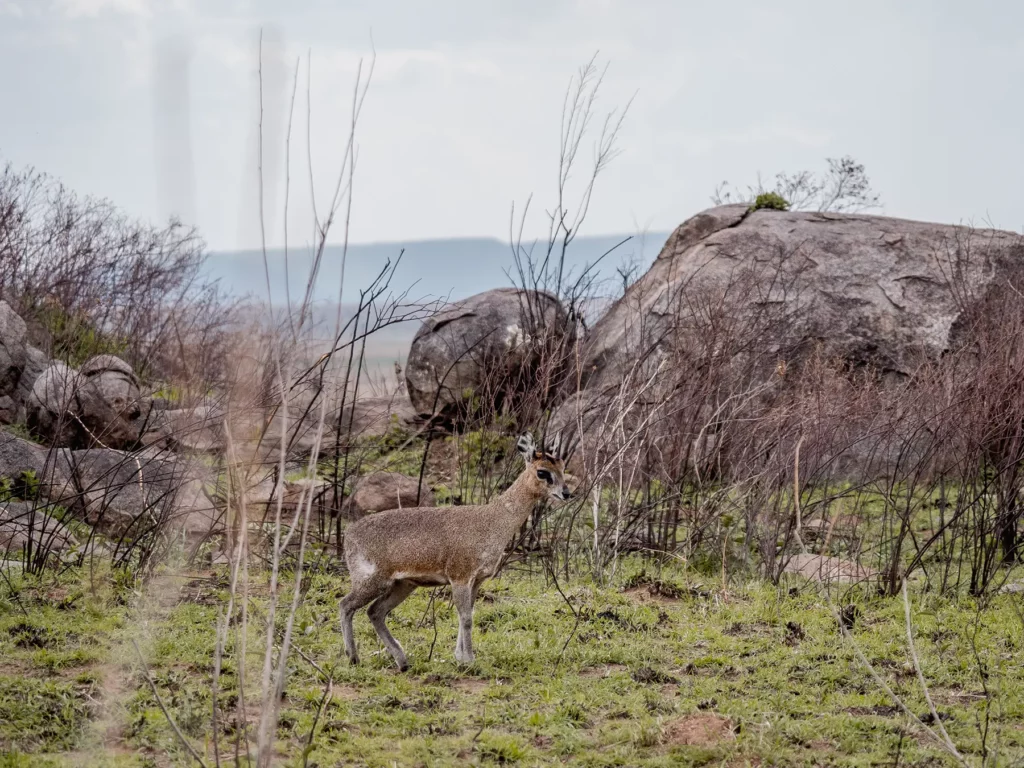
Day 7: Central Serengeti to Arusha or Zanzibar
Total driving time (excluding game drives): 6 hour drive to Arusha or 2 hour flight to Zanzibar.
Today, after breakfast, you can either fly from the Seronera Airstrip to Arusha, or fly to Zanzibar where you can enjoy a real seaside holiday along the alluring shores of these islands.
Should you choose to drive to Arusha, the trip will take you about six hours. If you, however, you want to experience more of Tanzania’s wildlife destinations, I can recommend one of the most famous and stunningly beautiful places on earth, which is a mere two hours’ drive away, the Ngorongoro Crater.
You can spend a few days here admiring the massive ancient volcano crater from the encircling rim standing 610 metres above the caldera which is the permanent home of over 25, 000 animals, including the Big Five – a truly memorable sight!
Recommended Booking Options For Your Serengeti and Maasai Mara Itinerary
Private Safari
Most popular & best experience – typical prices for this itinerary start from $400 per person per day.
Visit safarisbyella.com for free quotes from trustworthy local tour companies I use to book my own trips.

Group (Shared) Safari – Usually Camping
Good for budget or solo travellers – from $300 per person per day.
My recommended Tanzania tour operators only provide private safaris, however, I’ve listed the best and most similar group options for this itinerary, on SafariBookings below.
Click the link below to request quotes for the group safari options on the SafariBookings website.
View All My Recomended Group Options Following a Similar Itinerary
Jump back to the list of itineraries to select another Serengeti itinerary to view or keep scrolling to read the next itinerary.
6-Day Serengeti and Zanzibar Itinerary
This is a six day itinerary that offers a good combination of the natural wilderness of the Serengeti and the mystical and exotic Zanzibar Islands, which are surrounded by the inviting and calm turquoise waters of the Indian Ocean.
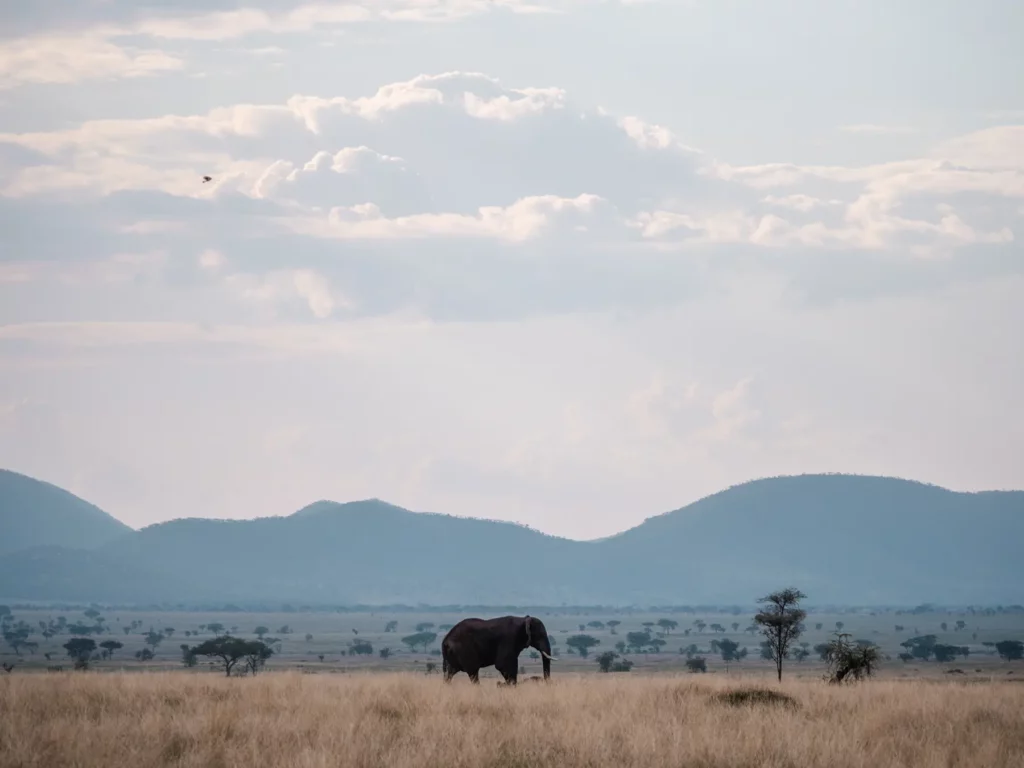
Day By Day Breakdown of 6-Day Serengeti and Zanzibar itinerary
The first leg of the trip will start in the exhilarating Serengeti, allowing you to get the adventure out of your system early on and then unwind and process the incredible memories you will have undoubtedly collected whilst admiring Zanzibar’s turquoise ocean.
Day 1: Arusha to Central Serengeti (Seronera)
Total driving time (excluding game drives): 6 hour drive or 1 hour flight
Once you have landed at the Kilimanjaro International Airport in Arusha, I always recommend spending at least one night in the town to settle in and to recharge after your long journey.
The following day, you can either drive to Seronera in the Central Serengeti or take a quick one hour flight.
The drive to Seronera can take from 6 to 8 hours, depending on how often you stop and if you see any wildlife on the way.
You will embark on an evening game drive getting to experience the beauty and wilderness of the famous Serengeti.
The central region is famous for having a high concentration of lions, leopards and cheetahs, as well as other wildlife such as elephants, rhinos, buffaloes, hippos, giraffes, zebras, wildebeest and tons of antelope species.
After your game drive you’ll be driven back to your lodge where you will spend your first night in the African savannah. A really exciting prospect for any first time visitor on safari.

Day 2 – 3: Central Serengeti (Seronera)
Total driving time (excluding game drives): 0 hours
The next two days, you may enjoy at your leisure, choosing to explore this landscape by going on game drives and letting your guide show you the beauty of the Serengeti. This part of the Serengeti is one of the best areas to see leopards, and it also boasts of having some of the few prides of tree-climbing lions on the whole continent.
Here animals are fairly easily spotted due to the vast open grasslands where one can see to the horizon. Small rocky outcrops dotted in the landscape are great spots to look for, as they are the watchtowers of the big cats who use them to survey the scene looking for their next meal.
This area also has a fair amount of marshlands and the Seronera River, both of which hold a large number of hippos and are animal magnets for the local wildlife which is often seen hanging out around the water’s edges. Heading there as early in the morning as possible will offer you perhaps the best chance to witness some big cats hunting and making a kill around this area.
The day’s drive will allow time for a welcome break to enjoy a breakfast and a coffee on the plains and a lunch and refreshments at a picnic spot later along the route. At the end of each day you’ll be driven back to your lodge in time for dinner.
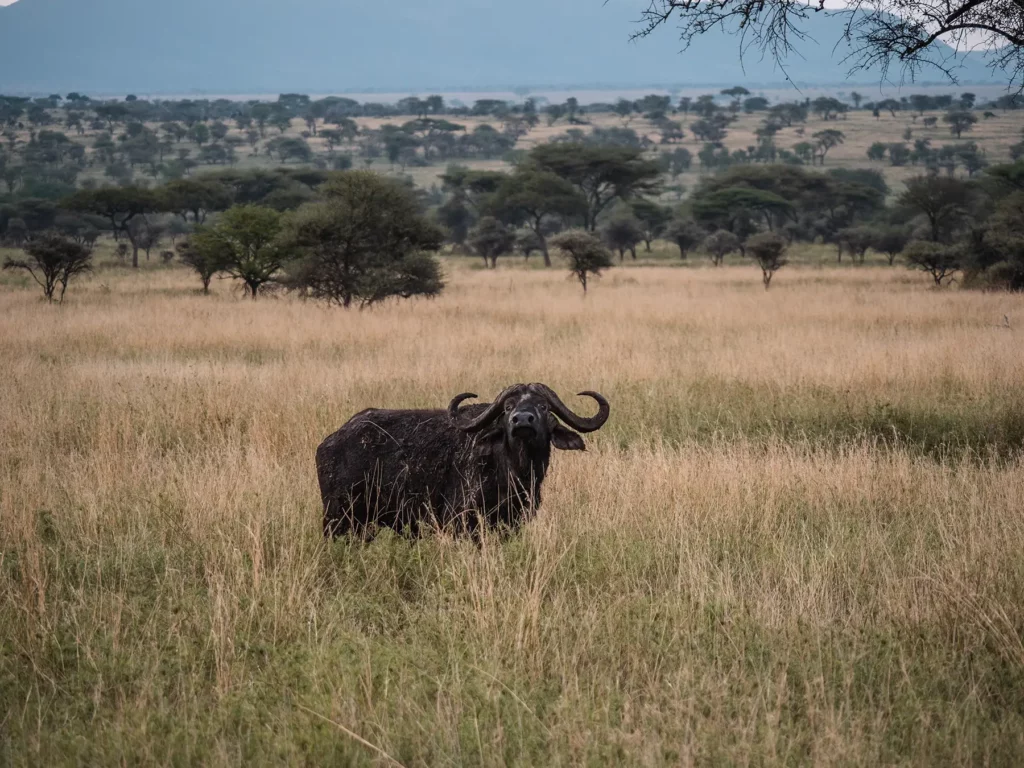
Day 4: Central Serengeti to Zanzibar
Total driving time (excluding game drives): 2 hour flight
After spending the last four days snapping millions of photos and viewing wild game to your heart’s content, your time in the Serengeti has sadly come to an end.
After your final safari breakfast you fly from the Seronera airstrip straight to Zanzibar where the vast dusty tracks of the Serengeti give away to white sandy beaches refreshing cocktails in hand, tall swaying palm trees, and the crystal blue waters of the ocean. Not a bad way to end a perfect holiday.
The flight takes approximately two and a half hours, which means you should be in your selected hotel, by lunch time at the latest, leaving you the whole afternoon to spend entirely at your leisure. And boy do you have options!
You can choose to stay in one hotel for the whole duration of your stay in Zanzibar, or pick a different one for your second night. I do however recommend selecting beachfront hotels or resorts to give you quick and easy access to the stunning beaches and the colourful coral reefs that lie beneath the waves lapping gently along the shore.
Some of the island’s premier beaches are on the north and east coasts which are lined with resorts and lodges virtually on the water’s edge with all the amenities available.
Strictly speaking, Zanzibar is the name of the entire archipelago, which consists of three major islands (Unguja, Pemba and Mafia) plus many other smaller islets, most of which are uninhibited. But in reality the biggest island, Unguja, is referred to as Zanzibar and is the most famous of them all. The capital is Zanzibar City, with the old historic Stone Town being a must-visit.
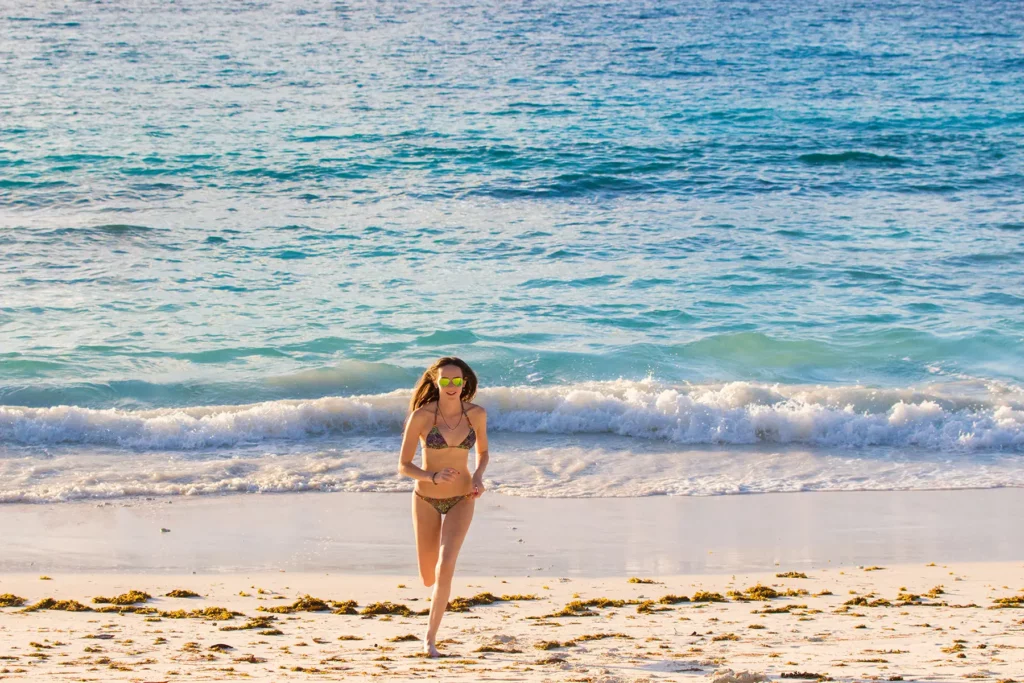
Day 5 – 6: Zanzibar
Total driving time (excluding game drives): dependant on what activities you do
Over these next two days, there are no strict schedules to stick to or waking up with the sparrows to trudge in an open vehicle through dusty tracks. Now you’re in charge of your own itinerary and do as you please. You’ll be spoilt for choice in deciding what to do.
Here are just a few ideas!
Spend time on any of the glorious white sandy beaches, swimming in the soothing clear waters, take a kayak out to sea, or long walks along the beach or just chill on a sundeck soaking in the sun.
Almost the entire coastline of the island is surrounded by shallow coral reefs, teeming with marine life, perfect for snorkelling. In some places the reefs start a few metres from the beach in shallow waters, which is ideal even for complete novices. The reefs hold a wide variety of colourful tropical reef fish, such as the elegant Moorish idol, vibrantly coloured parrot and butterfly fish and dainty little clown fish, plus a host of bigger fish such as grouper and trevally, which may be found a little deeper out. If you’re lucky, you may even spot a turtle or two munching away on the corals.
If you’re into scuba diving, Zanzibar rates amongst the best diving sites in Africa. Dive centres operating from certain resorts, will provide all the gear, info and dive tours.
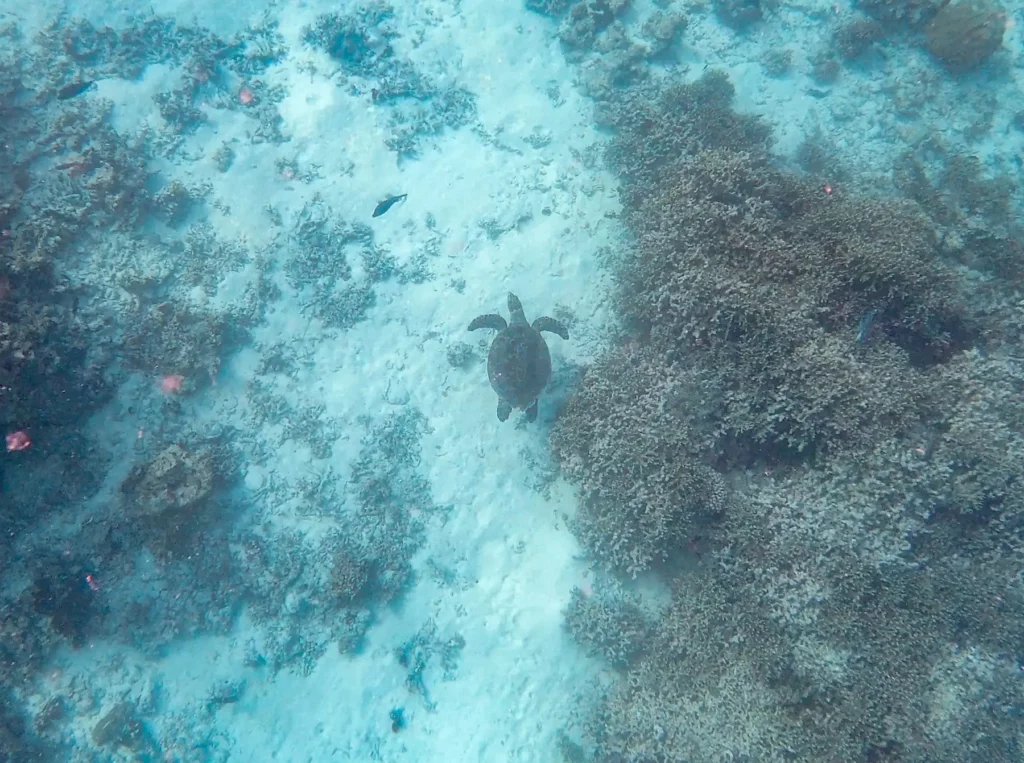
The historic Stone Town, situated on the westernmost tip of Zanzibar City is a most fascinating place to lose yourself for a few hours. Take a walk in its twisty narrow streets and admire the old architecture amongst the street noise coming from the numerous shops, markets and eateries that line wall to wall almost everywhere. This is also a photographer’s paradise.
The old military fort and slave market serve as sombre reminders that life in paradise wasn’t always like this. Zanzibar was in the heart of the spice, ivory and the slave trade route, resulting in much turmoil, massacres and wars between various powers over the last few centuries. Today it still holds a rich mix of Persian, Indian, Arabic, Swahili and European influences, which are all evident wherever you look in Stone Town.
Mosques, a Catholic Cathedral and the old Slave Market are all remnants of Zanzibar’s colonial past. And if you’re a rock music fan, you may be surprised to walk past the house of Freddy Mercury in Stone Town. You could of course book a guided tour through Stone Town where you get to learn so much more about this fascinating place.
Across the bay from Stone Town, a visit to Prison Island lying a few kilometres offshore is another place worth visiting. A short 25 minute boat ride takes you there where you can visit the tortoise sanctuary holding some really old specimens. Some of them live up to 200 years!
At the end of your tour, you say goodbye to Zanzibar and begin your long trip back home, taking with you so many memories. If you’re anything like me, you will be back.
Recommended Booking Options For Your Serengeti and Zanzibar Itinerary
Private Safari
Most popular & best experience – typical prices for this itinerary start from $400 per person per day.
Visit safarisbyella.com for free quotes from trustworthy local tour companies I use to book my own trips.

Group (Shared) Safari – Usually Camping
Good for budget or solo travellers – from $250 per person per day.
My recommended Tanzania tour operators only provide private safaris, however, I’ve listed the best and most similar group options for this itinerary, on SafariBookings below.
Click the link below to request quotes for the group safari options on the SafariBookings website.
View All My Recomended Group Options Following a Similar Itinerary
Jump back to the list of Itineraries to select another Serengeti itinerary to view or keep scrolling to read the next itinerary.
5 Little Known Facts About Serengeti National Park
- One particular cluster of boulders in the Serengeti that we mentioned several times in this article, known as kopjes (pronounced copies), is the Simba Kopje, which was the inspiration for Pride Rock in Walt Disney’s epic film The Lion King.
- A legal battle has been raging for a number of years between environmental and conservation bodies and the Tanzanian Government, who want to build a commercial highway across the northern section of the Serengeti National Park. This could have serious negative consequences for the migratory herds such as urban sprawl, promote poaching and human-wildlife conflict and disrupt the migration route, as they have in other parts of Africa. Although the Courts have so far prevented that from happening, the threat still remains a real possibility.
- When the Great Migration is in full swing, there are over 1,000 animals per kilometre trudging through the countryside. They raise so much dust and clouds that it can be seen from space.
- Although it is said the Serengeti has the Big Five in most areas, there are less than 100 rhinos left in the entire park. Poaching has been the scourge of Africa for rhino populations across the continent for decades, mainly from demand from the east. Unless governments across the continent truly commit themselves to stopping the slaughter now, this species will remain on the critical list of endangered animals and may very well become extinct in the not too distant future at the current rate of poaching. A sobering thought.
- Today the Serengeti boasts of having a healthy population of close to two million wildebeest and buffalos. But during the last decade of the 19th century, drought and a cattle disease decimated these animals to near extinction. It was only as late as the 1970s that stocks began to recover to the current numbers. One hopes that serious lessons have been learnt since then and measures constantly taken so as to not repeat such a disaster. One shudders to think of the consequences should something like it ever happen again.
Serengeti Safari Videos
If you’d like to see exactly what a Serengeti safari experience is like, I have a number of videos showcasing my experiences below:
My Serengeti Safari with some Incredible Sightings (Video)
Great Migration Serengeti River Crossing Video
The Truth About a Serengeti Safari (5 Things You Should Know) Video
Read More Tanzania Guides
For an overview of planning your safari, you can read my Ultimate Tanzania Safari Guide.
Tanzania Itineraries
Recomended itineraries and how to book them.
7-10 Day Tanzania Safari Itinerary & Costs
5-Day Tanzania Safari Itineraries & Costs (6 unique Itineraries)
3-Day Tanzania Safari Itinerary & Costs
2-Week Tanzania & Zanzibar Safari Itinerary & Costs
3-Week Tanzania Safari Itinerary & Costs
10-Day Tanzania Honeymoon Itinerary & Costs
Tanzania and Kenya Itineraries
Multi-country itineraries and how to book them.
10-Day Kenya and Tanzania Safari Itinerary
2-Week Kenya & Tanzania Safari Itinerary
Costs & Planning
How to get the most bang for your buck and the best time of year to visit depending on what you want to do and see.
Tanzania Safari Cost – Everything You Need to Know!
The Great Wildebeest Migration Guide
Zanzibar Island – The Complete Guide
National Parks & Reserves
Complete guides to the best and most famous safari reserves, including the wildlife you’ll see, entrance costs and best time to visit.
Other Popular Safari Destinations
How to Book Your Safari
Save time and ensure an incredible safari experience by getting quotes from my recommended local safari companies.
Join the rapidly growing tribe of over 1,000 travellers who’ve booked their dream safari using my insider tips and recommendations.

Embark on the Safari of Your Dreams
Save time and ensure an incredible safari experience by getting quotes from my recommended local safari companies
I’m here to make booking your perfect safari quick, easy and risk-free.
Join the rapidly growing tribe of over 1,000 travellers who’ve booked their dream safari using my insider tips and recommendations.

It takes under 60 seconds to fill out the form and in under 48 hours you will receive multiple, no-obligation proposals from my favourite local tour operators with glowing online reviews.
Get your free no-obligation safari quotes and my top safari tips and recommendations

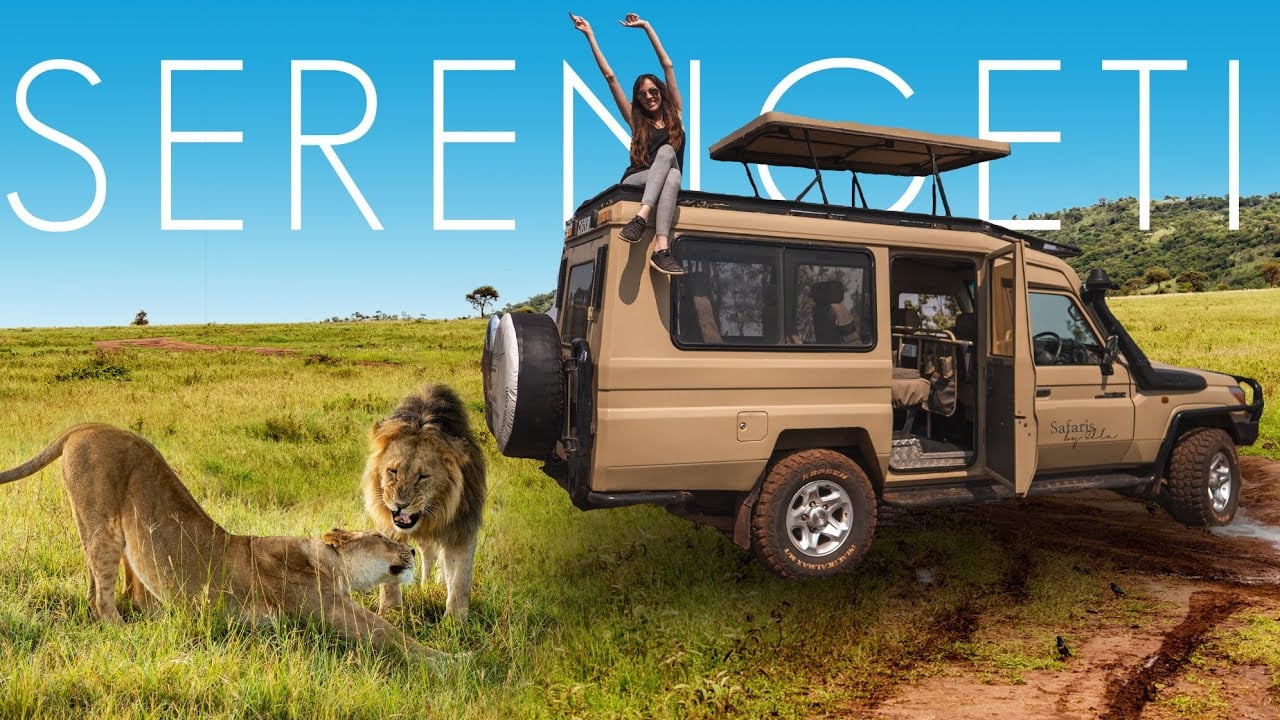

nice serengeti
karibu sererngeti